

Sub regions inside
Broader region.

Namibia nestles in the south-west region of Africa and is a sparsely populated country with a unique and protected landscape of vast desert, sprawling savannahs, salt pans, and breathtaking coastlines. Namibia has a strong German architectural influence that is admirable and it is the ideal destination for sandboarding, swimming in the ocean, and exhilarating safaris.
Boasting the world’s largest population of free-roaming cheetahs, the malaria-free Etosha National Park offers an incredible safari experience and a variety of accommodation options, including authentic tented bush camps and exclusive luxury lodges. Teeming with wildlife, the Etosha boasts some of the largest elephants in Africa, along with other incredible species such as the endangered black rhino, lion and, leopard. More than 340 bird species have been recorded in the Etosha National Park, making it a great bird watching destination.
After some time in the bush, its time to explore the 80 million-year-old Namib Desert , the most ancient desert on the planet and home to Dune 7 - the highest sand dune in the world at 383 meters. The Namib Desert offers some of the most incredible photo opportunities and mesmerizing sunsets.
Swakopmund and Walvis Bay are coastal towns that boast fishing boats, crafts, and swimming beaches, whilst the long and desolate Skeleton Coast offers a more eery experience, with the waves of the Atlantic Ocean crashing into the Namib Desert and rusting shipwrecks scattered along the shore.
Every corner of Namibia offers a contrasting landscape and unique selection of activities that afford an unforgettable vacation.
The mesmerizing sand dunes at Sossusvlei can be visited at any time of year but the dry May to October winter months are widely regarded as the best time to visit Namibia for game viewing - especially in Etosha National Park. The skies are clear and animals are increasingly concentrated around water holes as the dry season arrives. Temperatures drop considerably in the evenings during the months of June and July whereas September and October can be extremely hot.
The summer rains between November and April turn the country lush green and occasionally bring floods to the desert. December can see very rewarding game viewing in Etosha and summer is the best time to go to Namibia for bird watching. The Caprivi Strip (newly renamed the Zambezi Region) is Namibia’s wettest region and best avoided in the peak wet months of January and February.
Often referred to as “Africa for beginners”, Namibia is a wonderful place to start your travels in Africa. Derived from the world’s oldest desert, Namib, the country boasts a sand sea and perfect dead-tree valley in Sossusvlei, and spectacular sand dunes plunging down to the sea at Sandwich Harbour and the Skeleton Coast. Inland, running through the heart of the country, you will find a glorious sight of mountains – the Naukluft Mountains, the Brandberg, Spitzkoppe, Damaraland and the jaw-dropping Fish River Canyon. With rivers and wetlands in the Caprivi Strip and the endless gold-grass plains of the Kalahari, it is hard to find a country that offers such diversity.
Namibia’s northern region is one of Southern Africa's best places to watch wildlife. Etosha National Park provides an elite wildlife-viewing experience – big cats, elephants, black rhinos and plains game in abundance. Damaraland is a wonderful place to see desert-adapted elephants and lions, and also inhabits Africa's largest population of free-ranging rhinos – rhino tracking is a real highlight here. In the Caprivi Strip, the wildlife is returning, with Bwabwata and Nkasa Rupara becoming wonderfully rich parks to explore. There are also private reserves in Namibia - Okonjima and Erindi are two of the most established reserves and provide fantastic experiences.
Windhoek is the capital of Namibia, in the country’s central highlands within close proximity of the International airport. It is the largest city and starting point for a safari in Namibia. Highlights in Windhoek include the National Museum and the Christ Church built in the early 1900’s. Windhoek has a range of high-end hotels, boutique hotels and small lodges to check-in to before starting out on a Namibia adventure.
Etosha National Park
Covering more than 20 000 square kilometers, Etosha National Park is one of Africa’s biggest and elite conservation areas. The beauty of Etosha is found around several waterholes where a phenomenal number of animals gather to drink, including lions, elephants, springboks, and gemsboks. This occurs frequently during the dry season months of May through October.
Sossusvlei is a salt and clay pan surrounded by high red dunes, located in the southern part of the Namib Desert, in the Namib-Naukluft National Park of Namibia. The sand dunes of Sossusvlei in the Namib Desert are often referred to as the highest dunes in the world and the most popular photographic destination in Namibia. The desert offers a serene experience and is Namibia’s top attraction.
Swakopmund is a coastal city in Namibia, west of the capital, Windhoek. Sandwiched between Atlantic rollers and the Namib Desert, Swakopmund is the country's biggest coastal town and premier holiday resort. For those interested in adventure activities Swakopmund offers sandboarding, quad biking, dune carting, parachuting, hot air ballooning, shark fishing, deep sea fishing and beach angling to name but a few.
Skeleton Coast National Park
Skeleton Coast National Park is located in northwest Namibia and has the most inaccessible shores, dotted with shipwrecks. It’s a 40 km wide and 500 km long coastal wilderness. The name came from the bones that lined the beaches from whaling operations and seal hunts, but more than a few of the skeletons were human. The Bushmen called it “The Land God Made in Anger”. Despite its arid and deadly appearance, the Skeleton Coast has as many as 247 species of birds and a greater variety of animal species than many other parks in Southern Africa. Cape Cross Seal Reserve is a breeding ground for thousands of Cape Fur Seals.
One of Namibia’s most scenic areas, the beautiful region of Damaraland is set in a landscape of open plains, massive granite koppies, and deep gorges. Highlights include the Brandberg Mountains which is home to the famous “White Lady” bushmen painting, the rocky outcrop of Twyfelfontein, the millions of years old petrified forest and the various desert-adapted wildlife. A new addition to tourism in the area is the exciting Rhino and Elephant tracking safaris.
Located in the far northwest of Namibia, Kaokoveld which is also called Kaokoland is a breathtaking retreat and remote wilderness. Wildlife is sparse but most of it is unique to the region. Enjoy wide-open vistas and lonely desert roads with hardly anyone around you. This is a photographers dream destination.
Caprivi Strip
The Caprivi is a narrow strip that juts out from the northeastern part of Namibia and links the country to Zimbabwe, Zambia and northern Botswana. It exists because the Germans thought the Zambezi would lead to the Indian Ocean. It is a 450-kilometer panhandle filled with animals. You can see large herds of elephant, also buffalo, hippo, crocodile, lion, leopard, wild dog and a variety of antelope.
Fish River Canyon
The Fish River Canyon is located in the south of Namibia and is the second most visited tourist attraction in Namibia. It is the largest canyon in Africa and second largest in the world. In some places, it is 27 kilometers wide and up to 550 meters deep. The Canyon trek is one of the most popular in Southern Africa, drawing visitors from all over the world.
Okonjima Nature Reserve
Located halfway between Windhoek and Etosha National Park, the private 55 000 acre Okonjima Nature Reserve is the perfect stop for travelers seeking exceptional accommodation and the opportunity to see cheetah and leopard in their natural habitat. Nestled among the Omborko Mountains, Okonjima meaning “Place of the baboons”, is also home to the internationally renowned Africat Foundation
Waterberg Plateau National Park
Located in Central Namibia, the plateau and the national park are named after the prominent table mountain that rises from the plateau, the Waterberg. The land which is largely inaccessible is home to some 25 species of mammal including black & white rhino, Cape buffalo, and blue wildebeest. Sightings of the elusive leopard prowling along the cliffs, cheetah, caracal, black-backed and side-striped jackals have been seen on the plateau or in the savannah below. There are several privately owned lodges around the Waterberg Plateau.
.webp)
Apr 12, 2024
Anja is very attentive and patient.
Apr 11, 2024
Shann is a great professional
Shann immediately demonstrated pleasant professionalism, competence, experience and patience. She advised and accompanied me in organizing the trip. She listened to all my needs and the suggestions were very fruitful for me. he was very kind and always available even during the holidays. thank you Shann
It was easy
It was easy, it all worked as planned, our expectations were exceeded. Anja was easy to communicate with through Whatsapp and always responded promptly to any questions.
Apr 10, 2024
She made it so easy to book
She made it so easy to book - Leigh-Ann was great to deal with . She made it so easy and worked with the dates I gave her . I appreciate it so much and when I book my next safari - I hope to have the same experience - which was awesome !!!!
Botswana Experience
Anja, our agent, was very kind and helpful all the time to organize the perfect trip. She did it quickly and efficiently. The amount of days we spent in every place was perfect to really enjoy the hotels and the different activities they proposed (in general the hotels are very nice but we don’t have the time to really experience the place but here we did). Also the selections of hotels was very very nice. Nice infrastructure, excellent service (very professional) and outstanding places to visit (all the parks were great). We had a wonderful experience with the company in Botswana.
Thank you Heleen for great service and…
Thank you Heleen for great service and always very helpful with all the changes we made. highly recommended
Keith was extremely helpful during the…
Keith was extremely helpful during the booking process. He is the only reason I continued the booking process with your firm. There were issues with your website among other things that had me feeling uncomfortable. Keith has great energy which eased my concerns. I feel the package Keith put together is great and I expect to have a wonderful trip.
Apr 9, 2024
Creating a Trip of a Lifetime
Shann Shaw was extremely patient and very helpful with getting a trip of a lifetime put together. Thank you so much for making it possible!
Keith answered all of my questions…
Keith answered all of my questions without any issues. He addressed everything that I asked and was quite prompt in his responses.
Namibia Safari | Luxury, Lodges and Tours
Namibia is an ideal destination for travellers seeking an unforgettable African experience in a uniquely beautiful untamed wilderness.
Very different to anywhere else in Africa, Namibia’s main attraction is its incredible dry-country landscapes and liberating sense of space.
At various times Germany, Great Britain and South Africa governed the territory, but it was with the eventual independence of Namibia in 1990 that the country was able to develop its multicultural character and reinvent itself.
There is a distinctive Namibian character that freely blends African styles with European influences on architecture, food, customs and art.
Table of Contents
Why Namibia for a safari
Wildlife safaris in Namibia are outstanding with Africa’s highest cheetah population, good numbers of leopards, plenty of black rhino and many endemic species. The stunning scenery makes a fantastic backdrop for wildlife safaris and as travel is easy in Namibia/
Some would say the best wildlife safaris in Namibia are in Etosha National Park. It is undoubtedly one of the best wildlife safari destinations in Africa, especially for big game.
Around the numerous waterholes huge herds of lion, elephant, zebra and antelope as well as leopard, cheetah and black and white rhino can be seen amidst some of Africa’s most startling and photogenic safari scenery.
Others might recommend the vast wilderness areas in the northwest for the best wildlife safaris in Namibia. Tracking desert-adapted wildlife like the rare black rhino or desert elephants is among the highlights of wildlife safaris here.
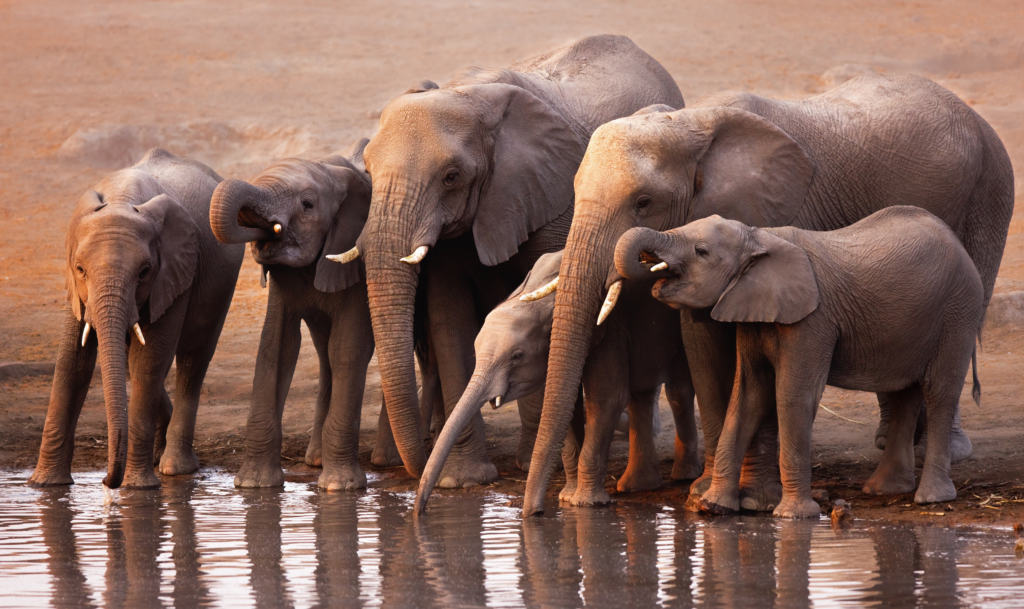
Top attractions visitors can expect from a Namibia safari include:
Animals
Because of the arid environment, wildlife numbers are comparatively lower in Namibia, but animals are easy to spot.
All of the big predators are present and cheetahs are especially common throughout. Huge herds of animals, elephants in particular, can be seen in the Dry season at Etosha pan.
Damaraland is home to a healthy population of desert-adapted elephants and a smaller population of black rhino can be tracked in a similar environment.
The secretive brown hyena is sometimes seen lurking around seal colonies on the coast. Other marine wildlife includes the rare heaviside’s dolphin and migrating southern right whale.
It is the only place in Namibia where you can see Hippopotamus and Nile Crocodile. Birdlife here is prolific.
Other wildlife found in Namibia includes the African Buffalo, Common Impala, Roan antelope, Red Lechwe, Puku, Tsessebe, Puku and Reedbuck.
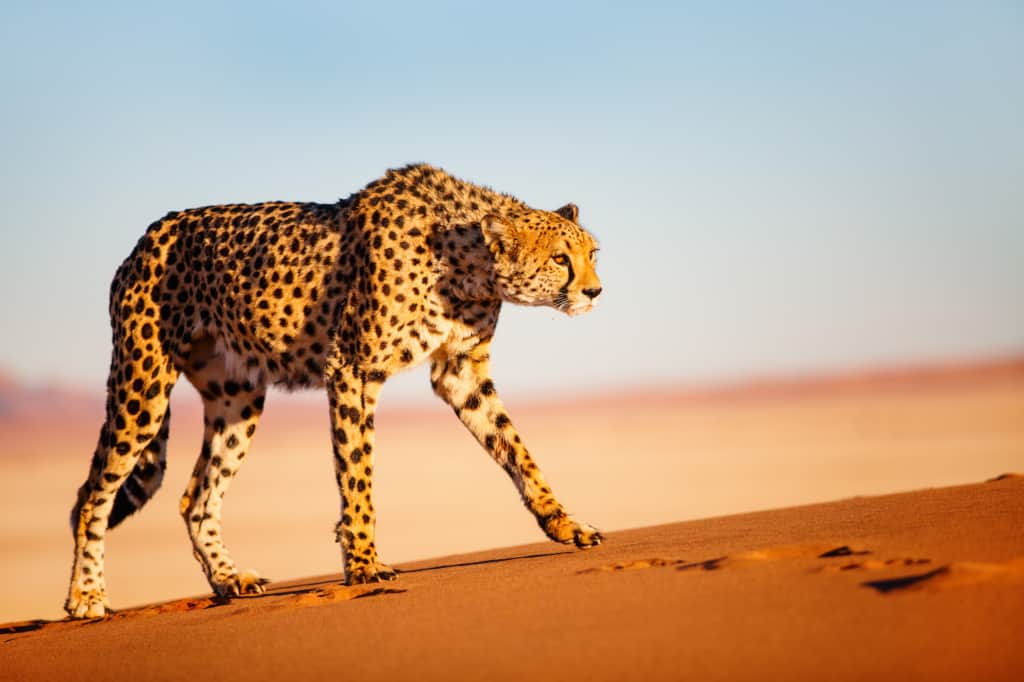
Around the waterways and woodlands you can find over hundreds of species of bird.With just over 700 species recorded, many of them are seasonal.
Although dune lark is the only endemic species in Namibia (occurring in Namibia only), there are many near-endemics, which are easier to see here than in neighbouring countries. The intra-African and Palearctic migrants are present from September to April.
Notable birds include the Great white pelican, Greater kestrel, Monteiro’s hornbill, Pale chanting goshawk and the Shaft-tailed whydah.
Best Parks & Reserves
Namibia’s National Parks offer some of the greatest diversity on the continent. Vast sand dunes, never-ending deserts, canyons, salt pans, and more.
These national parks can be explored on foot, by 4×4 or by air and make for a truly unique experience with Namibia’s hidden secrets opening up to those that invest the time and effort to dig beneath the surface.
Namibia’s most populous city and capital is Windhoek, a top tourist destination in its own right with WDH airport the main point of entry for visitors wondering how to get to Namibia .
Some of our favourite experiences in Namibia are not luxury-focused, but instead, are motoring around under your own steam, pitching camp, or flying the dramatic coastlines of this incredible country.
Of particular note amongst all of the incredible parks and game reserves are Etosha, Namib-Naukluft National Park and Skeleton Coast National Park.
- Etosha National Park – One of Namibia’s national park highlights and the epicentre of Nambia’s wildlife experience. Here you’ll find big cats, elephants, giraffes, rhino and more make this a truly unique place to visit. Stay at one of the surrounding private concessions on the edge of the park.
- Namib-Naukluft National Park – One of Africa’s largest reserves, the Namib-Naukluft afford jaw-dropping scenery with gravel plains, mountains, canyons and of course the dramatic red dunes of Sossusvlei itself.
- Skeleton Coast – The wild ravaged coastline, winds whipping up sand dunes, seal colonies galore, and of course the eerily broken shipwrecks that dot the shoreline. A must-visit, but to truly appreciate the scale and drama of this coastal chaos, take to the skies with a private air safari.
- Caprivi Strip – Similar to neighbouring Botswana, the Caprivi Strip is a completely different Namibia where wide tropical rivers flow & vegetation thrives in the northeast. There are a total of five national parks here: Mahango, Popa Falls Reserve, Bwabwata , Mudumu and Mamili.
- Fish River Canyon – The southern hemisphere’s largest canyon is slightly off the beaten track in the southern half of Namibia in the Karas Region. The canyon was formed by the erosion of the Fish River, which started 500 millions years ago with nearby antelope found and zebras, kudu and baboons.
- Damaraland – A place of barren plains, petrified forests, flat-topped mountains, ancient valleys and rocky outcrops and the main attraction is tracking the rare desert-adapted elephant. Black rhino have also survived on communal land without any conservation status.
- Kaokoland – A pristine and untouched region nestled in the northwest. Sparsely populated, serene and largely empty, you will find scattered settlements of semi-nomadic Himba tribes, desert elephants and mountain ranges.
- Africat Foundation – Set on Okonjima Farm, Africat is a one of a kind conservation project that is dedicated to protecting the big cats of Namibia in particular cheetah and leopard as you relax in comfortable nearby lodges.
- Ongava Reserve – Adjoining Etosha National Park, Ongava is a private reserve consisting of 3 properties offering different standards of lodging. Ongava Lodge, Little Ongava and Ongava tented Camp, a private and exclusive experience
Safari tours
A safari tour package in Namibia is typically organized by a tour operator, safari tour company or via a self drive Africa safari trip.
Spread across the country including beach holidays and tour packages, Namibia’s parks and reserves can take several hours/flight to one another.
It is therefore important to take many elements into account when visitors plan their Namibia tour including:
- Which animals you would like to see
- Budget for the trip
- Travel party (solo, with friends or a larger family group)
- Things to do in Namibia (hot air balloon, hiking)
Guided tour
A guided safari package brings the benefit of:
- Transfer via plane/4×4 to the safari camps and lodges
- Luxury lodge packages
- Meals/drinks all catered for
- Safari guides and transport
- Facilities prepared including showers, wifi, cocktails and all requests
- Combined trips to neighbouring Tanzania and beach trips
- Tailored trips including chimp trekking tours
Self drive safari
For self-drive African safaris, visitors can hire their own 4×4, whilst accommodation can be secured in park campsites or in the vehicle itself if a campervan option is selected.
Part of the fun of a self drive safari is spotting the abundant wildlife on your own and taking the time to spend viewing your favourite animals.
A normal 2 wheel drive car may be sufficient, and of course cheaper, for some parks however other parks have deeper sand and a 4*4 will be required.
Best time to go to Namibia
Namibia is a true year-round destination with less extreme seasonal changes than other parts of southern Africa.
The cold Benguela Current dictates the weather along the coastal strip, with coastal towns such as Swakopmund, Walvis Bay and Lüderitz often enveloped in fog in the early mornings. Namibia is as much about the scenic grandeur of its immense landscapes as it is about the wildlife.
Certain periods are more favorable for a safari in the best conditions. To know when to travel to Namibia, visitors should take into consideration the following key criteria:
- Regions visited
- Weather conditions
The best time to visit Namibia for a safari is during the dry winter from June to October. Temperatures are comfortably around 20°C, vegetation is thinner and wildlife congregates around waterholes, where predators hungrily await.
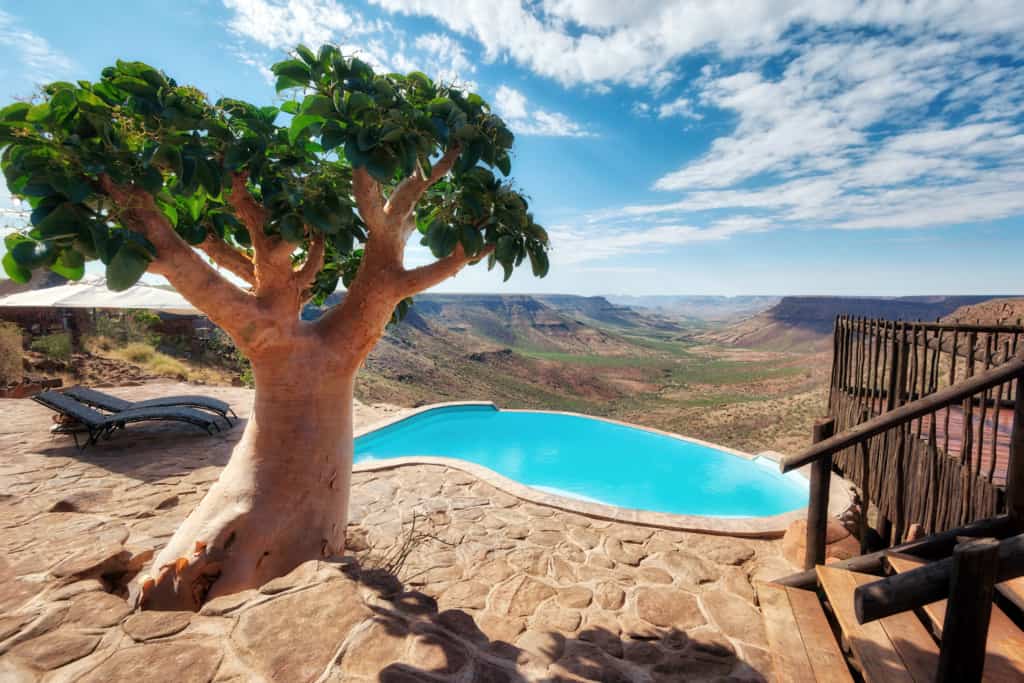
Namibia safari cost
Namibia is a premier safari destination in Africa, thus incurring the more expensive costs associated with this.
There are multiple factors that can impact the cost of a safari in Namibia including accommodation selected, trip duration, safari costs, tours, flights, transfers, meal options and additional activities visitors may request.
Travellers on a budget can reduce costs by booking their own flights, accommodation and activities as well as hiring a 4*4 to travel between the parks and reserves.
Organizing your safari
There are a number of different options available for organizing your safari in Namibia including:
Organizing your own safari is possible but only recommended for more experienced travelers and visitors on a strict budget. This option requires time and know-how to plan for all flights, transport, meals, accommodation and safari tours.
Without the knowledge of specific safari destinations and logistics in navigating an African country, this may be a challenging option for many travelers.
Tour operators
The biggest tour operators will offer safaris in Namibia where visitors can book a package that will cover their flight, transport, accommodation, activities and food, an ideal option for those with no previous safari experience in preparing for such a trip.
Safari travel agencies
Visitors will often find dedicated safari travel agencies to be the best option in booking their dream safari. These agencies have many years experience in booking safaris as well as multiple partnerships with local tourism networks and lodges/game reserves.
Travel agencies typically offer:
- Tailor-made tours
- Local tour guides
- Trips to must-see wildlife areas and parks
- All transportation
- High quality accommodation at reduced prices
The cost of the service of these specialized agencies can be a bit higher compared to other options, a cost worth bearing given the quality and ease of services provided.
Accommodation
Visitors typically will have the choice between lodges, chalets and campsites as well as African tent camps, suites and bedrooms.
Luxurious facilities are common including swimming pools, restaurants, bars, spas and terraces. Game viewings and plane transfers are organized by the accommodation providers.
Trip preparation
Entry .
Tourists can visit for up to 3 months without a Namibia visa and passports must have at least six months of validity remaining beyond their exit date when deciding the best time to visit Namibia .
Per the U.S. Embassy in Namibia , U.S. passport holders who plan to visit Namibia for tourism or informal business meetings for less than 90 days may obtain visas at the port of entry free of charge.
British nationals can enter Namibia for a holiday or private visit of up to 90 days without a visa.
EU & Switzerland
Namibia allows nationals from 53 countries and territories to enter without a visa for the purpose of tourism for up to 90 days including Germany, Austria, Italy, Switzerland, Ireland and Spain.
Note: Not all EU nationals are exempted from visa requirements when travelling to Namibia, specifically Bulgaria, Croatia, Cyprus, Czech Republic, Estonia, Greece, Hungary, Latvia, Lithuania, Malta, Poland, Romania, Slovakia and Slovenia require a visa to visit Namibia.
Health
The CDC and WHO recommend the following Namibia vaccines : Covid-19, Hepatitis A, hepatitis B, typhoid, rabies, meningitis, polio, measles, mumps and rubella (MMR), Tdap (tetanus, diphtheria and pertussis), chickenpox, shingles, pneumonia and influenza.
Yellow fever may be required if traveling from a yellow fever endemic country.
The CDC recommends that travelers going to certain areas of Namibia take prescription medicine to prevent malaria.
Depending on the medicine you take, you will need to start taking this medicine multiple days before your trip, as well as during and after your trip. Talk to your doctor about which malaria medication you should take.
Malaria is common in northern Namibia. Consider taking anti-malarial medication if you’re travelling to this area. Other insect-borne diseases include leishmaniasis. Ensure your accommodation is insect-proof.
Malaria is transmitted by the bite of an infected mosquito and so the first line of defence is to protect yourself against mosquito bites. Malaria Prophylaxis may be prescribed to you during your consultation depending on your itinerary.
Check with a travel medicine specialist to see if antimalarials should be considered to help prevent malaria contraction.
Visitors should be aware that COVID-19 entrance restrictions have been lifted in Namibia, and that they no longer need to present evidence of vaccination or a COVID-19 test results in order to enter the country.
It’s also advised to listen to the guidance provided by the local authorities and to be aware that Namibia can at any point impose new travel restrictions or institute brand new laws with little to no advanced warning, as a result of a new COVID-19 variation.
What to pack
The essential items to pack for your Namibia safari include:
- Neutral coloured clothes
- Long-sleeved shirts protecting against the sun and mosquitoes
- Sunscreen, sunglasses, a hat and insect repellent
- Jackets and sweaters for early morning game drives
- Comfortable walking shoes
The currency of Namibia is the Namibia Dollar (NAD).
USD $1/GBP £0.77 = Approximately 15.40 NAD.
Driving in Namibia
Namibians drive on the left-hand side of the road and visitors driving through parks may require a 4×4, whilst carrying a map & GPS is recommended.
Insurance
Visitors should consider travel insurance when planning their trip to help protect and cover the costs of hospitalization or repatriation if required.
Some credit cards may already include travel insurance. Online travel insurance comparators are also useful in finding suitable offers.
How much does a safari in Namibia cost?
Visitors can expect to pay between $800 to $1,100 per person per day.
When to go on a safari in Namibia?
The best time to visit Namibia for a safari is during the dry winter from June to October.
- You are here:
- Top Rated Tour Operators

Top Rated Safari Tour Operators in Namibia

Nature Travel Namibia #1 of all Namibia tour operators
Nature travel namibia, safari tours 13 – offered by nature travel namibia, customer reviews, blue crane safaris namibia #2 of all namibia tour operators, blue crane safaris namibia, gondwana travel centre #3 of all namibia tour operators, gondwana travel centre, impala tours #4 of all namibia tour operators, impala tours, dunas safari #5 of all namibia tour operators, dunas safari, wild dog safaris #6 of all namibia tour operators, wild dog safaris.
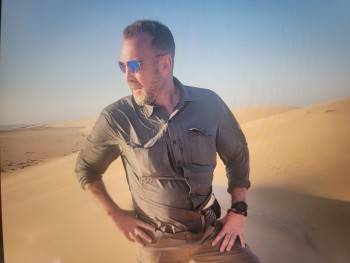
CrissCross Namibia Safaris #7 of all Namibia tour operators
Crisscross namibia safaris, safari tours 5 – offered by crisscross namibia safaris, great explorations namibia #8 of all namibia tour operators, great explorations namibia, discovery transfer and tours #9 of all namibia tour operators, discovery transfer and tours.

People Tours And Safari #10 of all Namibia tour operators
People tours and safari, safari tours 17 – offered by people tours and safari.

Full Review
Related Searches
- Namibia Tour Companies
- Namibia Safaris
- Damaraland Travel Agencies
- Skeleton Coast Travel Agencies
- Cape Cross Travel Agencies
- Mudumu Travel Agencies
- Walvis Bay Travel Agencies
- Twyfelfontein Travel Agencies
- Ongava Travel Agencies
- Namib-Naukluft Travel Agencies
- Waterberg Plateau Travel Agencies
- Khaudum Travel Agencies
Deals of the Week European Long Weekends Up to 50% OFF
Namibia Tours & Trips
If you haven’t heard of ‘ the Big 5 ’, then savour this experience on a Namibia safari adventure of Etosha National Park , where you will see them all: lion, leopard, rhino, buffalo and elephant. But Namibia is famous also for the Atlantic beaches of Swakopmund , wildlife of Walvis Bay and the capital Windhoek. Book your Namibia tour now!
Filters applied
250+ namibia tour packages with 569 reviews.
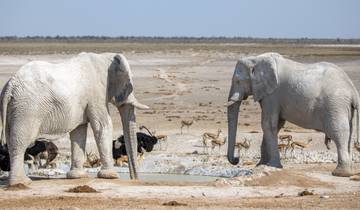
- Christmas & New Year
6 Day Dunes & Wildlife Accommodated Safari
No major problems. Room and board and of course the wildlife seen were VG+. Hot showers, comfortable beds, pool/bar, some even had a safe and patio/verandah. Gained a couple pounds and saw tons of rhino, zebra, wildebeast, oryx. Minor problems: 1. Poor communication - I brought cash only and had been promised a bank stop the morning of departure but our guide refused. I did not buy supplies (water, shaving cream, etc) at the store (Otjowarango Superspar?) or partake in some of the activities (the meals that were not provided and the dune ATV ride) I wanted to. Fortunately mosquito count was low and tap water potable (2 locations did not taste great). 2. Vehicle AC didn't work, just dropped condensation on our heads. No music played entire trip, driver was in separate cabin so did not hear most requests. 3. Other than one day at dunes, no real exercise, and lots of driving.
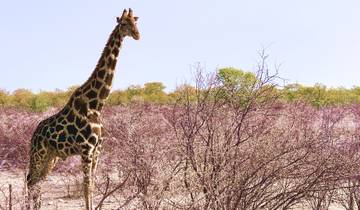
- Overland Truck
7 Day Namibian Highlights Accommodated Safari
Overall this tour was really awesome. Our super knowledgeable guide Stafano gave us an unforgettable Safari experience . Wish this tour could be few extras days covering few more places like Sandwich harbor and the seal colony in the skeleton coast. This was really an express tour. Nonetheless our family enjoyed the overall experience. All praise for Chameleon Safari being professional.
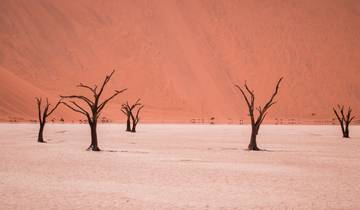
- In-depth Cultural
Wonders of Namibia National Geographic Journeys
Great things we saw!! A pity was the mistake in Etosha ( wrong dates in booking) forcing us to go to a run down camp. But also the planned camp (next day) was of low quality, with rather unfriendly personnel.
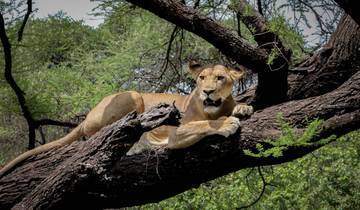
Taste of Namibia 7 Days DEPARTING MONDAYS **Sustainable Approach to Travel
My husband and I had an incredible experience in Namibia thanks to Kalus our wonderful guide/driver for the safari. We were lucky to go with Kalus, he made finding wild animals appear easy, giving us the opportunity to see many different animals, stunning landscapes and be in time to our overnight spots. We have been on a number of safaris across Africa and this counts as one of the best trips of our lives.
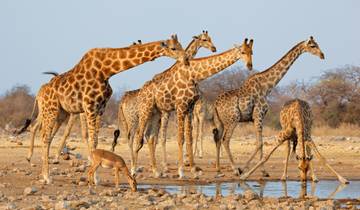
Sossusvlei, Swakopmund & Etosha (Camping) - 7 Days
Thanks to tourradar and discovery for the wonderfull tour
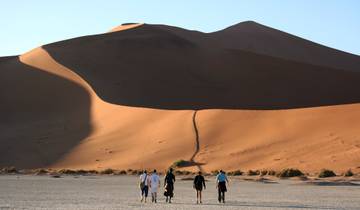
Classic Namibia 12 Days DEPARTING SATURDAYS **Sustainable Approach to Travel
We were completely blown away by the sights and sounds of Namibia during our recent camping safari with WAT. Anna was fantastic when planning our trip, always available to answer any questions. We were very impressed by the service of our guides Steinner and Klugger who were knowledgeable about the trip and expert campers. The food and service was very good. We got to see lots of animals and beautiful sceneries. I have no complaint because the experience beat our expectations.
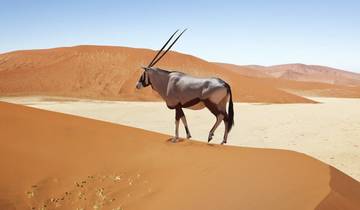
Namibia Explorer (Accommodated) - 10 Days
I was very satisfied with my 10 day Namibia Coverage Lodging trip, organised by Discovery Tours. Everything was well planned, the lodges good and the guide experienced and nice. Would definitely recommend this trip.
Looking for tours beyond just Namibia?
Explore tours with itineraries going through multiple countries, including Namibia.
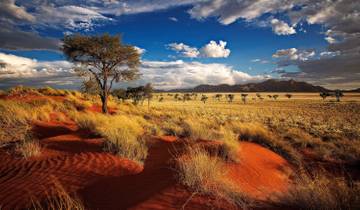
Discover Namibia - Camping
Pre-tour information For the most part, the pre-tour information on the itinerary, transport, accommodation, excursions, conditions and so on was fairly accurate. There are three points where changes are needed. 1. Temperatures. Our tour started at the beginning of October, on the cusp between the colder winter months and the hot summer. It was much hotter than I expected with daytime temperatures reaching or exceeding the mid to high 30s most days. My impression that it would be cooler than this was reinforced by the Swakopmund temperature chart you include in the trip notes. From this I expected mid teens to low 20s. I did not know that Swakopmund is by far the coldest place that we visited. If you are going to show any temperature charts, these should be representative of the general conditions that travellers are likely to experience in Namibia as a whole. The tour was actually run by a local company, Mabaruli and I found this statement on their website: “October is the hottest month in Namibia with temperatures above 40°C”. Why was that information not added to the Exodus website? If I had known that in advance I seriously doubt that I would have chosen October for this tour. 2. Activity level. The trip was described as “Leisurely/Moderate” and at level 2 on a 10-point scale. There is no way that this is accurate. While there is a lot of time spent sitting in the truck doing nothing more than looking out of the window, when activity is required it was very tiring in the heat of the day. Bear in mind that there is no upper age limit for this tour and I think that everyone on our tour was over 50. What might be leisurely for a 20 year old may not be for a septuagenarian like me. 3. Initial meeting. There was no information on the time and place of the initial tour meeting on day 1. This should be specified clearly and unequivocally. Then everyone would know what to do and could arrange their travel plans around this meeting. Itinerary Overall I was satisfied with the itinerary. Maybe some minor tinkering is needed (eg. two hours at the craft market on day 12 was too long) but there were no major deficiencies. Staff There were three staff: Ronney, the tour leader, and two camp assistants, Happy and Jonas. Ronney was responsible for the overall arrangements, acting as guide while on the road, and as the full-time driver. This is too much for one person and it is no wonder that he was somewhat grumpy at times. One of the camp assistants should be a qualified driver and be able to relieve the tour leader of some or all of the driving responsibilities. Happy and Jonas were responsible for preparing the meals, setting up and breaking camp. Both were lovely blokes, always ready to help with a smile. Happy was a bit reserved at first but warmed up after a few days. Transport The truck was quite comfortable and reasonably roomy with two spare seats that were used for excess luggage (backpacks and so on). However, it was not well designed for the purpose. There were two pairs of windows at the front, above the driver's cabin. However, there was a wide solid horizontal panel between them that was exactly at eye level for anyone of normal height. As a result, forward vision was very limited. That is a ridiculous design for a safari truck. The roof opened for “game viewing” but there was nowhere near enough room for all of the passengers and we had to stand on the seats to get high enough to see. I don't know what can be done about this but the truck was certainly not fit for the purpose. We saw other trucks on our travels where everyone could simply stand up and see. Such trucks should be used for future tours. The trip notes say “People are expected to move around to permit everyone a chance to have a window seat.” One couple hogged the prime position (the front left seats) for the entire tour and declined to move. Allegedly this was because one of them suffered from travel sickness. The tour leader should have been more assertive, insisting that everyone got a turn in that prime position. People who suffer from travel sickness should not go on tours that will exacerbate their condition, or take suitable medication to combat the problem. A couple of days into the tour I noticed that one of the rear tyres was totally worn out, with the canvas showing through. The truck should never have been sent out in that condition. A couple of days later a tyre blew out but it turned out to be a new tyre that had been installed to replace the bad one, probably while we were in Swakopmund. It took an hour for the spare tyre to be put on. This blew out within 15 minutes so clearly the spare tyre were not in a suitable condition. We limped the rest of the way to Sophienhof camp with this flat tyre. The next day we were dumped in Outjo while four new types were being obtained. We were told this would take two hours. It took more than four hours, with no communication from the tour leader in the meantime. I realise that time is a bit elastic in Namibia but that is no excuse for keeping us in the dark. We had no choice but to sit and twiddle our thumbs waiting where we were told we would be picked up. We missed half a day in Etosha, the most important tourist destination in Namibia. Hotels The Prost Hotel in Swakopmund was perfect. Beautiful rooms, great breakfast and well situated close to the centre of town. The two hotels in Windhoek were not so good and the logic for using a different starting and finishing hotel was unclear. I would prefer that the starting and finishing hotel were the same. The Arebbusch Lodge is too far from the centre of town. However, this was not my major objection. Near the restaurant and bar there is a very nice pool area with umbrellas, tables, chairs and loungers. This was off-limits to us, being reserved for residents in “The Square”. The pool that we could use was small, a bit dirty, far away, and lacked umbrellas, tables, chairs and loungers. It was totally inadequate. You should not patronise a hotel that practises such blatant discrimination against some of its guests. The Utopia Boutique is also inconvenient in its location, really not near to anything. Moreover, it was disappointing to find that some of our group had nice, airy rooms around the pool area while others (including us) had small dark rooms with no view at all except for a blank wall. We are all on tour together, paying the same price, and should have similar accommodation. If the Utopia Boutique cannot satisfy this requirement, then go somewhere else, preferably within safe walking distance from the centre of Windhoek. When we arrived at the Utopia Boutique mid-afternoon there was a noisy party going on next door but we were told that if it wasn't quiet by 9 pm reception would call the police. The trouble was, reception closed at 8 pm and there was nobody around to take action. Eventually, at 10.30 pm, I found a security guard who said he would phone the manager who would then phone the police. The management should have made sure that someone was available in reception at 9 pm to deal with the noise if it was continuing. Maybe the partying was a one-off event and would not happen again but the hotel should have made sure that we were not disturbed. Campsites The campsites were a mixed bag. The first one, Sesriem, was quite poor. Our site was a long walk from the bar, shop and restaurant. The pool was a bit closer but it was so poorly maintained that it was uninviting. The toilet and shower block closest to our site was in very bad condition. The two sites in Etosha were acceptable, while Solitaire and Sophienhof were both very good. Brandberg was nice except that it was a very long and dusty walk to the bar and pool area. The worst one was Waterberg. While the campsite itself was fine, to get to the bar and pool involved a very long walk up hill. And when you finally arrived, the pool was an absolute disgrace, full of slimy green algae. Meals The meals provided were generally good to exceptional, particularly the dinners where Happy and Jonas went to great efforts to provide variety and to allow for the special dietary requirements of two of our group. Quantity was never an issue; sometimes the amount left over was something of an embarrassment in a country where there are some very poor people. There is one meal that requires special mention, and that is the dreadful buffet dinner at Waterberg. This was not included in the tour and turned out to be the worst, and most expensive, meal that we had in Namibia. With nowhere else to eat, and nothing on offer apart from the buffet, we had no choice. This should definitely be deleted in future, substituting an included dinner at one of the other campsites such as the ones in Etosha. Paid excursions We went on two excursions in Swakopmund. In the morning we chose the Sossusfly joy flight. We had high expectations of this flight, especially considering the very high price of $N460 each for just over 2 hours. We were quite disappointed, especially by the Skeleton Coast which was obscured by fog. I suspected that this was a common occurrence and later found out that there is fog for 4 days out of 5. Another problem was that what you saw depended on which side of the plane you were on. Usually, in these types of flights, the pilot makes sure that everything is seen by passengers on both sides. You should not be recommending this flight. In the afternoon, we went on Charly's Namib Desert tour. The minibus was very comfortable and Borden, our guide, was extremely knowledgeable and likeable. It was a terrific four hours. We travelled through the 'moonscape' where we were told about the history, geology, flora and fauna. The main focus was on the plants and they were presented in an interesting and informative manner. There were plenty of stops to photograph the weird landscape. Overall we were extremely satisfied with this tour. Ron Duggleby October 2018

7 Days / 6 Nights Sossusvlei, Swakopmund and Etosha National Park ( Comfort)
The tour was well organized. The guide Shawn went beyond and was so accommodating. The lodges were beautiful and allowed us to enjoy the beautiful country. Lufthansa flight cancellations could have spoiled our trip but Shawn again dealt with it and our holiday continued seamlessly. Thank you for the Namibia experience!
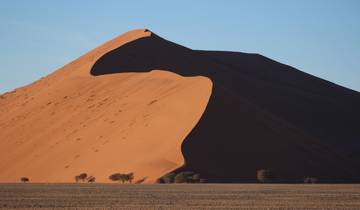
10 Day Discover Namibia Small Group Safari
My daughter and I did the 9 day discover Namibia tour and had a fantastic time. The itinerary and accommodations were great, and our guide Willem was fantastic. He was extremely knowledgeable, patient, and accommodating; we could not have asked for a better guide. Namibia is a beautiful country; we would love to return.

Discover Namibia - Lodges
Our Namibia tour was terrific. Such a diverise landscape from extreme deserts to amazing animals in Etosha. Most of the accomodations were good except for one but we had a terrific time. When we finished the tour, we found the world had changed drastically due to the virus.

8-Day Etosha NP, Swakopmund & Sossusvlei ( Camping)
I was very pleased with this tour of Namibia. We chose the 8 day camping tour which covers a lot of ground in a short time. However, our guide was excellent and he managed the time and sights well. He also was experienced and knowledgeable about his country so the journey was interesting on every level. If it is possible to request Shawn Kashima to be your guide you will be fortunate if he is available. Namibia is a beautiful desert land worth experiencing. Climbing the dune at Sossusvlei was a highlight as was witnessing the mass of seals at Cape Cross. Etosha was fantastic as we were fortunate to see a pride of 12 lions in the morning. Our guide was in contact with rangers and other guides so he knew where it was best to go at the moment. Overall, this journey was very enjoyable for our family, which includes our 5-year old daughter who loved camping and developed a friendly rapport with the guide.
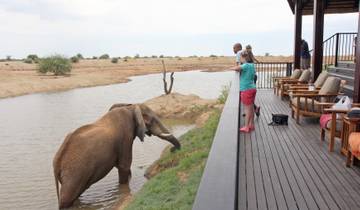
Summer Safari Package to Africa
This was my first traveling experience alone. I had the most amazing trip! Junita's Extreme Adventures took care of everything once I told her the activities & excursions I was interested in. My lodging, meals & transportation were all planning out for me in a wonderful, busy itinerary. I have the most wonderful experiences & memories for the rest of my life! This felt divinely planned for me. I could not have asked for better!

African Safari Adventure in Namibia - 11 Days
The pick up was very punctual. All the accommodation was neat and clean, they had very friendly staff and a very friendly welcome. The sites exceeded our expectation, we saw a lot of wild life and breathtaking sunsets. the Hot air balloon trip was exceptional with the views of the ocean and desert. The whole trip was very relaxing as well as informative, there was ample time to take enough pictures and shopping while taking in the beautiful view. We enjoyed a lot of fresh seafood and authentic cuisines. I would recommend this package to anyone wanting a relaxed holiday with a few light adrenaline activities. This was well organized.
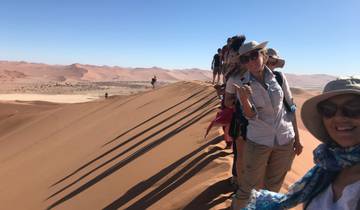
11 Day Classic Namibia Highlights
What people love about namibia tours.
A wonderful tour. The tour description is precise, and we actually went through like that. Like the most tours, you'll probably need to ask something to them, but they were responsible almost all the time, which was helpful. Accommodations are very satisfiable. Of course, they're not like 5 star hotel, but are high quality given the places we visit. I liked especially 2nd to 5th nights. As others mentioned, we need to spend lots of time driving without music, but I feel that was inevitable to visit across the country. Still, what I was amazed the most was the guide. Gideon, our guide, prepared pretty meals every time, explained well about everything, spotted animals quickly in the safari, drove with safety, and clean the bus every day. Thank you for the experience
I loved it! Namibia is a beautiful country and it was such a great experience to see it with this tour. The places where we stayed were lovely and the people were very nice. The only maybe advice I can give is to have a better communication between company and tour guide. I and another girl had dietary requirements and he was not aware on the first day. Because of this, he had to go get a different lunch than he had prepared already. I also expected the company to communicate with the tour guide that I had a flight on the last day, since they asked me that. He was also not aware of this. I thought he would know, so this made it a little stressful on the last night to arrange this.
The group makes the trip good. The CEO was good with all the information he gave on daily basis whether it was on logistics or other tour related. The driver was very care and knew not only about driving but was able to fix problems given the long distance driving. All in all the tour pretty much covered the highlights of Namibia. We enjoyed the tour and the group and recommend it to others.
Namibia Destinations
- Sossusvlei (96)
- Skeleton Coast (8)
- Etosha National Park (74)
Travel Styles
- Small Group (129)
- Budget (31)
- Luxury (20)
- Singles and Solo (153)
- For Couples (52)
- Young Adults (25)
- Seniors (59)
- Group (212)
- Fully Guided (203)
- Family (180)
- Safari (172)
- Personalized (110)
- Explorer (109)
- Active (91)
- Private (52)
- Partially Guided (47)
- Intl. Flights Included (30)
- Overland Truck (19)
- Jeep & 4WD (18)
- Self Drive (14)
- Self-Guided (13)
- Hiking & Trekking (9)
- 3 Day Tours (24)
- 7 Day Tours (61)
- 10 Day Tours (31)
- 2 Week Tours (54)
- 3 Week Tours (35)
- Spring 2024 (163)
- Summer 2024 (199)
- Fall / Autumn 2024 (197)
- Winter 2024 / 2025 (169)
- Spring 2025 (132)
- Summer 2025 (102)
- Fall / Autumn 2025 (101)
- Winter 2025 / 2026 (93)
- April 2024 (148)
- May 2024 (176)
- June 2024 (181)
- July 2024 (189)
- August 2024 (182)
- September 2024 (185)
- October 2024 (183)
- November 2024 (175)
- December 2024 (165)
- January 2025 (140)
- February 2025 (132)
- March 2025 (122)
- April 2025 (104)
- May 2025 (99)
- June 2025 (94)
- July 2025 (100)
- August 2025 (101)
- September 2025 (100)
- October 2025 (99)
- November 2025 (98)
Namibia Tours starting in
- Starting in Windhoek (183)
- Starting in Cape Town (8)
- Starting in Swakopmund (6)
- Best time to visit Namibia in 2024/2025
- Best 10 Day Namibia Itineraries 2024/2025 (with Reviews)
This website uses cookies to ensure you get the best experience on our website. Learn more
- Australian Dollars
- British Pounds
- Canadian Dollars
- Namibian Dollars
- New Zealand Dollars
- South African Rands
- Swiss Francs
- U.S. Dollars
Talk to an expert +44 203 405 6666 Lines open now
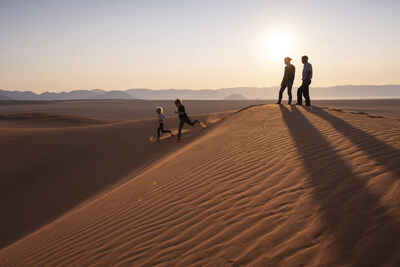
Immerse yourself in spectacular scenery
Soar over the world's oldest desert in a hot air balloon
Namibia is home to world's largest cheetah population
Enjoy a bird's eye view of Namibia's vastness
Escape to the Skeleton Coast
Etosha is full of photographic opportunities
Find solitude beside the Kunene River
Etosha has a healthy lion population
Enjoy excellent for hiking, both guided & self-guided
Track desert-adapted elephants in damaraland
Enjoy a front row seat to the wildlife action
Visit colonies of Cape fur seals along the Namibian coast.
Namibia holidays
Captivating in scale, natural grandeur and sheer emptiness, Namibia is by turns breathtakingly beautiful and almost dauntingly wild.
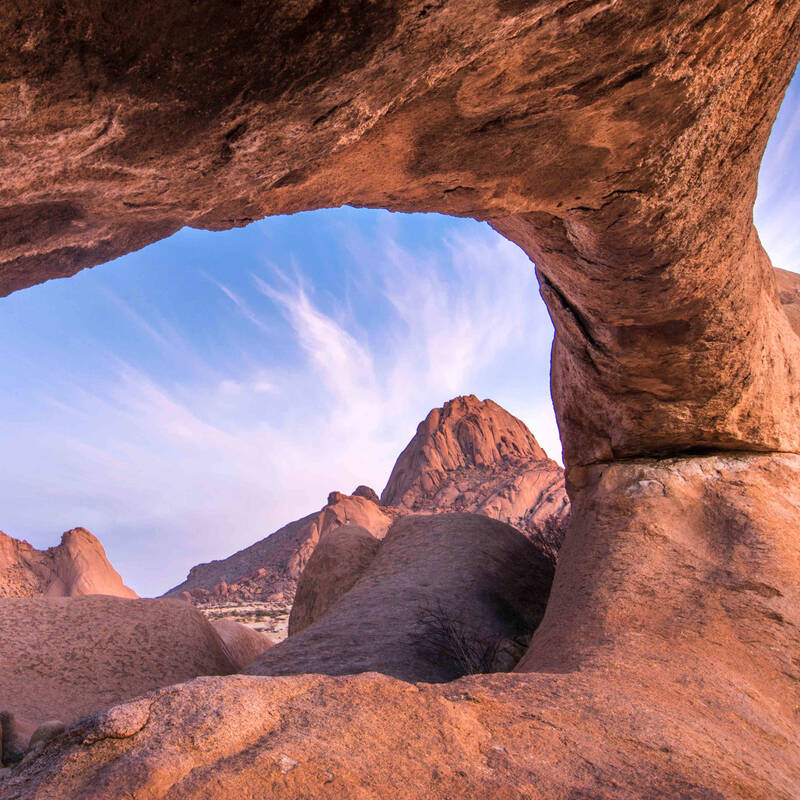
Add to this a plethora of hospitable lodges, exceptionally good roads and many superb areas for wildlife safaris , and the country becomes perfect for individual exploration – by light aircraft, guided expedition or self-drive. To focus on the highlights of a Namibia holiday is to take in the soaring red dunes of Sossusvlei, the rich colonial culture of the coastal towns coastal towns , and the wildlife in Etosha National Park: mountains, sea and safari in one iconic trip. But spread your wings further, and the options are even more tantalising. With a fifth of this huge country protected by national parks, and much more safeguarded in superb private reserves, there is no shortage of mountains to hike, of wildlife to seek out, of sheer space in which to safari. This extraordinary diversity of landscape protects the people of some of Namibia’s most ancient cultures, from the semi-nomadic Himba whose villages are scattered among the vast rocky plains of the north-west to the San, or Bushmen, who have for millennia hunted on the open plains of the Kalahari . It’s a heady mix, one that repays exploration in many different ways – and for a range of budgets. Whether you’re looking for a self-drive trip including some nights beneath the stars, the luxury of a fly-in safari staying in top-class lodges, or something in between, Namibia is the place to create your own adventure.
Namibia's key areas and destinations
Towering red dunes unfolding in waves towards the distant ocean – this is the iconic image of Namibia, this is Sossusvlei in the Namib-Naukluft National Park .
But Namibia has other “must-sees”. For prolific wildlife, the vast salt pan and numerous waterholes of Etosha National Park draw elephants and giraffes , lions and black rhinos , and more. This is world-class safari destination.
Desert-adapted elephants roam the ephemeral rivers of Damaraland , where indigenous San people created unique galleries of rock art; further north, the pastoral Himba cling on to their semi-nomadic culture.
Battered by the cold waters of the Atlantic the hostile Skeleton Coast is home to thousands of Cape fur seals – and the rare brown hyena .
Look into the depths of the Fish River Canyon and wonder at the layers of history in the rocks beneath your feet, or seek out the erstwhile Caprivi Strip for prolific birdlife, lush scenery – and hippos. And if you’re craving contemporary culture, head for the coastal towns.
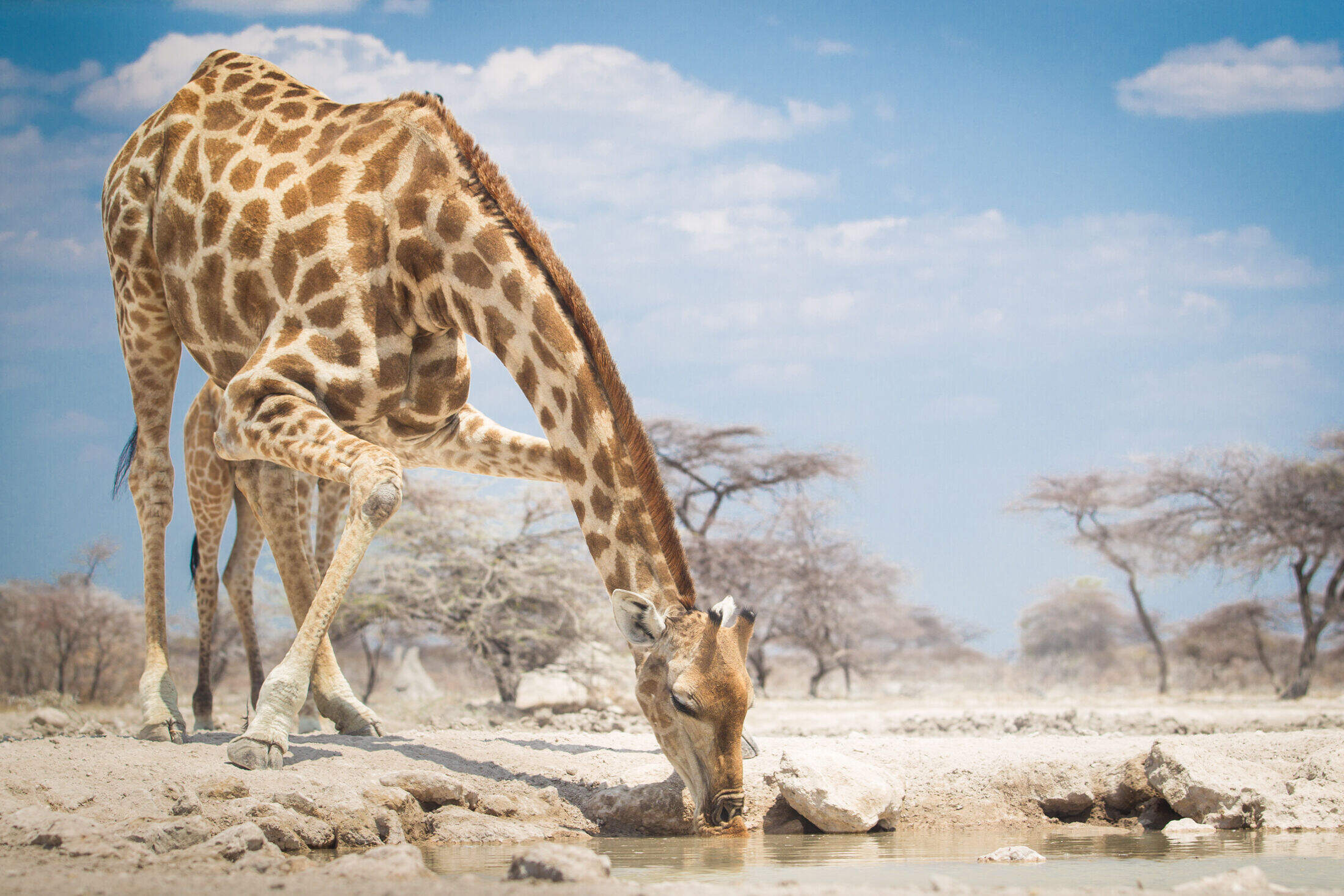
31 places to stay
Namibia’s flagship national park is a must for wildlife lovers and photographers, whether self-driving or on a guided game drive.
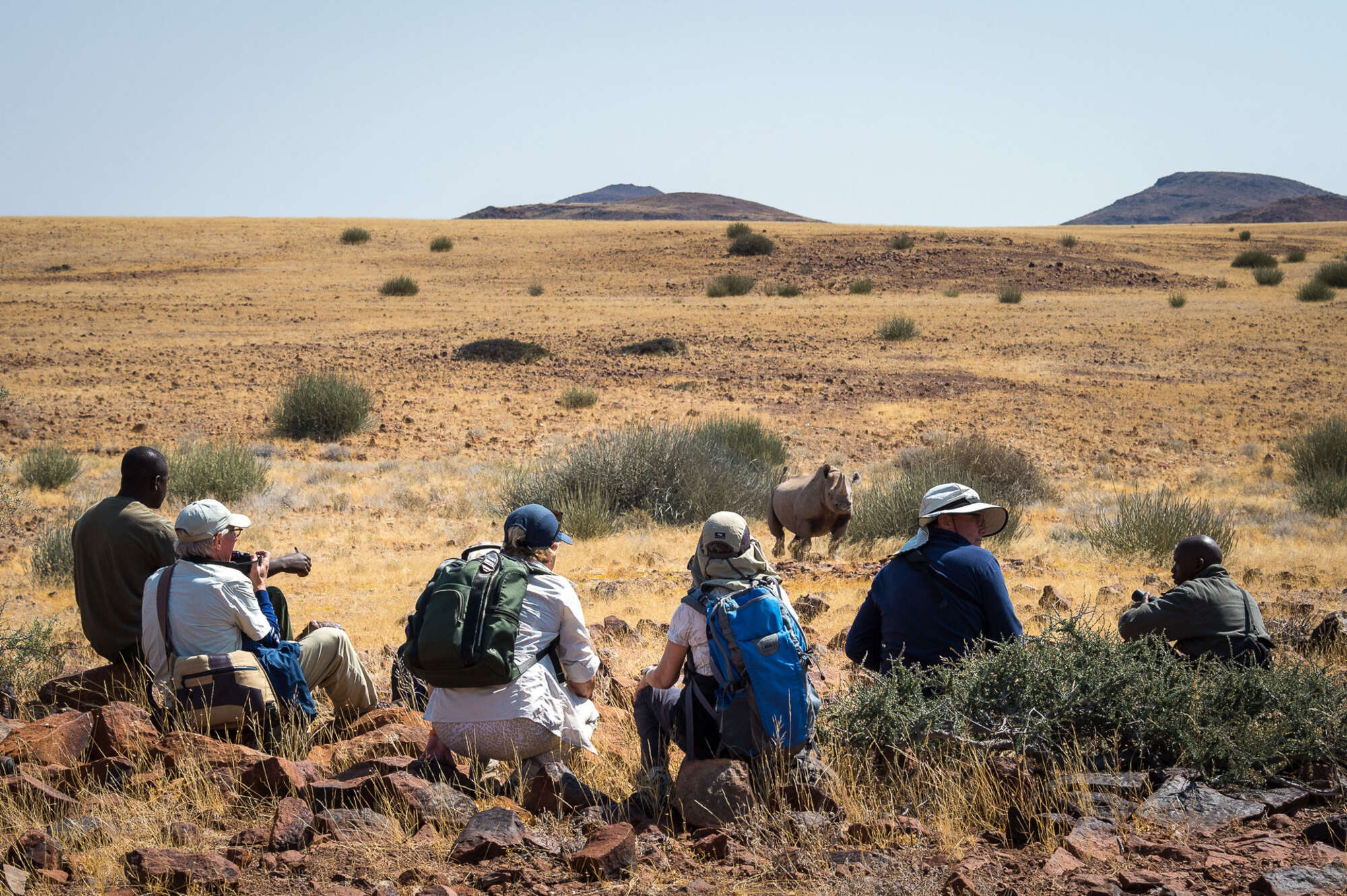
26 places to stay
From rock art to rhinos, Damaraland’s treasures are intrinsically bound up with a landscape of rugged mountains and wide, grassy plains.
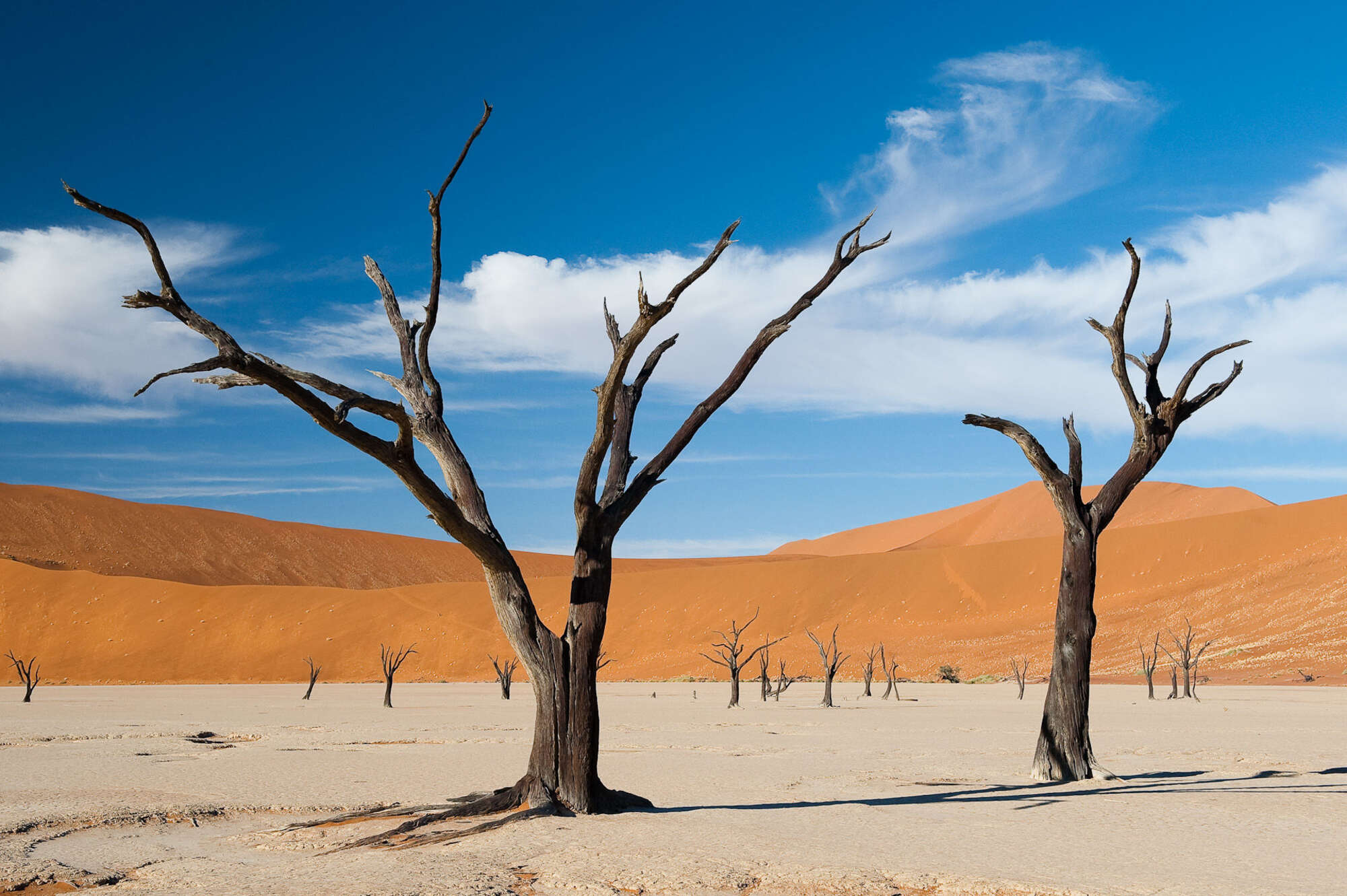
Namib-Naukluft
25 places to stay
A captivating landscape of soft sculpted dunes, vast plains and majestic mountains with excellent hiking: few can resist the Namib-Naukluft.
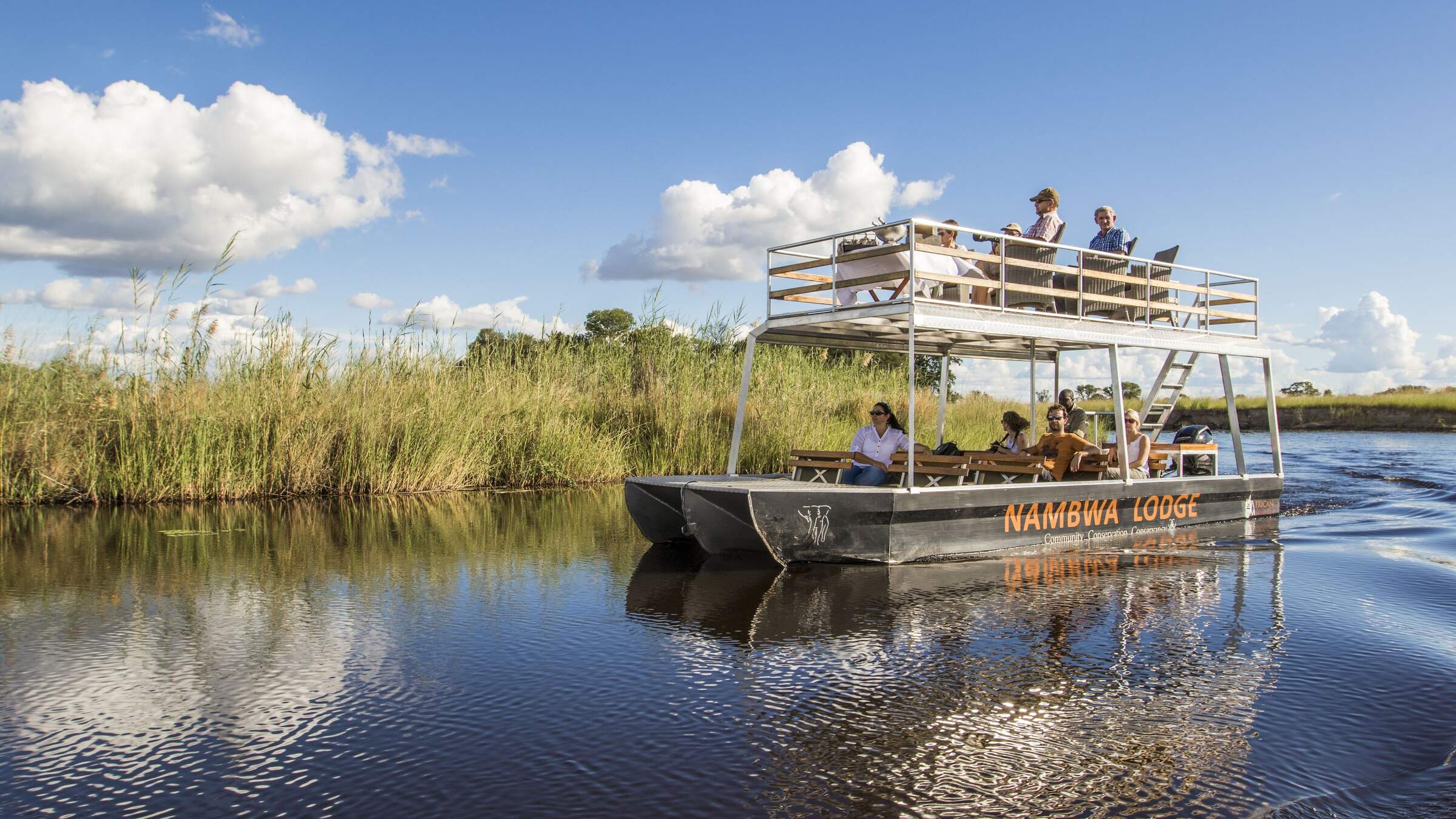
Caprivi Strip
23 places to stay
Literally out on a limb from the rest of Namibia, the Caprivi has an entirely different feel: lush, verdant and often rich in wildlife.
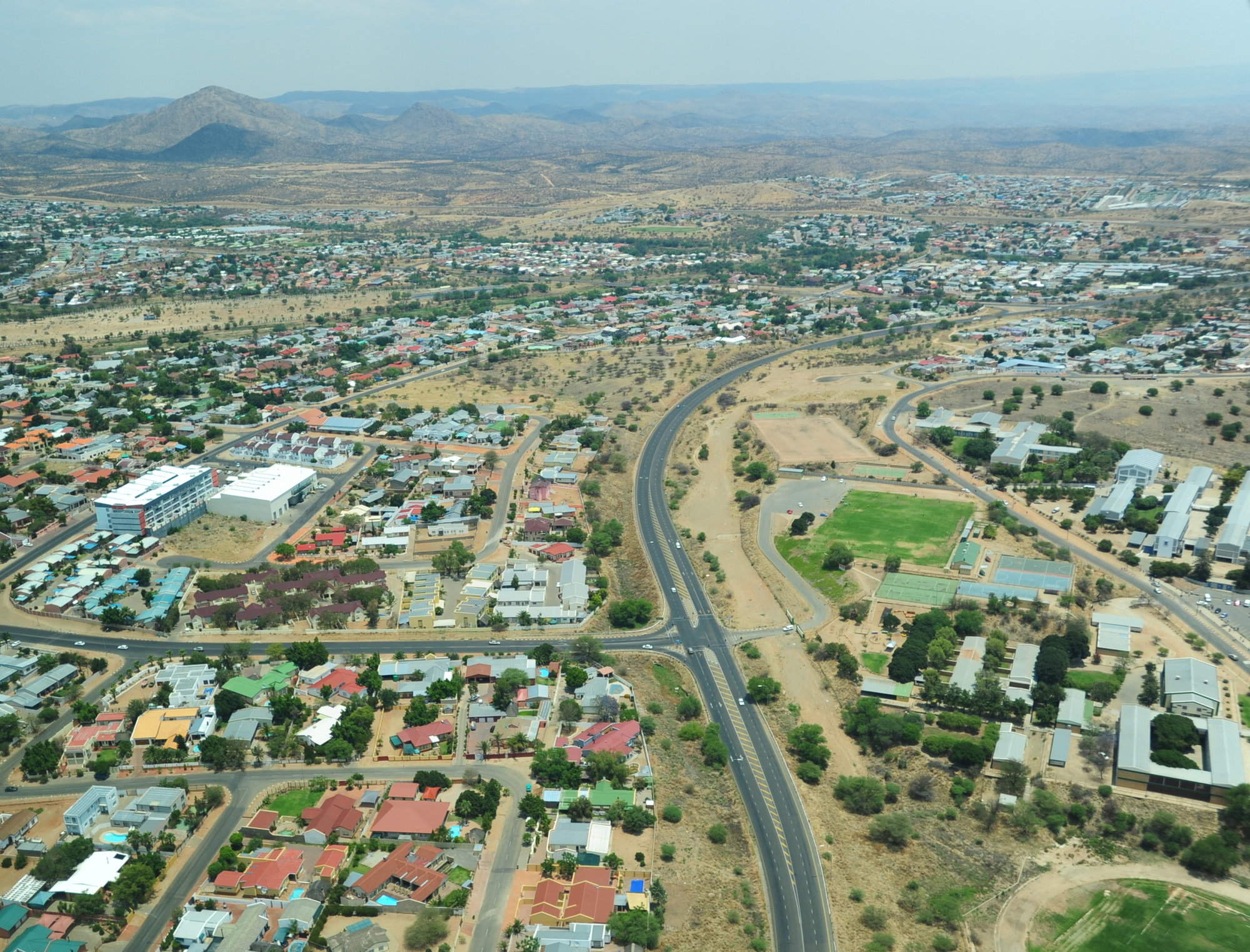
21 places to stay
An inevitable stopover for most visitors, Windhoek, with its attractive valley setting, is worth more than a passing glance.
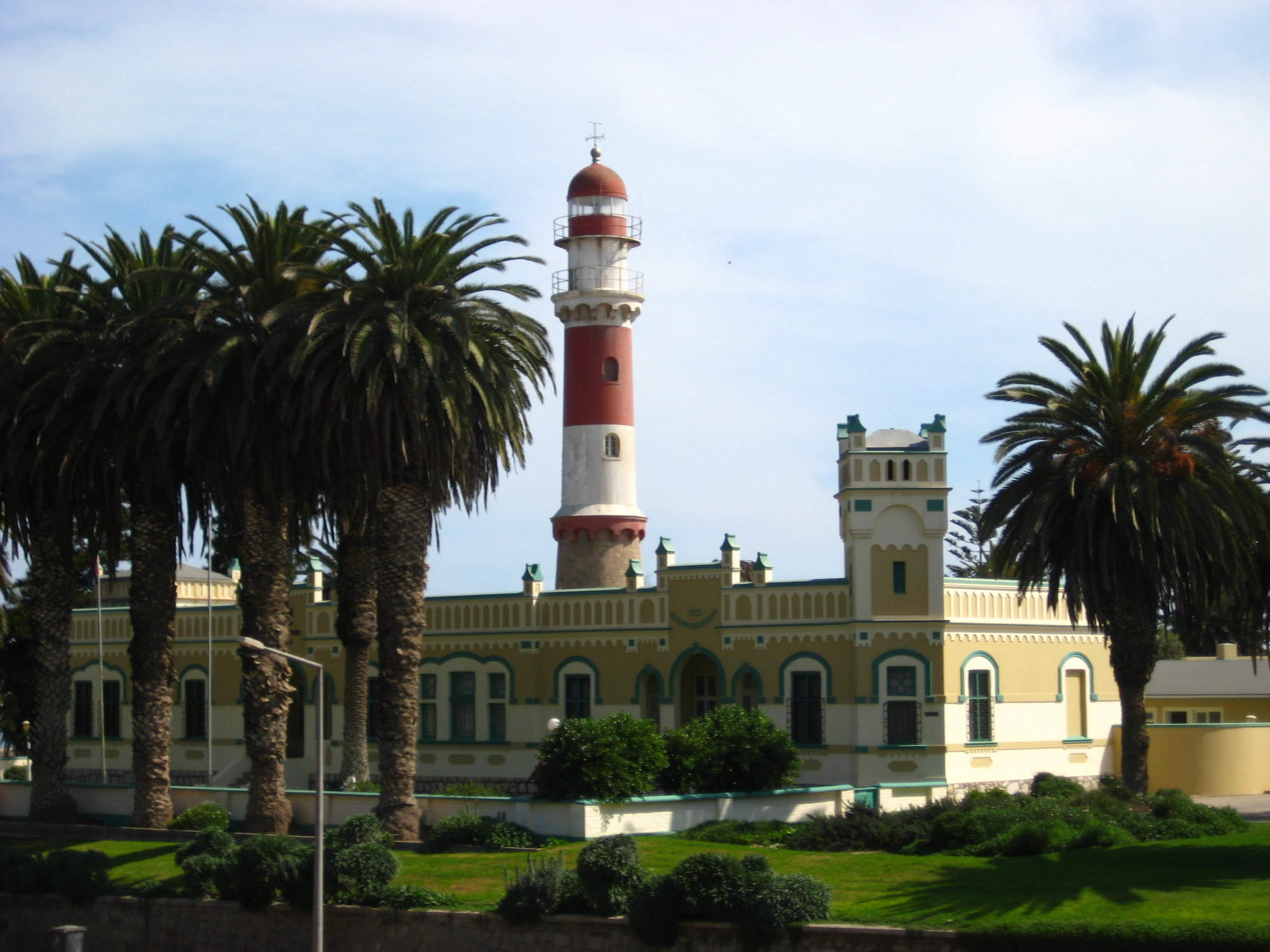
Swakop' & Walvis Bay
From shopping to sandboarding, seafood to coffee and cake, boat trips to birdwatching: the seaside towns offer a varied take on Namibia.
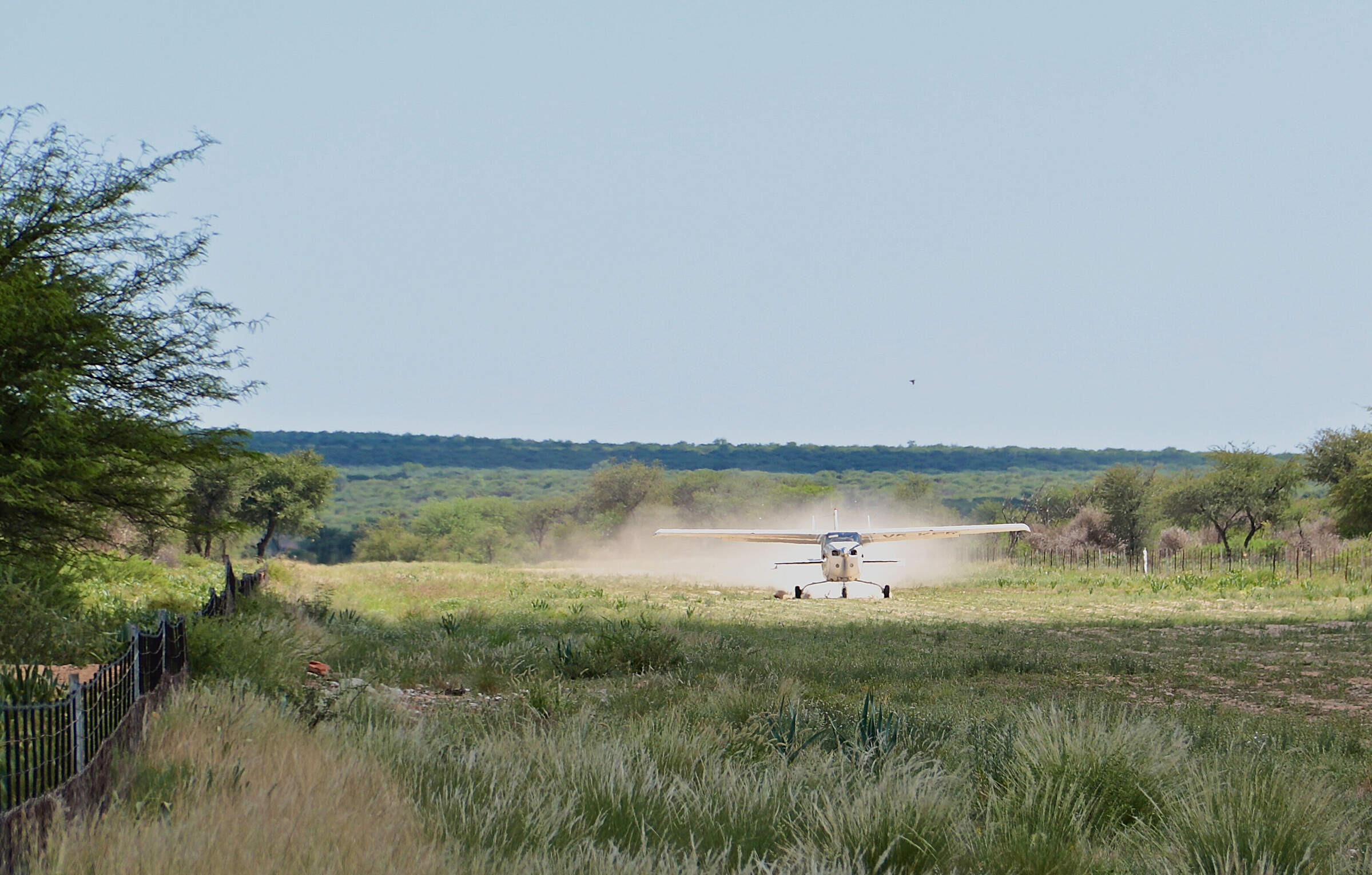
Southern Namibia
15 places to stay
Low, deep-red, undulating dunes characterise the southern Kalahari, variously home to photogenic quivertrees, carpets of flowers and the irresistible meerkat.
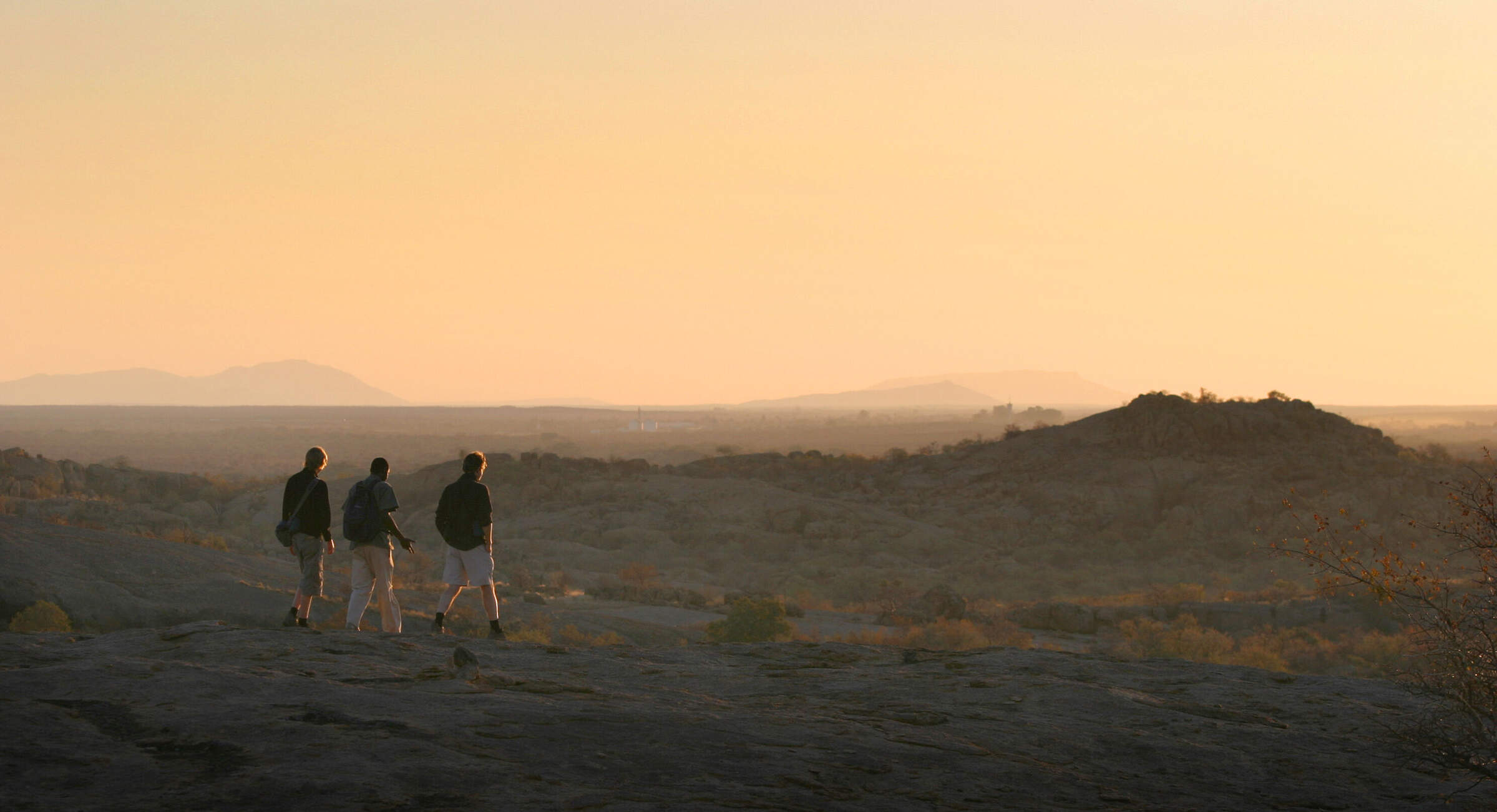
Central Highlands
9 places to stay
Small, personal lodges and guest farms welcome visitors to these rolling hills, whose attractions range from hiking to cave paintings.
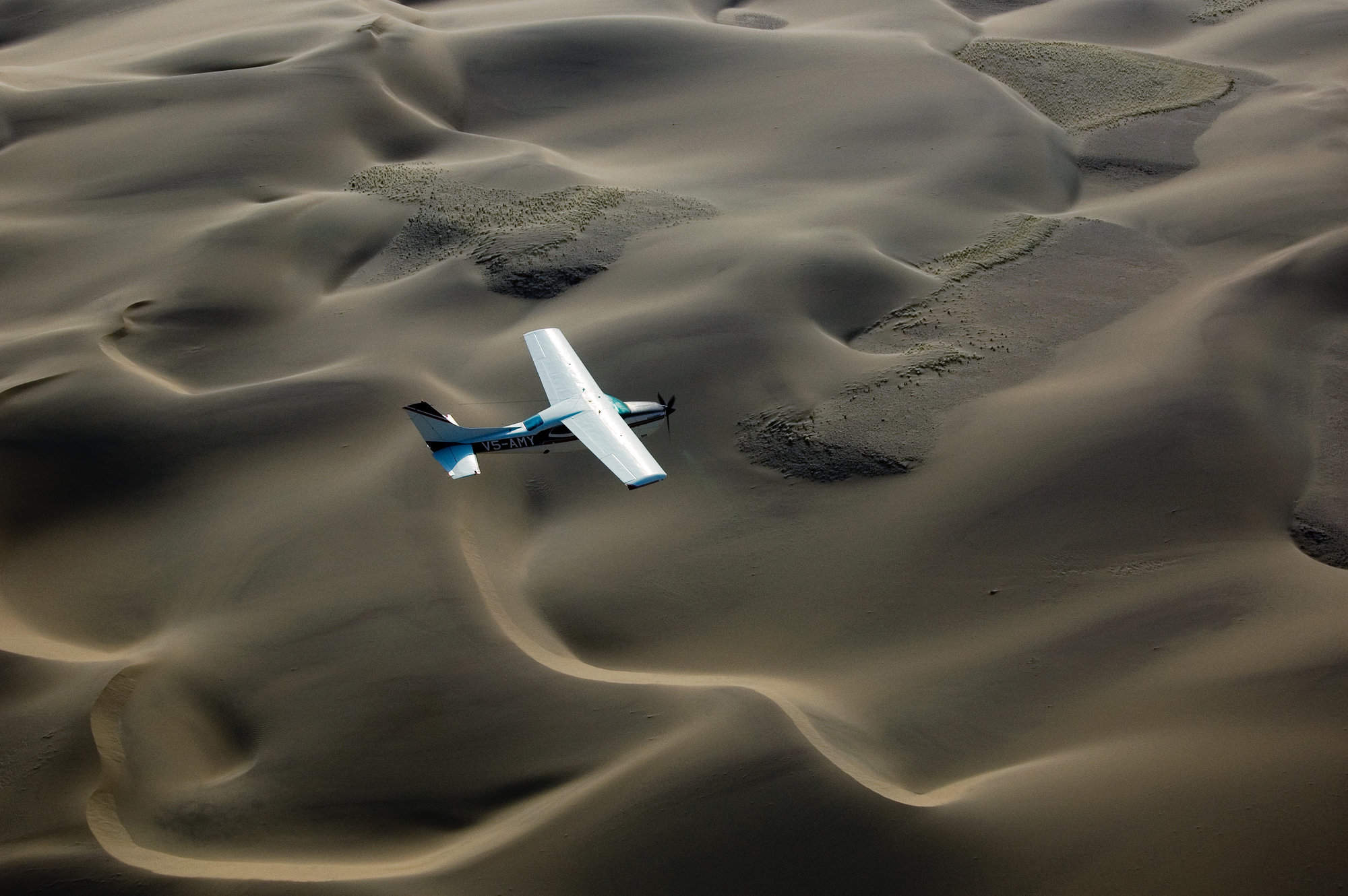
Skeleton Coast
13 places to stay
Fringing Namibia’s western border with the Atlantic, the Skeleton Coast is one of the world’s most desolate yet compelling wildernesses.
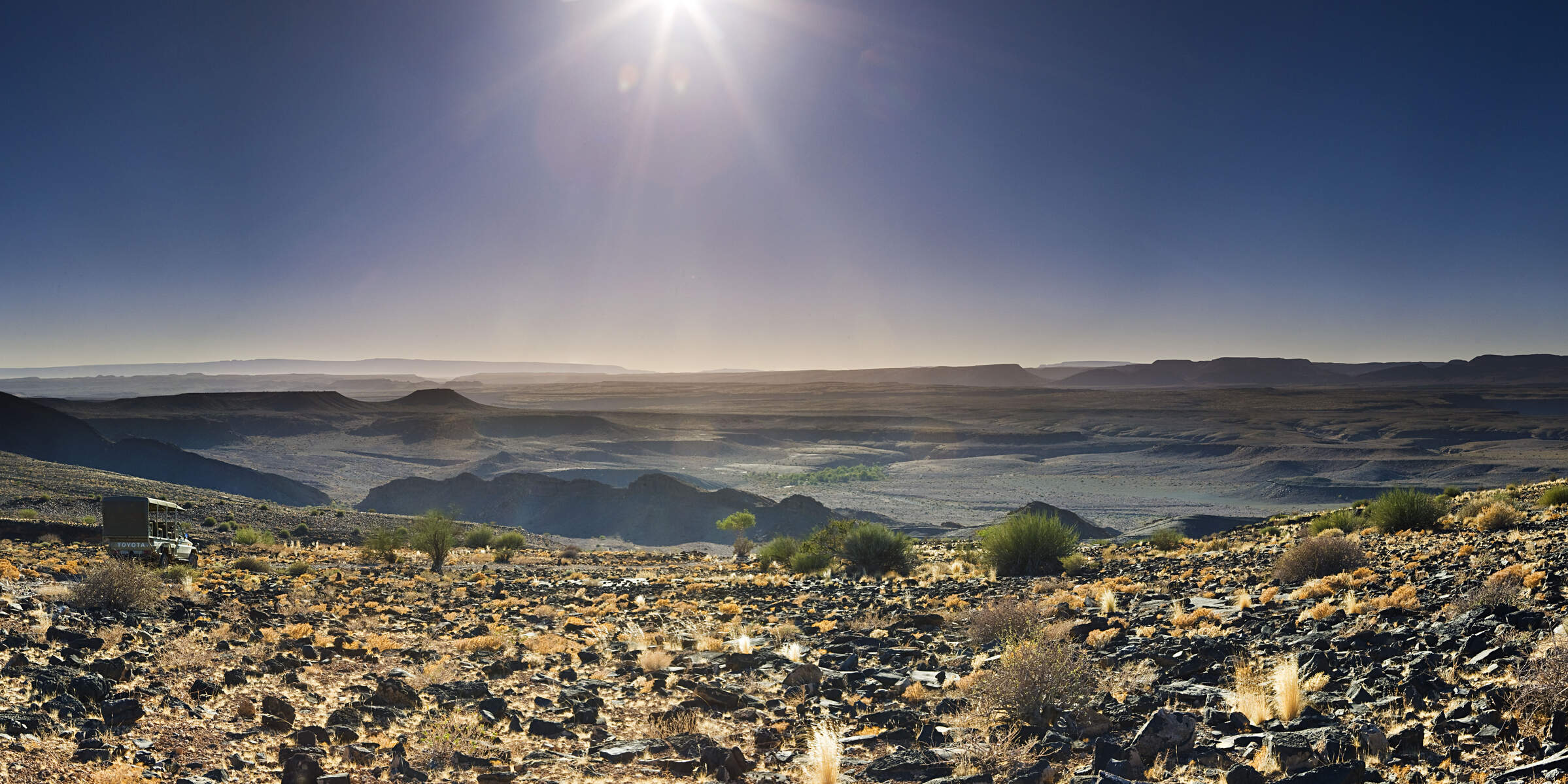
Fish River Canyon
7 places to stay
Both awe-inspiring and exceptionally picturesque, the Fish River Canyon follows a deep fissure in the arid landscape of southern Namibia.
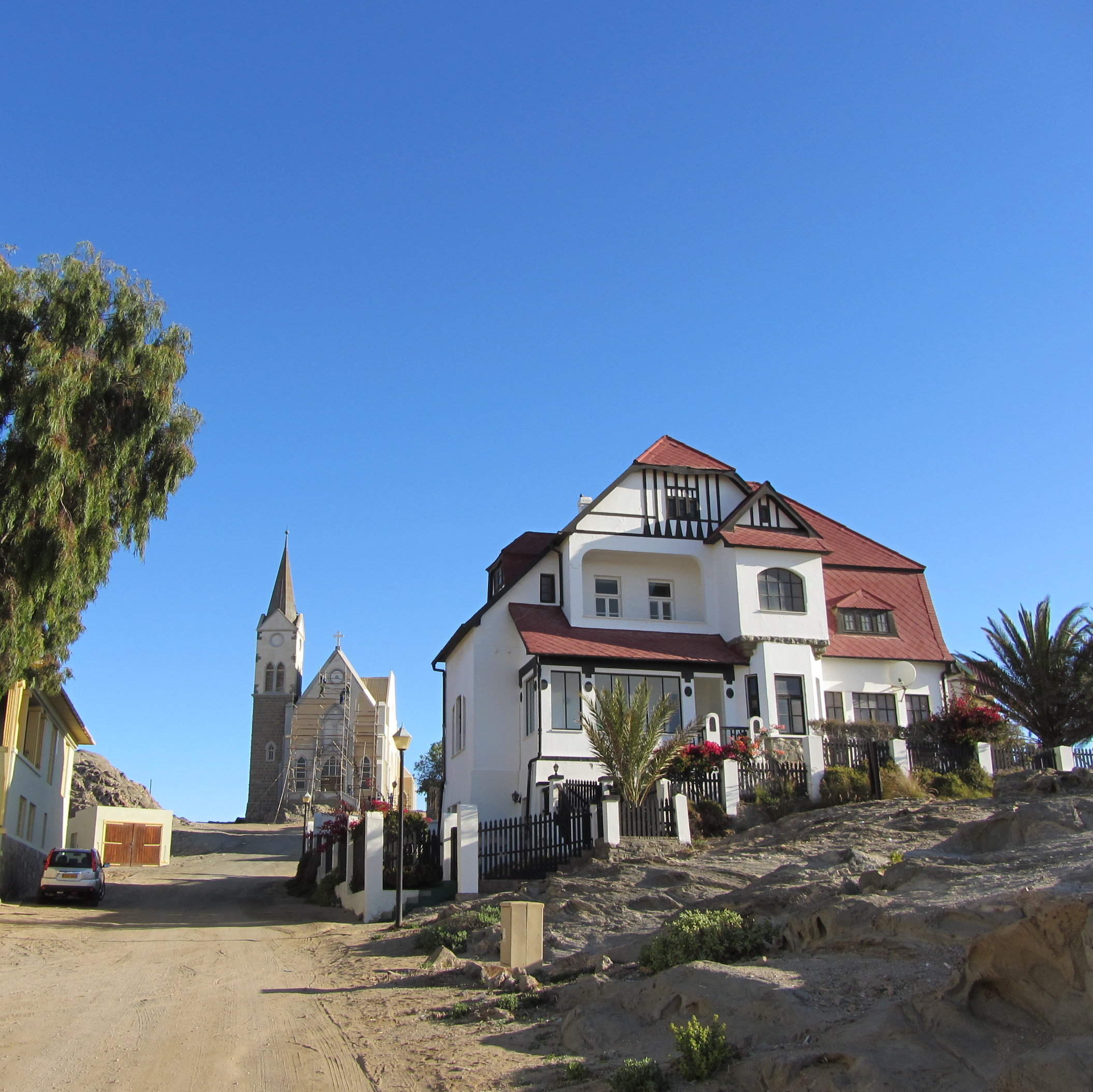
Lüderitz & Aus
5 places to stay
Marooned at the end of a long road from Aus, Lüderitz retains the feel of a frontier town founded on the 20th-century diamond boom.
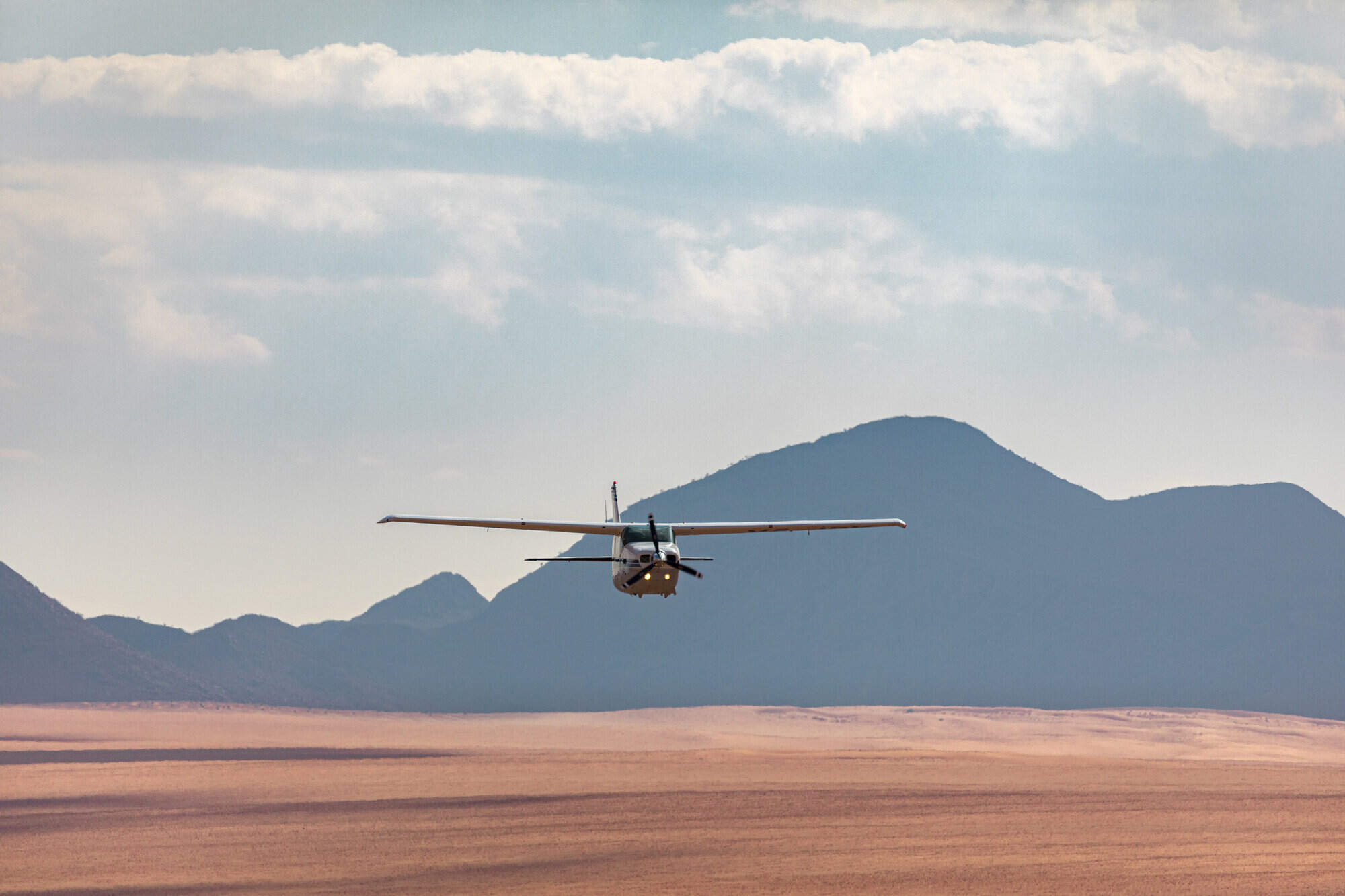
With just a scattering of lodges across a desert area nearly three times the size of Singapore, the NamibRand offers pure escapism.
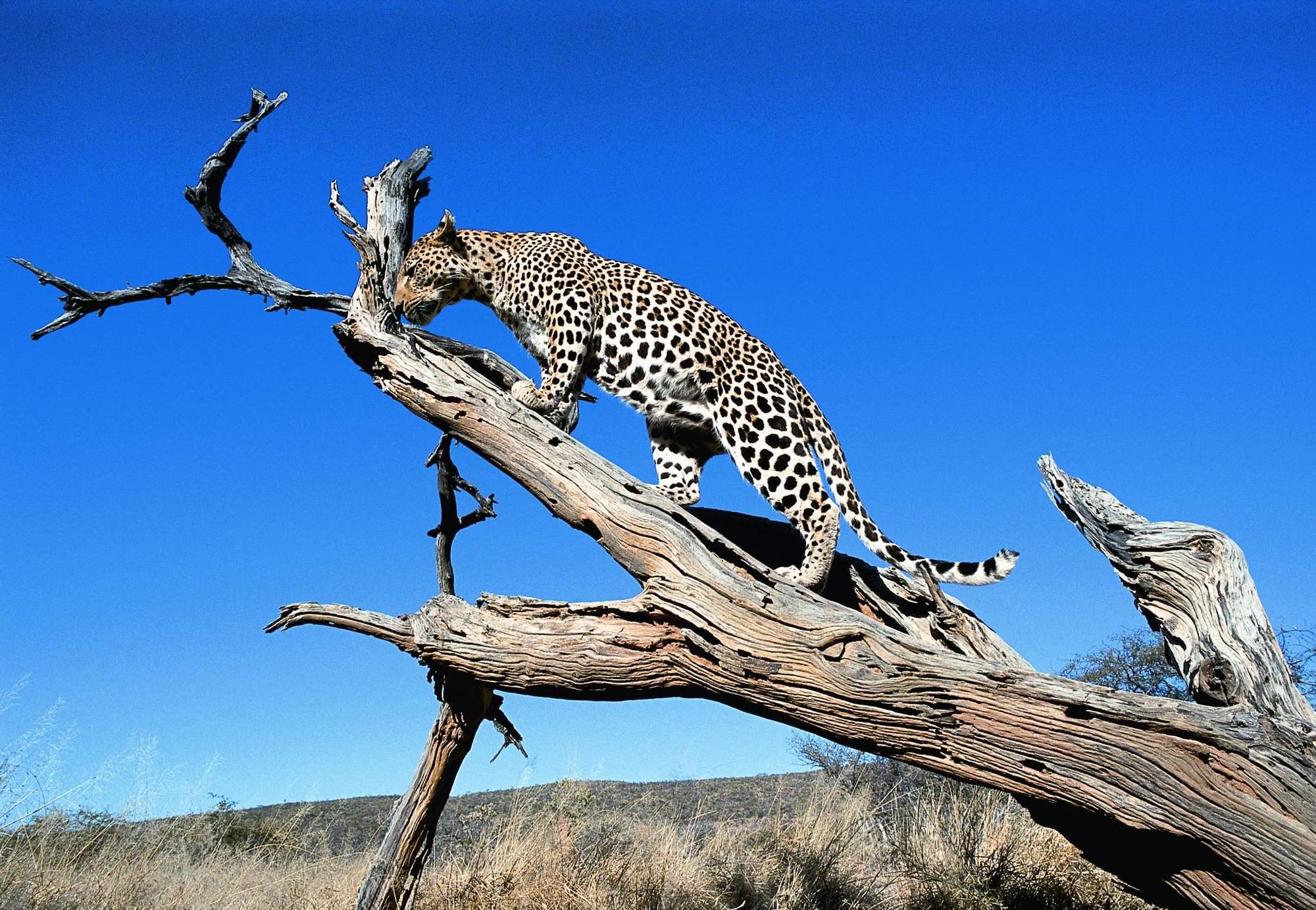
4 places to stay
Renowned for its leopard sightings, Okonjima protects and conserves a range of big cats on a private reserve between Windhoek and Etosha.
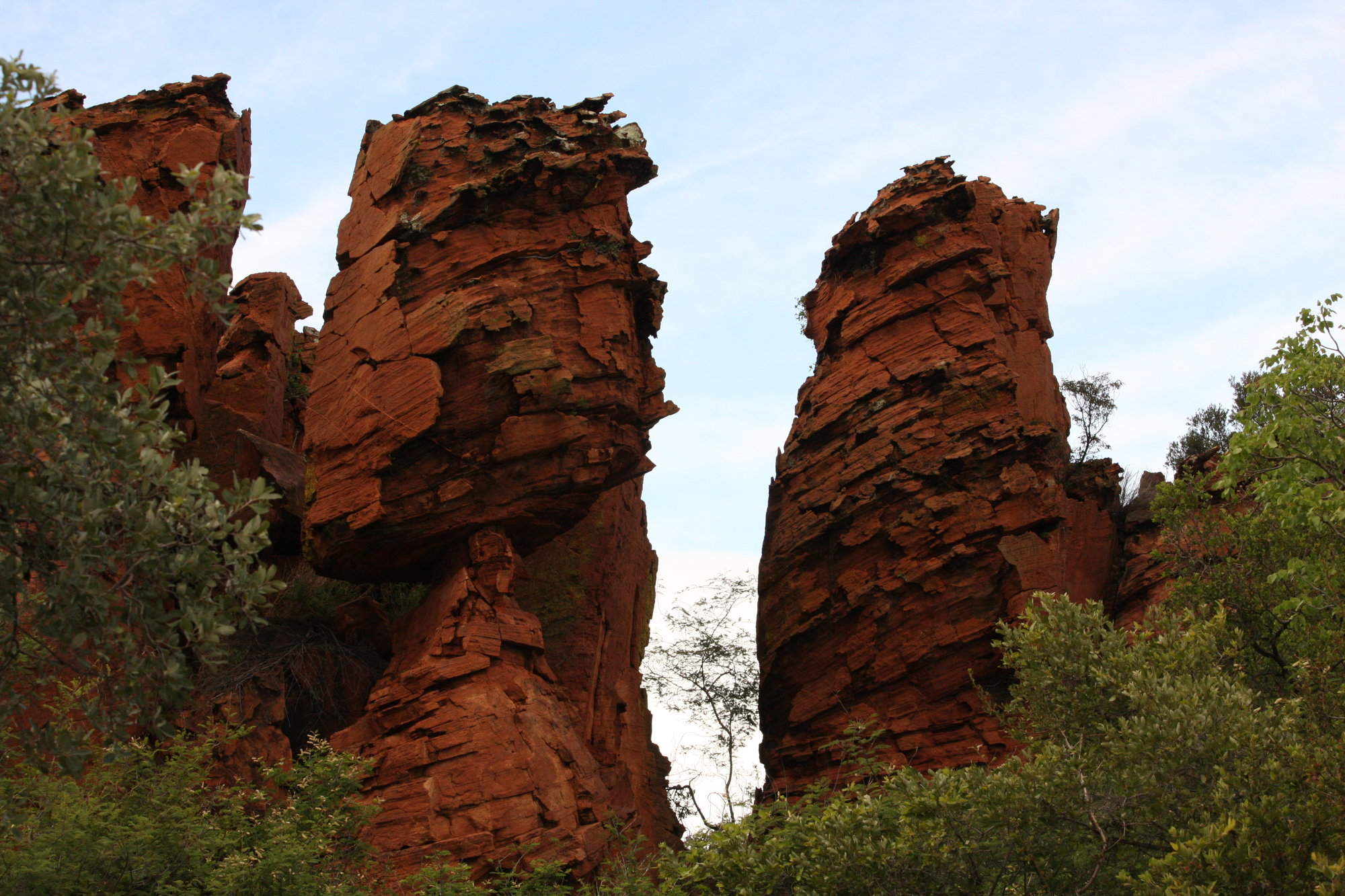
Waterberg Plateau
3 places to stay
Renowned for some of the best walking in Namibia, Waterberg is one of the country’s smallest, yet most intriguing national parks.
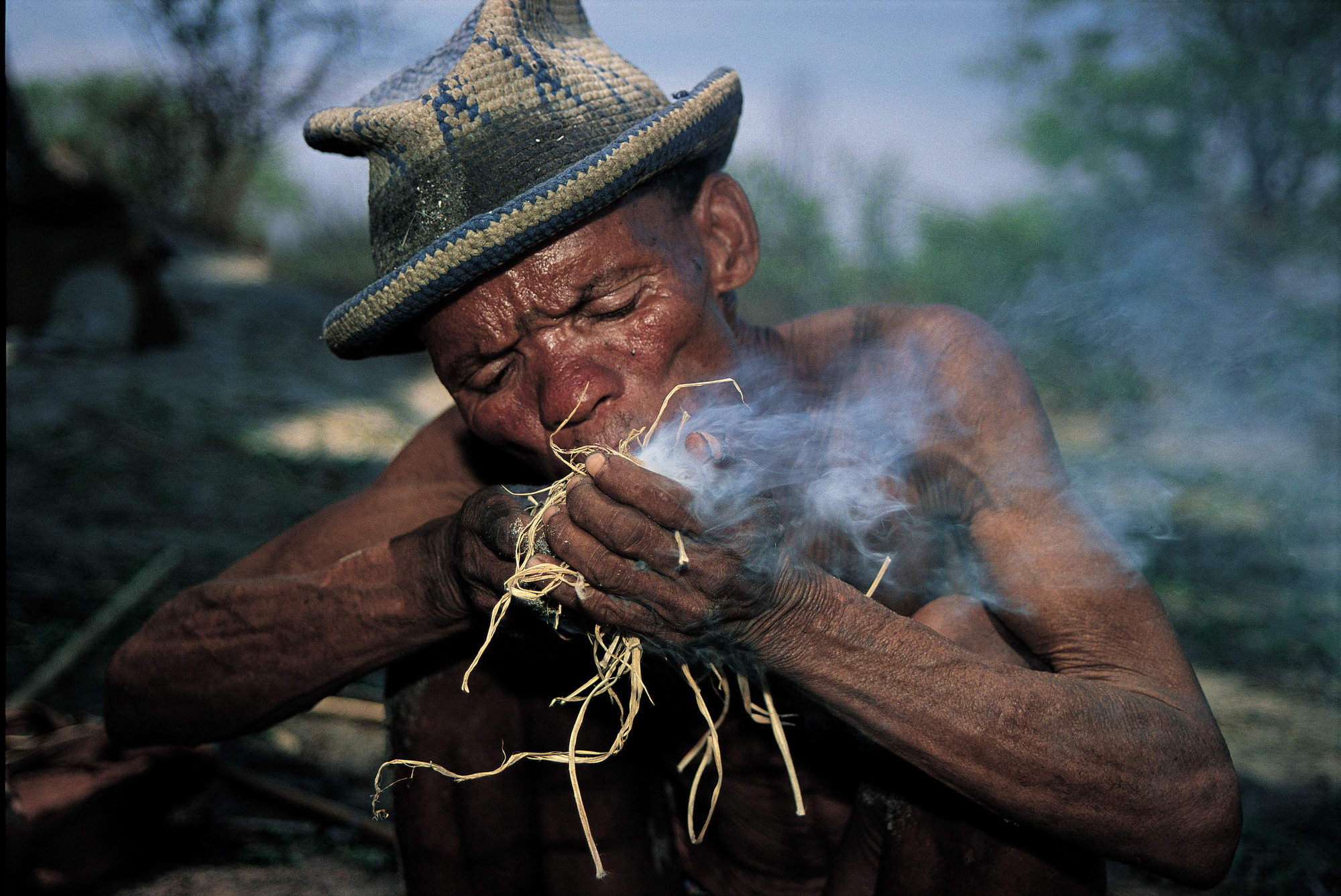
Bushmanland
1 places to stay
Remote and seemingly endless, the Kalahari sand-sheet that covers north-eastern Namibia offers a remarkable opportunity to immerse yourself in Bushman culture.
Ten best safari holidays to Namibia
All our trips to Namibia are tailor-made, based around how you wish to travel, but here are ten of the most popular options – out of the 23 Namibia safari holidays on this website.
Most Namibia holidays are self-drive trips. This isn’t intrepid exploration; we’ll plan the trip with you and arrange a car, detailed maps and all the information that you’ll need to explore at your own pace. Look for trips named self-drive safaris below.
A fly-in safari is great for those with limited time, or who don’t want to drive, giving a magical perspective on the country’s dramatic landscapes. Look for trips named fly-in safaris below.
If you don’t want to drive yourself, consider on of our guided safaris below. On these you’ll be driven around the country, gleaning real insights from your private guide along the way. These fascinating and very flexible trips can be as wild as you want – talk to us about designing one just for you.
Below are examples of some great Namibia holidays; contact us to help you plan your own.
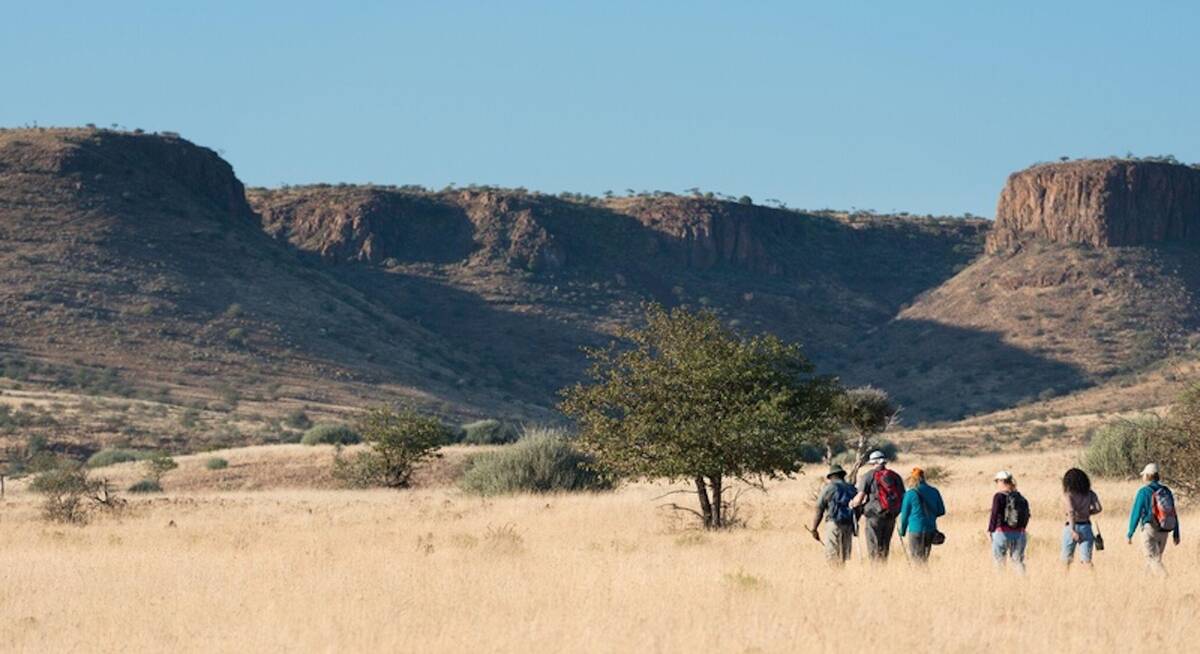
Chongololo Self-drive Safari
21 days • 11 locations WINDHOEK AIRPORT TO WINDHOEK AIRPORT
This self-drive safari focuses on the best walking experiences in Namibia. Get your boots ready for the apricot dunes of the Namib Desert and the ancient hills of Damaraland.
US$5,860 - US$7,280 per person
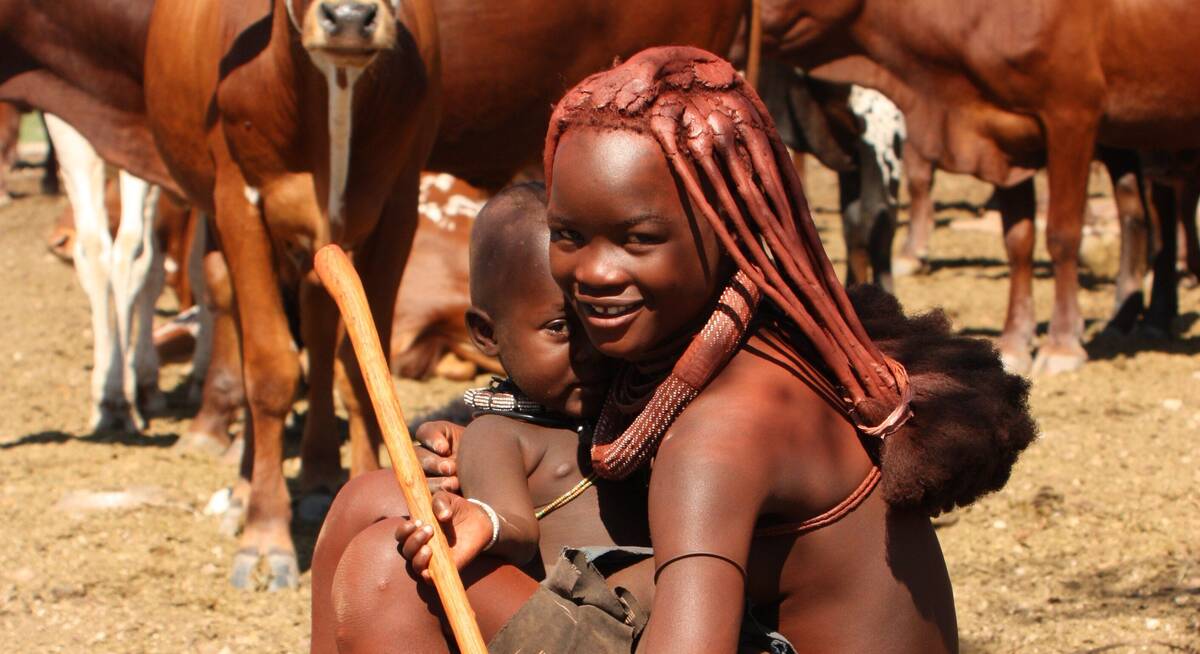
Hartebeest Self-drive Safari
16 days • 8 locations WINDHOEK AIRPORT TO WINDHOEK AIRPORT
This self-drive safari focuses on the best cultural experiences in Namibia. Visit a Himba village and enjoy three days living with the San Bushmen interspersed with some excellent wildlife watching.
US$3,420 - US$4,200 per person
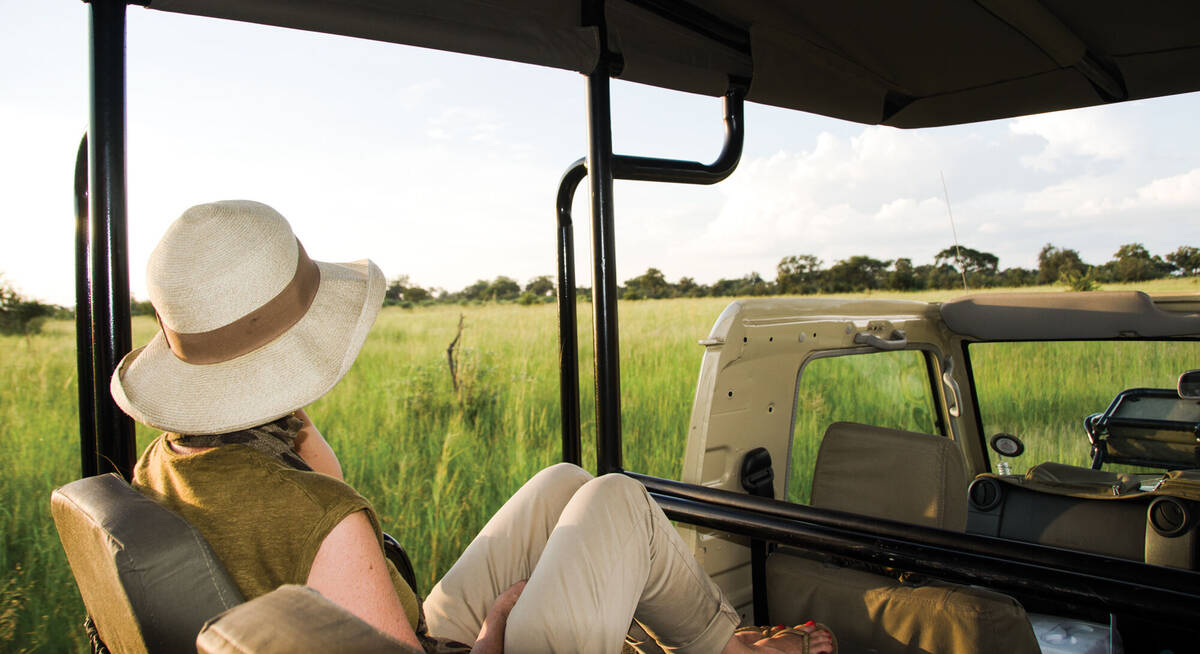
Rock Hare Self-drive Safari
20 days • 12 locations WINDHOEK AIRPORT TO VICTORIA FALLS AIRPORT
An in-depth look at Namibia from the Namib Desert to the Caprivi, with additional stops in Botswana and Victoria Falls. This three-week adventure includes an unrivalled mix of environments and is great value.
US$5,120 - US$7,300 per person
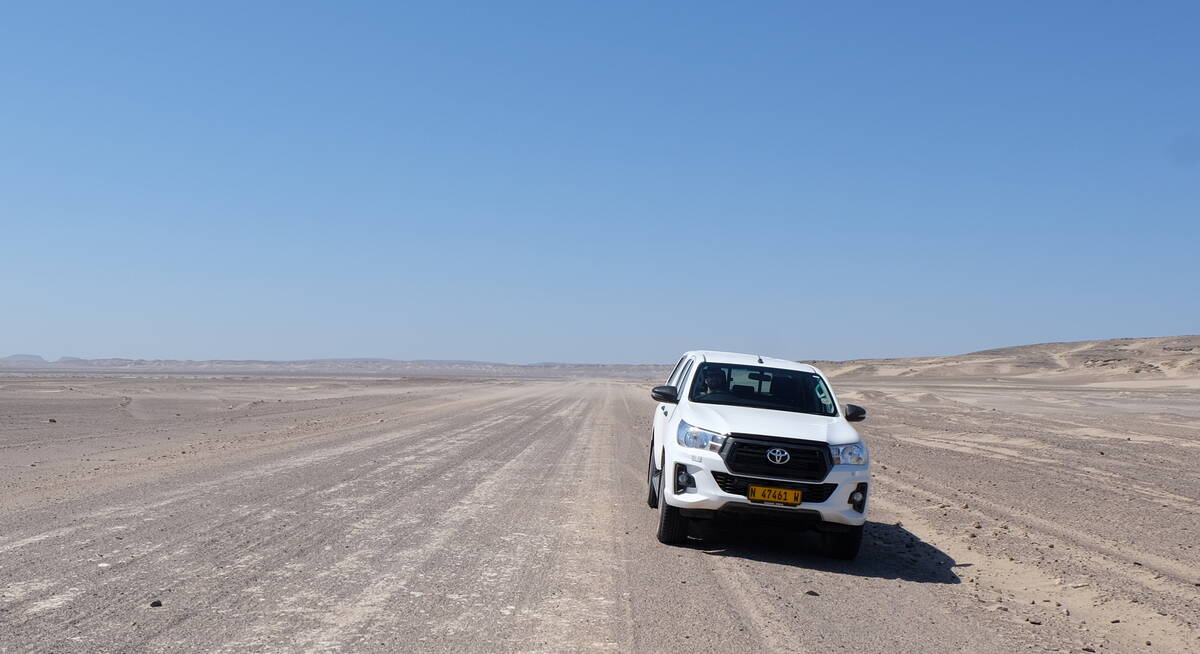
Caracal Self-drive Safari
14 days • 8 locations WINDHOEK AIRPORT TO WINDHOEK AIRPORT
The quintessential Namibian self-drive adventure exploring the highlights from Sossusvlei and the Namib Desert to Damaraland’s wilderness and a safari in Etosha. A great mix of accommodation and excellent value.
US$2,330 - US$3,930 per person
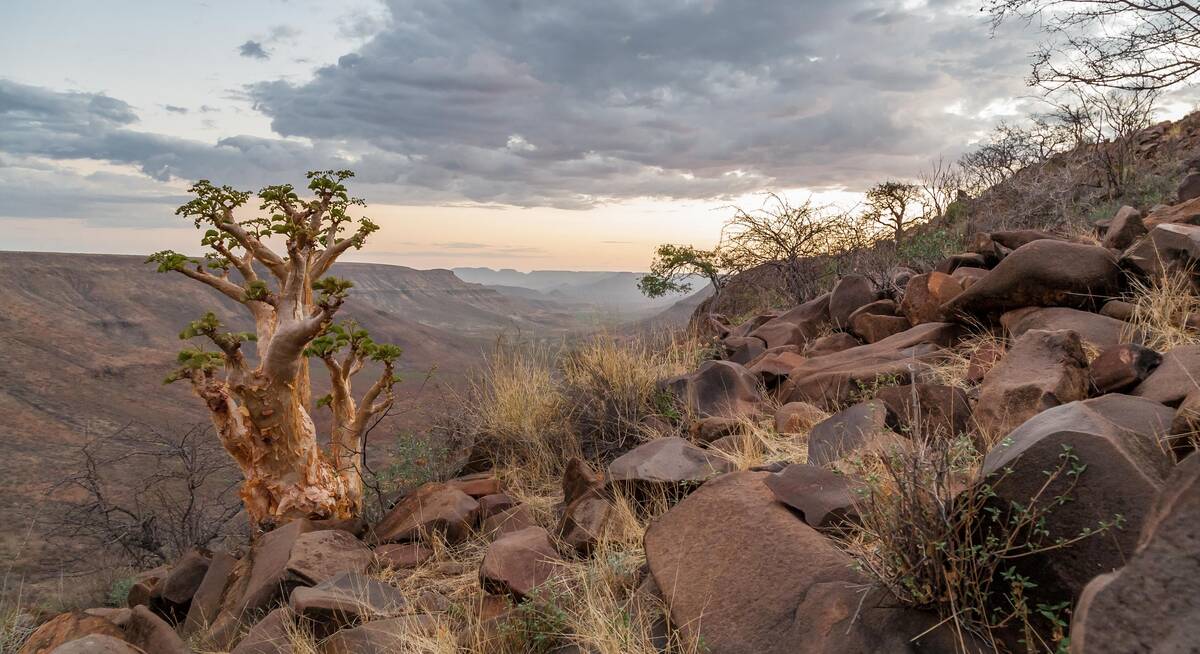
Dune Lark Fly & Drive Safari
A combination fly-in self-drive exploration of Namibia, with quick, easy and scenic flights in and out of Sossusvlei before a classic road trip adventure of the country’s rugged north.
US$4,410 - US$5,660 per person
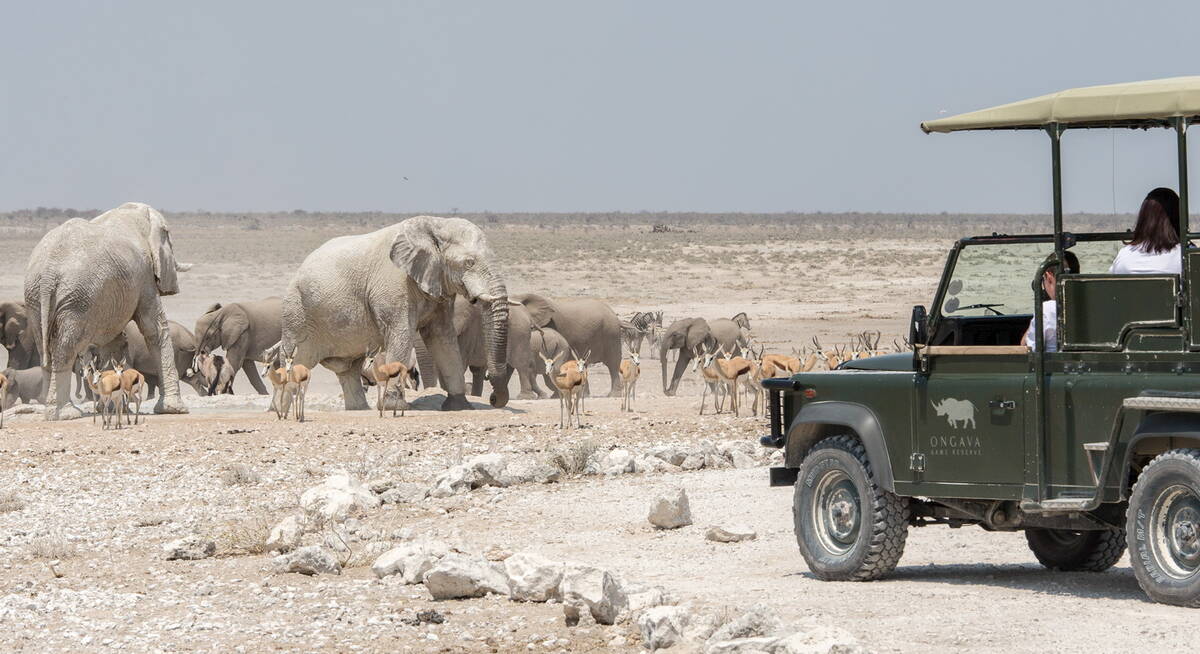
Brown Hyena Self-drive
The perfect trip for those who want to mix the adventure and freedom of a self-drive with some of our favourite luxury camps in Namibia and a great mix of activities.
US$6,020 - US$7,690 per person
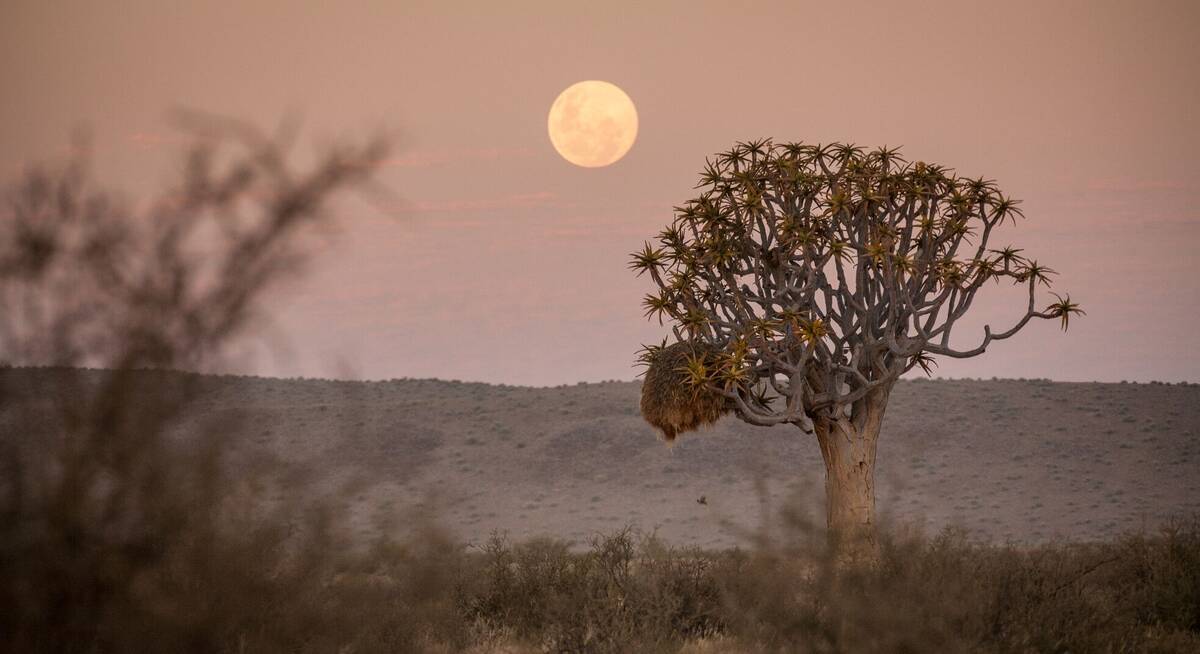
Quiver Tree Self-drive Safari
14 days • 7 locations WINDHOEK AIRPORT TO WINDHOEK AIRPORT
An offbeat Namibian self-drive adventure exploring the epic Fish River Canyon and fascinating Kolmanskop ghost town in the south, before turning north via the classic highlights of Sossusvlei, Swakopmund and Damaraland.
US$2,310 - US$3,190 per person
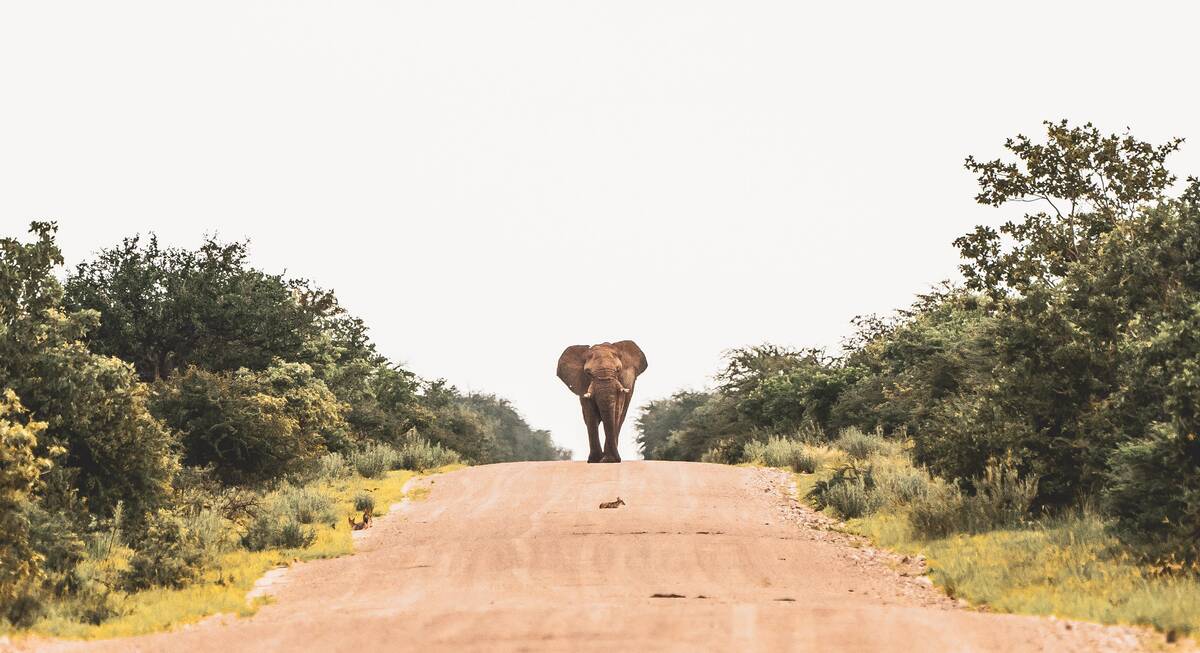
Black Wildebeest Self-drive Safari
19 days • 10 locations CAPE TOWN AIRPORT TO WINDHOEK AIRPORT
Journey from South Africa’s cosmopolitan Cape Town to central Namibia’s Okonjima Nature Reserve during this self-driven safari. The route passes through a stunning variety of landscapes, offering access to this beautiful continent’s rich diversity.
US$3,210 - US$3,690 per person
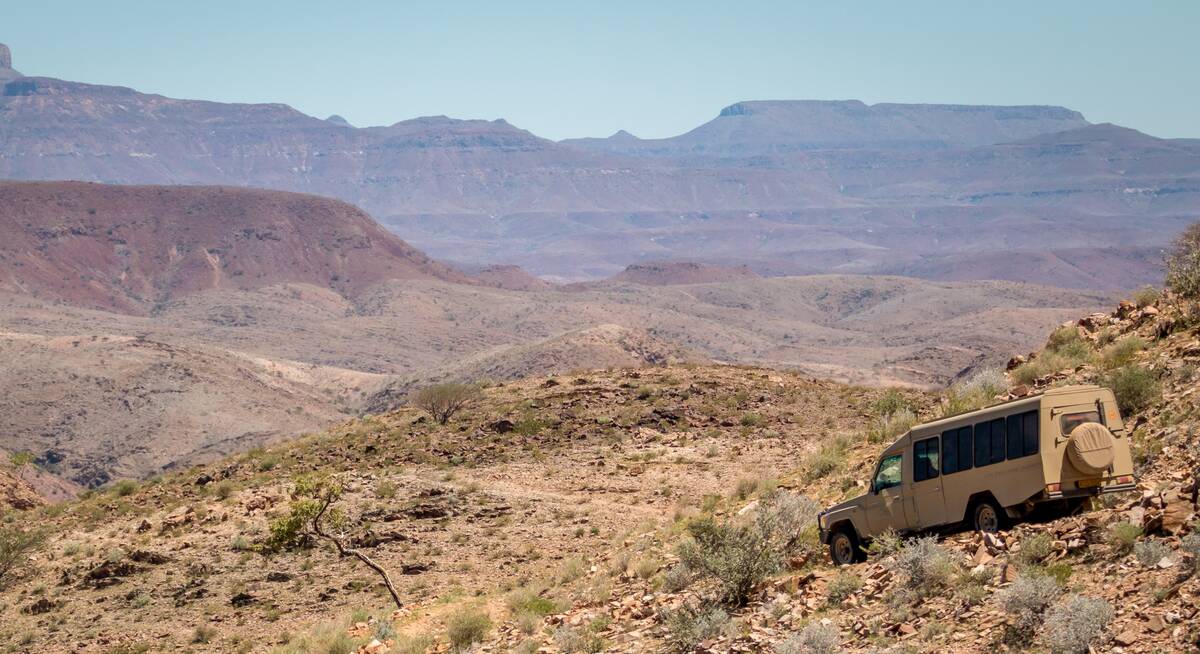
Cape Fox Guided Safari
13 days • 7 locations WINDHOEK AIRPORT TO WINDHOEK AIRPORT
A classic clockwise circuit around Namibia’s northern highlights with a private guide and vehicle. We can’t think of a better way to see more in this timeframe.
US$8,160 - US$10,400 per person
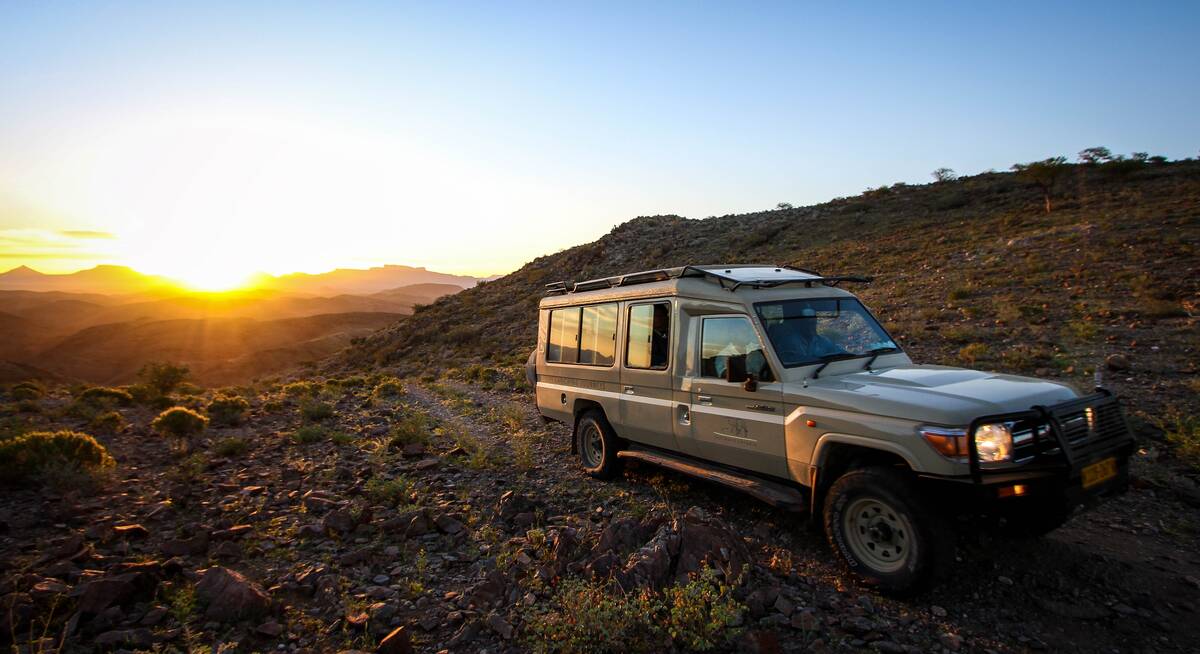
Black-faced Impala Guided Safari
13 days • 6 locations WINDHOEK AIRPORT TO WINDHOEK AIRPORT
A unique mix of luxury and adventure in our original, and perhaps most varied, destination on a privately guided Namibian overland safari. Perfect for families, friends or couples travelling together.
US$4,750 - US$6,250 per person
View all holidays
Our travellers' 10 most recent Namibia holidays reviews
At Expert Africa, the feedback we receive from our travellers is invaluable.
It helps us to stay up to date with the latest developments, which in turn helps our travellers to plan their trips; it even helps us to understand our travellers better. It’s also very important to our partners running lodges and safari camps across Namibia, who appreciate such genuine and constructive feedback.
All our Namibia holiday reviews are published in full without us editing them. See all 1611 reviews of Namibia safaris holidays here , or click on a card below to read one of the most recent reviews in full.
Arrived 10 Feb 2024, 33 nights
"My Feb 2024 trip"
Overall rating: Excellent
Arrived 14 Mar 2024, 9 nights
"My Mar 2024 trip"
Arrived 7 Feb 2024, 17 nights
"This was truly very special!"
Arrived 29 Sep 2022, 22 nights
"My Sep 2022 trip"
Arrived 15 Dec 2023, 23 nights
"My Dec 2023 trip"
Arrived 13 Jan 2024, 13 nights
"My Jan 2024 trip"
Arrived 11 Dec 2023, 13 nights
Arrived 11 Nov 2023, 35 nights
"My Nov 2023 trip"
Arrived 23 Nov 2023, 13 nights
Arrived 7 Nov 2023, 13 nights
Overall rating: Good
See all Namibia reviews
Our travellers' wildlife sightings across Namibia
While they are in Namibia, many of our travellers record their wildlife sightings for us – from big cats and elephants to black rhino and brown hyena – and kindly share these with us when they are home. Citizen science in action!
Their feedback gives us a unique picture of the distribution of various species, so we in turn can tell other travellers their best chances spotting individual species during a Namibian safari. ( Read how this wildlife survey works. ) The percentages below give just an “average” percentage of the likelihood of a safari visitor seeing each species in Namibia.
For full details of sightings at individual camps and lodges, our species-by-species interactive map shows the best locations for wildlife viewing in Namibia .
83% success
81% success
70% success
69% success
68% success
56% success
52% success
50% success
48% success
47% success
22% success
19% success
18% success
17% success
16% success
13% success
Where to find Namibia’s key wildlife species
Our travellers’ feedback on their wildlife sightings helps us to work out the best camps and lodges to see Namibia’s key wildlife species.
Whether you’re driven by spotting a cheetah in Namibia in Namibia, or your must-see animal is a desert-adapted elephant , we can help. Take a look at our data-driven maps , which show the best places to actually see each species within Namibia’s extraordinary diverse range of habitats.
For a specific data-driven map of the best camps and lodges for sightings of a particular species, click on a card:
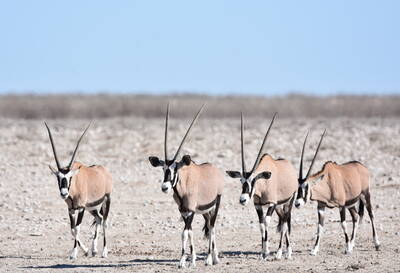
Oryx are impressive antelopes, with a powerful physique and elegant markings set off by rapier-like horns. They cut a distinctive dash in some of Africa’s harshest landscapes.
70% SUCCESS
1,280 sightings from 1,839 observations
Where to see oryx in Namibia
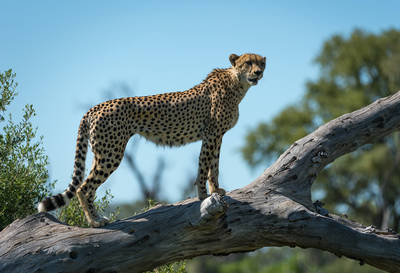
Acinonyx jubatus
The cheetah is the fastest land animal and the only cat that hunts by pure speed. Found largely in open grasslands, its slim, elegant form is today an increasingly rare sight.
33% SUCCESS
1,028 sightings from 3,085 observations
Where to see cheetah in Namibia
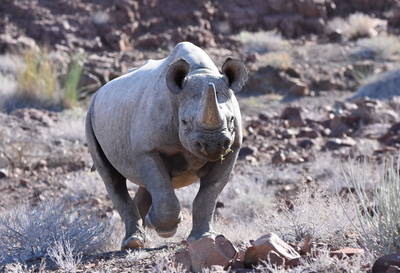
Black Rhino
Diceros bicornis
The black rhino is the smaller and rarer of Africa’s two rhino species but has the more fearsome reputation. Shy and heavily persecuted, it tends to stick to cover.
31% SUCCESS
615 sightings from 1,995 observations
Where to see black rhino in Namibia
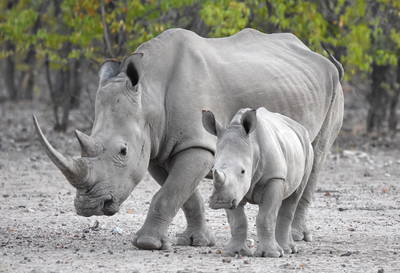
White Rhino
Ceratotherium simum
The white rhino is the largest and most numerous of the world’s five rhinoceros species. They are larger, easier to see and generally more approachable than the black rhino.
44% SUCCESS
481 sightings from 1,090 observations
Where to see white rhino in Namibia
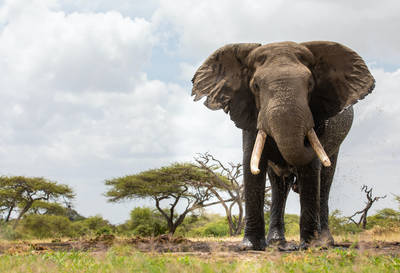
Loxodonta africana
By far the biggest of the so-called Big Five – indeed, the largest land animal on the planet – the elephant shapes the very landscape it inhabits and is a defining presence on any safari.
91% SUCCESS
3,537 sightings from 3,891 observations
Where to see elephant in Namibia
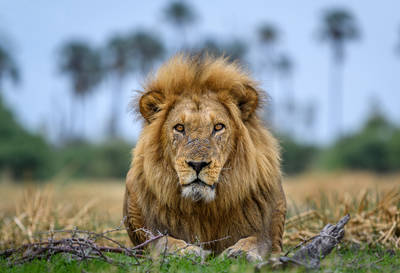
Panthera leo
Lions are at the top of the food chain and also most safari wish-lists, but with their numbers falling fast, any encounter with these majestic apex predators always feels like a privilege.
81% SUCCESS
2,964 sightings from 3,641 observations
Where to see lion in Namibia
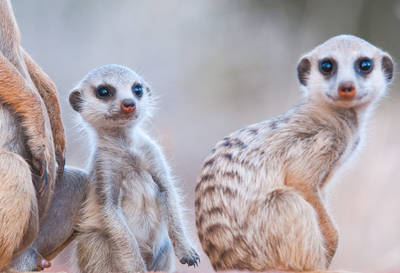
Suricata suricatta
These highly sociable little mammals have an endearing appearance and comical antics. Found in the drier areas of Southern Africa, close encounters are a sought-after experience.
22% SUCCESS
85 sightings from 395 observations
Where to see meerkat in Namibia
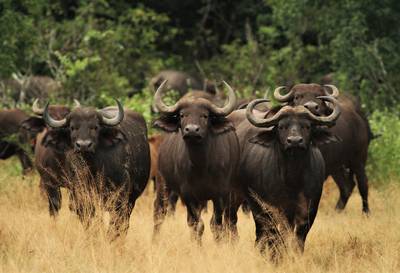
Syncerus caffer
One of the ‘Big Five’, buffalo earned a fearsome reputation in hunters’ tales. By contrast, big herds of these sociable bovids are placid, but mount formidable defences against predators.
83% SUCCESS
2,504 sightings from 3,021 observations
Where to see buffalo in Namibia
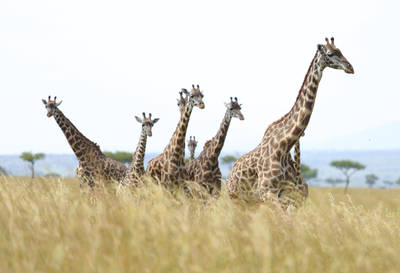
Giraffa camelopardalis
The world’s tallest land mammal, giraffes are herbivores which have evolved many unique adaptations. Their iconic outlines tower above the bush in many of Africa’s wildlife areas.
86% SUCCESS
3,413 sightings from 3,953 observations
Where to see giraffe in Namibia
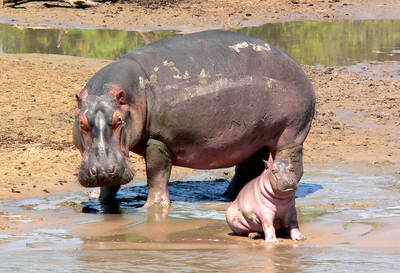
Hippopotamus amphibius
The territorial calls of the hippo create a signature soundtrack to Africa’s rivers & wetlands. Despite an endearing smile, this aquatic herbivore has a notoriously aggressive disposition.
89% SUCCESS
2,591 sightings from 2,910 observations
Where to see hippo in Namibia
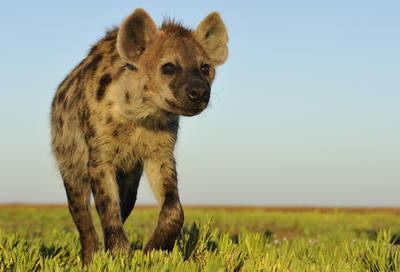
Spotted Hyena
Crocuta crocuta
The spotted hyena may be thought of as ‘ugly’ and ‘cowardly’. In fact, this versatile and intelligent carnivore is one of Africa’s most fascinating and warrants attention on any safari.
55% SUCCESS
2,127 sightings from 3,841 observations
Where to see spotted hyena in Namibia
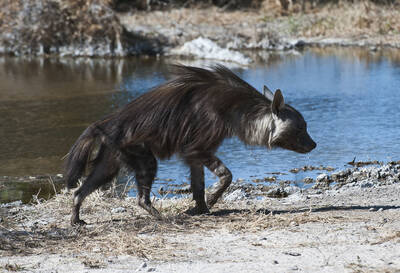
Brown Hyena
Parahyaena brunnea
This largely solitary scavenger is one of the more elusive and little-known of Africa’s carnivores. Shaggier than its spotted cousin, it occurs only in the arid southwest of the continent.
16% SUCCESS
239 sightings from 1,453 observations
Where to see brown hyena in Namibia
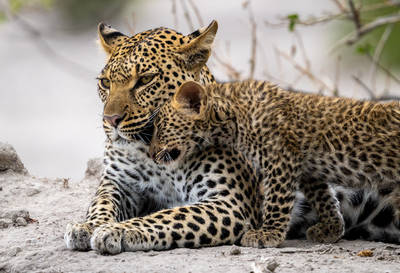
Panthera pardus
The most numerous of Africa’s big cats, leopard occur across many habitats, from wild tracts to populated areas. Their grace and their elusive nature make them a unique safari drawcard.
47% SUCCESS
1,889 sightings from 4,029 observations
Where to see leopard in Namibia
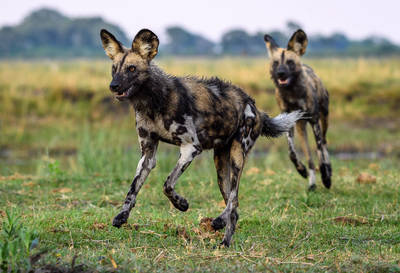
Lycaon pictus
African wild dogs are among the continent’s most compelling animals. Much misunderstood, these rare, tie-dyed canids are amazingly efficient hunters with a fascinating social life.
843 sightings from 2,707 observations
Where to see wild dog in Namibia
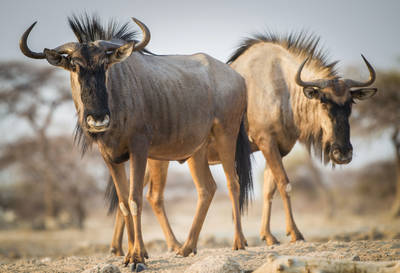
Connochaetes sp.
Superficially bovine in appearance, wildebeests are known for their spectacular migrations sometimes in huge numbers. These resilient animals are some of Africa’s most successful herbivores.
68% SUCCESS
2,411 sightings from 3,557 observations
Where to see wildebeest in Namibia
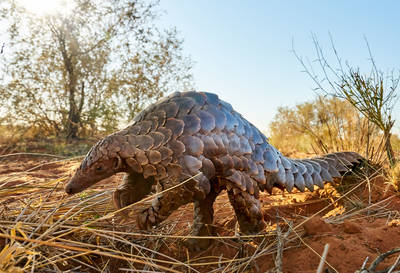
Smutsia sp.
Pangolins appear to be more pine cone than animal in their unique armoury of scales. These nocturnal, ant-eating oddities are not only highly elusive but also increasingly rare.
54 sightings from 3,238 observations
Where to see pangolin in Namibia
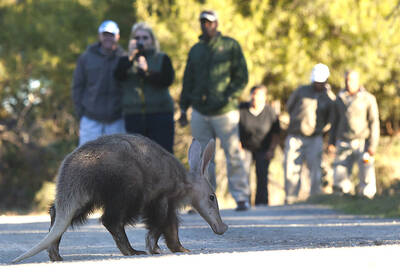
Orycteropus afer
The aardvark is one of Africa’s most bizarre and enigmatic animals. A shy, nocturnal termite-eater, signs of its presence may be scattered about the bush whilst sightings remain elusive.
67 sightings from 3,241 observations
Where to see aardvark in Namibia
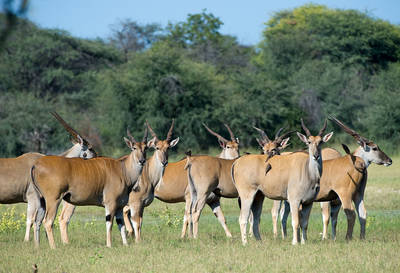
Taurotragus oryx
Africa’s largest antelope, eland are culturally important from prehistoric rock art to modern game farms. Though widespread, they are also shy so sightings are uncommon and often fleeting.
49% SUCCESS
1,438 sightings from 2,916 observations
Where to see eland in Namibia
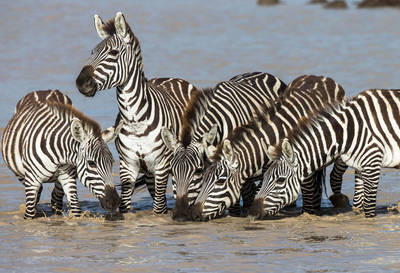
The zebra is a quintessential African animal: the horse in stripy pyjamas at the end of every child’s A–Z. There are three species, of which the plains zebra is much the most common.
84% SUCCESS
3,723 sightings from 4,412 observations
Where to see zebra in Namibia
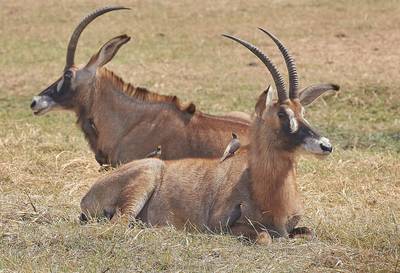
Roan antelope
Hippotragus equinus
Africa’s second largest antelope and one of its most handsome, with a powerful build and distinctive markings, roan are wary of people, but renowned for their bravery against predators.
23% SUCCESS
458 sightings from 1,965 observations
Where to see roan antelope in Namibia
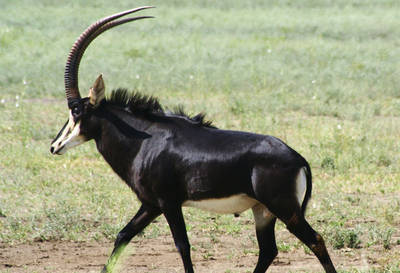
Sable antelope
Hippotragus niger
Perhaps Africa’s most beautiful antelope, sable are renowned for their combative nature, even holding off lions. Shy and restricted in range, sightings of sable are always special.
436 sightings from 1,954 observations
Where to see sable antelope in Namibia
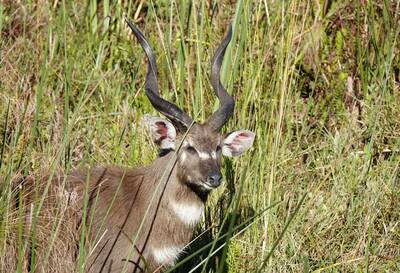
Tragelaphus spekii
The sitatunga is the most aquatic of Africa’s antelopes and specially adapted to its swampy habitats. Though widespread across Africa, only a handful of places offer reliable sightings.
19% SUCCESS
60 sightings from 317 observations
Where to see sitatunga in Namibia
When to go on a Namibia holiday
Key to planning any holiday to Namibia – from an adventurous road trip to a top-notch guided safari – is weather.
The good news is that there’s no “wrong” time to visit Namibia: the climate is generally dry and pleasant. Temperatures are typically warm or hot during the day, although in desert areas between June and August they may fall below freezing at night. Rainfall is fractional along the coastal fringes, whereas further east it tends to fall largely between November and March – often in the form of short, sharp thunderstorms.
For wildlife watching, especially in Etosha , April to October are the best months, when animals are drawn to the park’s perennial water sources. Prices tend to peak in July and August. Conversely, the wetter season is cheaper, less crowded – and an excellent time for birders. Click on the months below; and see here for historic rainfall and temperatures in Namibia .
Namibia in January
January is at the heart of Namibia’s rainy season. However, as you’d expect from a country dominated by desert and semi-desert environments, the rains are often (but not always) weak and usually quite localised. Some days will be clear, the strong sun raising temperatures to around 30ºC/86ºF; on others humidity and clouds build, sometimes culminating in spectacular thunderstorms. In extreme cases, these generate flash-floods which race down the beds of ephemeral rivers. Across the country, the greening landscape makes a refreshing change, especially in desert areas. Many birds are in full breeding plumage and migrant species are here in force. In the north, where the rains are more reliable, the abundant water and food allows wildlife to disperse, making it trickier to spot.
- Variable weather: clear, hot & dry, or cloudy & humid with some rain
- Occasional, highly localised thunderstorms
- Many animals with young; birdlife at its most spectacular
- Wildlife dispersed & harder to see, especially in Etosha & the Caprivi
- Very few tourists (apart from the New Year) so rates mostly low
This is not a great time to visit
Weather in January
Namibia in February
February is the wettest month, but as Namibia is dominated by deserts, the rains are often weak and patchy. The variation in weather across Namibia is significant, too; the central highlands and Caprivi can see some heavy rain. More typically, some February days are clear with a hot, strong sun; others are cooler as cloudy skies build and, sometimes, culminate in short, spectacular thunderstorms. Occasionally these generate flash-floods, bringing ephemeral rivers to life and making travel more challenging. Across the country, the landscape feels green and alive; insects and smaller animals are more easily seen, and many birds and animals are raising their young. However, small pools in the bush and thicker vegetation can make it hard to spot the wildlife.
- Variable weather: clear, hot & dry or cloudy & humid with some rain
- Occasional localised thunderstorms meander over the landscape
- The bush feels alive; birdlife is at its most spectacular
- Wildlife in Etosha & Caprivi is dispersed & harder to see
- Few tourists, so rates usually at their lowest
Weather in February
Namibia in March
March usually sees Namibia’s main rains tailing off, although actual precipitation varies hugely across the country and can be unpredictable from day to day. Many days will be clear, with a strong sun driving temperatures up. On others, clouds will build, and the late afternoon may see a short, spectacular thunderstorm. Such deluges reduce in both frequency and volume as the month progresses. Across the country, landscapes are often vivid: a “green and pleasant land”. Many birds and animals are finishing raising their young, so smaller animals and insects are in evidence. In the north, where rains are generally heavier, pools in the bush and thicker vegetation can make it difficult to spot larger animals.
- Afternoon thunderstorms less common as March progresses
- Animals looking sleek and well-fed, after 3–4 months of plenty
- Few tourists visit during March, so rates often low
A good time to visit, with pros & cons
Weather in March
Namibia in April
Typically, April is dominated by dry weather; there’s an ever-decreasing chance of rain. Temperatures are now below their peak and continue to fall. Even so, days remain pleasant and warm, but there might be a slight chill in the air at night. The rains usually leave many parts of the country verdant and green, so animals are in fantastic condition – often with fast-growing young in attendance. With the dust washed out of the atmosphere, photographers make the most of clear air, spectacular landscapes and healthy animals. Stargazers will have clearer night skies as the month progresses. In the game parks of Northern Namibia, water and food remain in plentiful supply, so finding big game can prove trickier than later in the year.
- Becoming drier &, especially at night, also cooler
- Few visitors, except around Easter, so rates remain low
- Wildlife in Etosha & Caprivi remains relatively hard to see
- Migrant birds have started to leave
- Fresh, clean air and often green, verdant landscapes
Weather in April
Namibia in May
By May, Namibia is usually drying out fast as the rains have ended. If they’ve been good, then the land remains green, but wildlife starts to congregate at more permanent water sources. Over much of the country the air quality and clarity can be amazing, making this an ideal month for photography. Typical days are warm, with crisp, clear mornings and clear blue skies. Evenings are usually cool, and temperatures may dip below 10ºC (50ºF) overnight. Many lodges still charge “low season” prices, although with Namibia’s increasing popularity in recent years, some have started to introduce higher “shoulder season” rates. May’s good-value rates, increasingly good wildlife sightings, beautiful landscapes and crystal-clear air combine to make this one of our favourite months in Namibia.
- Lovely weather: dry, warm days & cool nights
- The country is drying out although many landscapes remain green
- Fantastic air clarity – ideal for keen photographers
- Visitor numbers are often still low, mirrored by lodge rates
- Wildlife is starting to congregate more around remaining water
A very good time to visit
Weather in May
Namibia in June
Namibia is dry again. Skies are blue and usually largely cloudless. Days are lovely: warm and dry; nights are cold, sometimes below freezing in the desert. Most swimming pools in Namibia are always outdoors, making them too cold for all except the very dedicated. Take a warm hat and gloves for game drives, where dawn and dusk will feel particularly chilly. In the north, especially Etosha, wildlife viewing is now into its dry-season pattern, focusing around the waterholes – though the park is still not busy. Photographers come for superb air clarity, with minimal dust or smoke in the air. Historically, June rates have been low. However, with Namibia’s increasing popularity many lodges now count it amongst their “high-season” months, and request higher prices.
- Clear, bright days with blue skies; cold nights, mornings & evenings
- Great air quality, especially welcome for photographers
- “Shoulder season” for some lodges: lodge rates moderate
- Wildlife gravitates to waterholes, making game-viewing productive
- Some greenery in the landscape, depending on the last rains
Weather in June
Namibia in July
Reliably warm daytime temperatures (upwards of 20ºC/70ºF) and good wildlife sightings make this a popular month to visit Namibia. Rain would be very unusual indeed and clear skies make for great photographs. Once the sun sets, though, temperatures cool rapidly bringing cold nights that may dip below freezing in the desert. Be prepared: dress in layers and expect early-morning and late-afternoon drives, and anywhere coastal, to be cold. As the land dries and vegetation shrivels, game congregates beside drinking water: Etosha’s waterholes are busy with animals. Across the country, lodges charge “high season” rates; many are fully booked a year or more in advance, especially during European school holidays (from the latter half of July to late August).
- Dry days, warm in the sun, with crisp, cold nights
- Cloudless skies: July is usually superb for stargazing
- The beginning of European school holidays so more families travelling
- Peak season: so high rates and many lodges fully booked far in advance
- A fantastic time of year for wildlife watching, particularly in Etosha
Weather in July
Namibia in August
August is the height of Namibia’s “winter”. Expect cloudless skies and plenty of warm sun in the day, but nights down to freezing in the desert. Dress in layers and bring warm clothes (including hats and gloves) for chilly starts and evenings. Only the hardiest even contemplate using outdoor pools. It’s 3–4 months since any rain, so the land is dust-dry and much vegetation is golden brown. Many landscapes appear sparse and harsh. Wildlife congregates around available water sources, helping to guarantee good animal sightings. Namibia is never really “busy” by the standards of Europe or the USA, but August is the most popular time to visit, especially for families. Book early (over a year in advance) if you want to stay at the best lodges.
- Dry days, warm in the sun; cold mornings, evenings & nights
- Cloudless skies in the day; spectacular stars at night
- Busy by Namibian standards: family rooms in particular demand
Fantastic: the very best time to visit
Weather in August
Namibia in September
September is a month of blue, cloudless skies and fantastic wildlife viewing. Rain is almost unheard of. As the month progresses, the days and nights get warmer. In some areas, daily maximums hit around the low 30s Celsius, although low humidity ensures this feels comfortable. The contrast makes the nights seem very cold. The air is becoming dustier, occasionally augmented by smoke from fires – so becoming hazy for photographic purists. In the national parks, animals congregate around remaining water sources – making September one of the best months for game viewing. Hence it’s one of Namibia’s most popular months for visitors: a “high season” month that is often the time of choice for safari aficionados.
- One of the best months for wildlife viewing
- Warm days & cold nights, with temperatures rising during the month
- Many plants have faded from green to golden brown
- Air can be hazy – with dust & sometimes smoke
- High season rates; many lodges & camps are full 9 months in advance.
Weather in September
Namibia in October
Namibia is usually at its hottest and driest in October. Temperatures build as the month progresses; towards the end, daily highs may exceed 40ºC/100ºF, though with humidity close to zero, even this rarely feels oppressive. In exceptional years, isolated rain showers may fall in late October. More usually, the end of the dry season sees wildlife watching at its best, particularly in Etosha. The place feels like a desert as spectacular herds of thirsty animals gather around the available water. October is popular amongst wildlife enthusiasts and commands peak-season prices, even if dust and smoke may make the air hazy, challenging photographers. Visitor numbers can fade towards the end of the month, allowing a window for last-minute bookings.
- Probably the most spectacular month for wildlife-viewing in Etosha
- Hot and dry: much of the country feels like a desert
- The air can be hazy with dust & smoke
- It’s peak time to visit, so expect high season rates
- Lodges & camps are full, especially early in October
Weather in October
Namibia in November
November is always a bit unpredictable: sometimes dry and hot; sometimes cloudier and cooler. Typically, mornings are hot and cloudless and clouds appear in the afternoon. Humidity builds and eventually breaks, resulting in spectacular thunderstorms that bring convection rainfall in late afternoons. Such storms are typically sparsely distributed and highly local – being completely absent from desert areas, for example. Places that do get good rain will flush green, with a tangible feeling of new life softening the landscapes. Many mammals give birth to their young. Once any rains come, wildlife dissipates in search of food, and game viewing in Etosha becomes harder. Conversely, this is a great time for birdwatchers, with migrant species in breeding plumage.
- A very interesting, variable month, depending on the rains
- With rains come an amazing explosion of both vegetation & new life
- Wildlife viewing better in Damaraland than Etosha if it has rained
- Shoulder season: mid-range rates offer great value
- Away from the Namib, showers are more likely later in the month
Weather in November
Namibia in December
December is the first “proper” month of Namibia’s rainy season, and one of its hottest. Clear mornings give way to building clouds and, with luck, the occasional short, spectacular thunderstorm: refreshing and cleansing. These are often highly localised and generally warmly welcomed: most Namibians love rain! Rains clear the air of dust. Even relatively short showers enable plant life to erupt, carpeting this thirstland in green and providing food for the young animals which abound. Animals disperse widely, which can make game viewing challenging. Many birds are breeding and so sporting their most colourful plumage. Christmas and the New Year fall within local “summer holidays” – so places to stay can be surprisingly busy, especially in and around coastal towns, where temperatures are cooler.
- Hot and humid; sometimes refreshed by cooling showers
- Landscapes flushed green if/where there has been rain
- A tangible life and energy amidst this often green & pleasant land
- Very photogenic: blooming deserts amidst crystal-clear air
- Best time for birdwatchers; larger animals harder to spot
Weather in December
Country guide
A guide to visiting Namibia
Take a Namibia holiday; this is African travel at its most varied! Flying in, driving yourself, or being guided: the choice is yours.
A classic Namibian holiday might feature sunrise on top of the world's highest dunes; a day relaxing in a hot mineral spring at the foot of the world's second-deepest canyon; a wildlife safari watching lion stalk huge herds of antelope – and an evening observing wild black rhino by moonlight.
You can meet a cheetah at close quarters, stroll through a petrified forest, marvel at ancient rock paintings and see footprints as old as a dinosaur – or as fresh and close as a leopard outside your tent. Namibia is a real travel adventure, like nowhere else on earth.
Where to go in Namibia
Namibia’s key attractions are relatively undervisited, so even seeking out dense herds of big game in Etosha National Park , or taking in the show-stopping scenery of the Namib-Naukluft National Park , there’s no sense of crowds. More offbeat is Damaraland , home to black rhino, elephant and other desert-adapted animals. Then there is the vast, coastal wilderness of the Skeleton Coast , or the rugged mountains of semi-desert Kaokoland , and Bushmanland : these are Namibia at its most remote. If adventure beckons, head for Namibia’s adrenalin capital, Swakopmund , which along with duneboarding also boasts some exceptional desert excursions. Or marvel at the 500m-deep Fish River Canyon , a spectacular backdrop for hiking. And if you have time to explore further, consider the more verdant Caprivi Strip , or Zambezi Region, where you can combine a classic safari with boat trips on narrow waterways and perhaps add on a visit to Victoria Falls .
How to explore Namibia
Travel in Namibia is very easy – although how you travel is at least as crucial as where you travel. The options are largely between a self-drive road trip, a fly-in trip, and a privately guided safari – although a mix of two or even all three is certainly possible. Most popular is to drive yourself, giving you the freedom to travel where you want, at your own pace. With long, straight roads and minimal traffic, Namibia excels at self-drive trips. A fly-in safari may not be the cheapest way to visit, but flying around Namibia can be simply amazing, taking in superb scenery during flights of some 30 minutes to a few hours. Or if you fancy a road trip, but driving yourself doesn’t appeal, how about a privately guided safari – where you are driven to the places you want to go by an expert guide with an in-depth knowledge of the country and its wildlife?
Where to stay in Namibia
From luxury lodges and safari camps to personal B&Bs and simple campsites, Namibia offers the full spectrum of places to stay. Even in the most popular destinations, such as Etosha and the Namib-Naukluft , there are a range of options that will appeal to most travel preferences. The best lodges tend to have their own knowledgeable guides, who can add considerably to your enjoyment – of both the wilderness and the wildlife. You can expect a good standard of comfort and cuisine, and some may have extras such as spa facilities. Guesthouses and B&Bs are something of a specialty in Namibia. A hearty breakfast is the norm, returning to a home-cooked dinner in the evening – or, in the towns, to a selection of restaurants within easy reach. At the other end of the spectrum, camping comes into its own in Namibia’s national parks and wilderness areas – the perfect way to end the day’s adventure.
Where to see wildlife in Namibia
With its low population density and a diverse range of ecosystems inhabited by a surprising variety of wildlife, Namibia is a natural choice for a wildlife safari. Etosha National Park , the heartland of a Namibia safari, is home to elephants, lions, giraffes, rhinos and a plethora of antelope species. For hippos and crocodiles, make for the parks in the verdant Zambezi Region, at the east end of the Caprivi Strip , which also boasts exceptional birdlife, while for desert-adapted species, such as oryx, springbok and meerkats, the Namib-Naukluft National Park , Southern Namibia and Damaraland . Leopards generally inhabit rocky environments, but are most easily spotted on the Okonjima Reserve . More elusive is the brown hyena, occasionally seen looming out of the mists of the Skeleton Coast & Kaokoland . The coast also supports extensive population of Cape fur seals, along with dolphins, and even African penguins, while on the lagoons of Walvis Bay look out for flamingos and pelicans. Read more about Wildlife in Namibia – and see our data-driven maps showing where our travellers actually saw the various wildlife species.
Namibia in context: history, environment & people
Bordered to the west by the Atlantic Ocean, Namibia’s neighbours are Angola, Botswana , and South Africa . Along with the desert landscapes of the Namib and the Kalahari, the country also features sweeping tracts of savannah, rolling hills and the vast Etosha Pan . Namibia dates back to ancient times, when the San, Damara and Namaqua peoples roamed the land. During the 19th century it became a German colony until, as South-West Africa, it came under South African administration at the end of World War I. Independence for the ethnically diverse population came in 1990, with English now the official language. Afrikaans and German are also widely spoken, along with indigenous languages that include Oshiwambo, Herero and Nama. With perennial rivers only on its northern and southern boundaries, the population was traditionally based in the north but many now live in and around the coastal towns and the capital, Windhoek. For more on Namibia in context, read on.
Maps of Namibia: two styles
See Namibia in different ways, with two different styles of maps: a Google map and a curated Reference map .
Namibia is vast – and its low rainfall makes much of its geology exceptionally clear. Zoom into the areas and then the lodges on our maps for some amazing views of what the country is really like!
At this scale, note the apricot-orange in the south-west: the Namib Desert. Then double-click a few times to zoom in closer – and see the extraordinary patterns of the dunes themselves. Then look at the sharp, curved northern edge of the desert, where the Kuiseb River halts the march of the dunes northwards.
Double-click near “Etosha National Park”, and immediately you’ll spot the huge saltpan at the heart of Etosha.
Click onto any of the markers, and follow the links in the bubbles, for maps of these areas with precise locations for the various safari camps and lodges.
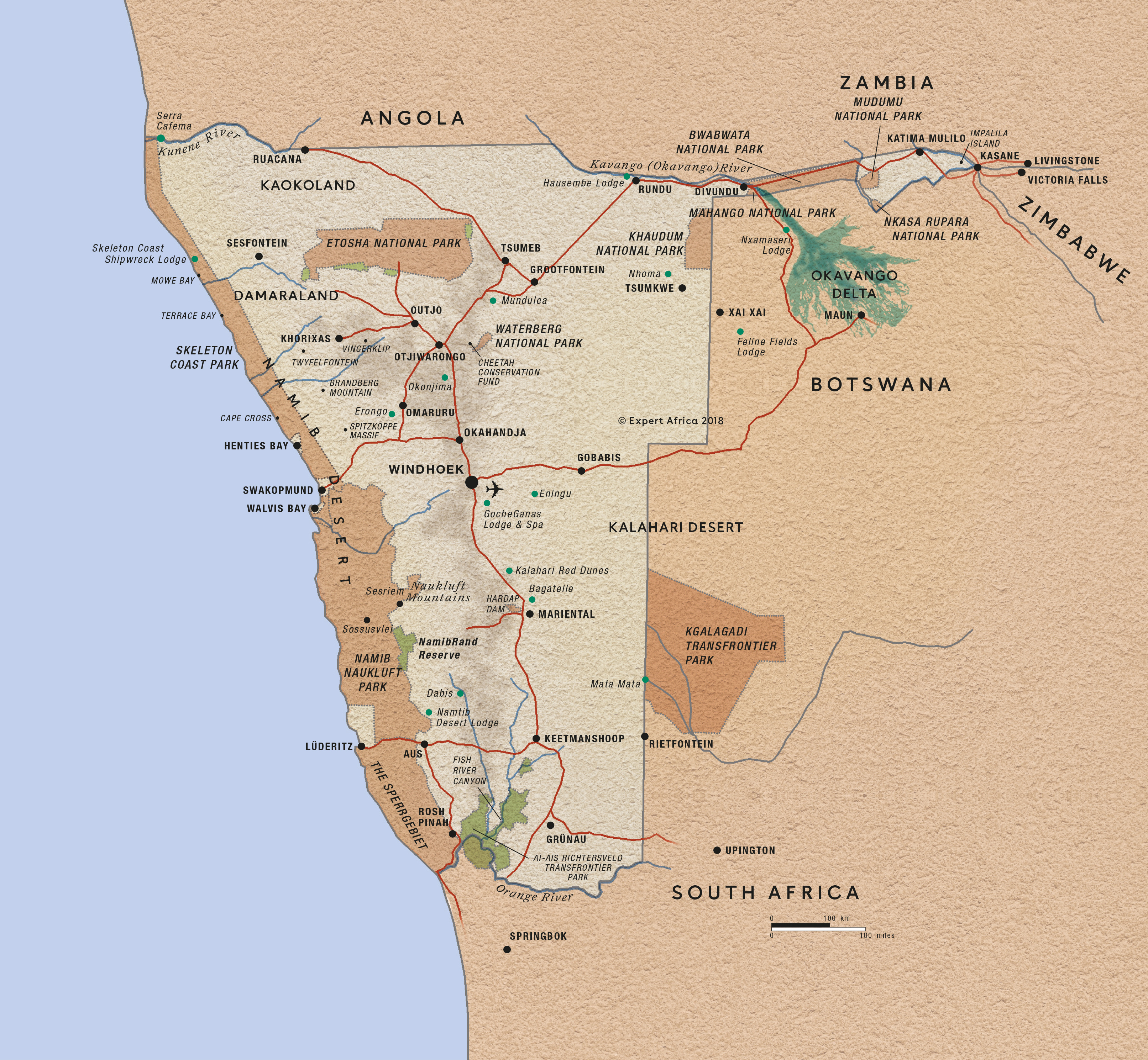
Need inspiration?
Let our trip chooser narrow down the options for you
Understanding more about travel in Namibia
Arguably the key factor involved in a Namibia holiday is how you travel: driving yourself, flying around, or with a private guide.
The way in which you choose to travel will also be affected by your time, your budget, and your personal interests. So those on a relatively low budget with an adventurous streak and plenty of time on their hands are likely to seek an entirely different style of holiday from the time-poor traveller seeking a luxury getaway-from-it-all vacation.
For a road trip without the hands-on commitment to driving, a privately guided safari may fit the bill. And for some travellers, a combination of two or even all of these choices may work the best.
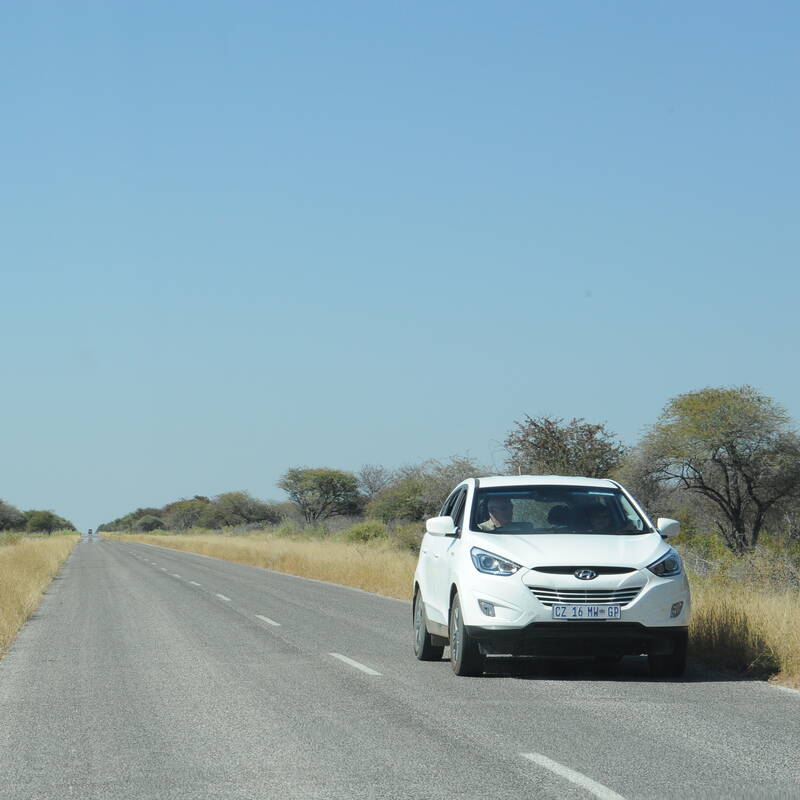
Self-drive - car types
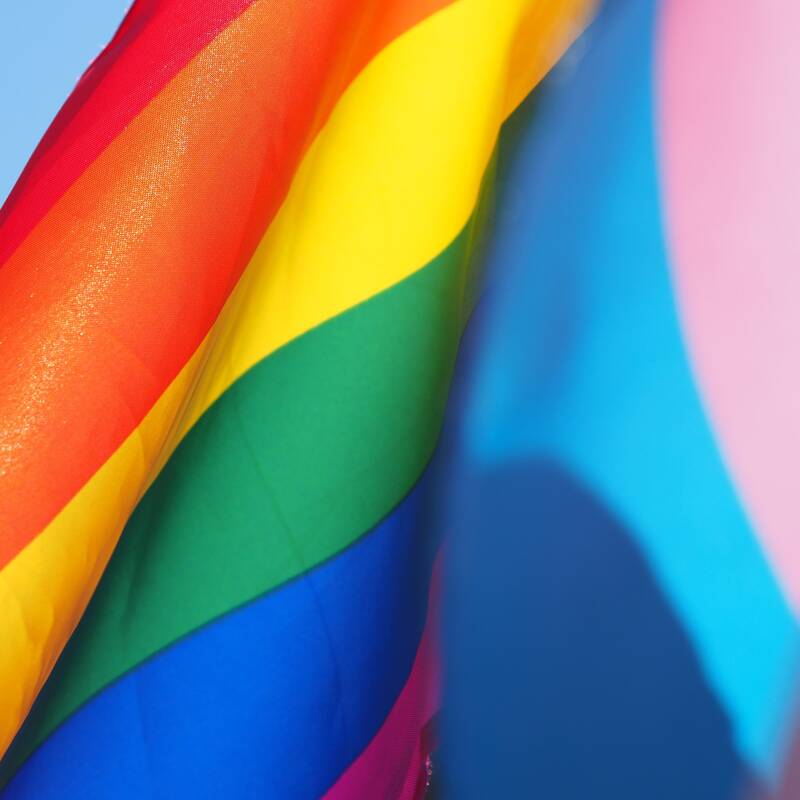
LGBT travel in Namibia
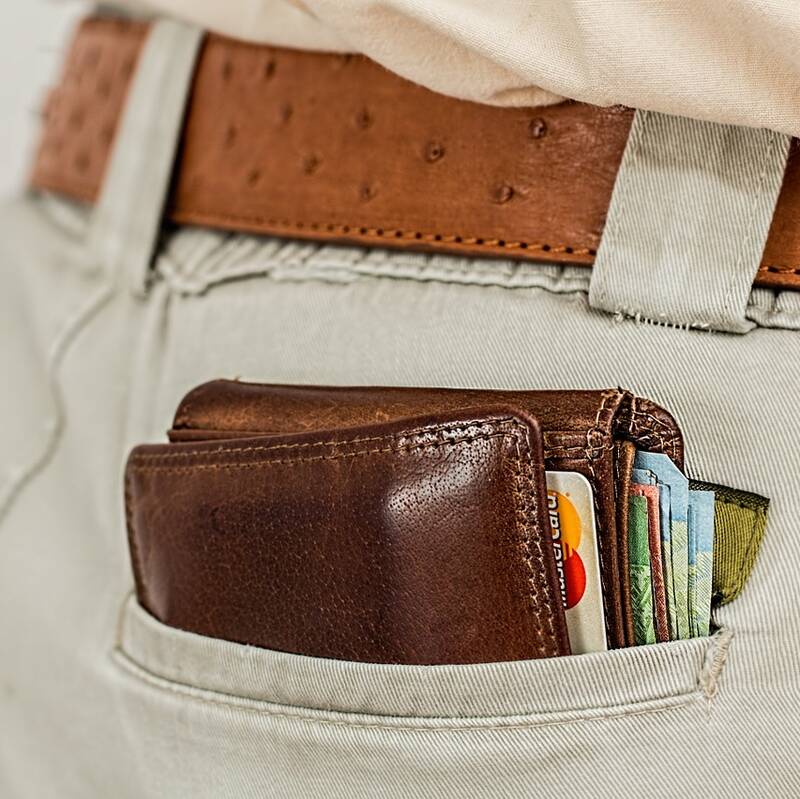
Tipping in Namibia
Self-drive - car types.
Driving yourself is arguably the most popular way to explore Namibia, provided you’re prepared for long days at the wheel. With total flexibility, you can create a unique adventure, experiencing the country's stunning landscapes and diverse attractions at your own pace. Key to making this work is choosing the best type of self-drive car for your trip. A 2WD car is often sufficient, though for travelling off the beaten track – and for your ease of travel and peace of mind – we usually suggest a higher-clearance vehicle for better visibility, especially in Etosha National Park, or a 4WD for more intrepid itineraries. See examples of the Namibia's car hire groups here . Namibia's roads are generally long, straight and relatively empty, with a tarmac surface on the main arteries, and well-maintained gravel roads elsewhere. Understanding our tips and techniques for driving on gravel roads will help you to enjoy the trip in safety. A self-drive road trip is likely to be the cheapest option for a Namibia holiday, particularly for a family or a small group of friends travelling in one vehicle.
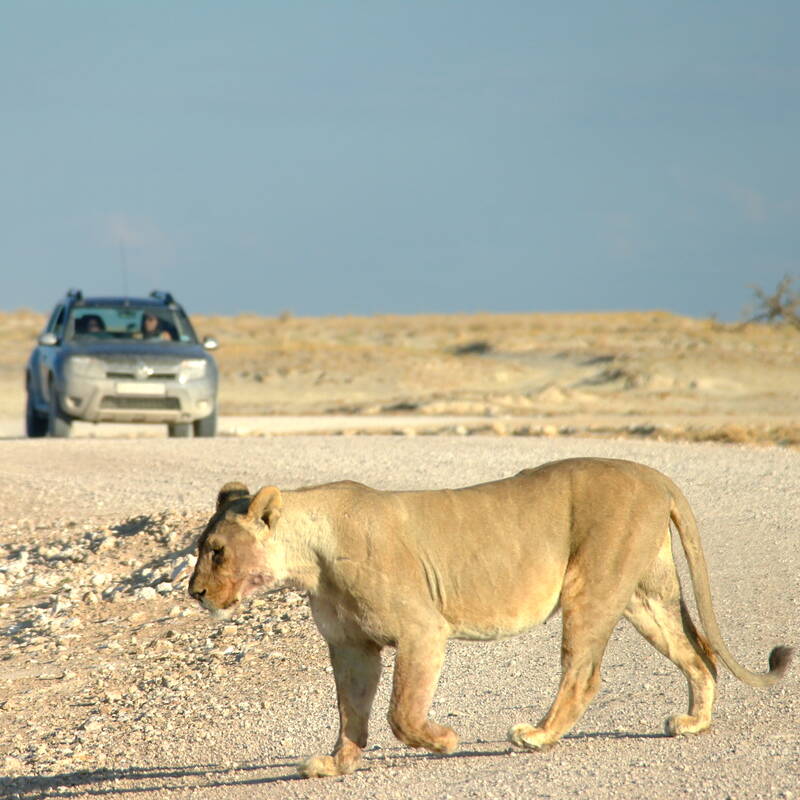
Lesbian, Gay, Bisexual and Transgender (LGBT) travel to Namibia
We have been sending travellers to Namibia since 1994 and have booked trips for many LGBT travellers in that time. We have never heard of any problems experienced on their travels due to their sexuality, and many have come back to us for regular repeat trips. This reflects our opinion that the vast majority of people in Namibia are friendly to visitors, irrespective of the gender and sexual orientation of the visitor. So in our experience, LBGT travel here is usually fine and uneventful. That said, it's important to be aware of both the law and the current climate of opinion. So do please check your government's latest travel advice before you go – and read more about this here: Read more about Lesbian, Gay, Bisexual and Transgender (LGBT) travel to Namibia.
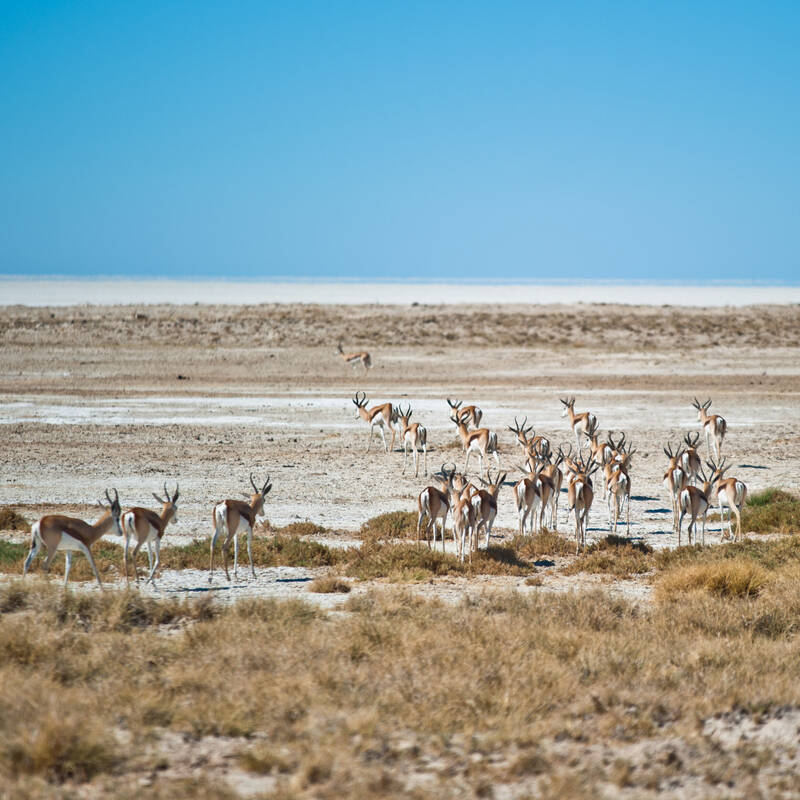
Tipping in Namibia, as in many other countries, is always voluntary, and should depend on the standard of service received. That said, we would encourage visitors to tip in appreciation of good service, while staying mindful of the importance and extent of the work someone is doing for you. Every successful safari or lodge stay is underpinned by a team of staff, all of whom work hard to ensure that their visitors enjoy their vacation. So when thinking about tips and tipping, do please consider them as well as your guide and your waiter, and remember to consider carefully the amount you tip. Usually we would recommend tipping at the end of your stay in any lodge or camp, perhaps using the staff tip box, or placing your tip in a named envelope or series of envelopes so that there can be no misunderstanding. Read more about tipping in Namibia.

Ideas for the best safaris & holidays in Namibia
From ephemeral rivers to the world’s highest sand dunes, wildlife parks to wilderness shores, Namibia’s diversity is legendary – and a holiday here can be as varied as the scenery. With impressive infrastructure, there are many different ways to explore:
Self-drive trips don’t need to be intrepid exploration; we’ll plan the trip with you and arrange a car, detailed maps and all the information that you’ll need to explore at your own pace.
Our fly-in safaris are perfect for those who don’t want to drive, or have very limited time, and they give a magical perspective on the country’s dramatic landscapes.
Guided safaris work particularly well for families or small groups of four or more travelling together. Then you’ll have a top private guide to take you all the way – and we can design the trip to be as adventurous as you wish.
Look through the suggestions below, then talk to us – and let us create the perfect Namibia trip for you.
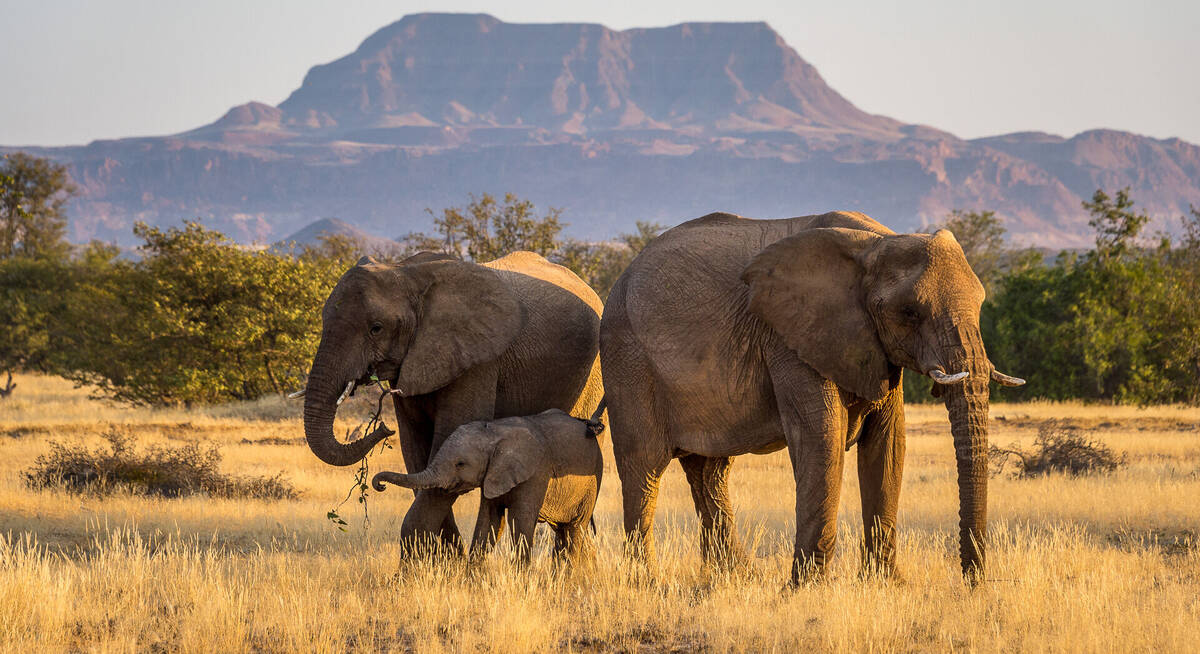
Hoopoe Fly-in Safari
11 days • 4 locations WINDHOEK AIRPORT TO WINDHOEK AIRPORT
This relaxed fly-in safari reveals Namibia at its best. Generous timings and a wide choice of activities help travellers to enjoy the best of the country’s most spectacular areas.
US$5,960 - US$8,940 per person
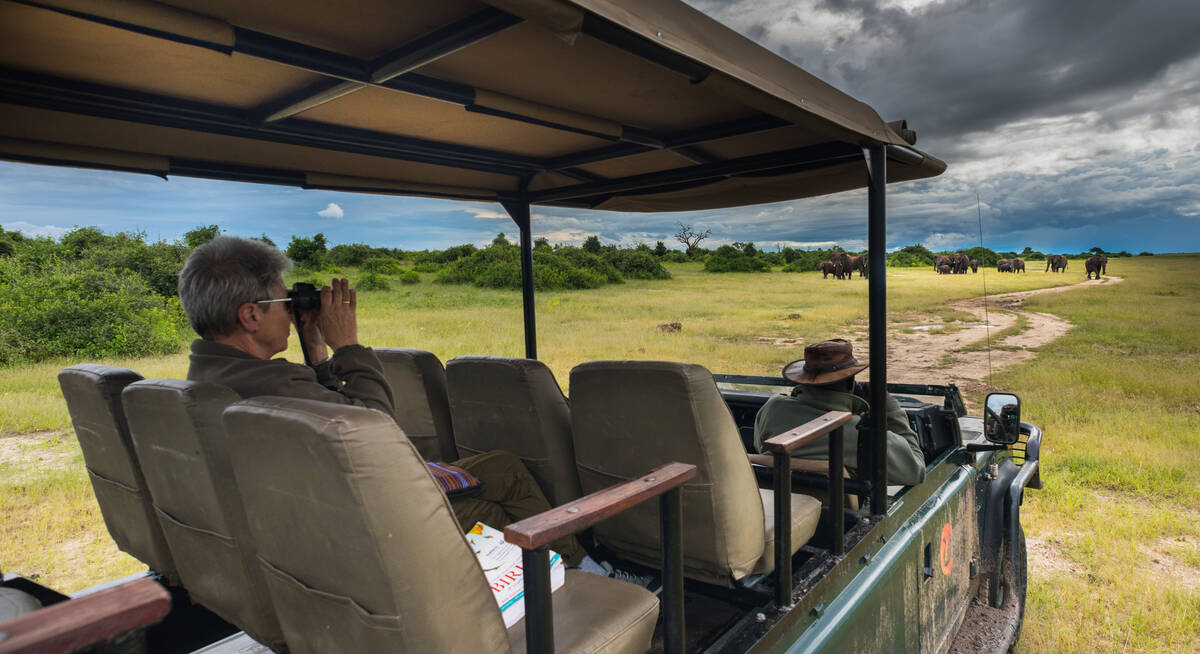
Pygmy Mouse Self-drive Safari
18 days • 10 locations WINDHOEK AIRPORT TO VICTORIA FALLS AIRPORT
A truly epic southern African self-drive safari adventure from Namibia’s mountains and deserts, along the lush Caprivi Strip to Botswana and Victoria Falls in Zimbabwe, staying at luxury lodges throughout.
US$5,420 - US$8,760 per person
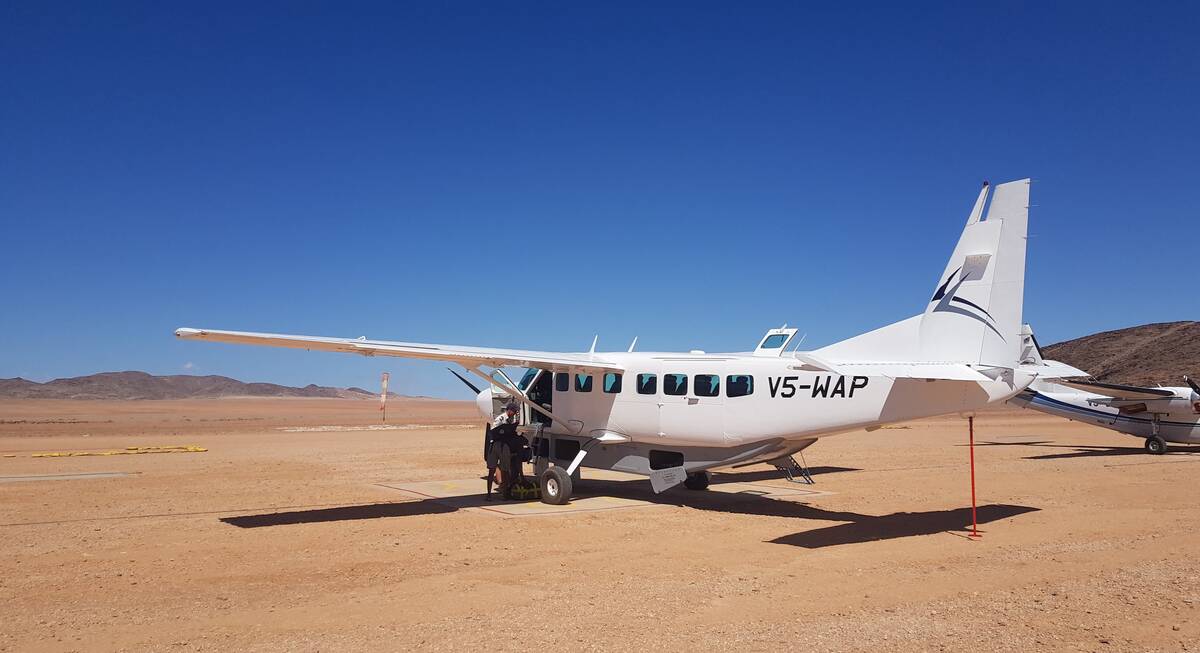
Flamingo Fly-in Safari
6 days • 3 locations WINDHOEK AIRPORT TO WINDHOEK AIRPORT
Short on time but big on experience, this luxury fly-in safari takes in Sossusvlei’s famous dunes and Etosha National Park’s captivating wildlife with stays at two excellent luxury lodges.
US$4,810 - US$6,560 per person
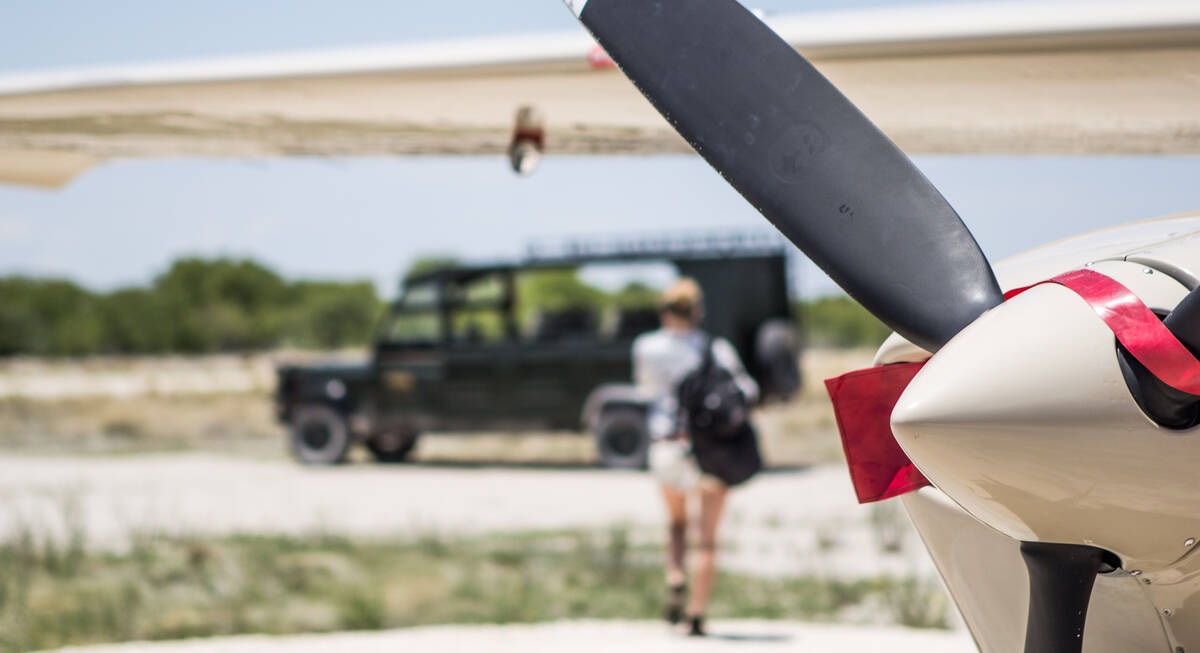
Bateleur Fly-in Safari
7 days • 4 locations WINDHOEK AIRPORT TO WINDHOEK AIRPORT
Classic fly-in Namibian safari staying at excellent camps. Explore Sossusvlei’s dunes and track Damaraland’s desert elephants before a safari in Etosha. Incredible scenery, good wildlife viewing and authentic cultural experiences.
US$5,660 - US$8,940 per person
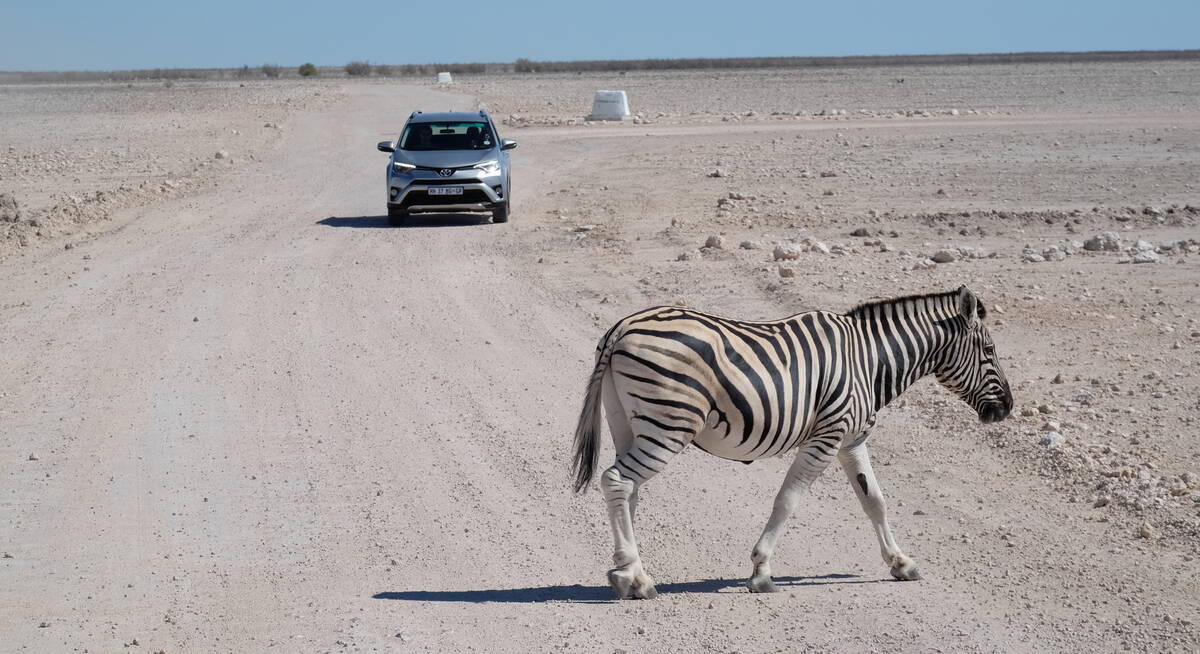
Namaqua Chameleon Self-drive
12 days • 7 locations WINDHOEK AIRPORT TO WINDHOEK AIRPORT
A classic 12-night self-drive adventure around the highlights of eastern and northern Namibia taking in Sossusvlei, Swakopmund, Damaraland, Etosha and a final stop at Okonjima. Comfortable lodges and great value.
US$2,790 - US$4,460 per person
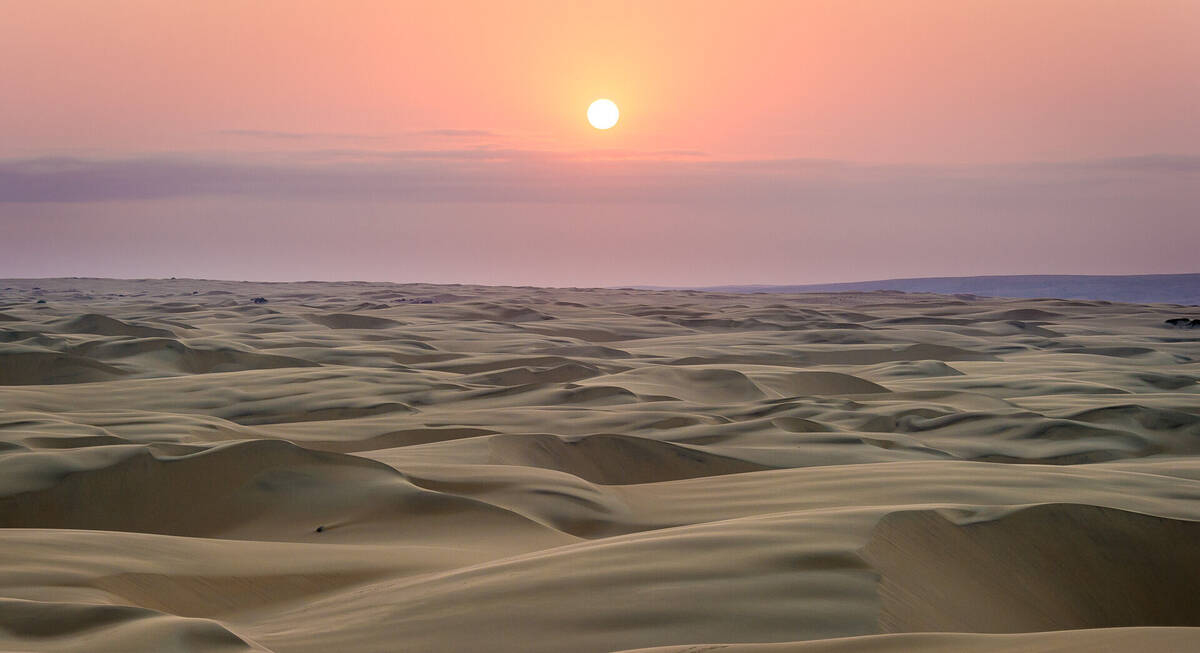
Ruppell's Korhaan Fly-in Safari
9 days • 4 locations WINDHOEK AIRPORT TO WINDHOEK AIRPORT
Explore Namibia’s remotest wildernesses while staying at some of the most exclusive luxury camps in the country. This epic fly-in safari will deliver otherworldly landscapes, fascinating wildlife and genuine cultural experiences.
US$9,830 - US$14,990 per person

Pelican Fly & Drive Safari
10 days • 5 locations WINDHOEK AIRPORT TO WINDHOEK AIRPORT
A unique itinerary visiting the must-see highlights combining the adventure of a classic Namibian self-drive with the ease and spectacular views of a fly-in safari.
US$5,600 - US$7,450 per person
Let us help you customise your trip
All of our holidays on this site are just ideas; none are fixed. All of our trips are tailor-made, so we'll always adapt them to suit you. Talk to an Expert and let us help you to work out your perfect trip.
Talk to an Expert
Call us now! We’ll match you with the Specialist in our team who is best suited to help you. Then together we can start planning your trip.
Set up your itinerary
Based on our experience and your ideas, your specialist will create a detailed, costed itinerary. We’ll refine it together, until we have a trip that you’re perfectly happy with.
Prepare for your trip
The same Specialist will make the seamless arrangements for your trip, send you detailed travel documents, and be available to answer any questions before you depart.
Travel with peace of mind
After you set off, you’ll be cared for by our partners in Africa, most of whom have worked with Expert Africa for decades. And if you ever need us urgently, we’re available 24/7.
When you return
We love to learn about your trip, and so will always be grateful if you’ve the time to give feedback to your Specialist when you return.
Special types of holiday to Namibia
With such varied terrain, Namibia suits many individual interests and styles of travel.
For a family holiday , a self-drive trip is a big adventure, combining the flexibility to choose your own route with the freedom of the open road.
Etosha is a mecca for wildlife enthusiasts, easily explored on your own or with a guide, while Walvis Bay , Sandwich Harbour and the northern rivers offer superb birding.
Top-notch lodges on a fly-in safari offer a touch of luxury , especially with options such as hot-air ballooning , while the hot springs at Ai-Ais come into their own for an affordable wellness retreat , or at the end of a tiring hike. Namibia excels at hiking too – and horseriding !
With constantly changing light and spectacular scenery – Sossusvlei at dawn; pelicans flying low over Walvis Bay lagoon; the mist-drenched emptiness of the Skeleton Coast – Namibia is a photographer’s dream .
Whatever your passion, talk to us and we’ll help to create your perfect trip.
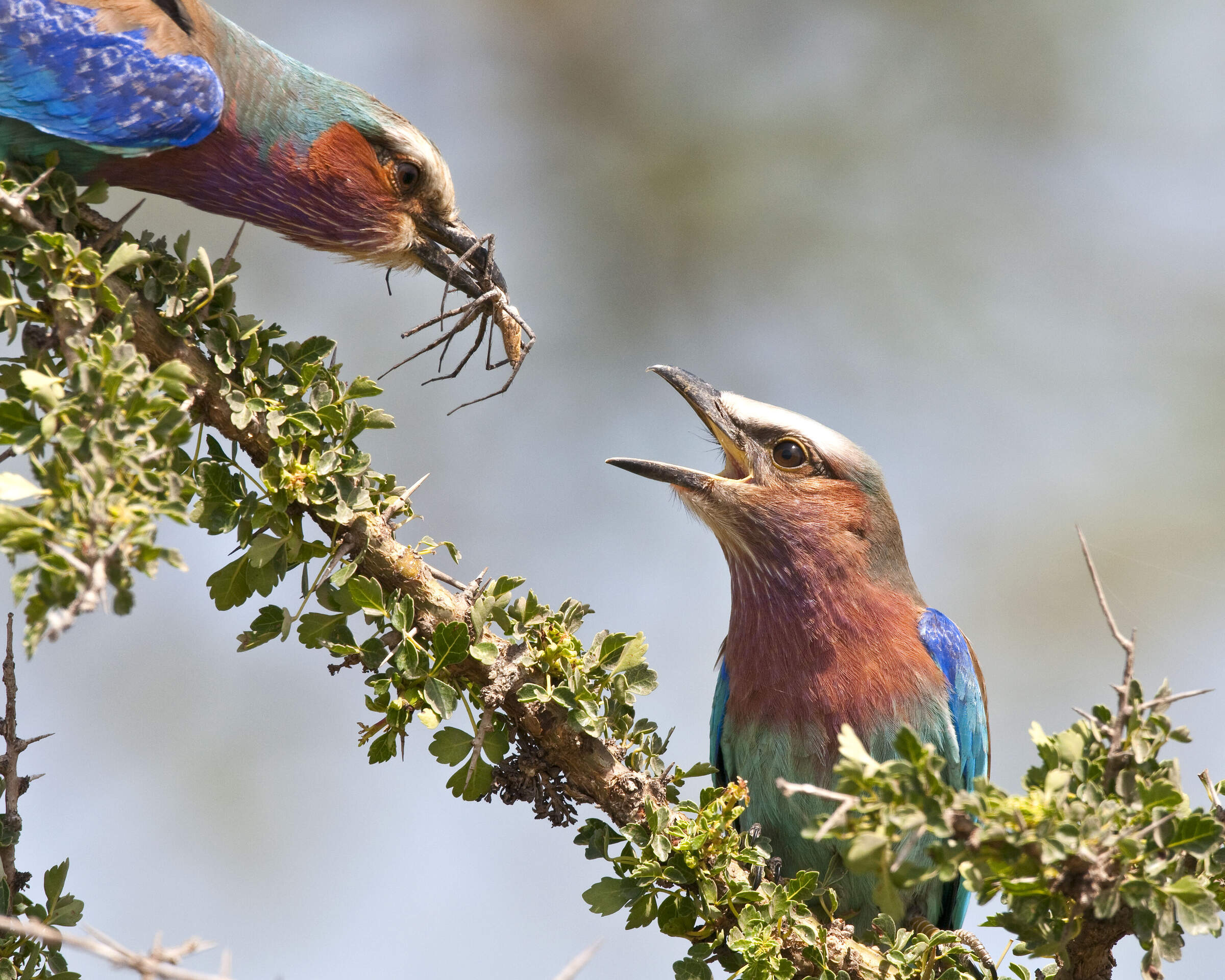
Birdwatching
Diverse habitats, discreet hides and superb guiding.
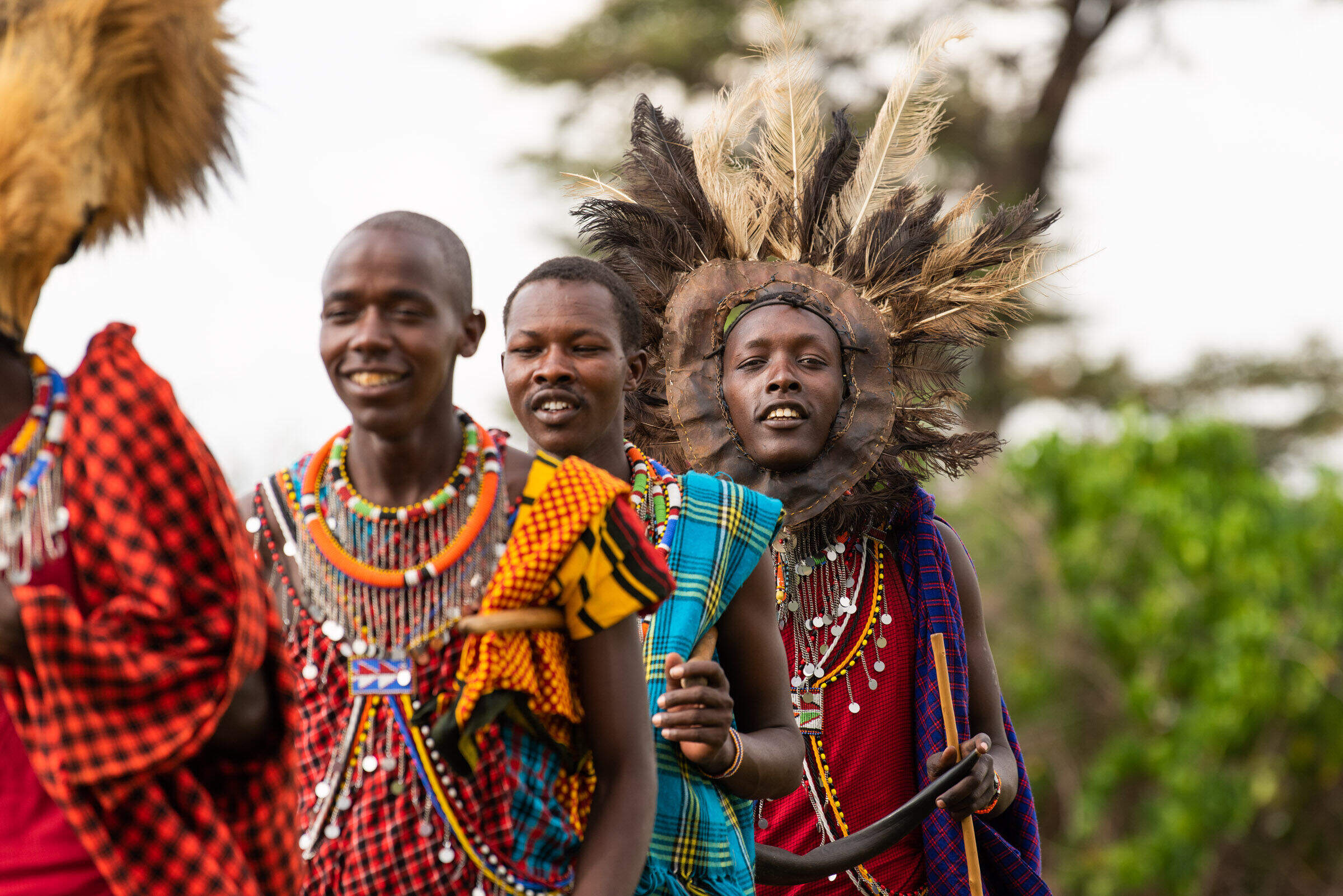
Cultural experiences
Get an insight into Africa's cultures and history.
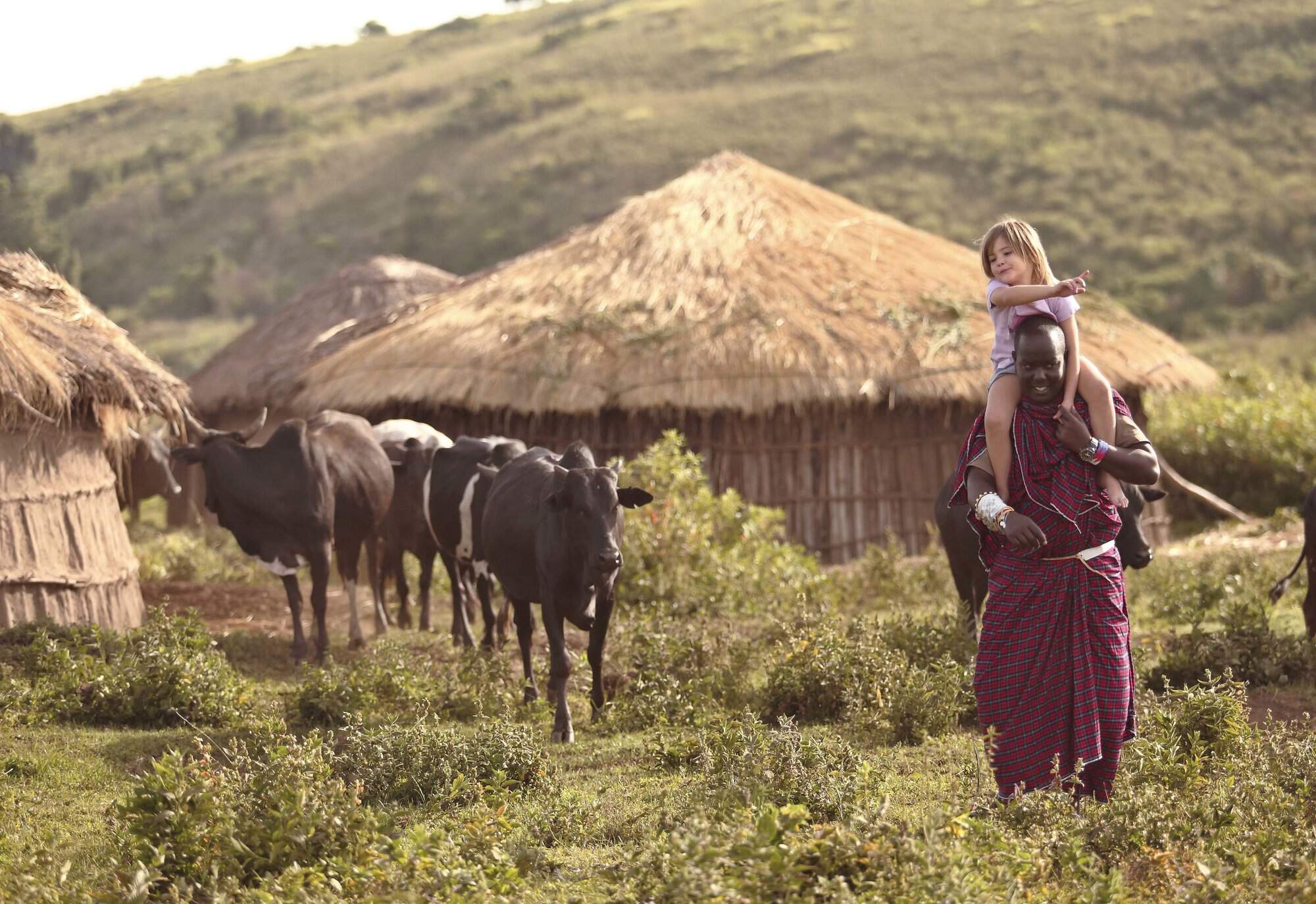
Family holidays
Hand-picked camps for an incredible family safari.
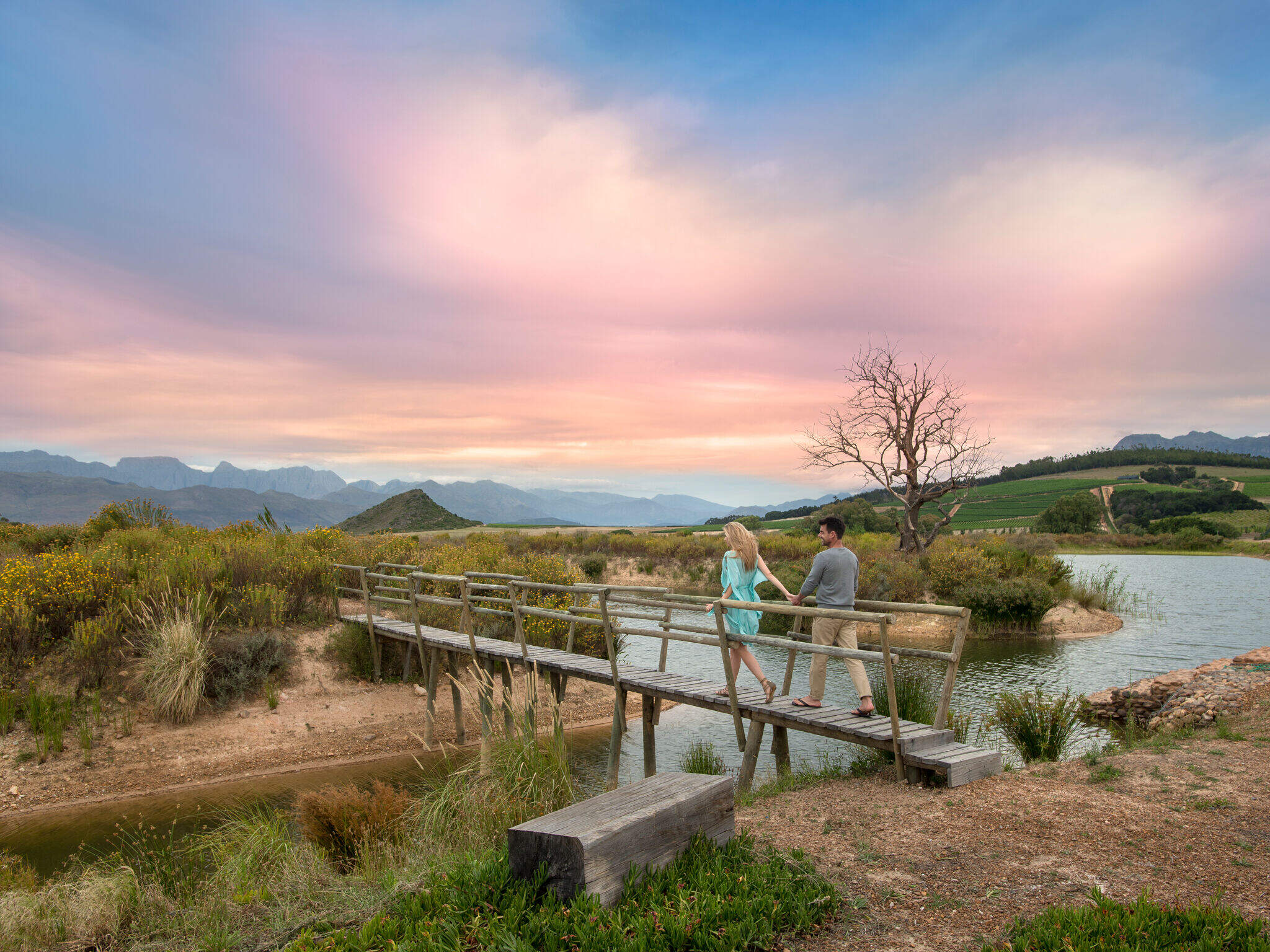
Romantic safaris and castaway island retreats.
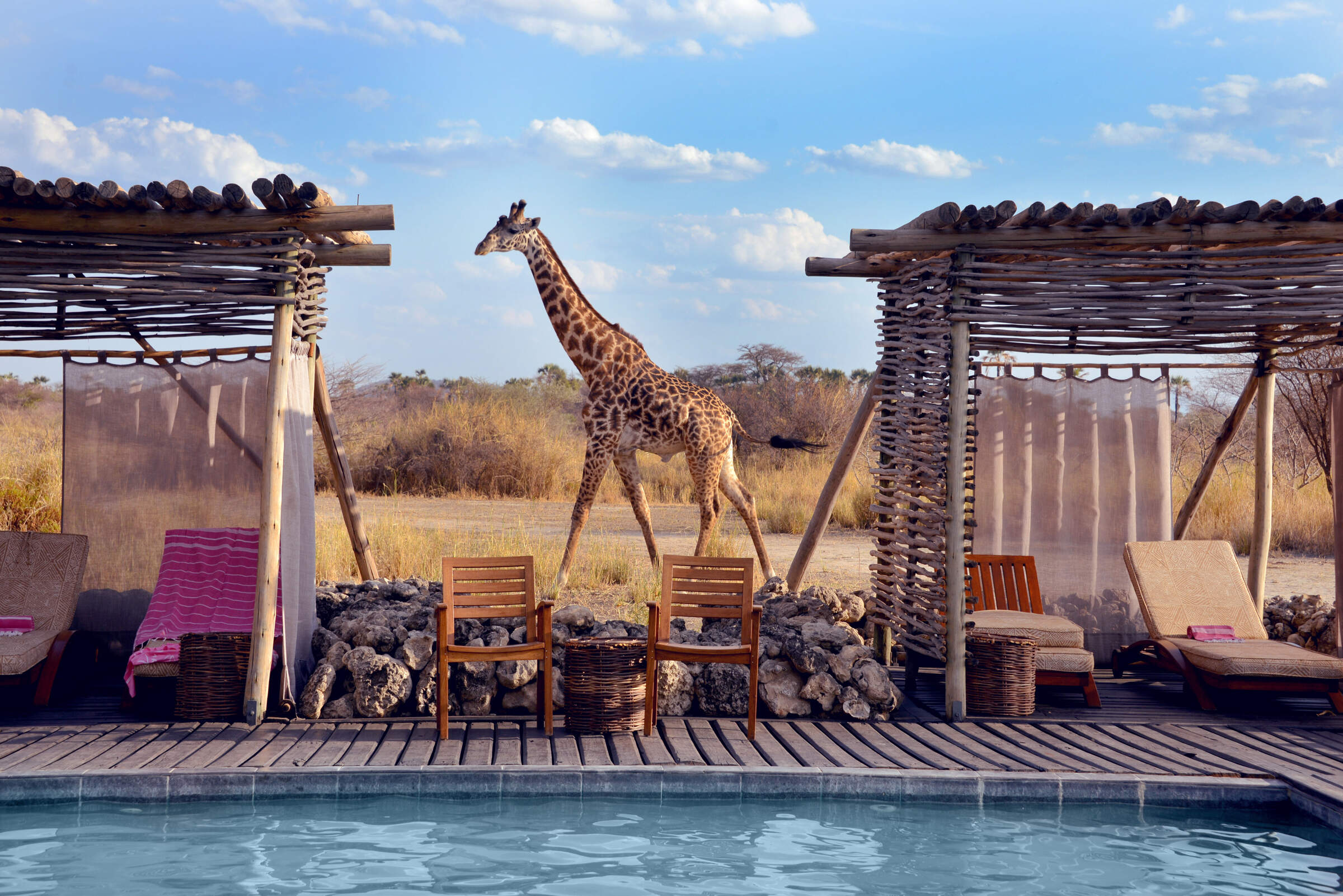
First-class service, scenic vistas and unparalleled comfort await you during these carefully selected luxury holidays.
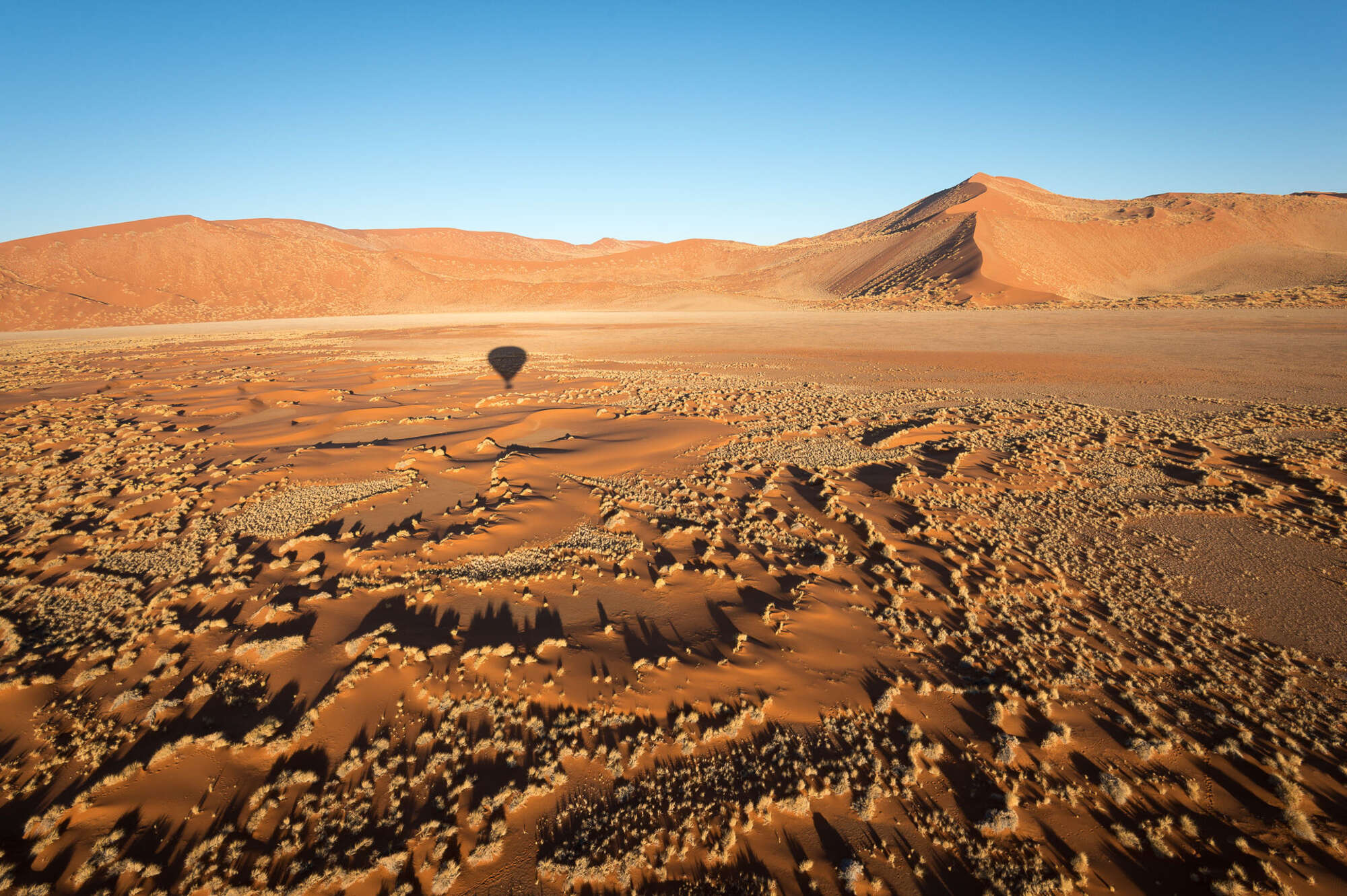
Photography holidays
Great holidays to suit the keen photographer.
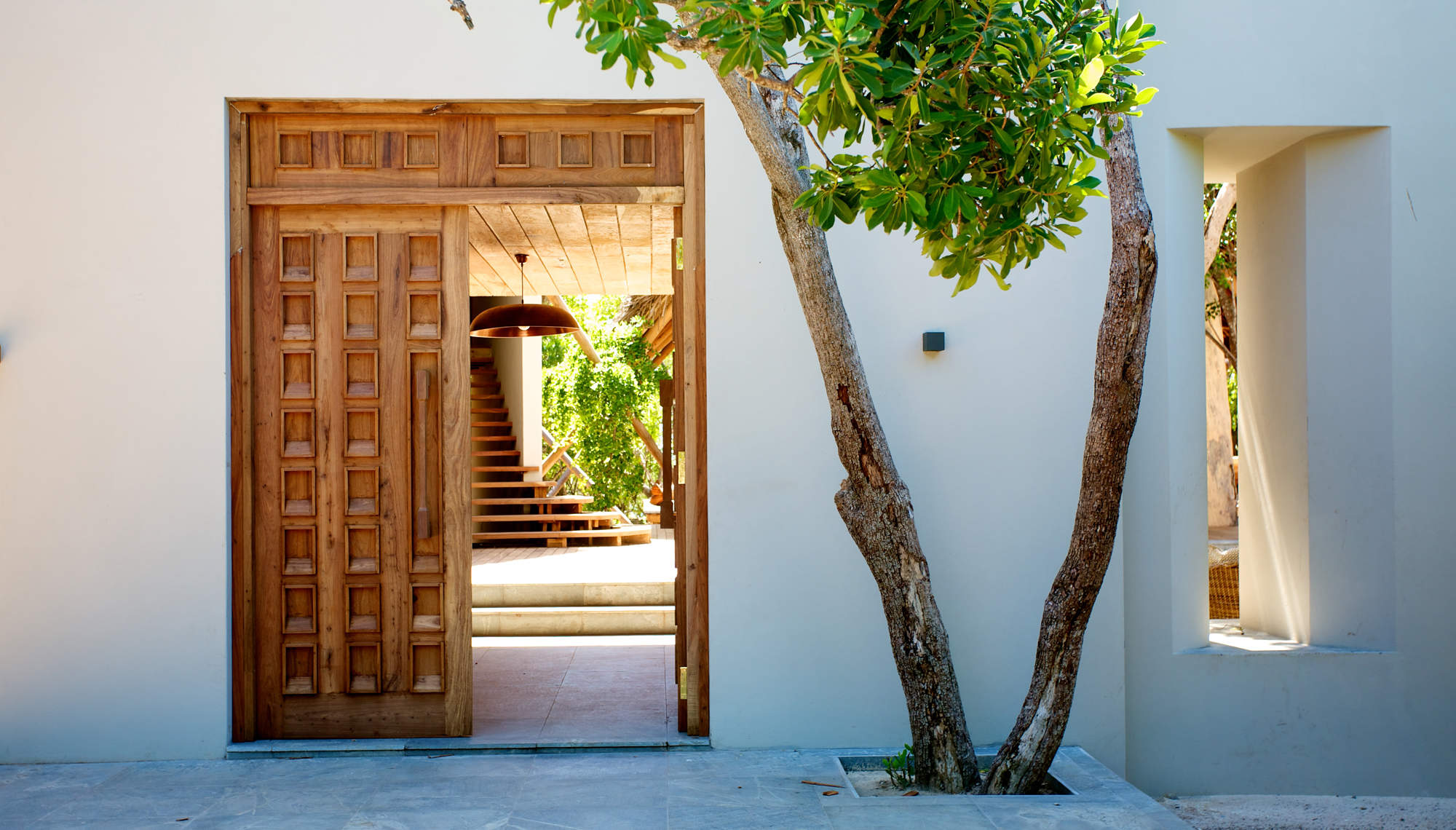
Private villas & houses
Enjoy Africa with just your friends & family
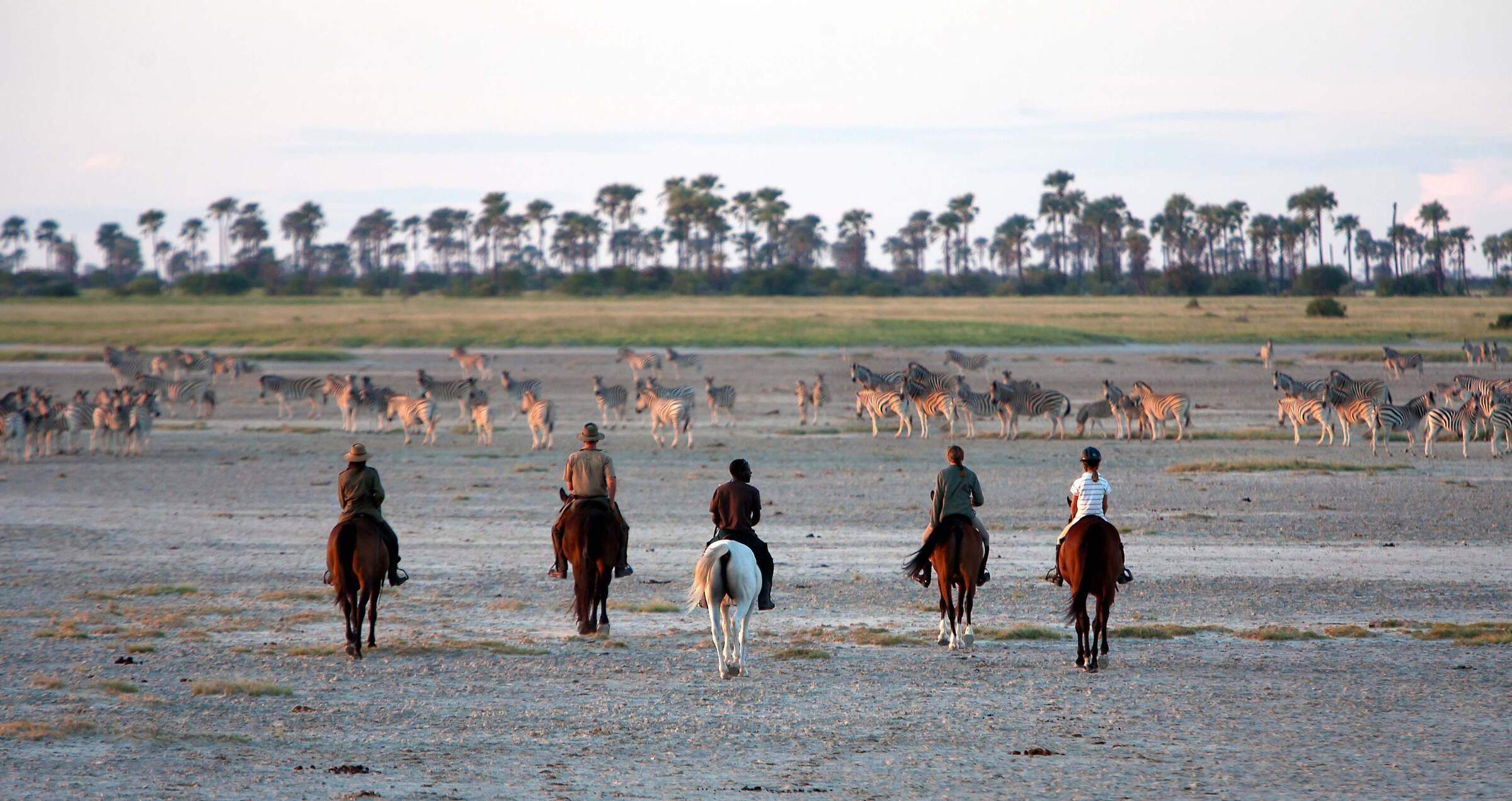
Riding holidays
Explore Africa's wilderness on horseback.
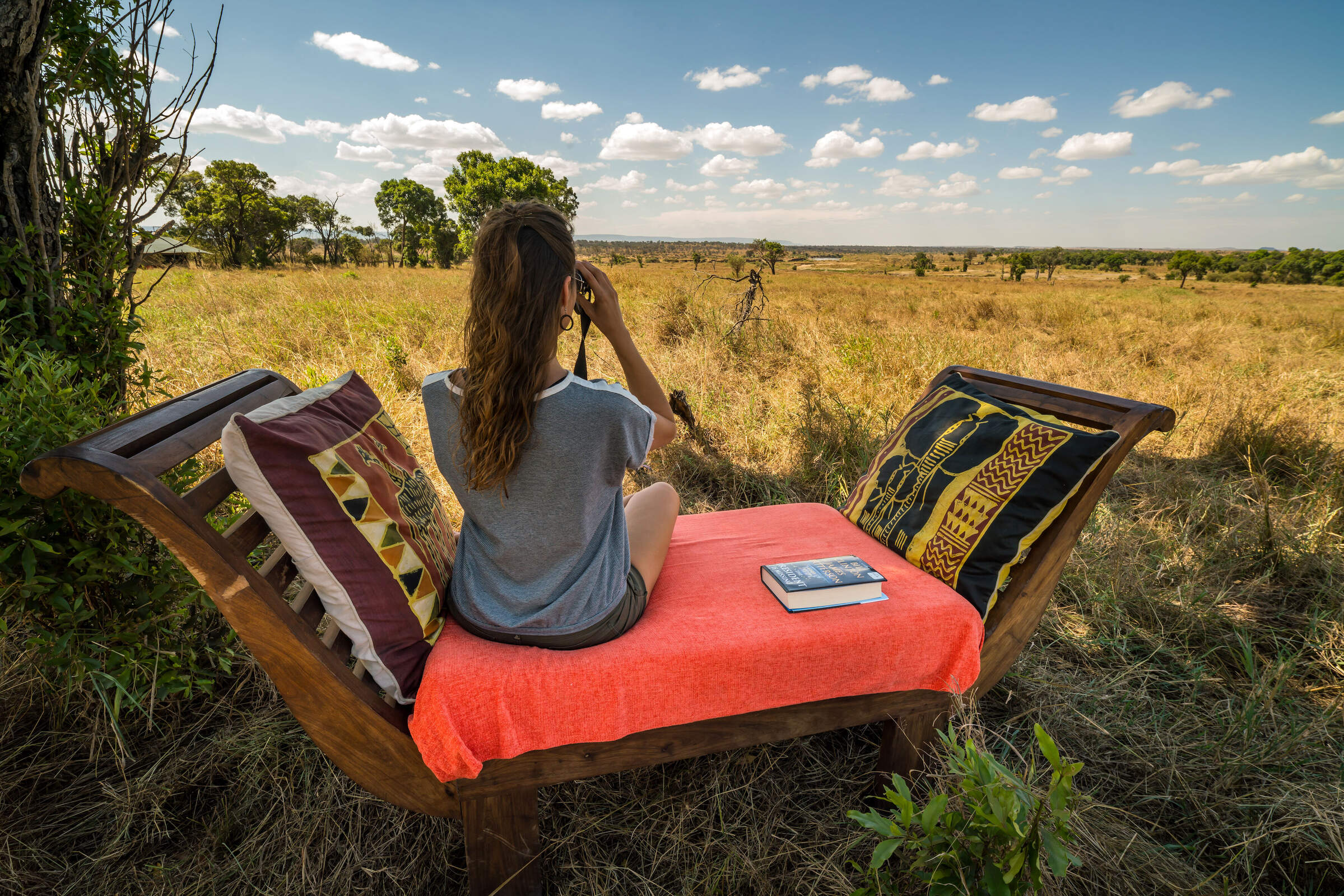
Solo Travel
Trip ideas ideally suited for a solo traveller.
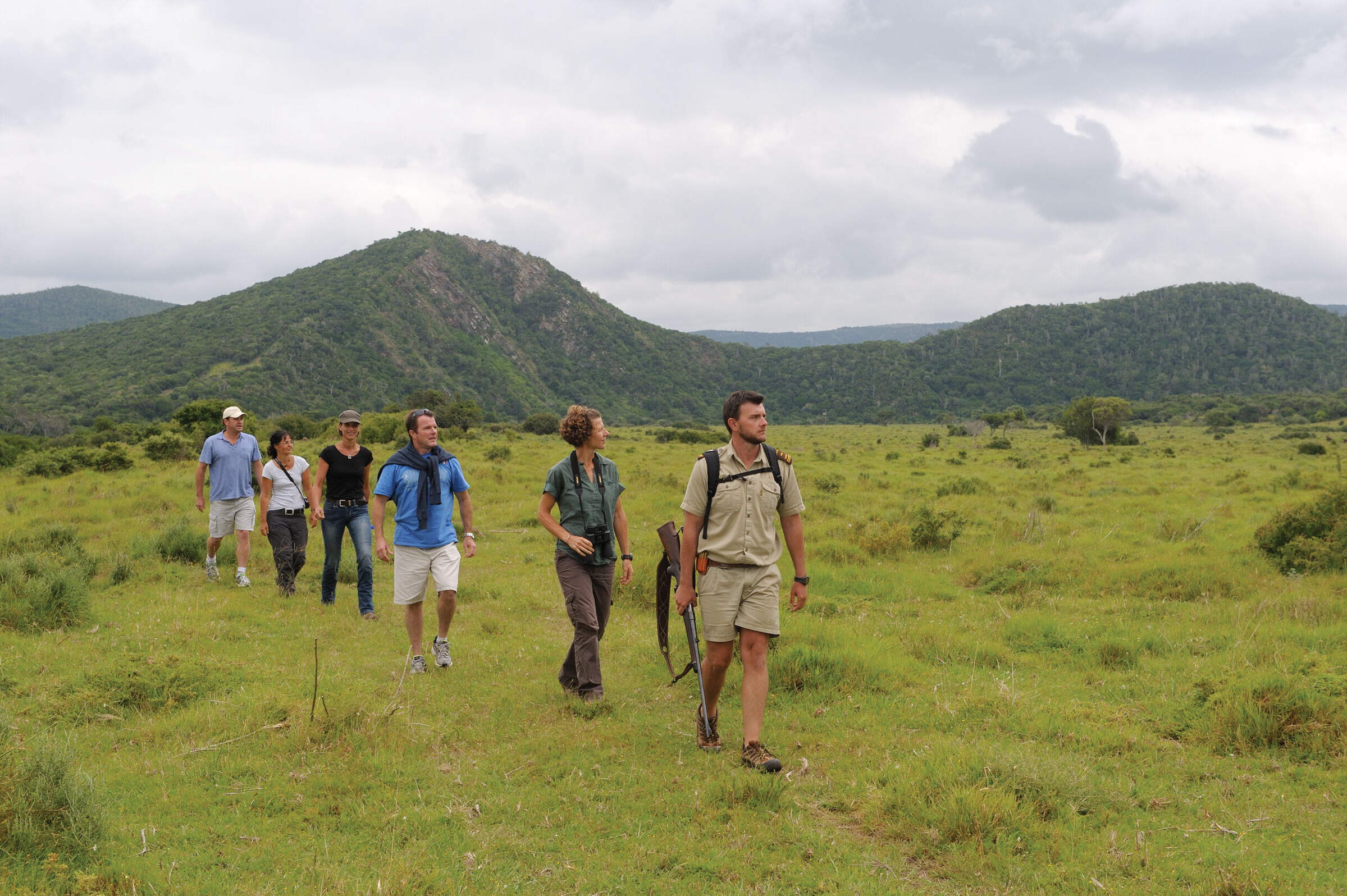
Explore Africa's most scenic trails on foot.
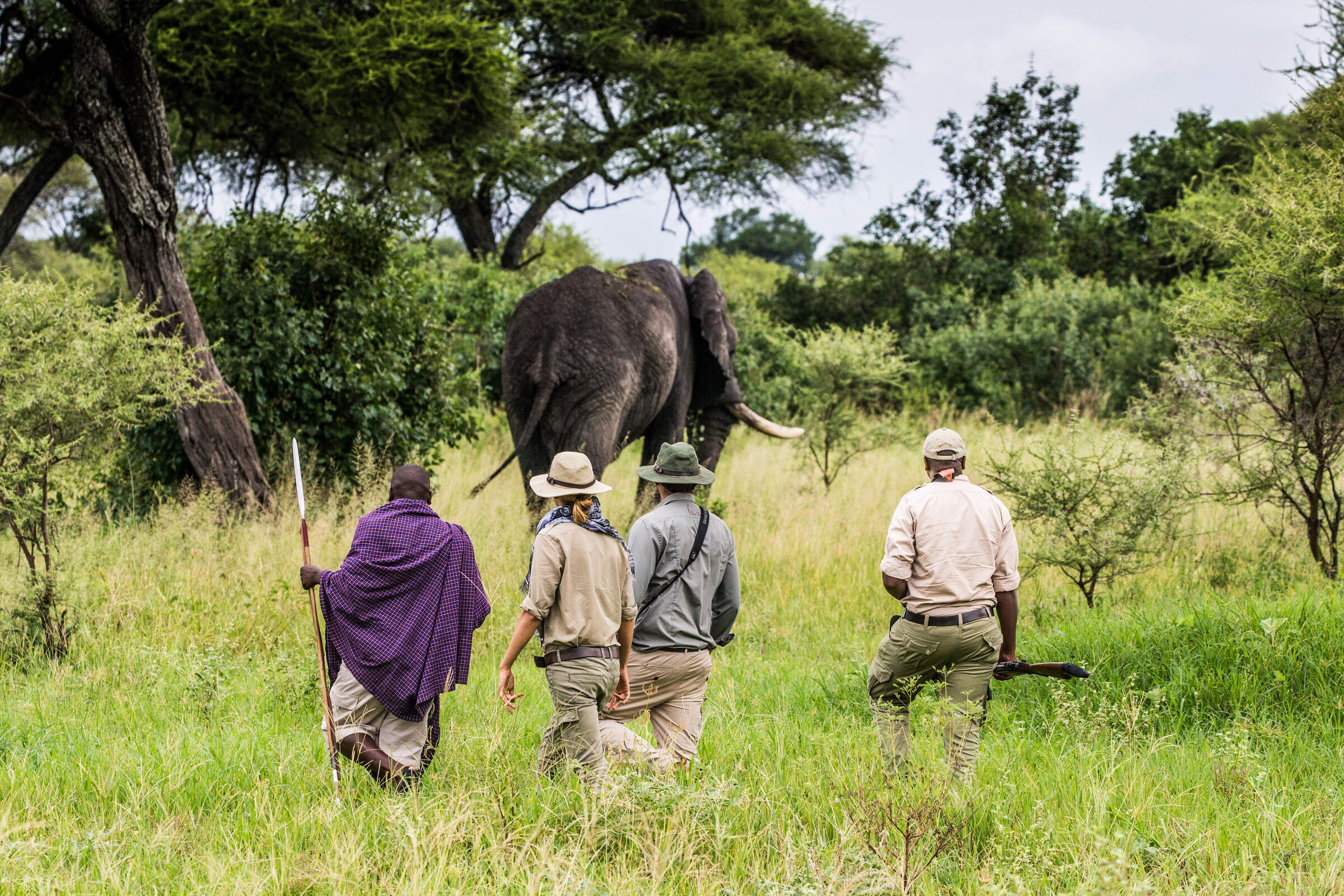
Walking safaris
Explore Africa's untouched wildernesses on foot.
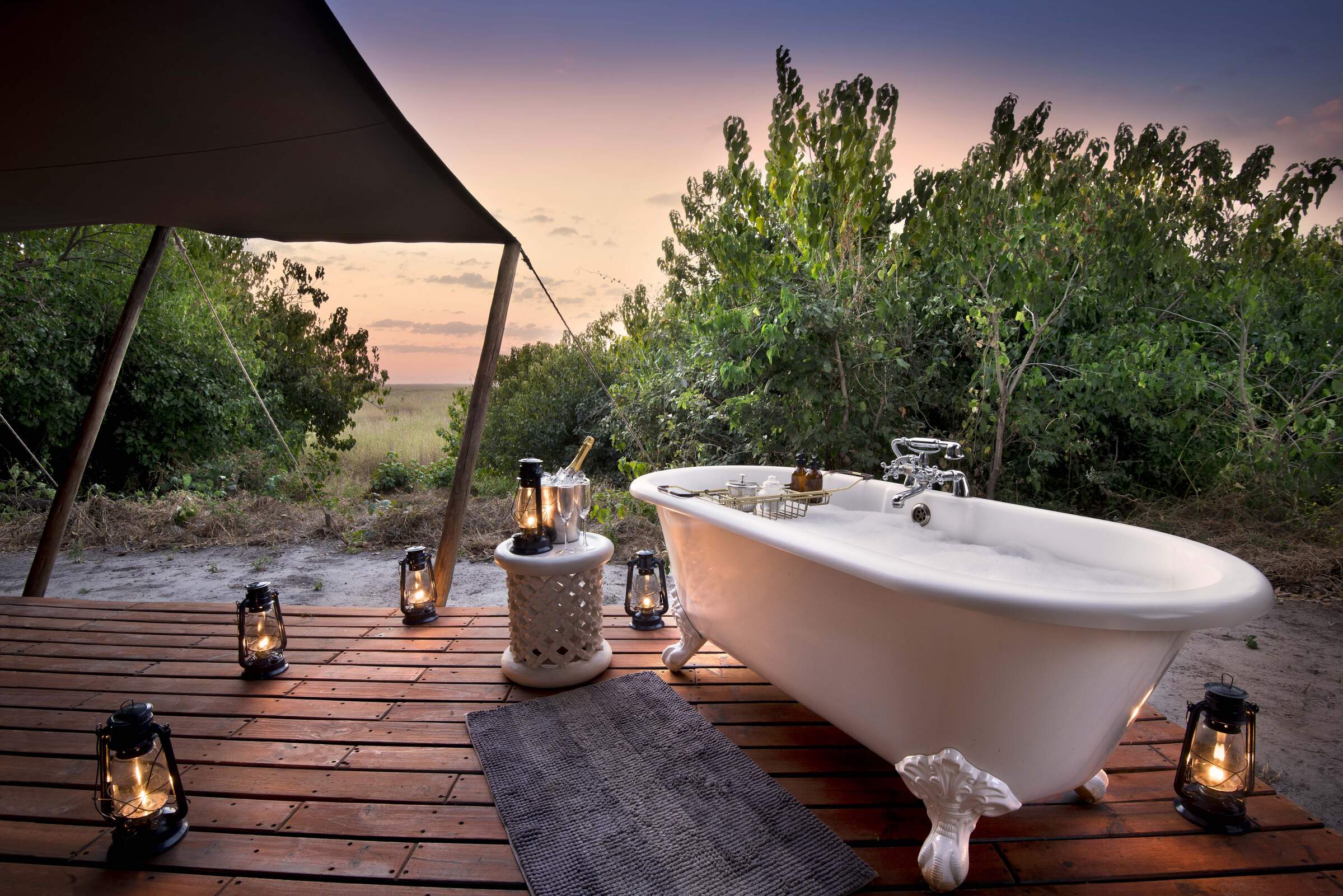
Wellness escapes in stunning locations
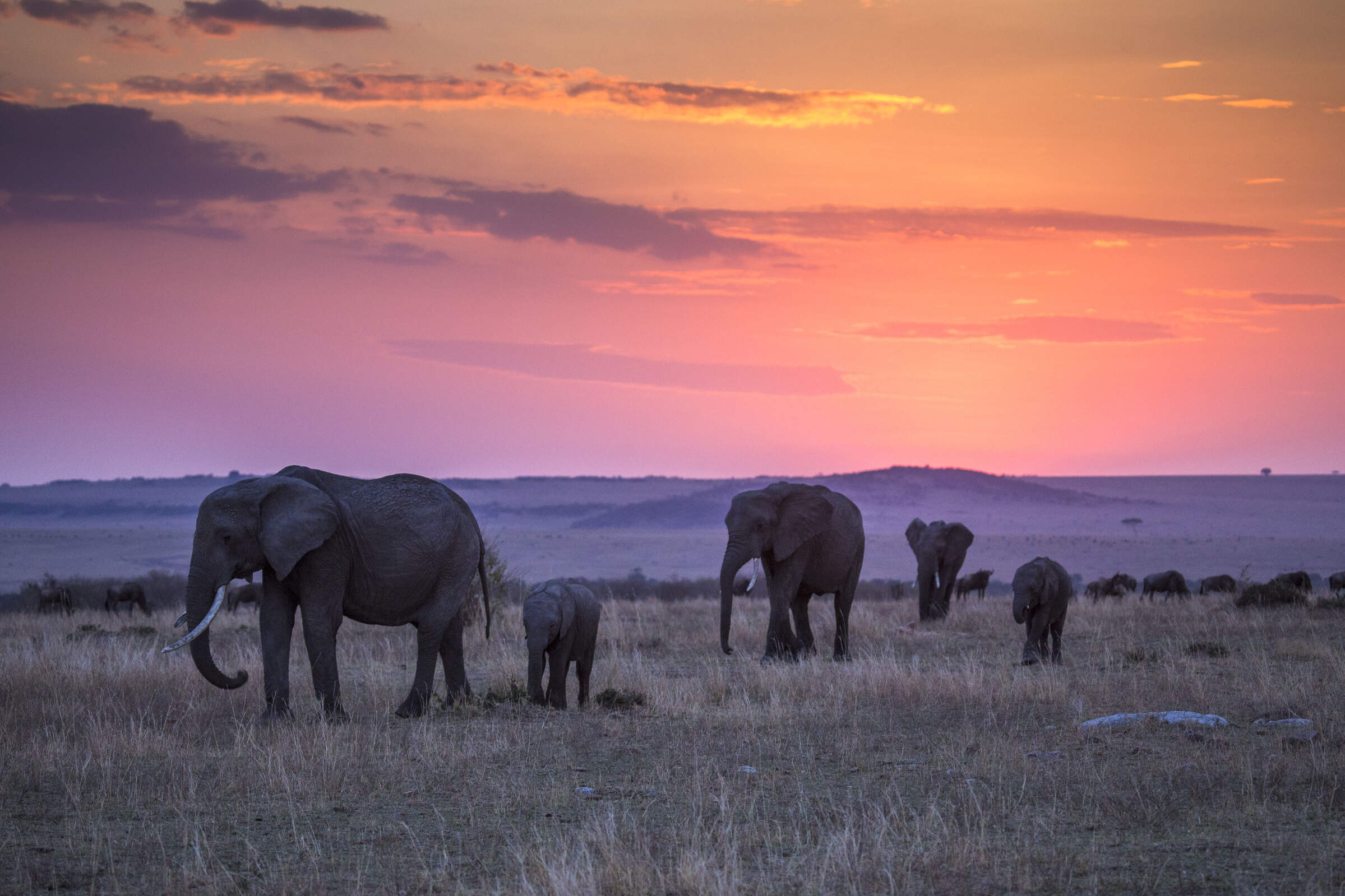
Wildlife safaris
These trips include hard-hitting game and fascinatingly elusive species alike, as well as superb guiding and a variety of diverse ecosystems.
Frequently Asked Questions
Namibia FAQs
Every trip to Namibia is different, but each throws up individual questions – some seemingly trivial, some crucial to the success of your holiday.
At Expert Africa, we have in-depth knowledge of the country and we’re here to help. Below are some of the questions that we’re frequently asked, from what it’s like to drive in Namibia to where to look for wildlife and whether or not you can swim in the sea.
Whatever you need to know, please contact us and we’ll do our best to help.
How to plan a Namibian road trip?
As with any journey, meticulous planning ensures success. You can trust our team of experts , whose experience travelling across and living in Namibia allows us to take the reins. We know the myriad destinations and stops across Namibia, and once we understand your preferences, we will expertly curate a self-drive trip to suit you perfectly. In addition to meticulously organizing your self-drive safari, we will guide you in the choice of vehicle, ensuring that you have the right car hire for your adventure. Then, when you arrive, a few basic steps will enhance your road journey. Namibia's vast expanses often mean long distances between fuel stations – so set off with a full tank of fuel (and at least one spare can of fuel, if you’re heading off piste), plus at least one spare tyre. Water and sustenance are equally vital companions, so provision yourself with plenty of snacks and water – orchestrating a full-scale picnic will appease the appetites of both body and soul. Furthermore, do not forget to shield your eyes from the sun with a sturdy pair of sunglasses and protect your skin with a generous application of suncream. While on your Namibian Odyssey, do seize every opportunity to replenish your reserves. Then embrace the open road, for you are about to embark on an unforgettable journey through Namibia's awe-inspiring landscapes.
Can I sleep under the stars in Namibia?
With a night sky that is unrivalled in much of the industrial world, and a largely dry climate, sleeping under the stars in Namibia – sometimes dubbed ”the thousand-star hotel” – is a magical experience. Campers are spoiled for choice, even in Etosha National Park, as well as in more remote locations such as Spitzkoppe and the Namib-Naukluft National Park. At the other end of the spectrum, some of the top lodges, from the Skeleton Coast and Damaraland to the Namib Desert (Kuala and Little Kulala), have beds that can be rolled out under the stars for your night’s rest. For a more adventurous experience, guests on a walking safari on the NamibRand Nature Reserve sleep on camp beds laid out in the open by their guides. Just remember to take plenty of warm clothes.
Can I visit Namibia’s diamond areas?
For many years, the desert area south of Lűderitz, where in 1908 diamonds were first discovered scattered across the ground, was off limits to visitors. Home to Diamond Area 1, it was known as the Sperrgebiet, or “forbidden territory”. Today much of the area falls within the Sperrgebiet National Park, but access remains restricted. For most of the region you’ll need to visit with an authorised tour operator. The eerie “ghost” town of Kolmanskop, however, can be visited by self-drivers – although you’ll still need a permit. For the history, the flora, the sheer remoteness, visiting places such as Elizabeth Bay and the ghost town of Pomona may take some planning, but it is worth the bureaucracy.
What coastal activities does Namibia offer?
Namibia may have 1,570km of coastline, but thanks to vast expanses of desert, and the presence of diamonds, much of it is inaccessible – which in part adds to the appeal. Sea swimming isn’t generally an option except in Swakopmund & Walvis Bay and Lűderitz . Courtesy of the Benguela Current, the waters of the Atlantic are cold – even by British standards! – and can be treacherous. Against this, kayaking at Walvis Bay , where Cape fur seals see you as part of their morning’s entertainment, is a must for watersports and wildlife lovers alike. Boat tours provide similar opportunities without the exercise, while in Lűderitz they offer the additional opportunity of seeing African penguins. Fishing, too, can be organised in the coastal towns, while hiking along the beaches of the Skeleton Coast , littered with whalebones, gives a whole new meaning to a walk by the sea.
How long does a Namibia safari holiday take?
The highlights of Namibia – Sossusvlei’s dunes , Damaraland and Etosha National Park – can comfortably be fitted into a week’s holiday, if you fly around, making this a perfect itinerary for those with limited vacation time. Those with a more time usually build on the highlights, perhaps driving around and including a stop for activities at Swoakpmund, time leopard-spotting on the Okonjima Reserve , or a visit to one of Namibia’s many less famous guest farms and lodges. If you have longer, the options are many and varied. For sheer desolate wilderness, the Skeleton Coast is a must, while the awe-inspiring scenery of Fish River Canyon is more than a match. To gain a glimpse of Namibia’s indigenous cultures, you’ll need to head north to the Himba villages nestled in the stark, arid landscape of Kaokoland . Or seek out the homelands of the San, or Bushmen, in Bushmanland , on the country’s eastern borders with Botswana.
Our other African destinations
Namibia’s scenic diversity is among its greatest appeals, but if you’re after a stronger focus on wildlife or water activities, take a look at some other Expert Africa destinations.
Neighbouring Botswana stands out for the iconic Okavango Delta, where vast private reserves offer exclusive wildlife watching. Zambia , too, boasts exceptional wildlife and intimate camps, many of them owner-operated. For a more rustic safari, consider Zimbabwe , whose safari guides are some of the best in the world, or head east to the open grasslands of Tanzania .
Water lovers will be in their element in South Africa , as well as in east Africa, where Kenya , Mozambique and Malawi beckon. Or for a true castaway experience, the islands of Zanzibar and the Seychelles make superb add-ons to a safari. And then there’s Rwanda , with that once-in-a-lifetime opportunity to come face to face with mountain gorillas. The choices are many and varied, so contact us to help you design your perfect safari – wherever that may be.
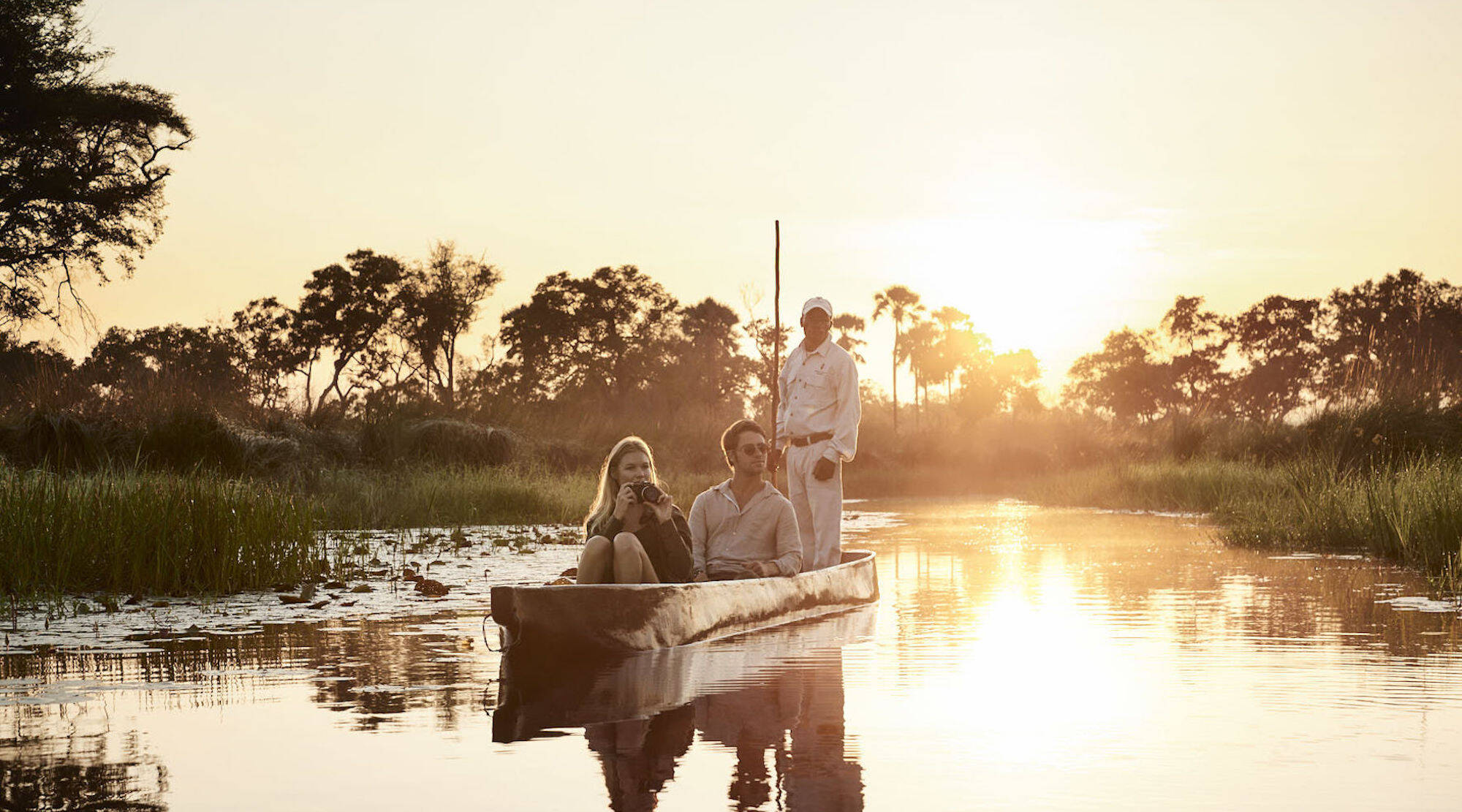
With big game, glamorous lodges and one of the greatest unspoilt wildernesses on Earth, Botswana is perhaps Africa's most exclusive safari destination.
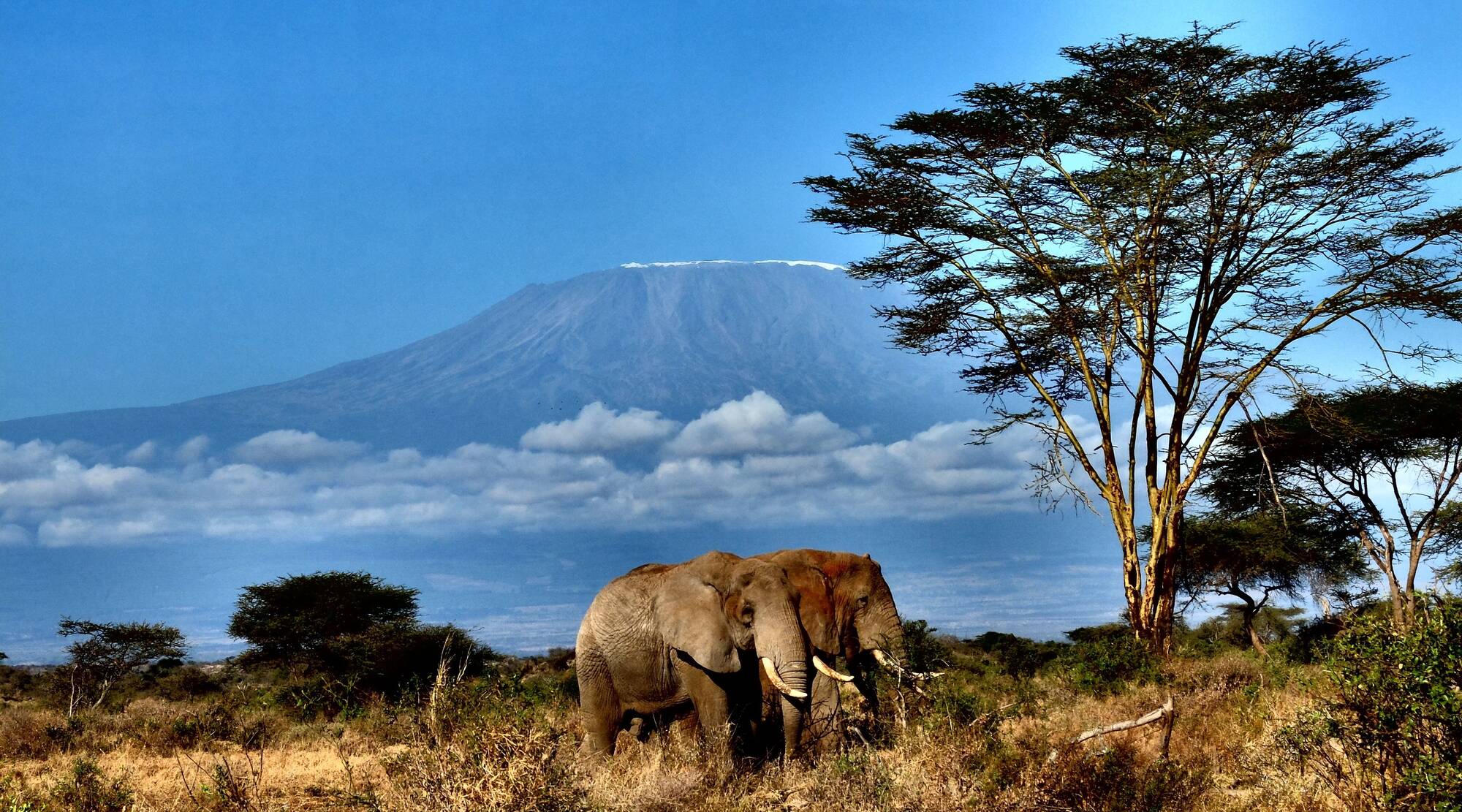
Humanity’s ancestors lived in Kenya, which is now home to people speaking 42 languages, and some of Africa’s rarest, most magnificent wildlife.
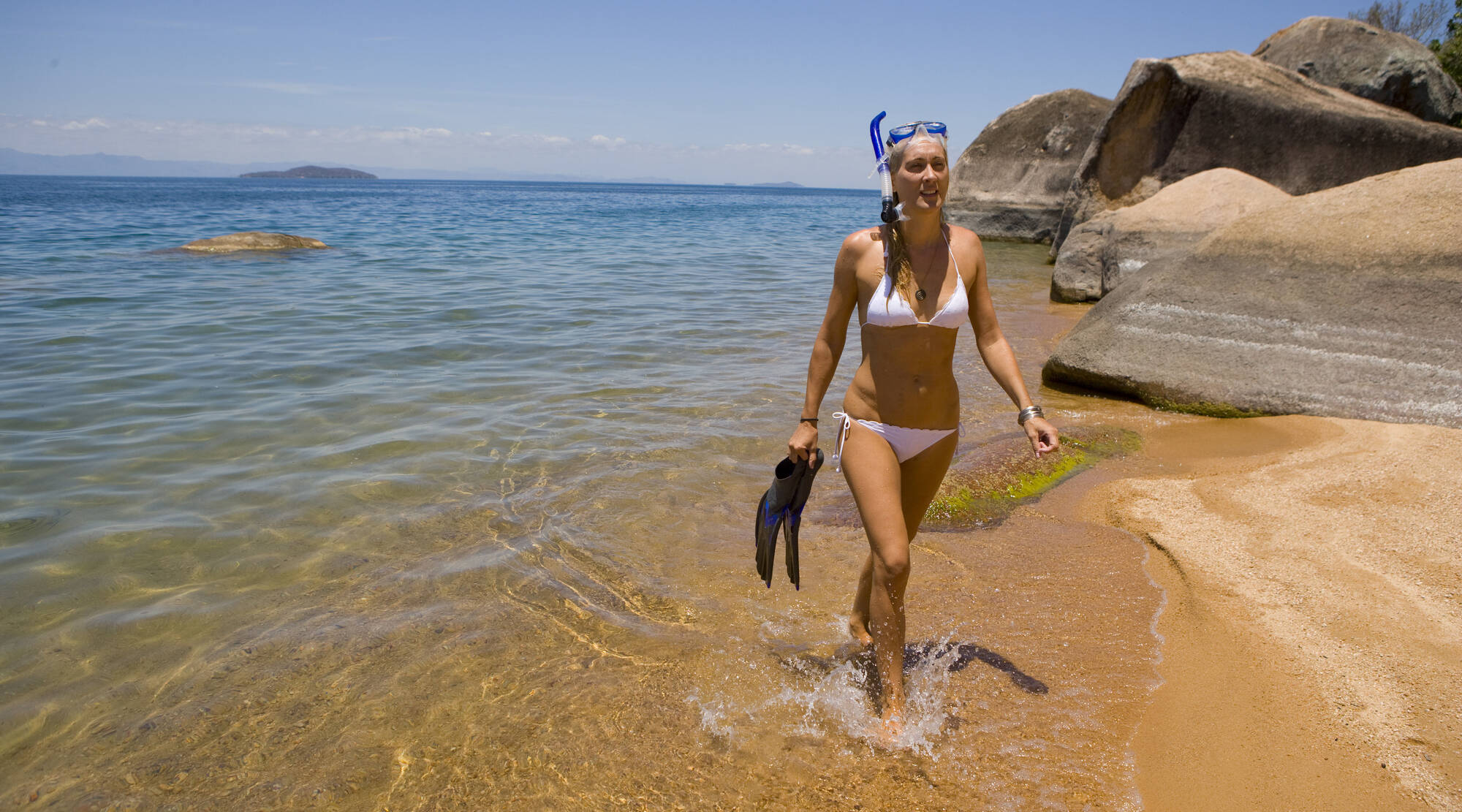
With tropical rivers, Rift Valley plateaux, the crystal-clear waters of Lake Malawi and a stunning lakeshore, Malawi invites relaxed exploration.
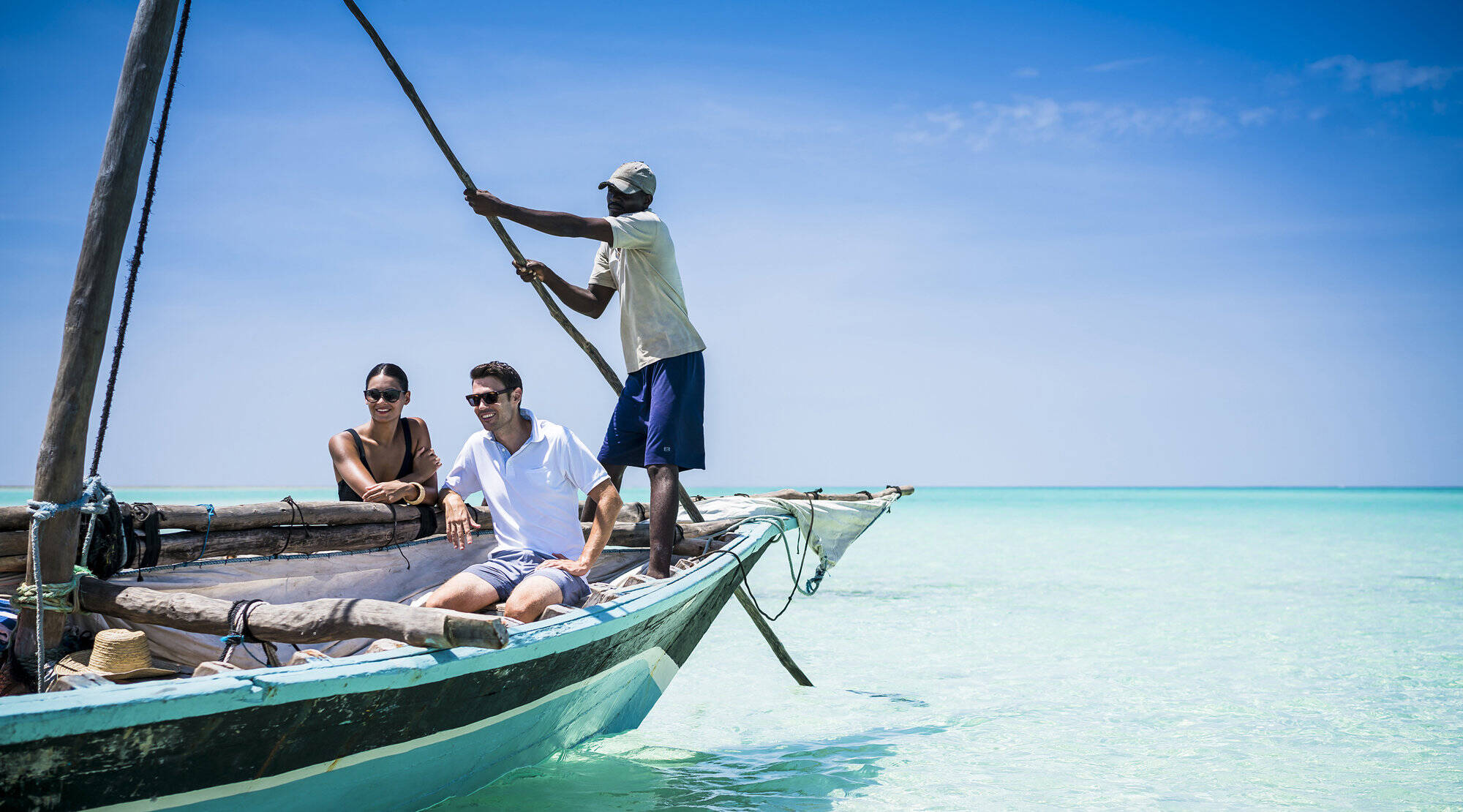
An ocean paradise protected by world-class marine parks, Mozambique’s idyllic archipelagos offer heavenly hideaways, outstanding diving and laid-back luxury.
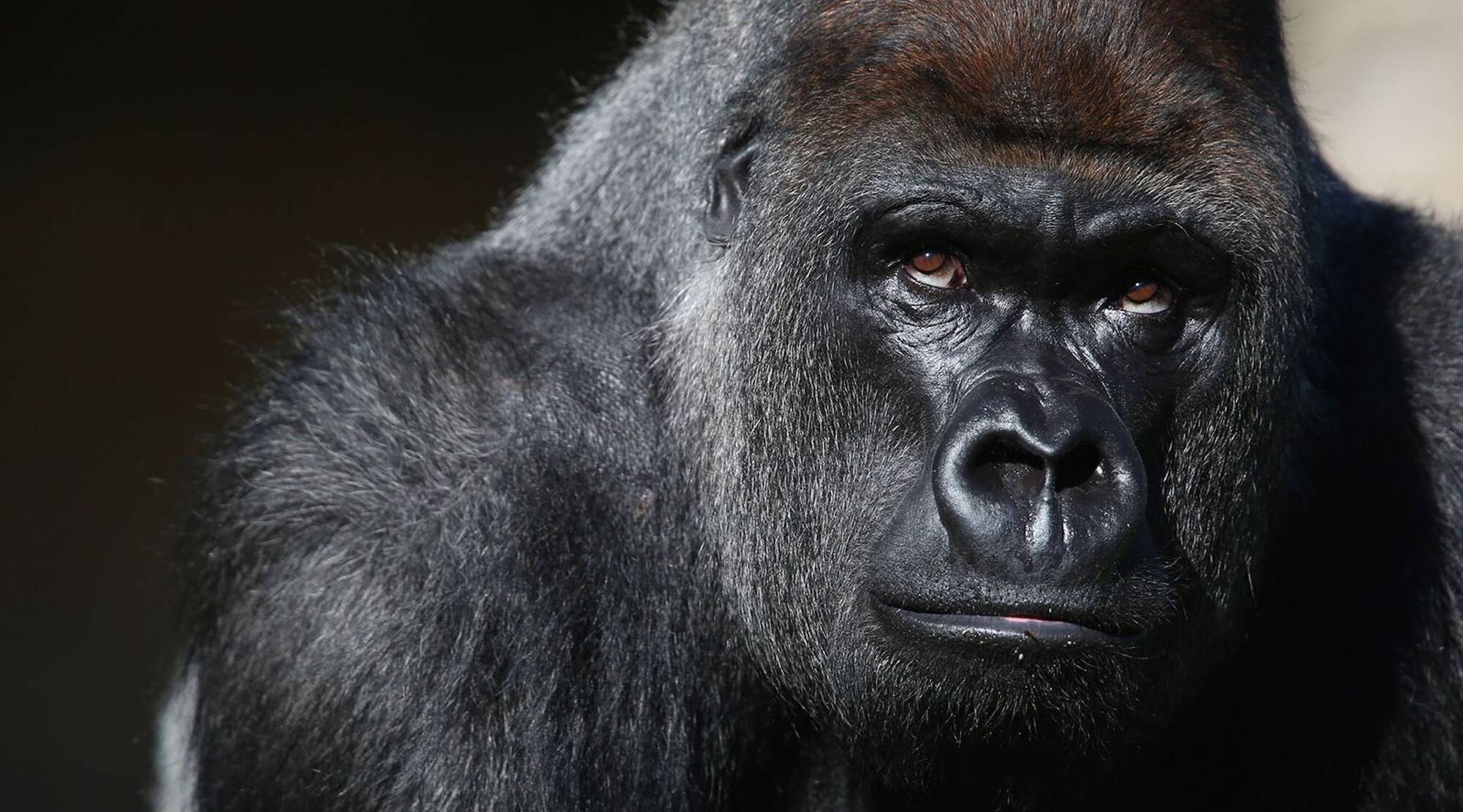
This small, mountainous country offers Africa’s best gorilla treks, other good safari options and a profound human element in every trip.
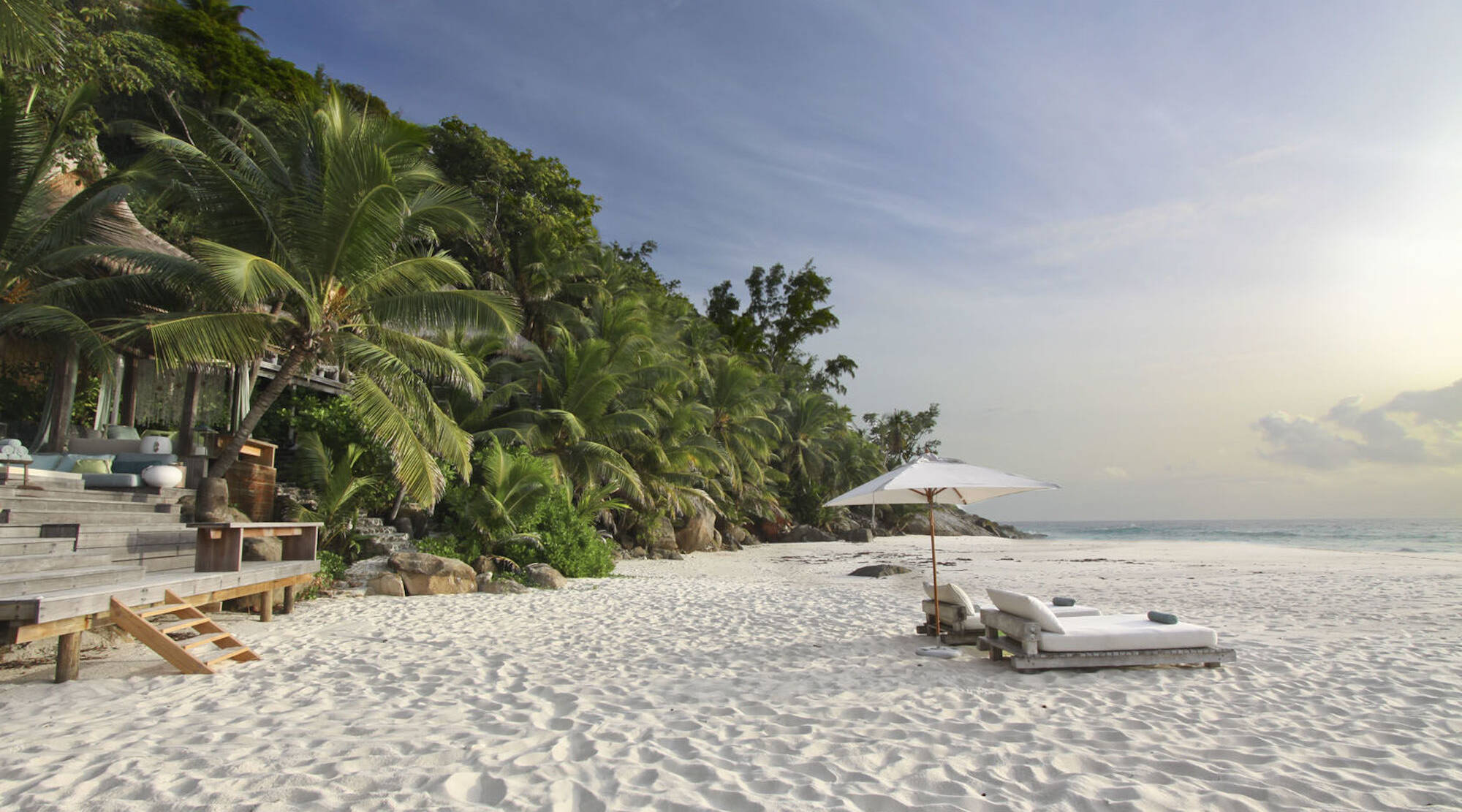
The ultimate glamorous getaway: the lush islands of Seychelles are enchantingly beautiful and stylish sanctuaries for both wildlife and ocean-lovers.
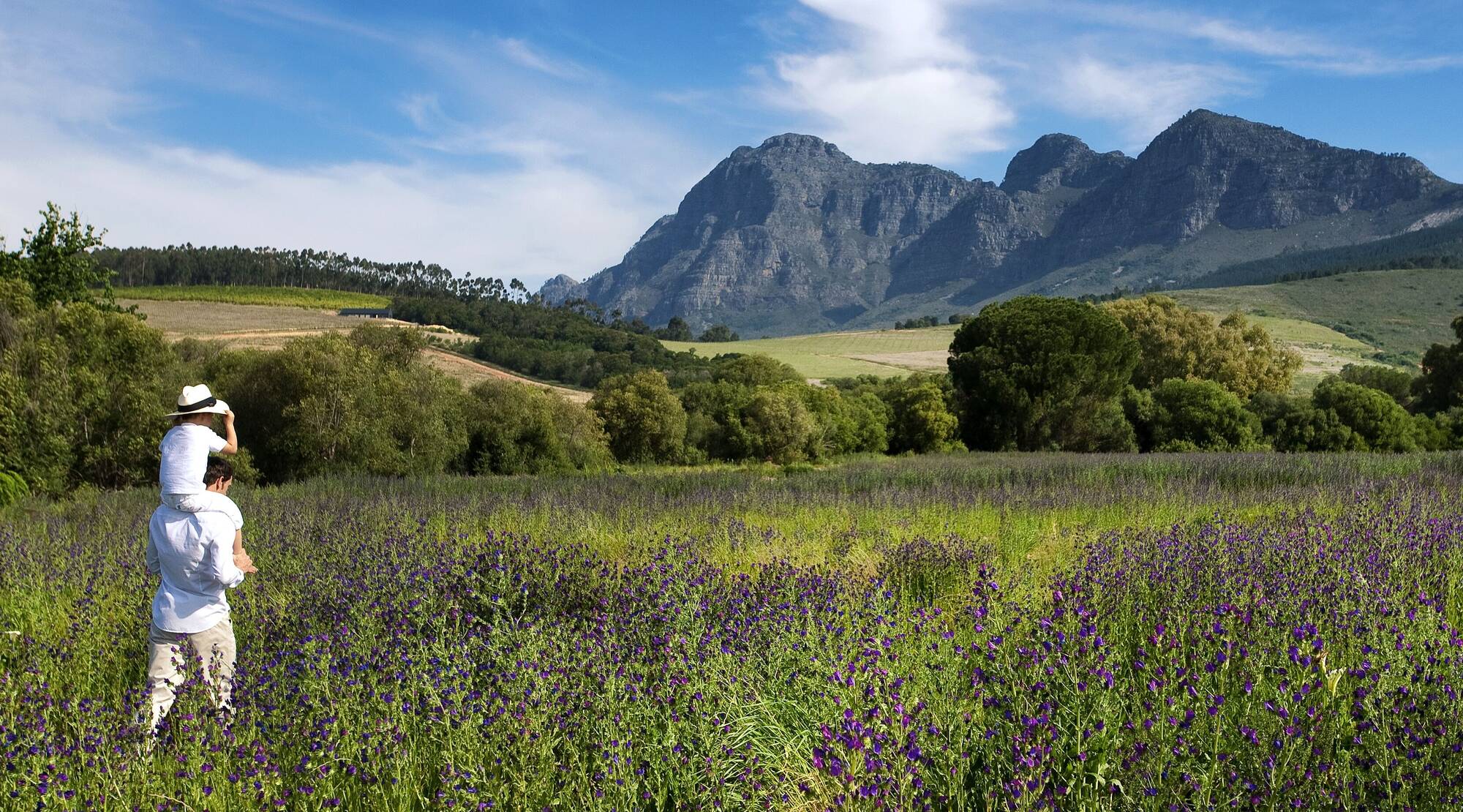
South Africa
Cosmopolitan Cape Town, world-class wineries, brilliant ‘Big Five’ safaris and spectacularly diverse scenery make South African holidays fabulously exciting and enjoyable.
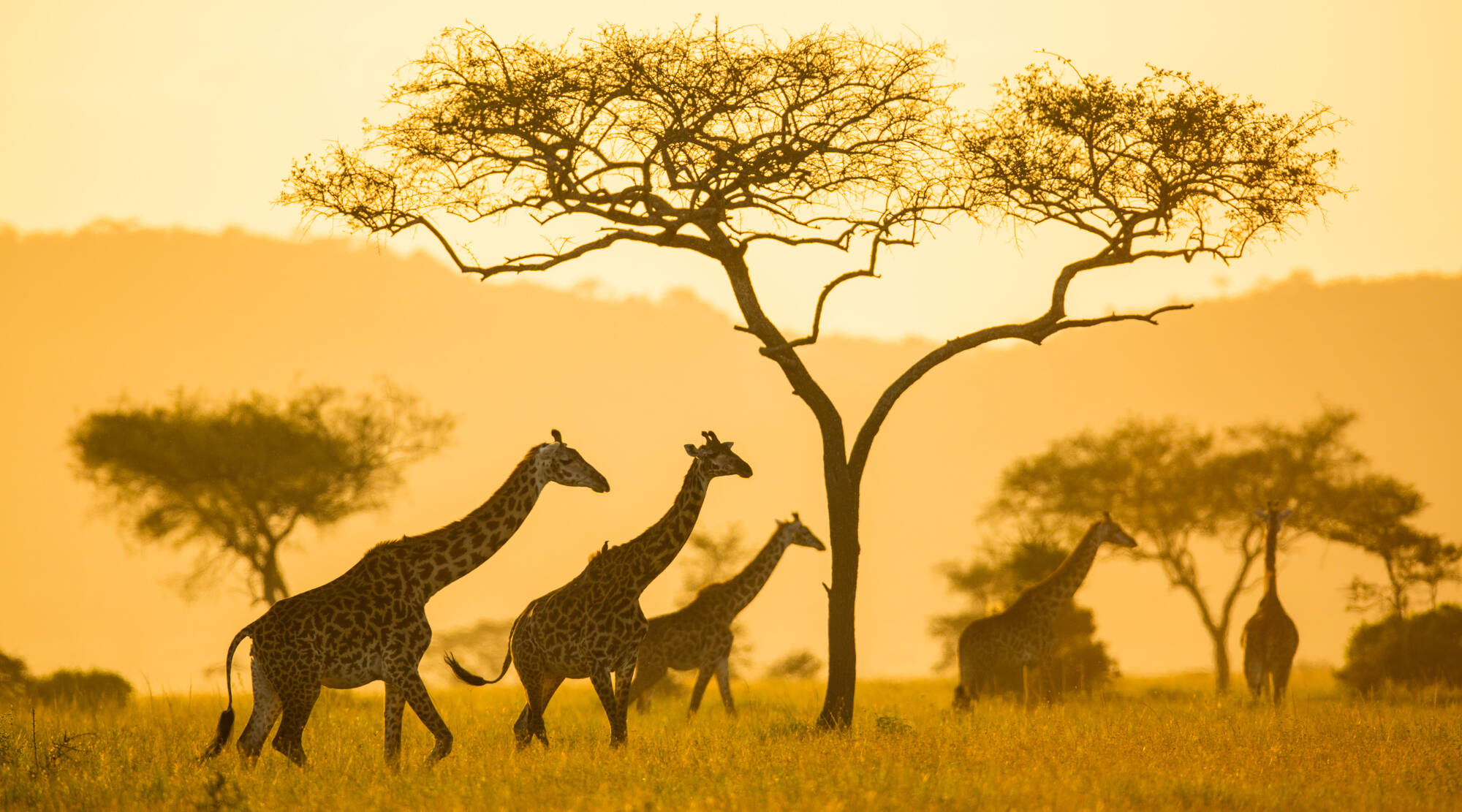
East Africa’s biggest country has a wide range of parks to explore and some of the Indian Ocean’s best island retreats.
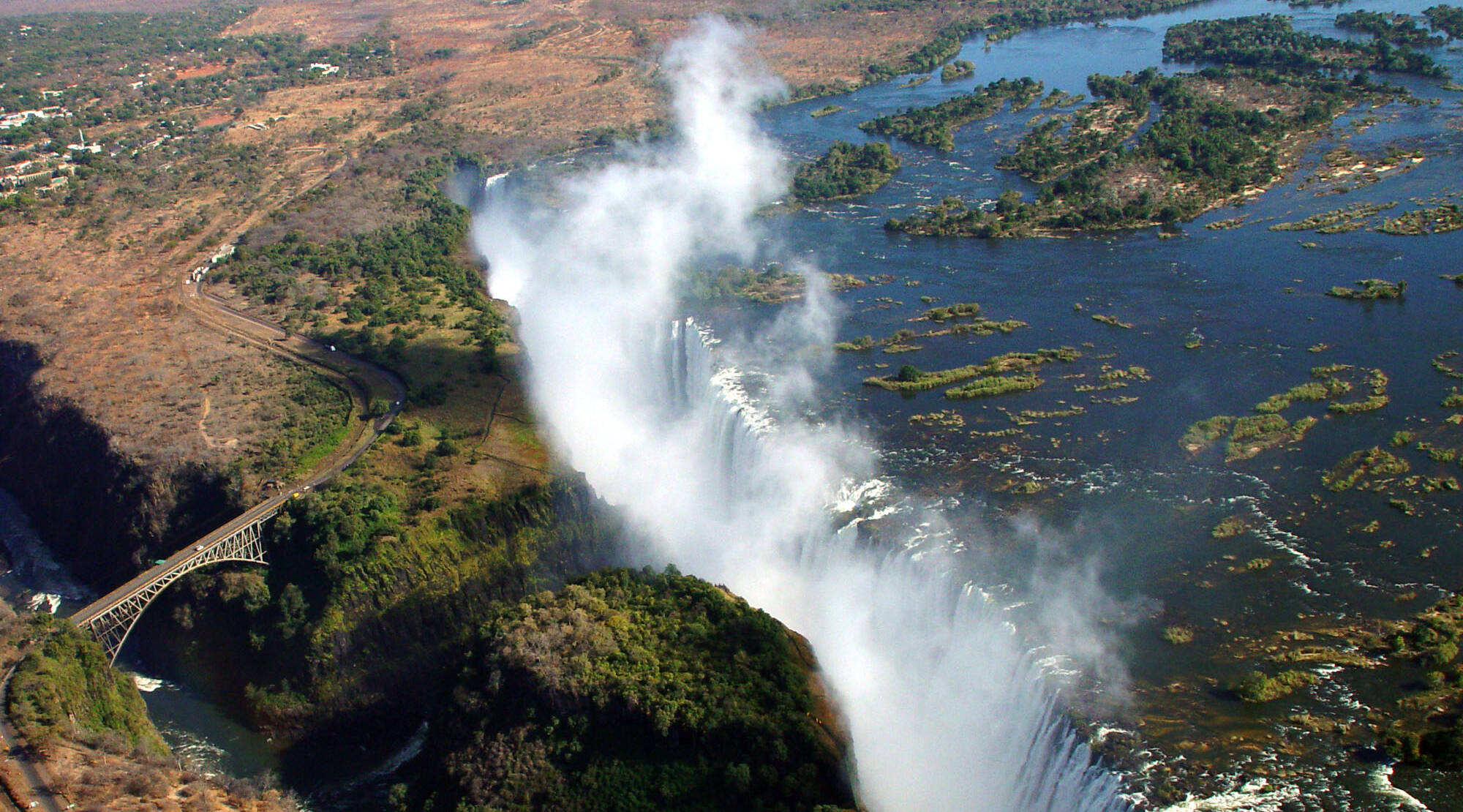
Home to walking safaris, exceptional wildlife, superb guiding and the mighty Victoria Falls, Zambia is Africa at its most alluring.
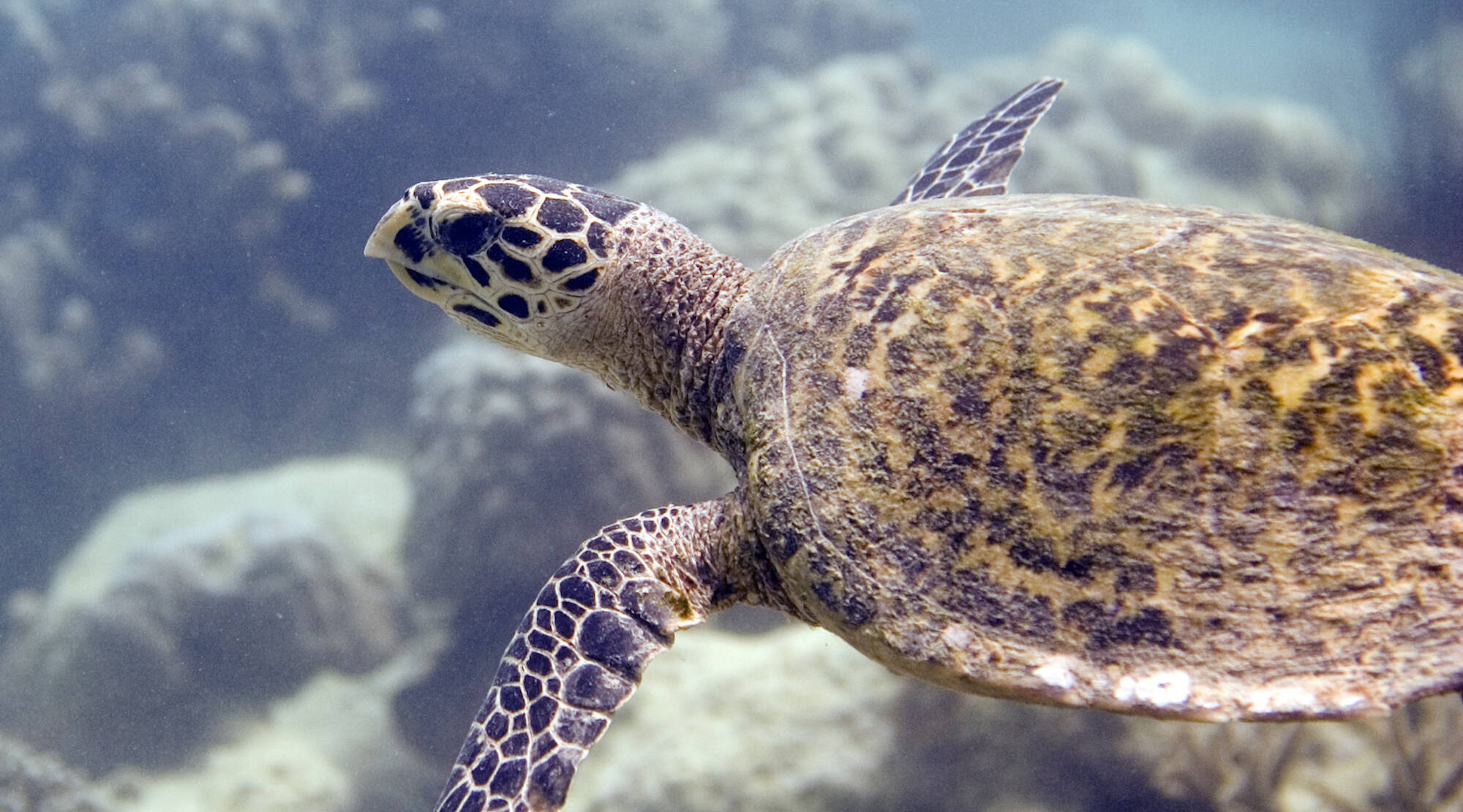
The ultimate Spice Island: Zanzibar’s mystique, marine life and chic beach retreats make it Africa’s most alluring archipelago.
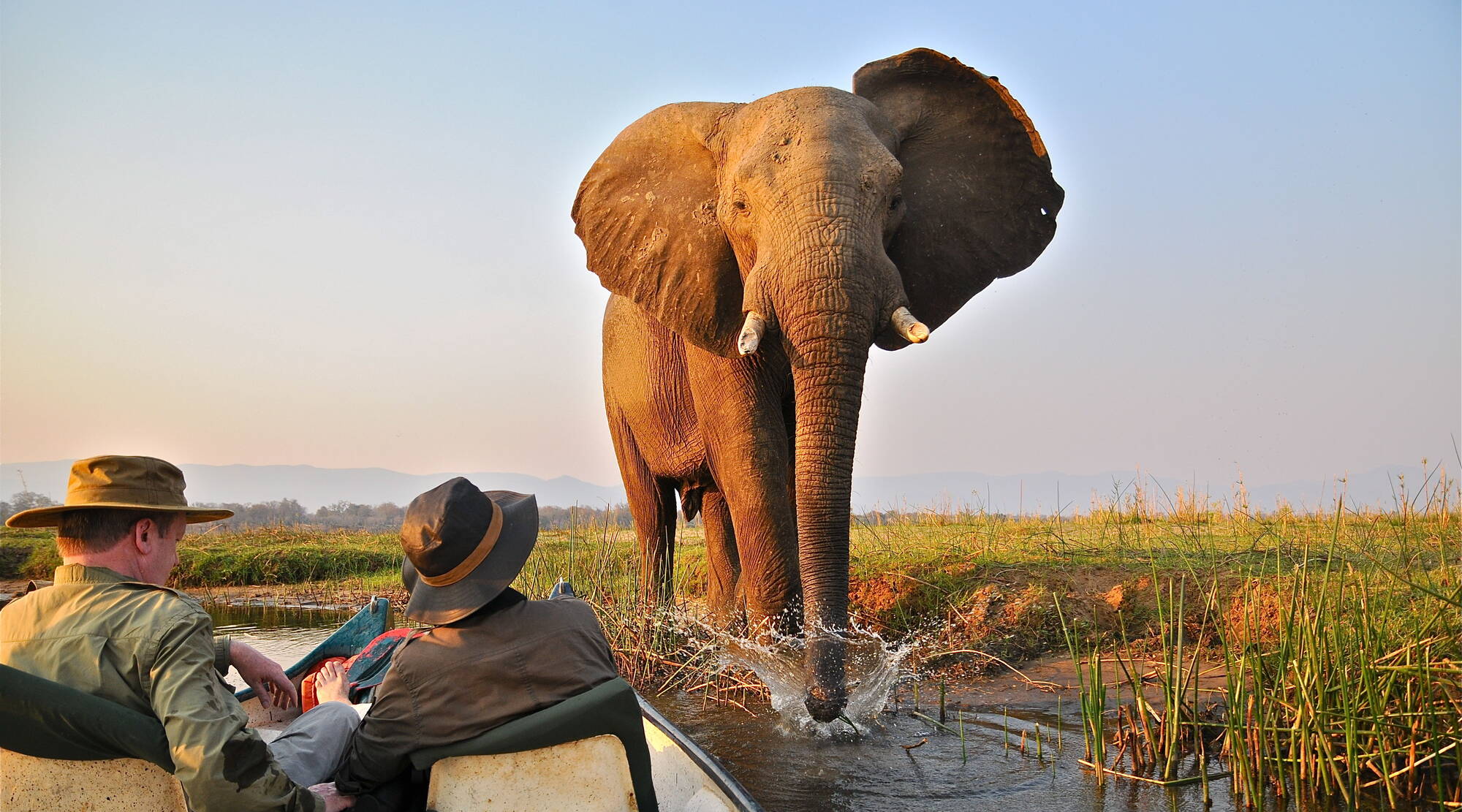
Stunning national parks teeming with game, plus Africa's finest professional guides and the spectacular Victoria Falls: Zimbabwe is enthralling.
Elephant safari in Linyanti
Login to Expert Africa
Sign in with password
Sign in with email link
New to Expert Africa? Create an account
Forgotten your details?
It's free & quick to set up
- Save your wish-list
- Send us an enquiry
- Pay online for your trip
- Subscribe to our newsletter
- Give us feedback on your trip
- Full site benefits of the site
Need some help? Talk to our team
TOP DESTINATIONS
- Kruger Park
- Okavango Delta
- Serengeti National Park
- Victoria Falls
TOP COUNTRIES
- South Africa
TRAVEL DEALS
View All Travel Deals
SOUTHERN AFRICA
East africa, indian ocean islands, top experiences.
- Beach Holidays
- Family Safaris
- Honeymoon Safaris
- Desert Safaris
- Luxury Rail Safaris
- Multi-Generational Safaris
- Positive Impact Safaris
- Photographic Safaris
- Walking Safaris
WILDLIFE SAFARI
- Big Five Safaris
- Birding Safaris
- Gorilla Trekking Safaris
- Migration Safaris
- Mobile Camping Safaris
- Horseback Safaris
FEATURED EXPERIENCES
Comfort levels, property types.
- Tented Camps
- Boutique Hotels
Featured Safari Collections
- The Safari Collection
- Green Safaris
- Saruni Basecamp
- Desert & Delta
GET TO KNOW US
- Meet The Team
- Pricing Explained
- Traveller Reviews
- Traveller Stories
- Why Book With Us?
- HerdTracker
- Safari Cost Calculator
- South Africa In 360
- Trusted Safari Partners
What are you looking for?
- Safaris & Tours
- Destinations
- Experiences
- Accommodations
- Why book with us?
Hello traveller!
It's in Cape Town now.
We're sorry. Our safari planners aren't available now. Our office hours are 08:00 - 19:00 (GMT+2).
Call us to speak to an experienced safari planner.
Alternatively, we recommend...
Schedule a phone or Zoom call with one of our safari planners
Complete our travel enquiry form to connect with a safari planner
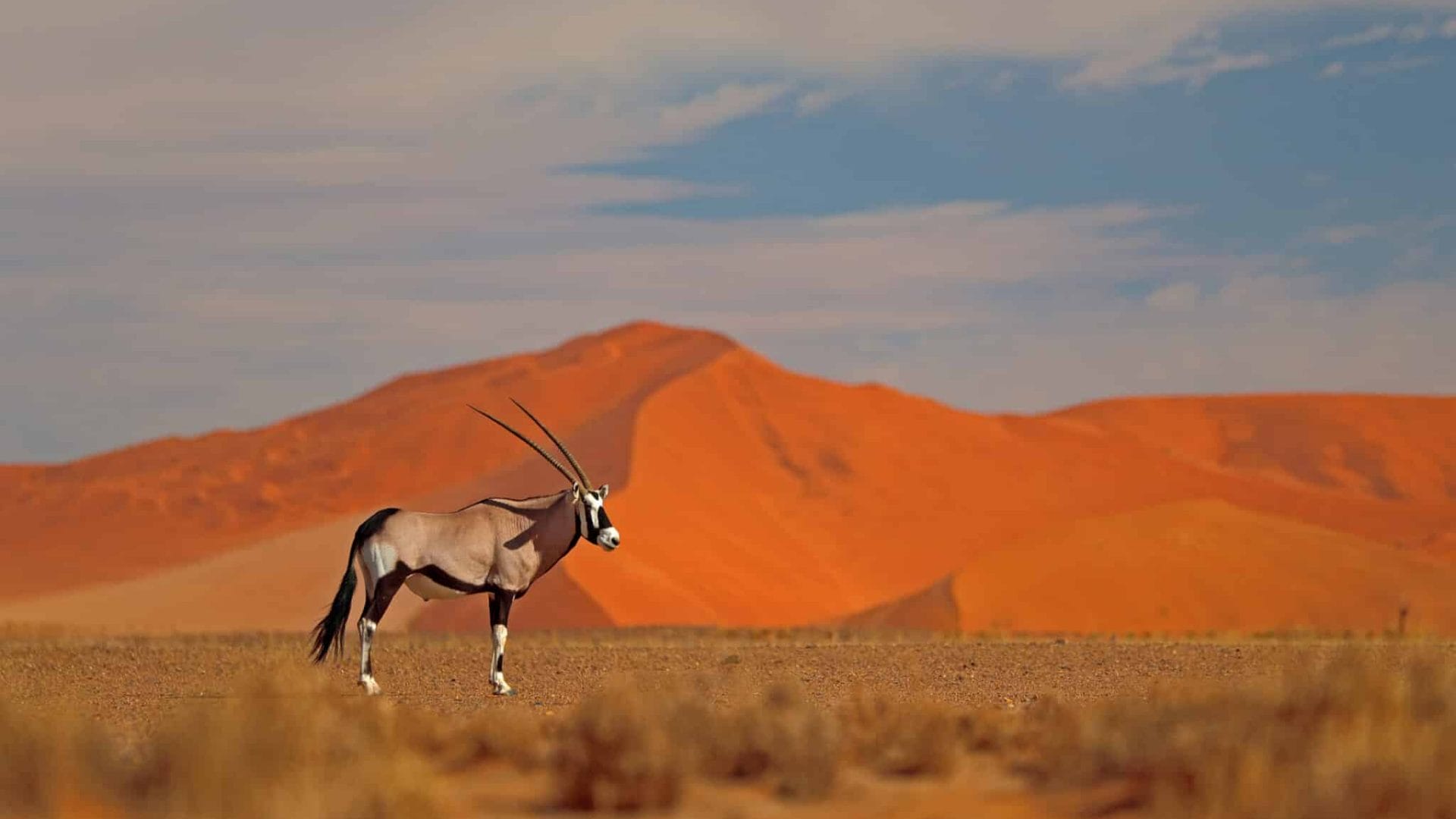
- Namibia Safari
The ultimate guide to your next Namibia Safari
Get to know namibia.

By Devryn Panaino
Safari Travel Planner
Africa’s least populated country, Namibia, captivates visitors with its vast arid landscapes, abundant wildlife, and ancient rock art.
From the world-famous red dunes of Sossusvlei to the eerie isolated beaches of the Skeleton Coast , each region of Namibia has its own distinct landscapes, wildlife, and activities.
In contrast to other southern African countries, Namibia is a true year-round destination with little seasonal fluctuations.
The chilly Benguela Current controls the weather along the coast, and coastal communities like Swakopmund , Walvis Bay , and Lüderitz are frequently covered by morning mist.
Namibia Video
How it Works
View our recommended safaris for inspiration and get ready to plan your dream safari
Contact us or fill out an enquiry form and one of our travel experts will help you tailor make your perfect safari
Enjoy an authentic African experience, with peace of mind
Why Namibia?
- Discover the unique landscapes of Namibia, including beaches, dunes, and dense bush.
- Take a birdwatching safari to see a wide variety of species in their natural habitat.
- Experience an endless variety of desert adventure activities on a safari in Namibia.
- Visit the famous Etosha National Park to see spectacular wildlife in the Namibian bush.
- Go stargazing in the beautiful Sossusvlei Reserve and discover the night sky on your Namibia safari.
- Try your hand at hardcore fishing at the eerie Skeleton Coast of Namibia for a truly unique experience.
Where to go in Namibia
- Central Namibia
- Erindi Private Game Reserve
- Etosha National Park in Namibia
- Fish River Canyon
- Namib-Naukluft National Park
- Northern Namibia
- Sossusvlei in Namibia
- Southern Namibia
- Swakopmund in Namibia
Windhoek, Namibia’s capital city, is where many people will start and end their trip, picking up supplies before they head off north to visit Etosha National Park . The Auas Mountains, the Eros Mountains, and the Khomas Hochland hills can all be seen from Windhoek.
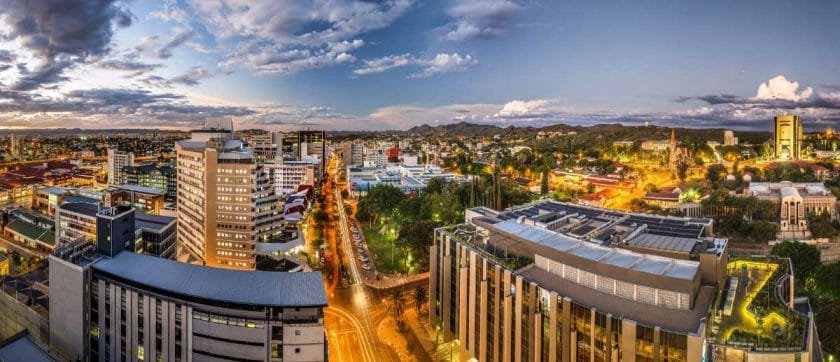
The city and its surrounding suburbs are dispersed throughout many attractive valleys at the intersection of Namibia’s main road and rail lines. The city is located in the geographic center of Namibia.
Windhoek remains the nation’s political, legal, economic, and cultural hub despite being a small and quiet capital city by international standards.
Highlights of Central Namibia
The capital city, Windhoek, is where you’ll start and end your trip if you’re flying into Namibia. Most travelers only spend a day or two in Windhoek to hire a car and stock up on provisions before driving either north or south.
Still, with its laidback atmosphere, colonial architecture, museums, and good restaurants, a quick Windhoek holiday makes for a great first stop on your Namibia vacation itinerary .
A Damaraland safari in Namibia offers a perfect blend of untamed wilderness, breathtaking scenery, majestic mountains, ancient rock art, off-the-beaten-track adventure, and thrilling wildlife sightings, making it an ideal destination for travelers seeking a unique and authentic African experience .
Located southwest of Etosha National Park, Damaraland may not be as easily accessible as other areas in Namibia (you’ll need to hire a 4×4 to explore the region’s rough roads). Still, it offers a wilderness experience you don’t find in many places in Africa.
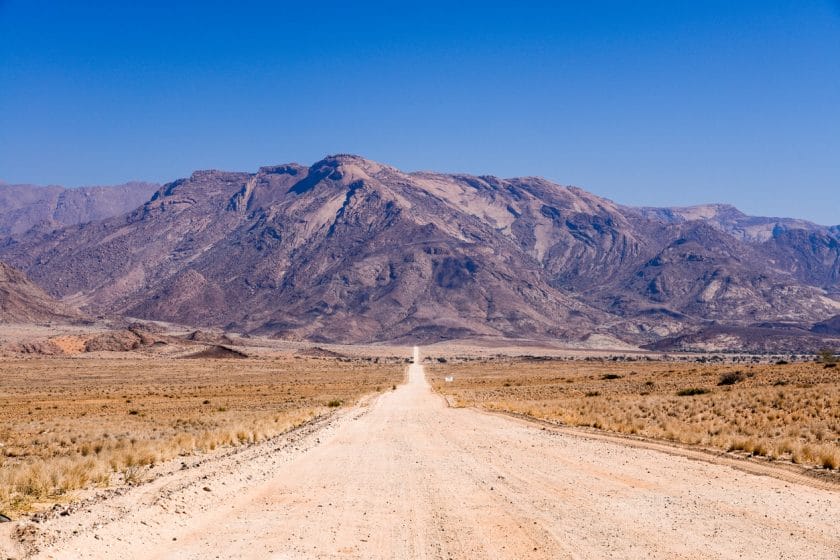
As one of Namibia’s last unofficial wildlife areas, Damaraland is unfenced so that animals can move freely outside the confines of parks and reserves.
Desert-adapted elephants, rhinos, and lions roam these vast plains and rocky outcrops. While tracking these animals can be tricky, seeing them roaming free against stunning desert backdrops is a far more exciting experience than spotting game in a wildlife park.
Brandberg in Damaraland
Animals aside, Damaraland is home to Namibia’s tallest peak – Brandberg – an imposing granite mountain that glows in the setting sun, giving rise to its name, “fire mountain”.
It’s not just for climbers, though: the ancient rock art in the mountain ravines – thousands of paintings, including the famous White Lady – is among the best preserved on the continent.
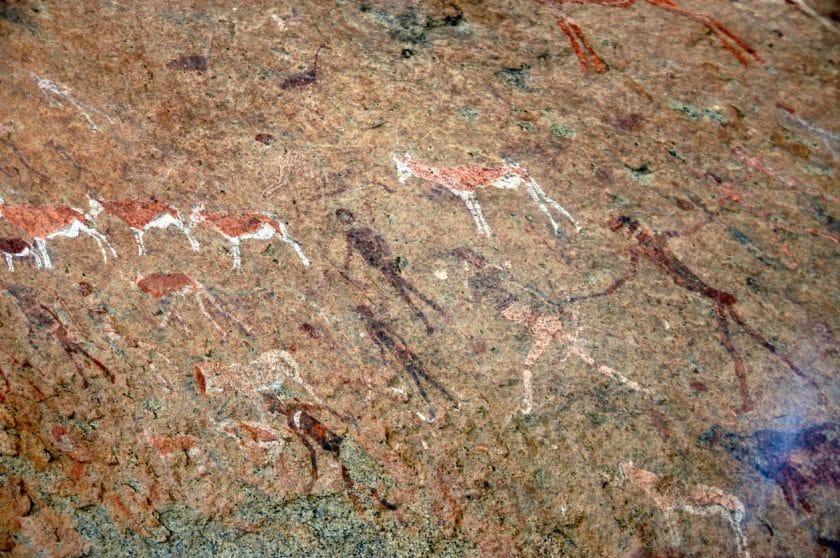
Known as the “Matterhorn of Africa”, the granite peaks of Spitzkoppe loom above the sandy plains of Damaraland. Climbing to the top is a challenge even for experienced mountaineers, but there are plenty of strikingly unusual rocky landscapes for non-climbers to explore.
Twyfelfontein in Damaraland
Damaraland’s major attraction is Twyfelfontein, where more than 2000 engravings, some thought to be over six millennia old, are etched into rock faces across the valley.
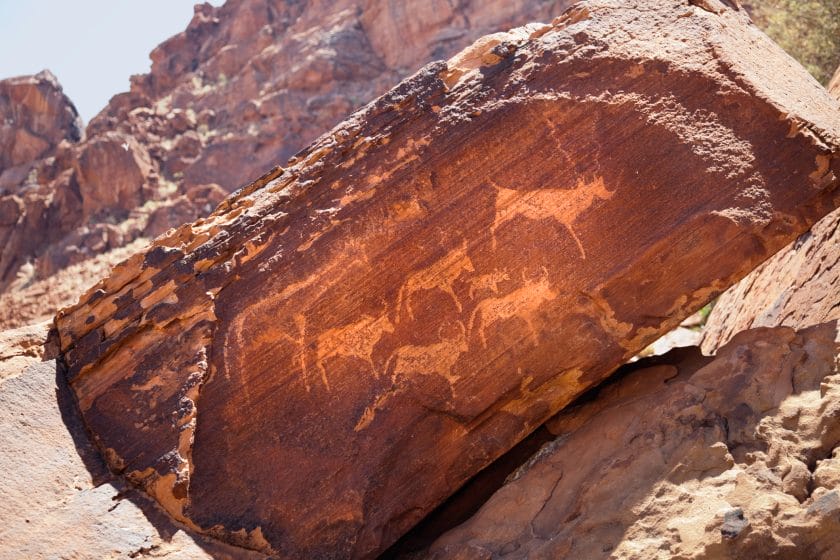
Preserving Africa’s greatest concentration of rock art, Twyfelfontein offers the chance to get a glimpse into the world of Stone Age hunter-gatherers.
Erindi Private Game Reserve is a conservation area in central Namibia. With 70,719 hectares of unspoiled wilderness under their care, they have taken on an enormous task of pursuing conservation efforts in the name of eco-friendly tourism, while also empowering their local people. Today, Erindi is a beautiful getaway with a rich cultural heritage, expert guides, and unrivaled hospitality, guaranteeing visitors have the safari of a lifetime.
One of Africa’s most incredible safari destinations , the 22 000km2 (8494 square mile) wilderness of Etosha National Park is a top highlight for many travelers to Namibia.
Made up of grasslands and woodland savanna and dominated by a giant salt pan, Etosha is home to 114 species of mammals, including four of the Big Five and the world’s largest concentration of black rhino.
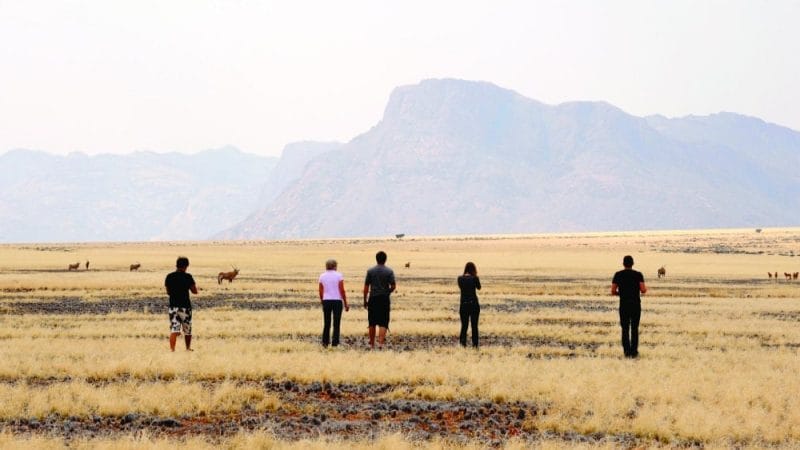
A safari in Etosha during the dry months of June to October means you’ll be treated to some of the best wildlife viewing experiences on the continent. The lack of rain forces animals to congregate around the waterholes spread out in the park.
Seeing black rhinos, herds of elephants, prides of lions, zebras, giraffes, and springboks is as effortless as parking next to a waterhole and waiting for the animals to arrive.
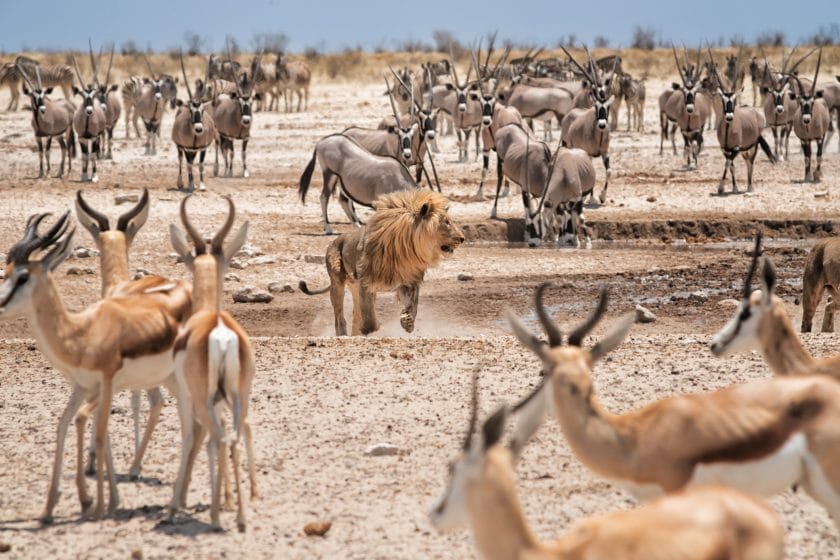
The rainy summer months have their own appeal, though. At this time of year, the vegetation is lush and green, and for tourists on birdwatching tours , there are roughly a million flamingos that use Etosha as a breeding ground and a host of migratory bird species that make the park their temporary home.
Highlights on an Etosha National Park Safari
The best experiences in Etosha are all about spotting wildlife at waterholes during the dry winter months on a Namibia safari.
A number of them are spread throughout the park near accessible roads, so all you have to do is park, kick back with a flask of coffee, and wait for the animals to arrive.
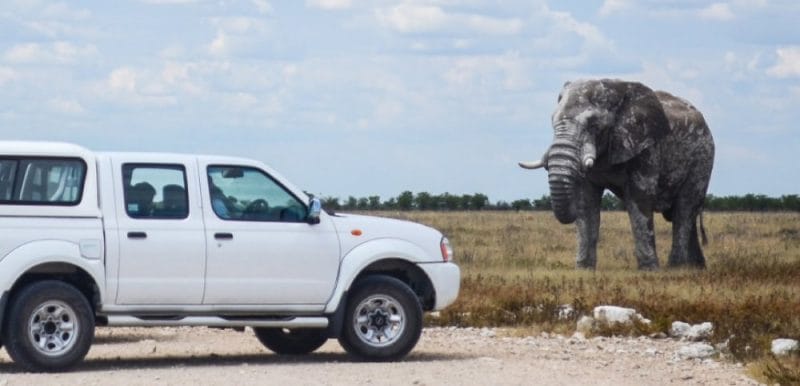
Each camp inside Etosha National Park features a waterhole where you can sit around for hours enjoying the most effortless wildlife viewing possible.
Of all the camp waterholes, Okaukuejo waterhole (at the camp of the same name) is a stand out. There’s a low wall around one side of the big waterhole, so you can sit on a bench just a few meters away from a herd of elephants having a mud bath: Etosha magic at its best.
Practical Advice for an Etosha National Park Safari
Etosha National Park is a perfect choice for a self-drive Namibia holiday. The roads are easy to navigate and are in excellent condition, suitable for 2WD vehicles, although you might prefer to hire a 4WD for better visibility.
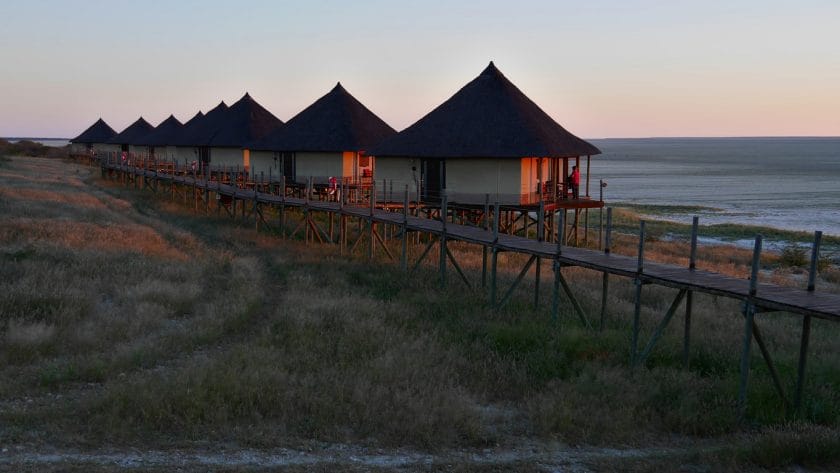
Several camps inside Etosha National park offer camping grounds, self-catering chalets, and luxury rooms, but the lodging options outside the park gates are also excellent.
Etosha National Park is best visited in the winter months, from June to September when it’s much easier to spot animals than in the rainy summer months. The winter months can get very busy, so book your lodging well in advance.
The Fish River Canyon, Africa’s answer to the Grand Canyon, is one of the best places in Namibia to stand in awe of the raw majesty of nature.
Measuring 27km/17mi wide, 550m/1804ft deep, and 160km/99mi long, it’s the largest canyon on the continent and Namibia’s greatest geological wonder.
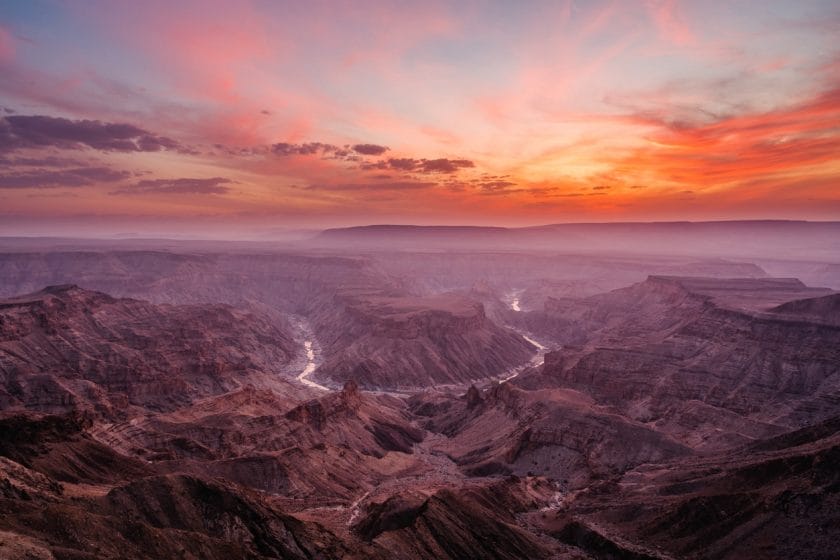
The canyon lies in different nature reserves. Its southern stretch (the deepest section) is in the |Ai-|Ais/Richtersveld Transfrontier Park, while private reserves protect its northern reaches.
The main viewpoint for the canyon is in the |Ai-|Ais/Richtersveld Transfrontier Park. This is where you’ll get the best outlook, with views of the Hell’s Corner riverbend.
Highlights of a Fish River Canyon Safari
One of southern Africa’s most popular treks and the best way to experience the canyon, the Fish River Canyon Hike covers 85km/52mi – half the length of the entire canyon – in five to seven days.
It’s a challenging self-guided camping hike, but the rewards include soaking up spectacular canyon scenery, floating in hot springs, cooling off on swims in the river, and sleeping under the stars. If you want to do some easier hikes, lodges in the area offer shorter and more leisurely walks.

Whether you do the Fish River Canyon Hike or not, soaking your body in the healing waters of Ai-Ais natural hot springs at the southern end of the canyon is a real treat. There’s a resort at the hot springs where you’ll find indoor and outdoor thermal baths and spas on the banks of a river surrounded by mountains.
Practical Advice for a Fish River Canyon Safari
In terms of lodging options for the Fish River Canyon, there’s a range of choices from campsites to luxury lodges in both the national park and private reserves.
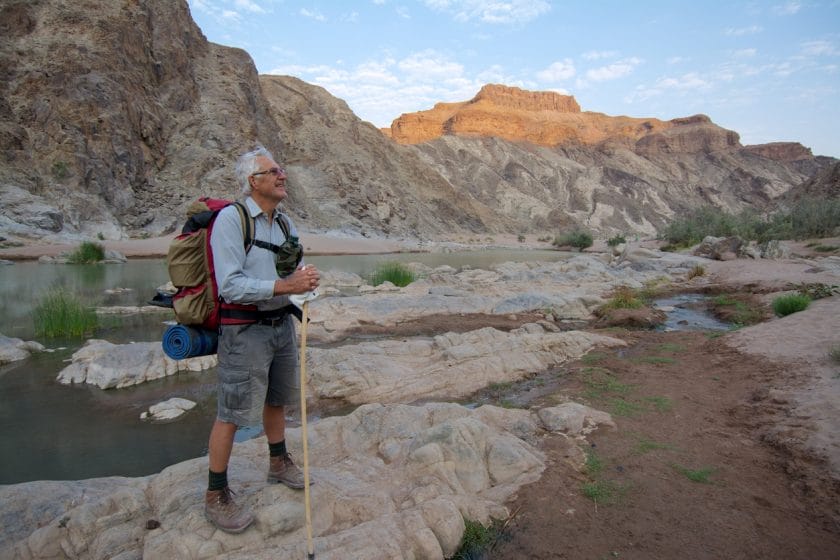
You need to book a year in advance to do the Fish River Canyon Hike, which is only open during the cooler winter months from May to September.
It’s a grueling hike, and you may experience temperatures of over 40°C/104°F, so it’s essential that you are fit, strong, and healthy before you decide to tackle it.
The fourth largest national park in the world, the Namib-Naukluft National Park is a 50,000km2 (31,068 square miles) wilderness in the Namib Desert.
It’s a place of shifting terracotta dunes, vast plains, and shimmering savanna fringed in the east by the dramatic Naukluft Mountains.

This is Africa’s largest conservation area and one of the best places on the planet for a genuinely mind-blowing desert safari experience .
Far from barren, the Namib Desert is home to a stunning array of plant and animal life, all of which have adapted to survive under a harsh sun with very little water.
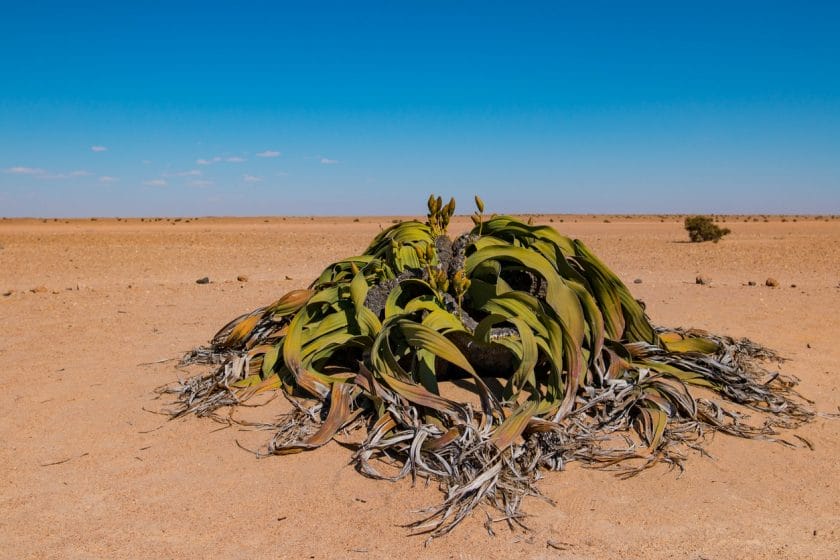
Desert wildlife includes oryx, kudu, giraffe, springbok, black-backed jackals, African wild cats, aardvarks, and leopards.
It also features more than 340 species of birds, many reptiles, and some weird and wonderful plants, such as the strange-looking Welwitschia, which can live for up to 2,000 years.
Stretching up to the Angolan border and with a slice of land sandwiched between Botswana and Zambia, northern Namibia is the country’s wildest and most remote region. Its most famous attraction is Etosha National Park , but northern Namibia also has far more to offer.
Waterberg Plateau Park in Northern Namibia
Waterberg Plateau Park in the North of Namibia has an unusual setting of a giant sandstone plateau looming over the desert plains. You can expect to find rare species such as sable and roan antelope here during your holiday in Namibia.
Damaraland in Northern Namibia
To the northwest of Namibia, you can find Damaraland. Damaraland is a starkly beautiful rugged landscape where you can explore ancient rock art sites, climb mountains, and track desert elephants and rhinos.
Kaokoveld in Northern Namibia
Kaokoveld is Namibia’s least accessible area and one of southern Africa’s last remaining true wildernesses. Desert elephants roam in vast spaces and semi-nomadic Himba people live in scattered villages.
Highlights of Northern Namibia
Etosha National Park is the standout highlight of northern Namibia and one of the top parks on the continent. Visit in the winter months to easily spot lions, black rhinos, herds of elephants, and a host of other animals as they traverse the parched landscape and congregate at waterholes.
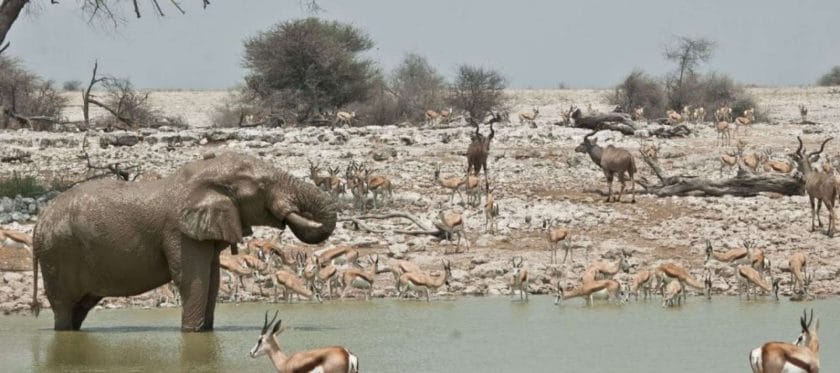
Etosha is an easy option for a self-drive holiday, with good safari lodging options spread out in the park and well-marked roads that can be navigated in a 2WD vehicle.
With its sandstone plateau towering over the plains of the desert, Waterberg Plateau Park is another excellent park to the south of Etosha, offering great wildlife viewing from waterhole hides.
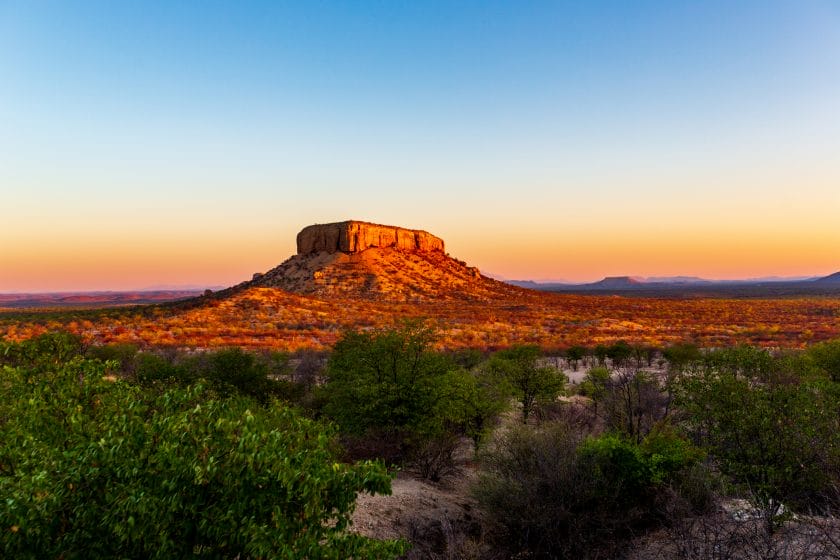
On hiking trails, you can expect to see species such as black and white rhinos, rare sable and roan antelope, eland, kudu, tsessebe, brown hyenas, and leopards.
One of the best places in Africa to take part in cheetah and leopard tracking, the 200km2 (77 square mile) Okonjima Nature Reserve is home to the AfriCat Foundation , one of the country’s best conservation initiatives.
The foundation rescues and rehabilitates cheetahs and leopards from human-wildlife conflict situations and allows you to track these predators on foot in the nature reserve. Not only is it a thrilling experience, but it also contributes to the survival of these threatened species.
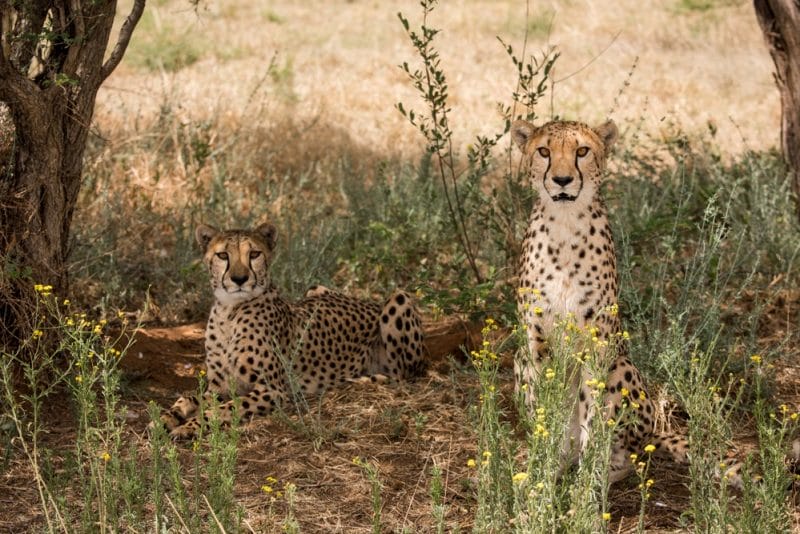
Covering a vast area in northwest Namibia, Damaraland is harsh, remote, and incredibly beautiful, a land of immense plains, deep gorges, granite outcrops, and jagged peaks. Here you can track free-roaming desert rhinos and elephants.
Damaraland is one of the only places left in southern Africa where wildlife is found outside parks and reserves.
Other highlights of the region include climbing the mountains of Brandberg (Namibia’s highest peak) and Spitzkoppe and exploring the incredible rock art gallery of Twyfelfontein (a UNESCO World Heritage Site), where more than 2500 paintings are spread across 17 sites.
To the north of Damaraland, Kaokoveld is a true wilderness and the least accessible region in the country. It’s a sparsely inhabited place of sandy tracks, massive open vistas, desert elephants, and dramatic mountain scenery.
Kaokoveld is the ancestral home of the semi-nomadic Himba people, whom you can visit in scattered villages to learn more about their fascinating culture and traditions.
Another highlight of Kaokoveld is Epupa Falls, a beautiful waterfall oasis surrounded by baobabs, fig trees, and palms.
Practical Advice for a Northern Namibia Safari
Parts of northern Namibia are extremely remote with rugged terrain and rough roads (or no roads at all), which means you need to have done some thorough research before your travels.
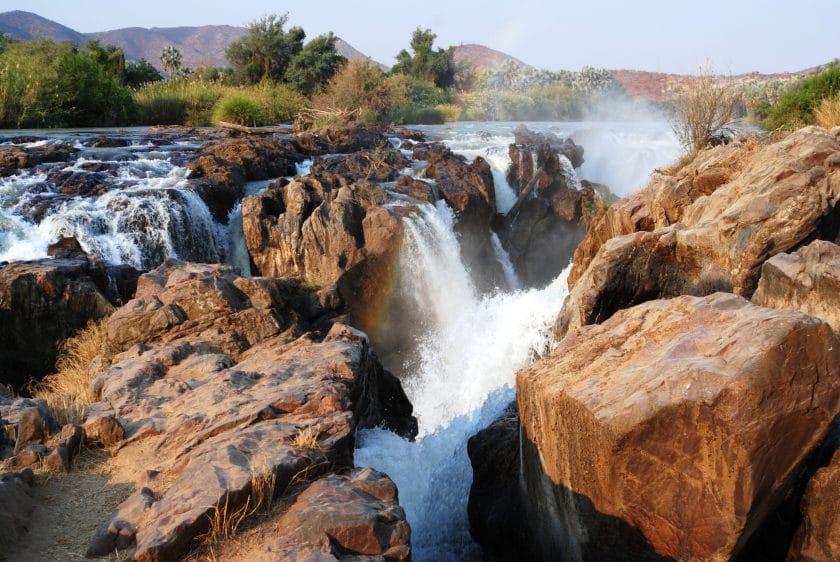
You’ll need to be prepared with two spare tires, extra fuel, and plenty of food and water. In the more remote regions, such as the Kaokoveld, it’s advisable to travel with a guide and in a convoy of at least two vehicles.
From November to May, there is a medium risk of malaria in northern Namibia, especially in Etosha National Park and the Zambezi Region. Consult your doctor about taking malaria prophylactics and take necessary precautions such as mosquito repellant to prevent being bitten.
Namibia’s most visited attraction is one of the best places to experience the serene beauty of the Namib Desert , that quintessential landscape of undulating burned orange and apricot-colored dunes towering above the desert floor.
Sossusvlei itself is a salt and clay pan encircled by dunes in central Namibia, but the name has now come to refer to the surrounding area, which includes other pans and dunes.
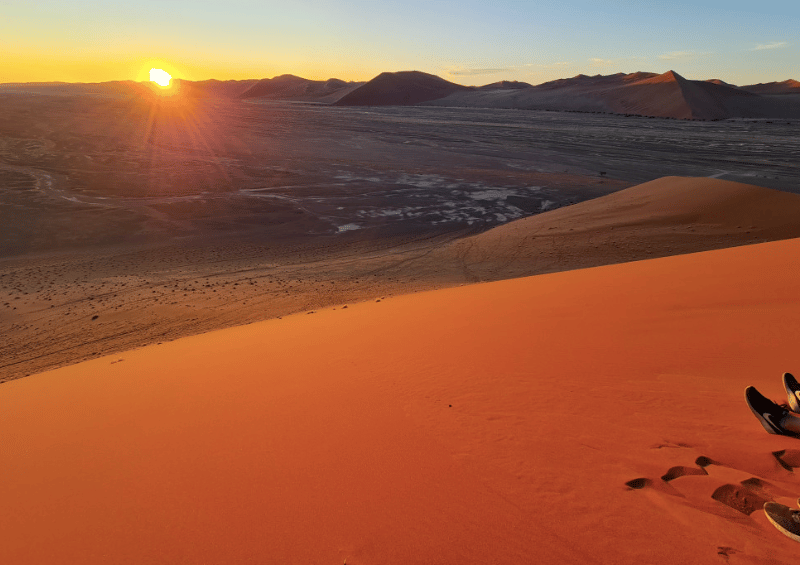
Lying within the Namib-Naukluft National Park , Sossusvlei is the only point of call in the park for many travelers due to its ease of reach and accessibility, even in a 2WD vehicle. It offers a wonderful taste of the vast and largely untouched wilderness.
Despite being the most popular place for safari in Namibia, the magic of Sossusvlei lies in just how remote and isolated you can feel, even on a busy day, when you’re on top of your own massive dune and all you can see is sand and sky as far as the horizon.
Highlights of a Sossusvlei Safari in Namibia
Near Sossusvlei is Deadvlei, another clay pan, which is even better for photographic safaris in Namibia. Surrounded by soaring terracotta dunes, the blinding white pan is dotted with the blackened skeletons of 900-year-old petrified trees under a brilliant blue sky, a scene that’s so startling you can hardly believe it’s real.
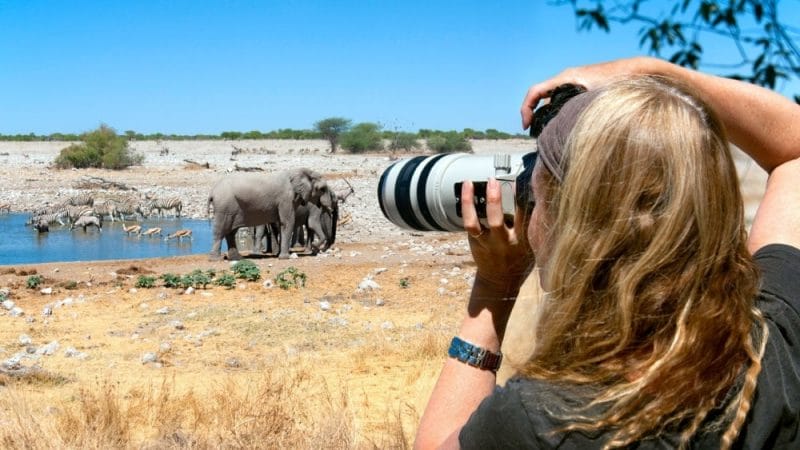
Sand dunes surround Sossusvlei in every direction. These are the world’s tallest dunes and climbing them is a highlight of any trip to Namibia. Some are famous, such as the 170m/557ft Dune 45, which is one of the most climbed dunes due to its accessibility next to the road 45km/28mi from Sesriem. Another popular dune is Big Daddy, towering 350m/1148ft above Deadvlei.

If you want to find your own sandy spot away from other travelers, just pick a slope and climb to the top for breathtaking views over a never-ending sea of dunes. Soaring high above Sossusvlei and the Namib Desert in a hot air balloon as the sun rises is one of Namibia’s most unforgettable activities.
Practical Advice for a holiday in Sossusvlei
Sossusvlei lies within the Namib-Naukluft National Park. You need to buy a permit to enter the park, and your visit is limited to the hours of the gates, which close around sunset and open around sunrise.
The best times to explore Sossusvlei are in the early morning and late afternoon, when the sun isn’t so harsh, and the golden light makes the desert glow.
Check the opening and closing times of the gates (they differ in summer and winter months) to plan your visit, and bear in mind that it’s a 60km/37mi drive from the parking area of Sossusvlei to the gate, so leave enough time in the afternoon to drive back before the gates close.
If you want extra time before sunrise and after sunset, you can opt to stay at one of the two lodging options within the park – a campsite or an upmarket luxury lodge.
The last few kilometers to Sossusvlei are on a sandy track that’s only suitable for 4x4s. If you’re traveling in a 2WD, you can park your vehicle in a car park and get a ride in a safari shuttle.

The Petrified Forest in Namibia is a national monument with 280 million-year-old petrified trunks. Take caution when visiting, and avoid sitting on trunks or damaging any part of the monument.
There are plenty of lodging options near the entrance of Sossusvlei in the tiny village of Sesriem and just a short drive away. Take your pick from well-maintained campsites with all the amenities you would need to high-end luxury lodges set in private reserves.
Bordering South Africa, Namibia’s southern region has a lot to offer in terms of wild desert landscapes and outdoor activities, ranging from canoeing on the Orange River through the other-worldly desert scenery of the |Ai-|Ais/Richtersveld Transfrontier Park to hiking the jaw-dropping majesty of the Fish River Canyon, Africa’s largest canyon.
Southern Namibia may not be a prime safari destination , but what it lacks in famous wildlife, it makes up for in sublime desert scenery. Imagine sandy plains dotted with quiver trees, jagged granite mountains, and imposing rock formations.
The standout highlight of southern Namibia is the Fish River Canyon, but the rest of the |Ai-|Ais/Richtersveld Transfrontier Park is also full of desert wonders, including the richest diversity of succulent flora in the world.
On the coast, Lüderitz is an intriguing colonial town, while nearby Kolmanskop, a ghost town, is one of Namibia’s most photographed places and lies on the edge of the Sperrgebiet National Park, Namibia’s newest national park.

Most of the park, a diamond mining area closed to the public for a century, remains inaccessible, but travelers can now visit on guided expeditions to explore a rich, succulent biome, a colossal rock arch, and two mysterious ghost towns.
At Namibia’s border with South Africa, the Orange River meanders its way through wild desert landscapes. Taking a paddle down the river in a canoe for a few hours or days is the perfect way to take in this southern beauty at a slow pace.
Further north, the NamibRand Nature Reserve is a vast concession on the edge of the Namib-Naukluft National Park, where you see desert wildlife such as oryx and springbok against a backdrop of apricot-colored dunes and silvery plains. Highlights of a Southern Namibia Safari
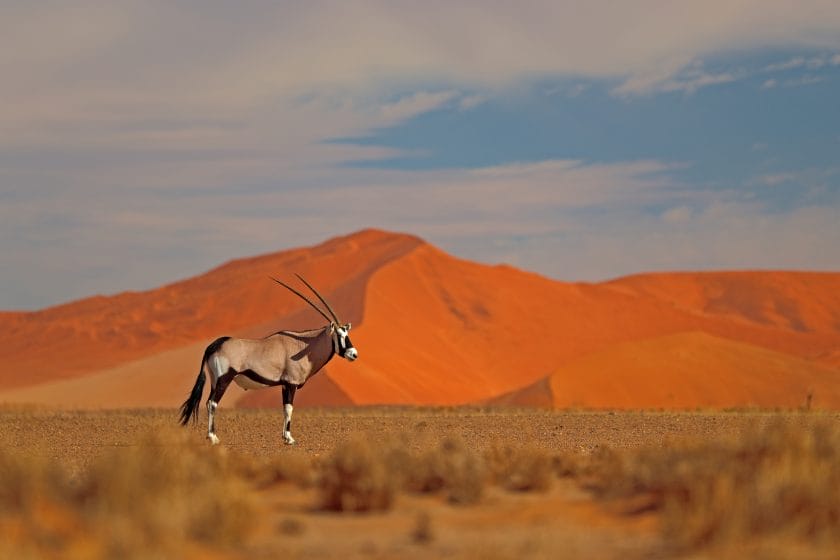
Crossing over the border of South Africa, the |Ai-|Ais/Richtersveld Transfrontier Park has some wildlife such as oryx, springbok, zebra, and baboons, but with its low density of animals and lack of big game, it’s not usually known as a prime safari destination.
Instead, travelers visit the park for its out-of-this-world Mars-like landscapes of looming mountains, boulder-strewn plains, striking quiver trees, and its incredible diversity of plant life (try to visit in August and September when wildflowers are blooming).
The park is the world’s only arid biodiversity hotspot, conserving the richest diversity of succulents on the planet. Another highlight of the park is the |Ai-|Ais thermal hot springs, where you can soak in outdoor baths under the shadow of mountains in a photogenic setting.
The ancient water-carved Fish River Canyon, Africa’s largest canyon at 550m/1804ft deep and 160km/99mi wide, is a truly humbling sight to take in and the star attraction of the |Ai-|Ais/Richtersveld Transfrontier Park.
Standing on the edge of the gorge and peering down into the abyss makes you realize how small and insignificant you are compared to the mighty forces of nature.
There are easy hikes around the canyon, but if you’re up for a challenge, the 85km/52mi multi-day Fish River Canyon Hike, which traverses half the gorge’s length, is the best way to get to grips with this geological wonder.
Canoeing trips on the Orange River, which forms a natural boundary with South Africa, are a must-do when traveling southern Namibia. Whether you have a few hours or days, paddling down the river at a gentle pace is the perfect way of taking in the desert scenery.

A few different outfitters offer guided trips that include all your meals and camp setup, so all you have to do is spend your days paddling and swimming and enjoying magical nights sleeping under a sky thick with stars.
The colonial coastal town of Lüderitz is an interesting place to visit, with its historic mansions and restaurants serving tasty fresh seafood (don’t miss the local oysters). Activities not to be missed are boat tours to a Cape fur seal sanctuary and penguin colony.
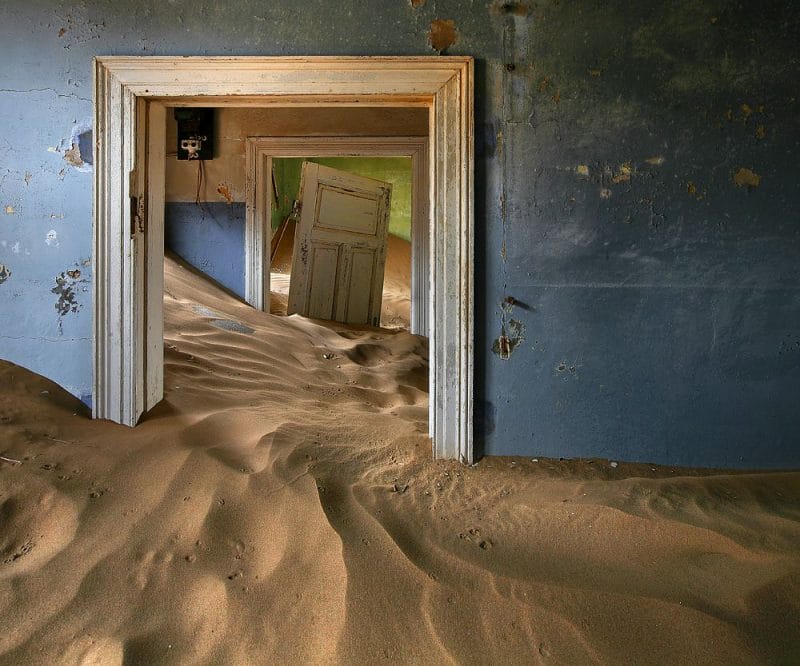
Close by, the abandoned diamond mining town of Kolmanskop is now a ghost town and one of Namibia’s most photogenic places. It’s an eerie experience to wander around the town’s crumbling buildings, slowly being swallowed by the desert sands.
When you’re driving between Lüderitz and Aus, keep an eye out for the herd of wild horses (the world’s only wild desert horses) that roam this area of this desert and can often be seen near the road.
Another worthy roadside stop is the beautiful Quiver Tree Forest near Keetmanshoop, where 250 of the unusual and striking-looking quiver trees (or kokerboom) stand sentinel over grass and boulders.
Practical Information for a Southern Namibia Safari
It’s easy to drive to southern Namibia from South Africa, so if you’re thinking of traveling to South Africa on your holiday , you might want to consider flying to Cape Town and renting a car to drive up to Namibia .
If you’d like to hike the Fish River Canyon, you need to go during the cooler months from May to September and be sure to book a year in advance.
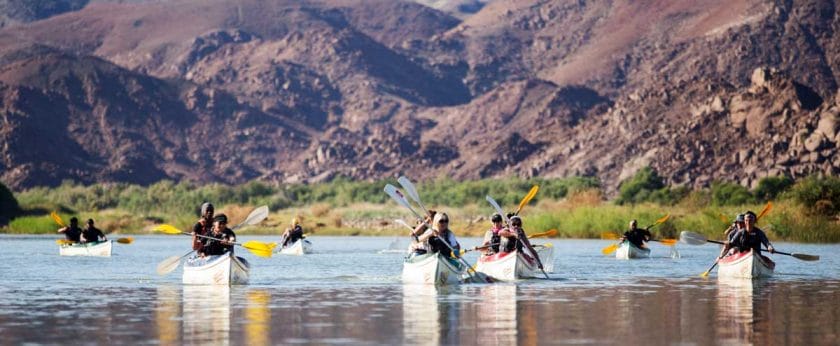
While the |Ai-|Ais/Richtersveld Transfrontier Park is extremely hot during the summer months from November to March, it’s a good time to do a canoeing trip down the Orange River as you spend a lot of the day in the water and can sleep under clear night skies.
Don’t attempt to enter the Sperrgebiet (Forbidden Area) unless you’re on a guided tour – it’s a diamond mining area, and you will be prosecuted for trespassing without a permit.
Sandwiched between the ocean and the Namib Desert, Swakopmund, a coastal town in central Namibia, is one of the most popular places in the country for travellers to visit.
The laidback town has charm by the bucketload with its colonial architecture, oceanfront promenades, historical sights, cosy guesthouses, and excellent restaurants and beer houses where you can sample traditional German food and beer.
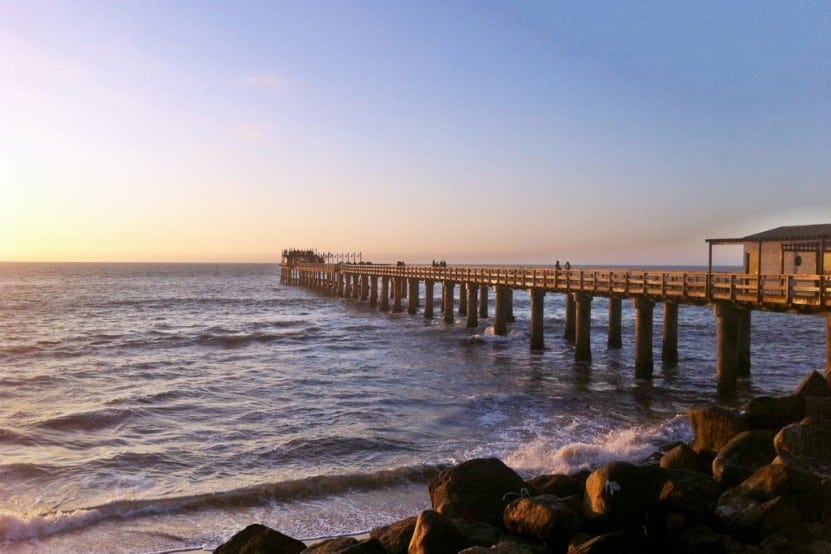
Swakopmund is a perfect base for exploring the coast, from taking boat and kayaking trips from Walvis Bay to spot the abundant marine life of the Atlantic Ocean to going birdwatching at Sandwich Harbour further south.
It’s also a centre for adventure activities – it’s easy to fill several days with adrenaline-pumping fun. Take your pick from sandboarding down the huge dunes just outside of town, quad biking in the desert or sky diving.

The Living Desert Tour is a wonderful activity for families to experience. Guided by an expert, you will embark on a walk through the Namib desert and learn about the unique plants and animals that have adapted to thrive in harsh environments.
Another great family-friendly holiday option is the Welwitschia Drive, a short road trip through the Namib-Naukluft National Park, showcasing some of the most interesting and unique sights, including the oldest welwitschia plant in the world, estimated to be over 1500 years old.
Travel with Confidence
With over 20 years of experience, our team will help you choose the perfect african safari for your adventure., 24/7 support, personalized, popular namibia safaris, these recommended tours for namibia can be tailor-made to match your budget..
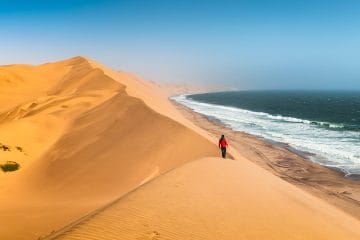
From Namibia to Victoria Falls - Marvels of Sou...
Southern Africa Namibia Swakopmund Sossusvlei Twyfelfontein Etosha
From $ 4420 /USD
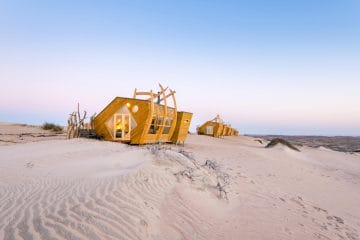
Classic Namibia Flying Safari
Southern Africa Namibia Sossusvlei Damaraland Kunene Region
From $ 9290 /USD
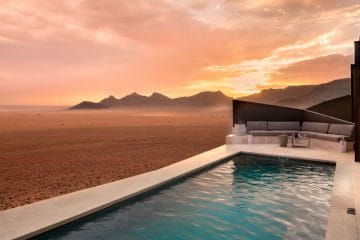
Sossusvlei Dunes Luxury Fly-in
Southern Africa Namibia Sossusvlei Windhoek
From $ 4790 /USD
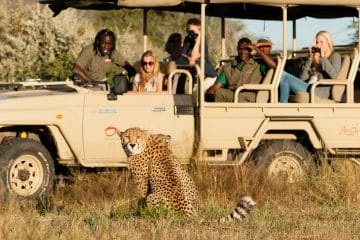
Conservation Safari in Namibia
Southern Africa Namibia Etosha Twyfelfontein Swakopmund Sossusvlei
From $ 8500 /USD
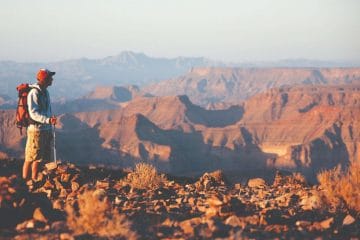
South Africa and Namibia Self-drive Adventure
South Africa Cape Town Namibia Fish River Canyon Sossusvlei Swakopmund
From $ 2200 /USD
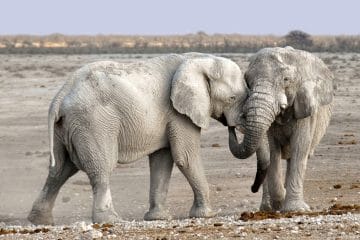
Etosha, Namibia Self- Drive Adventure
Southern Africa Namibia Etosha Windhoek Swakopmund
From $ 2100 /USD
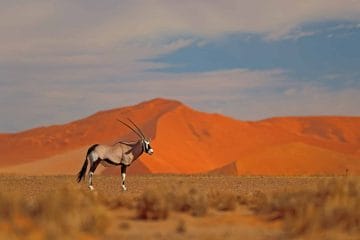
11 Namibia Safaris to choose from
Stay for 5 - 16 days
Experience our Tailor-made Tours in Namibia
When is the best month to travel to namibia.
- Namibia in January
January is midsummer in Namibia when temperatures in most of the country are scorching, and some parts of Namibia receive heavy afternoon showers.
The summer rains mean the foliage in Etosha National Park is at its greenest, making for beautiful photos and good birdwatching tours , but wildlife spotting is more challenging than in the drier months.
January is an excellent time to visit the Skeleton Coast as the weather is mild and sunny.
- Namibia in February
February is the wettest, hottest, and most humid month in Namibia for safari. It’s the low season, which means lower room rates and fewer other travelers.
It’s tricky to spot wildlife in Etosha, but it is birthing season, so if you’re lucky, you’ll get to see some newborn antelope calves.
- Namibia in March
The rains start to ease off in March, but it’s still hot and humid. It’s still a good month for birdwatching safaris in Namibia, but finding wildlife in places such as Etosha remains challenging due to the lush vegetation.
- Namibia in April
April is a lovely time to visit Namibia, especially if you’re a photographer. The weather is mild, the skies are clear, and the landscapes are green. It’s still the low season, so you can get good deals on room rates.
- Namibia in May
May is a good month for Namibia travel, with moderate temperatures, green vegetation, and clear skies. If you want to do a serious hike, the Fish River Canyon hike opens for the winter season at the beginning of the month.
- Namibia in June
Desert temperatures drop off in June. While daytimes are pleasant, nights can be freezing. Without rain, the landscape has become much drier and vegetation sparser, making this a good time for a visit to Etosha , where it’s just started to become easy to spot animals congregating around waterholes.
- Namibia in July
July is the driest month of the year, so it’s an excellent time to visit the game parks, especially Etosha, where it’s easy to see hundreds of animals vying for space around waterholes. Daytime temperatures are mild, and nighttime temperatures can drop well below freezing.
- Namibia in August
August is a popular time to travel to Namibia, so be sure to have your lodging booked far in advance. It’s an excellent time to see wildlife in the parks, and a good time to do outdoor activities as daytime temperatures remain mild (although be prepared for freezing nights). In August, you can see beautiful carpets of wild spring flowers covering the arid |Ai-|Ais/Richtersveld Transfrontier Park.
- Namibia in September
September is an ideal time for visiting Namibia. Daytime temperatures are still pleasant, and nights are a bit warmer. It’s still dry, so game viewing is excellent. Early to mid-September is the last time you can hike the Fish River Canyon before it gets too hot, and also the last month to catch the wild spring flowers in |Ai-|Ais/Richtersveld Transfrontier Park.
- Namibia in October
October gets very hot and dusty in Namibia, though it’s still an excellent time to visit Etosha for safari in terms of dry landscapes and easy wildlife spotting. This is the best month for spotting Southern Right, Humpback, and Minke whales as they pass through the Atlantic Ocean near Walvis Bay.
- Namibia in November
The first summer rains generally start in November, and the temperature drops a bit, although much of the country doesn’t receive much rainfall. This month is the end of the season for whale migration. November is an excellent time to visit the Skeleton Coast National Park , as the weather is mild.
- Namibia in December
With the summer rains in December, Namibia’s arid landscapes turn green, attracting migratory birds and making this an ideal time for birdwatchers. December is a busy time of year to travel in Namibia because of the Namibian and South African school holidays over the Christmas and New Year period. Be sure to book in advance for lodging and campsites.
Our Recommended Tours in Namibia
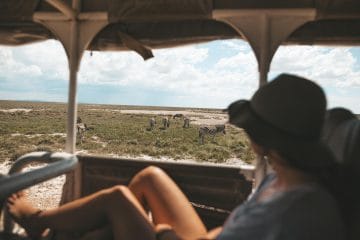
Namibia Self-Drive Adventure
Southern Africa Namibia Swakopmund Windhoek Etosha
From $ 1575 /USD
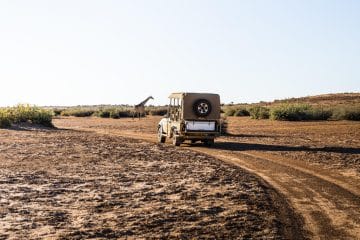
Namibia Highlights Group Tour
Southern Africa Namibia Sossusvlei Damaraland Etosha Swakopmund
From $ 2290 /USD
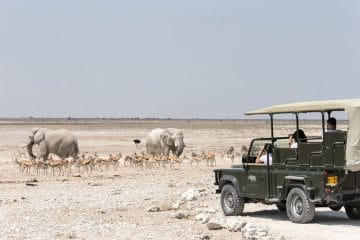
Affordable Namibia Adventure
From $ 4400 /USD
Looking for Something Unique?
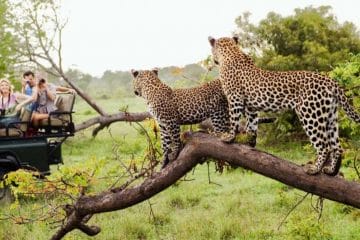
Big Five Safaris in Africa
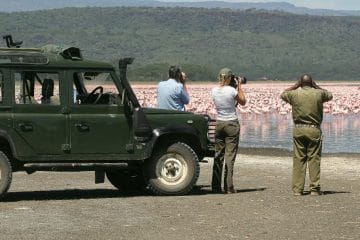
Birding Safaris in Africa

Desert Safaris in Africa
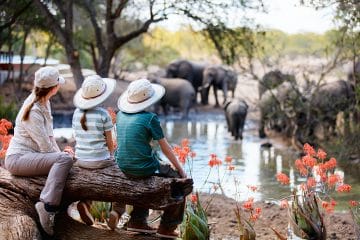
Family and Kid-Friendly Safaris in Africa
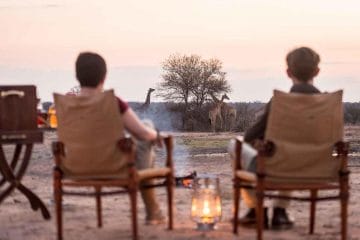
Honeymoons in Africa
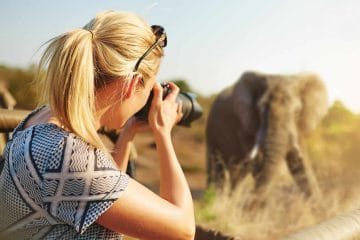
Photographic Safaris in Africa
Why travel with us?
Recent reviews from travellers who planned and booked their africa trips with discover africa safaris, left us with lasting memories and a bucketload of amazing pictures..
Cape Town, Sabi Sands, Victoria Falls & Botswana Safari Review
Nancy Loos, United States 05 Sep 2022
Megan and steve are professional, friendly ,helpful ,listened to our needs and....
Safari in Namibia Review
Jenny, South Africa 16 Jan 2022
Hassle free and very professional service from start to finish..
Motswari Game Reserve & Cape Town Tour Review
Debbie, Australia 16 Mar 2020
Trip of a lifetime.
African Anniversary Getaway Review
Dani, Canada 09 Jul 2019
5 star service for a great family vacay.
Affordable Chobe & Okavango Delta Safari Review
Payal, United States 23 Nov 2018
Discover africa was extremely prompt and responsive..
Two-week Honeymoon in South Africa Review
Paul, United States 19 Jun 2017
Ready to plan your tailor-made safari.

Devryn Panaino, Safari Travel Planner
Free safari planning advice from destination experts
Faqs about namibia.
- A safari in Namibia is best done between July and October, when temperatures are just above 20°C and the chance of rain is low. This is also the best time for wildlife viewing, making it peak travel season.
- Blue wildebeest
- Bat-eared foxes
- Neutral-coloured clothing
- Long-sleeved shirts that provide sun and mosquito protection
- T-shirts and shorts for warmer days
- Evenings and cooler days call for jeans or long pants
- Sossusvlei is located about 350km southwest of Windhoek (southern part of the Namib Desert). It is a salt and clay pan surrounded by the high red dunes' of Namib-Naukluft National Park.
- Sossusvlei has a wide range of different types of accommodation from the luxury side to the budget side of things. Examples of this include; The Desert Camp, Desert Quiver Camp, Le Mirage Desert Lodge & Spa and much more.
- You can fly to Sossusvlei from Windhoek or you can drive to Sossusvlei
- The road to Sossusvlei is extremely beautiful and is a great journey to add to a Safari in Namibia
- There are many lots of routes to drive depending on where you are starting your journey
- Visit the Cheetah Conservation Fund
- Combine the Waterberg National Park with an authentic Namibian Safari
- Explore the Rare and Endangered Species trust
- The driving distance from Otjiwarongo to Waterberg Plateau National Park is 113 km.
Visit the historic Lutheran church - Christuskirche
Go walking at Avis Dam Nature Reserve in Windhoek
Explore the Independence Memorial Museum
See the Gibeon meteorites on your Windhoek Holiday
Visit Joe's Beerhouse
- Windhoek, the capital city of Namibia, is located roughly in the country's centre.
- It is located about 400 miles (650 kilometres) north of the Orange River and 760 miles (1,225 kilometres) north of Cape Town.
- The most well-known rock art areas are Damaraland's Brandberg Massif (2697m – mostly painting sites) and Twyfelfontein, a UNESCO World Heritage rock art site also in Damaraland.
- Visit the Twyfelfontein and Brandberg Massif Bushman rock art sites
- Explore Spitzkoppe or take photos from afar on your Damaraland holiday
- Learn about the amazing Damara culture on an organised cultural tour
- Try out scenic flights over Damaraland and see the beauty of the Namibian landscapes
Otjiwarongo has a variety of lodges, guesthouses and hotels to choose from.
- Before heading out for a Namibia safari , it’s important to receive a few key vaccinations.
- The World Health Organization and Centre for Disease Control recommend the following vaccines. Hepatitis A, Typhoid, Hepatitis B, Rabies, Yellow Fever and Routine Vaccinations. Source: https://www.passporthealthusa.com/2016/06/which-vaccines-do-you-need-for-namibia/
- Electricity in Botswana, Kenya, Namibia, South Africa, Tanzania, Zambia, Zimbabwe and in most of the continent is 220/240 volts.
- Most safari lodges and camps are not connected to an electrical supply. Solar lighting (backed up by batteries) is common, with many lodges having a generator, which runs part of the day (morning and late evening when guests are out on their activities).
- Lanterns also provide light at night. In many camps running on solar power, you will not be able to use a hairdryer.
Our Recommended Activities in Namibia
- Adventure Activities in Namibia
- Camping in Namibia
- Cultural Tours in Namibia
- Fishing in Namibia
- Hot Air Balloon Rides over the Namib Desert
Planning your Namibian adventure holiday is a matter of deciding which sorts of experiences you’d like to have. Without much planning or preparation, you can have a jam-packed itinerary full of adventurous activities , some of which are suitable for the whole family.
Just by staying in Swakopmund, various tour operators offer everything from skydiving and sandboarding down massive desert dunes to quad biking and ocean kayaking.
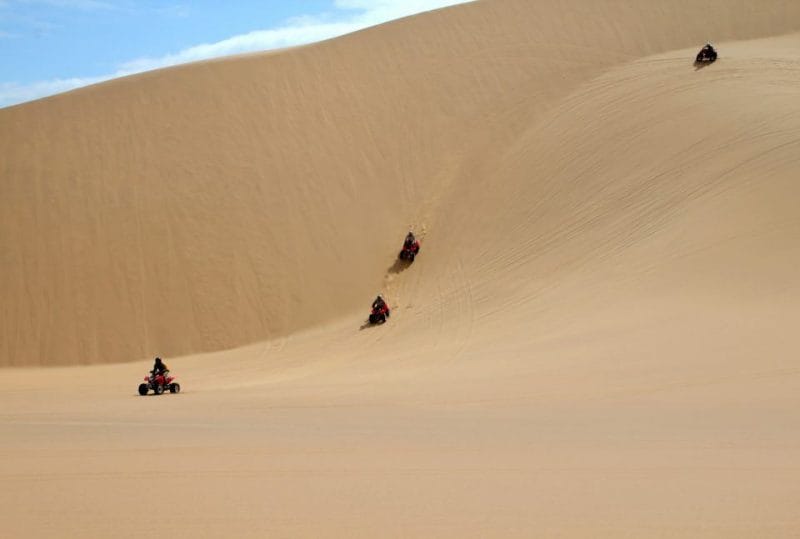
Going 4x4ing in Namibia’s most remote places is one of the most adventurous ways of experiencing the country’s wildest landscapes. Two of the best 4x4ing areas are the Skeleton Coast National Park and Damaraland – wild, rugged, remote, and inhospitable but incredibly scenic.
Regarding active adventures, Namibia’s tough peaks in the Brandberg and the Spitzkoppe mountains lure experienced climbers looking for a challenge.
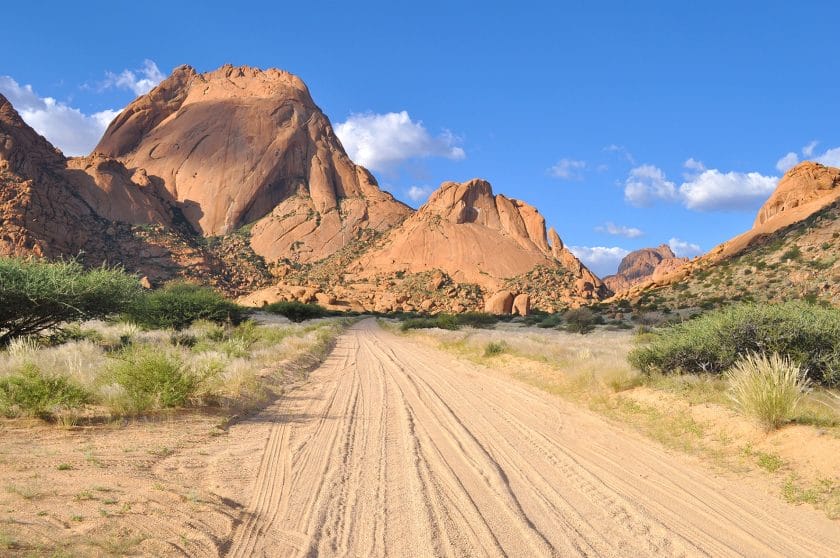
The five-day Fish River Canyon hike, which takes you through some of the best scenery of Africa’s largest canyon, is a beautiful trekking option for those with stamina. You can also find shorter, less strenuous hiking routes throughout the country.
A perfect family-friendly adventure is an Orange River canoeing journey, where you paddle down the watery boundary between Namibia and South Africa, passing through magnificent desert landscapes.
A trip to Namibia isn’t complete without a camping trip, which is a great way to see the country’s huge deserts, steep highlands, and unique wildlife.
Namibia is a great destination for campers of all skill levels, from those who are seasoned veterans to those seeking their first taste of the great outdoors on their Namibia holiday.
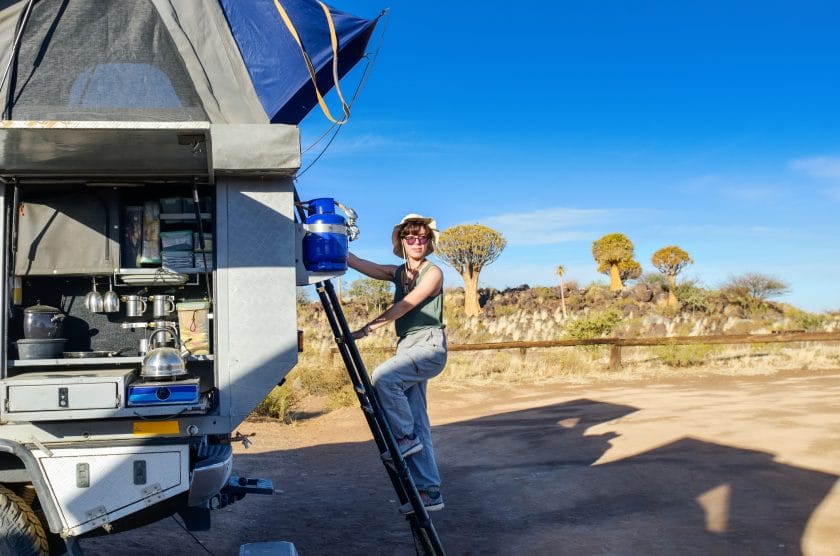
We at Discover Africa realize that the prospect of camping in Namibia can be intimidating, so we’ve simplified the planning process as much as possible.
Our many camping alternatives, from primitive campgrounds to five-star Namibia lodges , have been handpicked to provide you with the finest camping experience imaginable. Relax and enjoy your vacation without worrying about a thing thanks to our professional tour guides.
The Namibian night sky is one of the highlights of any camping trip there. Stargazers flock to the country because it has some of the clearest and darkest skies in the world.
Envision yourself unwinding in your tent, letting the gentle desert breeze caress your skin as you watch the stars twinkle above you. It’s the kind of amazing adventure you won’t soon forget.
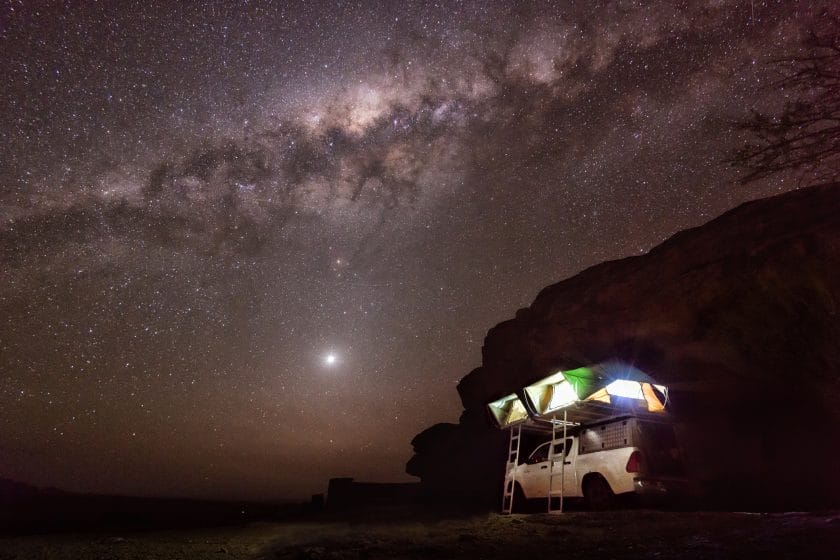
Wildlife enthusiasts flock to Etosha National Park , one of Namibia’s most popular camping spots, to see elephants, lions, cheetahs, and hundreds of other species.
Camping is permitted in the park, and there are a number of authorized areas to choose from, each with its own set of amenities.
Etosha boasts camping options for all kinds of people, whether you want a remote area to pitch your own tent or a more organized campground with access to showers and bathrooms.
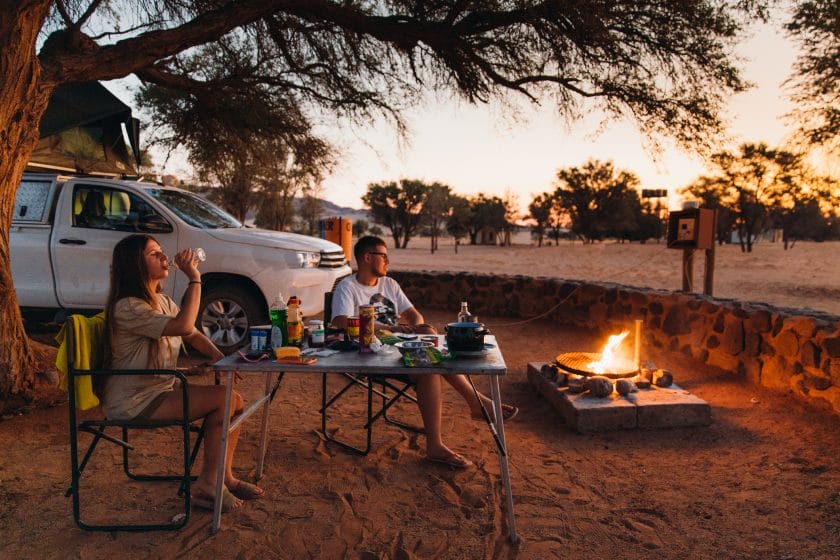
Sossusvlei , known for its towering red sand dunes, is another fantastic camping spot in Namibia. Many of the campgrounds in this area have stunning views of the dunes, and they range in price from free to luxurious.
Damaraland is the place to go camping if you want to get away from it all and enjoy nature in all its raw, unrefined glory. Rare desert lions and elephants that have adapted to life in the desert can be found here. A variety of camping alternatives, from simple tent sites to opulent lodges, are available in this area, each providing its guests with an unforgettable outdoor adventure.
A vacation in Namibia offers the chance to explore the incredible wildlife and natural beauty of the country as well as learn about its many and varied cultures. A Namibian culture tour is a wonderful opportunity to learn about the customs and way of life of the various ethnic groups who live here.
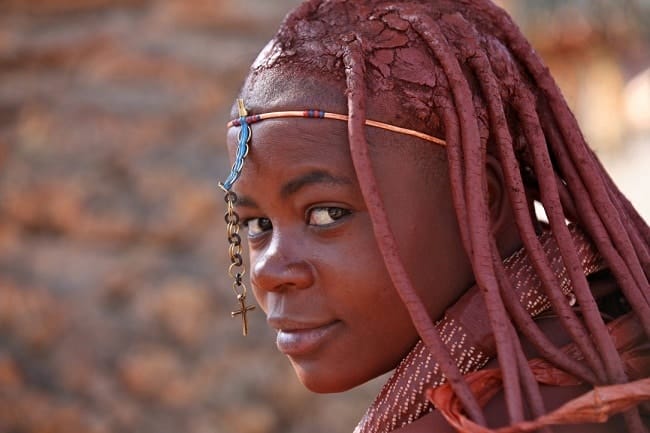
The north of Namibia, where you may visit Himba, Herero, and Damara communities, is one of the greatest locations to explore Namibian culture. The ancient way of life of the Himba has remained mostly untouched for centuries. They are recognized for their striking red ochre body paint and exquisite hairstyles. The pastoralists known as Himba continue to live in little villages.
The Herero people are renowned for their Victorian-era attire, which is a result of the German conquerors’ influence. The ancient beliefs and practices of the Damara people are a significant part of their vibrant culture. They are well-known for their rock engravings and paintings, which can be seen throughout Namibia.
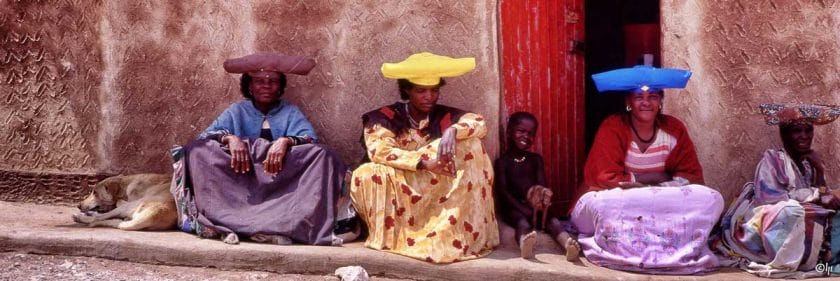
The San people, often known as Bushmen, who live in the Kavango and Zambezi regions, are another fantastic cultural group to encounter in Namibia. Because of their long history in the region, the San have a profound familiarity with southern Africa and its natural riches. Both their intricate rock art and their traditional lifestyle of hunting and gathering have gained them widespread recognition.
There is a lot more to Namibia than just its communities, though. The country’s music, dancing, and art are all worth exploring as well. The country has a thriving music scene, with artists and bands performing anything from classical music to modern pop. Traditional dance is also highly valued in Namibia, and its performers can be seen at celebrations and other occasions all around the country.
Combining your safari with a cultural tour of Namibia is a fantastic way to learn more about the country and its people. Seeing the world through the eyes of a different culture is one of the greatest benefits of travel. You should add a cultural trip to your Namibia safari if you want to have a genuinely authentic and immersive experience while you’re there.
If you’re planning a holiday in Namibia, consider adding fishing to your itinerary. Namibia is home to a wide variety of fish species, including tigerfish, tilapia, catfish, and yellowfish, making it a great destination for anglers of all levels.
One of the best places to go fishing in Namibia is the Zambezi Region, also known as the Caprivi Strip. This area is known for its large population of tigerfish, which can weigh up to 20 pounds and put up a strong fight.
The Zambezi Region is also home to various other species such as Tilapia, catfish and yellowfish. The best time to fish for tigerfish is during the rainy season, from January to April.
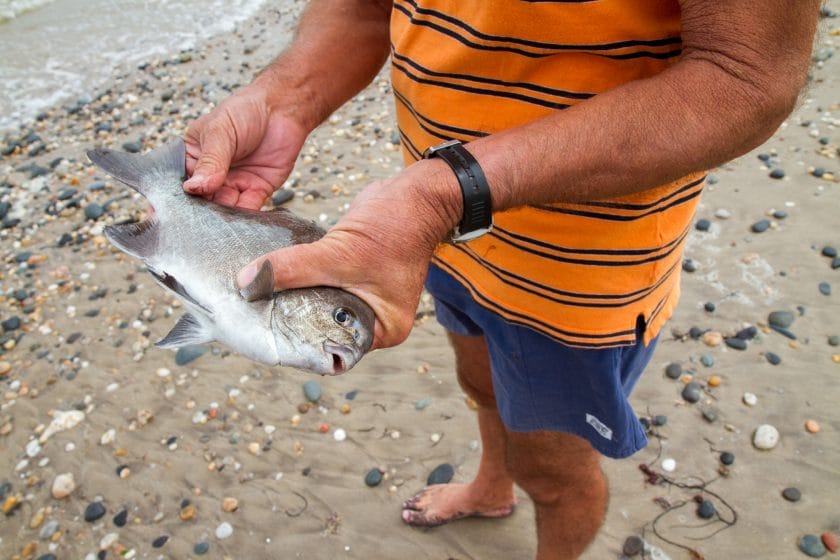
Another great destination for fishing in Namibia is the Kunene River, which is located in the far north of the country and forms the border with Angola. This river is home to a variety of fish species, including tilapia, catfish, and yellowfish. The best time to fish here is during the dry season, from May to December.
If you’re looking for a more remote and peaceful fishing experience, the Skeleton Coast , a remote and desolate stretch of desert along the Atlantic coast, is a great option. This area is known for its huge schools of yellowtail, which can be caught using various techniques such as trolling and fly fishing.
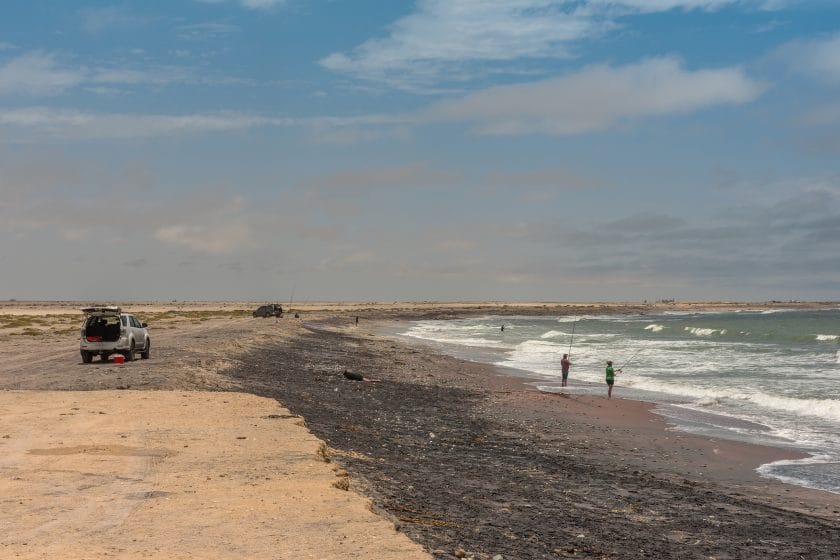
In addition to these specific fishing spots, there are many other places in Namibia where you can catch a wide variety of fish.
No matter where you go, you’re sure to have a great time fishing in Namibia and make lasting memories during your holiday in Namibia. So, if you’re an angler looking for a new and exciting vacation in Namibia, pack your fishing gear and head to one of these fantastic fishing destinations.
One of the most unique and impressive ways to experience Namibia’s stunning landscape is from the basket of a hot air balloon. Visualize yourself floating above the vast plains of Namibia, taking in the stunning scenery from above.
The best way to enrich your Namibian safari and acquire a new viewpoint is to take a hot air balloon ride.
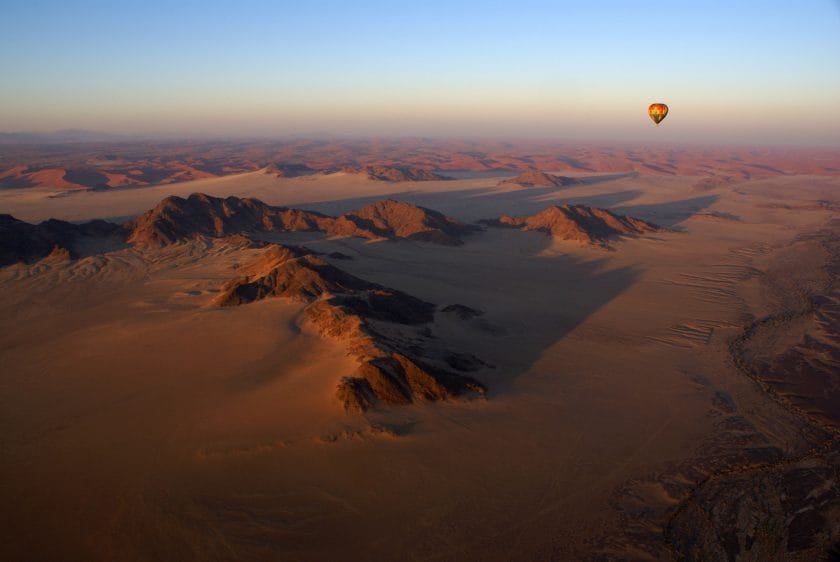
One of the best ways to see Namibia is from above on a hot air balloon ride, and Sossusvlei, in the southernmost part of the Namib Desert, is a perfect place to do just that.
The sand dunes in this area are well recognized as among the highest in the world. Taking a hot air balloon ride above Sossusvlei is a great way to see the desert in all its glory and to see the sand dunes transform as the sun rises.
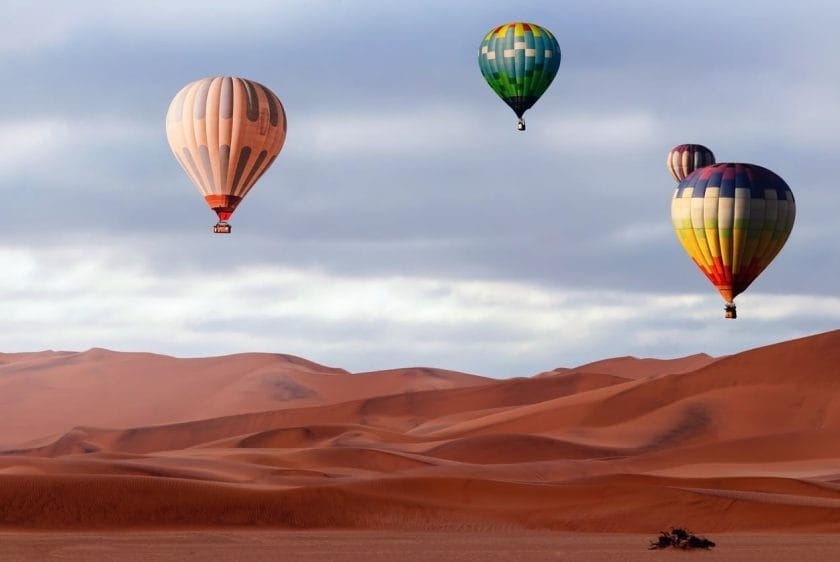
Etosha National Park , in Namibia’s north, is another great spot for a hot air balloon tour. Tourists can see the park’s many animals, such as lions, giraffes, and elephants, from the air on a hot air balloon ride.
The Etosha Pan, a large salt pan and one of the park’s most breathtaking sights, attracts thousands of migratory birds every year.
A hot air balloon ride above the landscape in Damaraland is an unforgettable experience. Damaraland is characterized by its rugged landscape, which consists largely of deserts but also of rugged mountains and deep valleys.
On a hot air balloon flight over Damaraland, you can take in the stark beauty of the region and see desert wildlife like springboks, elephants, and lions.
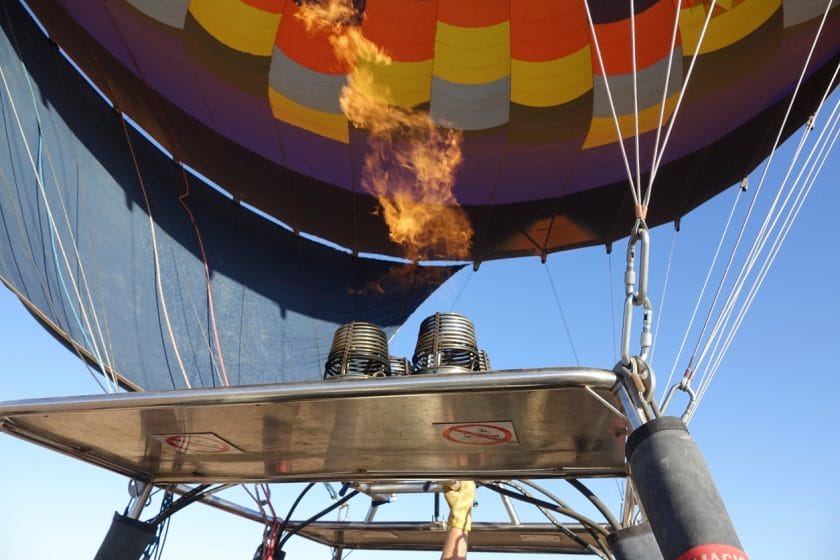
One of the most memorable ways to see Namibia is from above on a hot air balloon tour. Your Namibia safari will be greatly enhanced by taking a hot air balloon ride so that you can see the landscape from a new perspective.
So, if you’re looking for something truly unique and exciting to do in Namibia, consider booking a hot air balloon ride.
See Namibia in Your Comfort
- A Luxury Namibia Safari
- Affordable Safari in Namibia
- Namibia on a Budget
Namibia is home to superb luxury safari lodges in spectacular locations, often on private concessions in wilderness areas where part of the luxury is going on game drives without seeing other vehicles.
Most of the luxury lodges in the country are concentrated around popular destinations, such as Etosha National Park , on private reserves near Sossusvlei, in the Waterberg Plateau area, and Twyfelfontein.
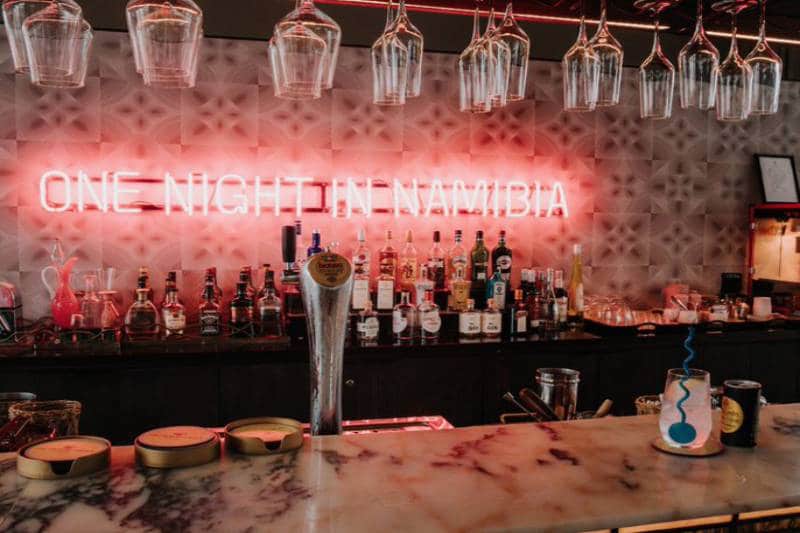
There are also intimate high-end lodges and camps in Namibia’s more remote areas, such as the Skeleton Coast and Kaokoveld, some of which are only accessible by light aircraft.
If budget isn’t an issue, fly-in safaris are the ultimate way to experience a Namibia Safari. On a fly-in safari, you’ll travel to Namibia in a small plane, flying between exclusive high-end safari camps in remote areas and visiting several parks and reserves along the way.
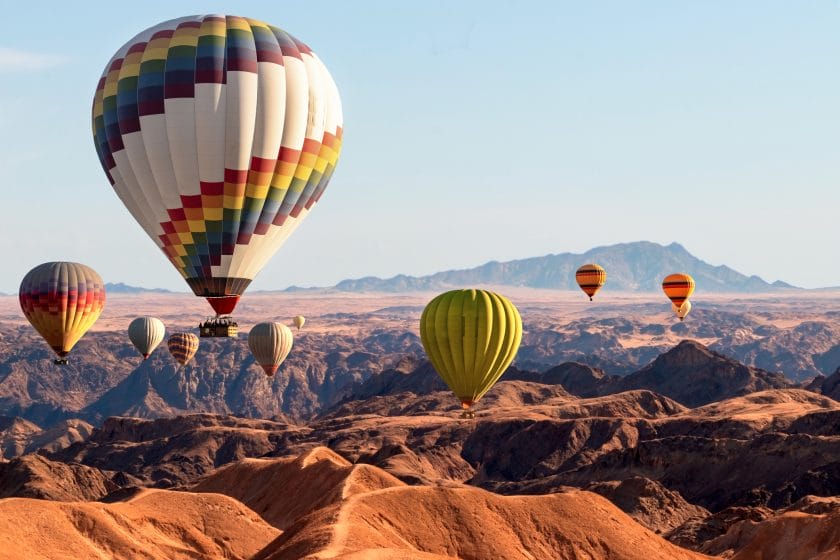
With Namibia’s vast distances and 4×4-accessible areas, doing a fly-in luxury Namibia safari is the best way of maximizing the time on your trip. Fly-in luxury safaris in Namibia usually include everything from accommodation, meals, and drinks to activities such as game drives.
A Namibia safari offers excellent value for money, especially if you hire a car and stay in campsites or lodges outside the national parks. While there are a lot of pros to staying inside the parks, camps can be pricey, especially in high season.
Choosing to sleep at a camp or lodge just outside the park gates means you can get better value for your money and only miss out on being inside the park in the early mornings and late afternoons when the gates are closed.
The low season (February, March, April, May, and November) sees hotels and lodges drop their room rates, so traveling during these months means getting better value for your lodging.
Staying at all-inclusive Namibia safari lodges can give you great value for money. Many lodges offer many activities, such as game drives, guided nature walks, and animal tracking as part of your stay.
The best way to travel through Namibia on a budget is to rent a car , stay at campsites and cook your own food. Namibia has some superb campsites in beautiful wild places, and many offer shops where you can stock up on things like meat, charcoal, and canned food so that you can self-cater
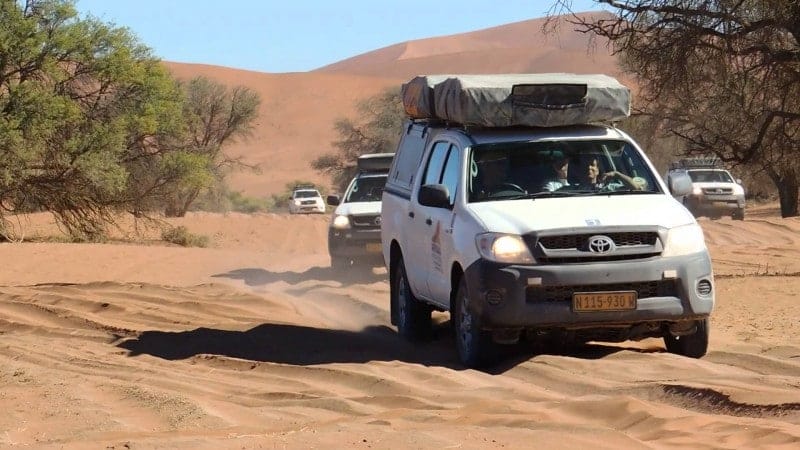
Another way to travel to Namibia on a budget is to join an organized tour that includes your lodging, transport, food, and activities. Traveling in the low season months of February, March, April, May, and November means you can get good deals on rooms in lodges and hotels as the rates are significantly lower than in the peak season.
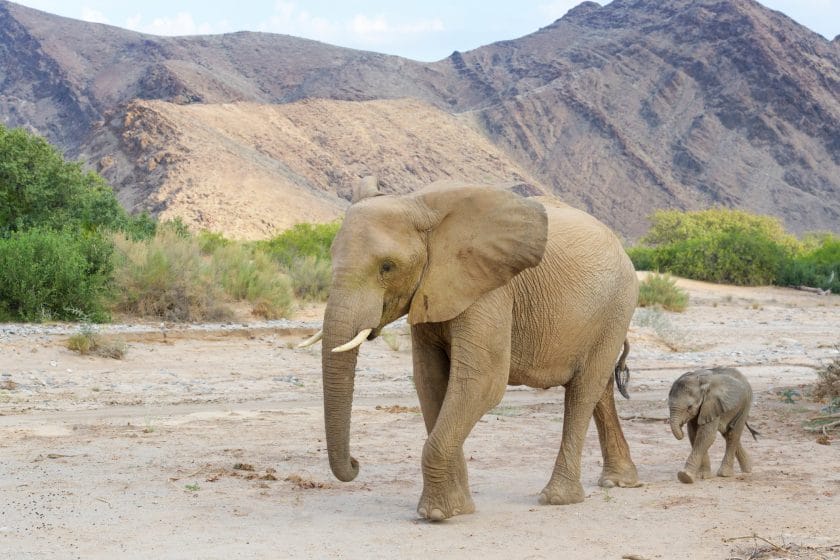
Hiking and exploring the national parks and reserves in your car are two of the top budget activities you can do on a safari in Namibia. They also happen to be the best ways to experience the most beautiful places and extraordinary wildlife that the country has to offer.
Holiday Styles and Options in Namibia
- A Foodie Holiday in Namibia
- A Photography Holiday in Namibia
- A Relaxed Safari Holiday in Namibia
- An Active Holiday in Namibia
- Big Five Safaris in Namibia
- Malaria-Free Safari in Namibia
- Walking Safaris in Namibia
Food and cuisine in Namibia are generally divided between indigenous food types and westernized foods to accommodate a broader range of palates, and range from German, Afrikaans, and European in nature.
The vast majority of visitors to Namibia concentrate their time in a handful of destinations, where restaurants, National Parks, and resort kitchens almost exclusively feature the latter. As such, nearly all meals are very familiar to western visitors.
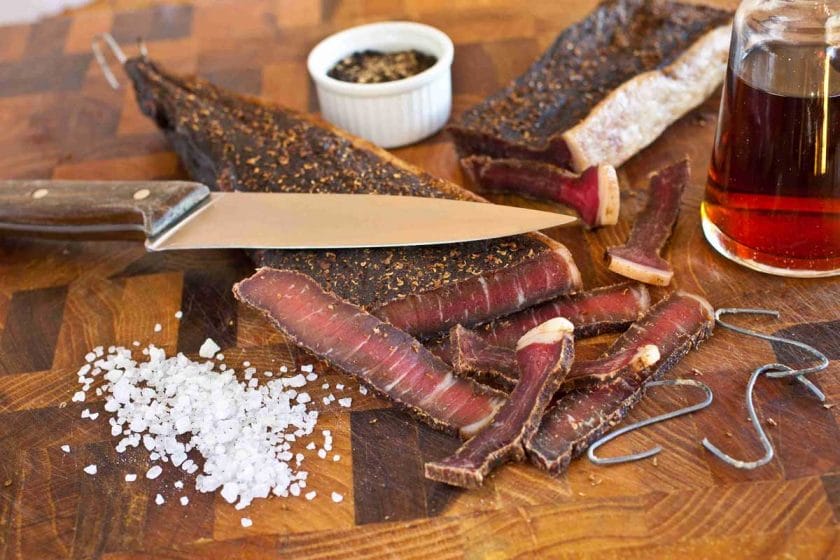
Breakfasts consist of cereals, yogurt, cheeses, cold cuts, eggs, sausage, bacon, and bread, which are familiar to most tourists.
Dinner mains feature a lot of game meats (kudu, springbok, oryx, wildebeest, and others) as well as chicken, pork, and steak. Sides are your typical variety of vegetables. Bread is served with most meals, and seafood is readily available along the coast.
Namibia is a photographer’s dream destination. The country’s spectacular landscapes of soaring dunes, vast horizons and cracked pans, rugged mountains, dramatic canyons, startling Skeleton Coast, unpolluted night skies, incredible wildlife, and unusual flora, couldn’t be more photogenic.
Namibia’s top photographic destinations are:
- Etosha National Park for wildlife photography
- The dunes around Sossusvlei for those quintessential desert scenes
- The petrified trees of Deadvlei in Sossusvlei
- The deserted ghost town of Kolmanskop
- Damaraland, where you can see desert elephants against a backdrop of arid mountains and stony plains
Make sure you have all the batteries and memory cards you need, as you won’t be able to find them in most of Namibia.
Namibia has such diverse landscapes and attractions that you’ll want to be traveling with a range of lenses, from wide-angle for the vast desert horizons to super telephoto for those wildlife shots.
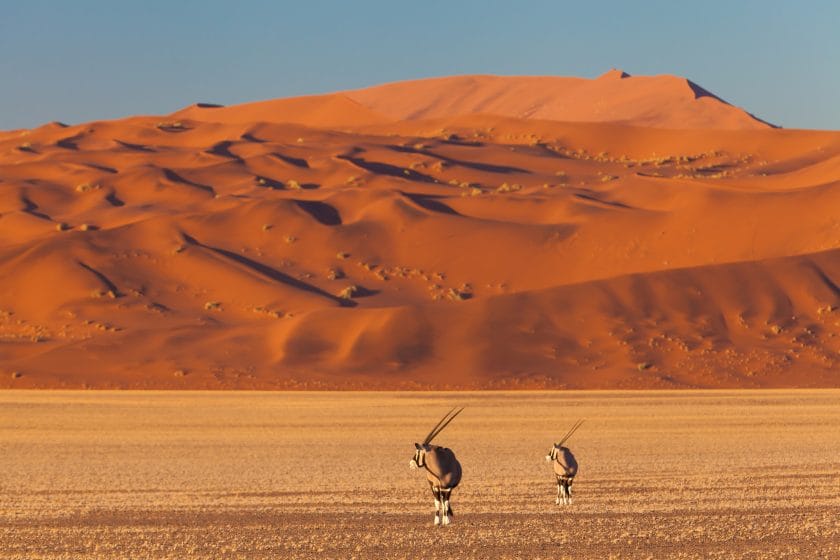
A tripod is essential for landscapes and wildlife photography (where you can set up at a waterhole such as in Etosha’s camps) and night sky photos.
Namibia is very dusty, so be sure to protect your gear in closed boxes while traveling in the car and clean lenses carefully to get rid of dust.
Different seasons offer varied photographic safari highlights:
- The rains have stopped by April and May, and these months are best for clear, dust-free skies.
- For the best chance of getting up close to wildlife at waterholes in Etosha, June to October is the ideal time to travel.
The huge empty spaces and unspoiled wild places of Namibia make you feel like you’re a million miles away from civilisation, which for many people provides the basis for a deeply relaxing holiday.
The best way to have a relaxing holiday in Namibia is to take things slowly. Long drives between distant destinations can be tiring. Instead of trying to cover all of Namibia’s highlights on one trip, pick two or three destinations to spend your time in or spend all your time in just one region. You could even choose just one destination to stay in and do day trips from there.
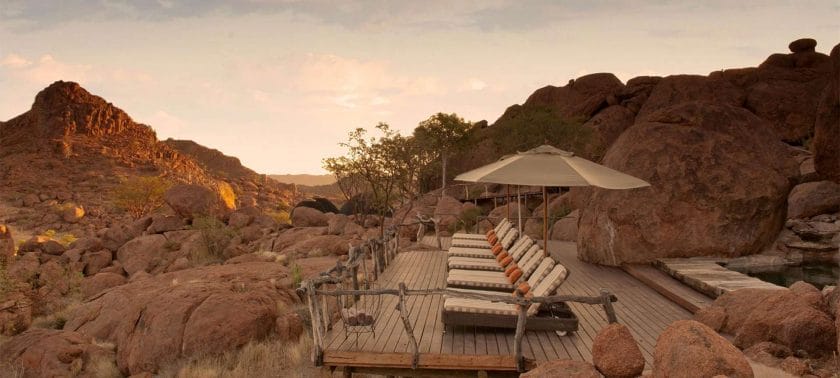
Namibia’s luxury lodges are all about as much relaxation as you want: while they offer a lot of activities, you can also take it really easy, whiling away days reading on your private deck overlooking vast desert plains or animals walking across a cracked salt pan in Etosha, taking dips in the pool, having sunset drinks on top of a dune and eating gourmet food surrounded by other-worldly scenery.
If you have the budget for it, a flying safari is an ideal way to have a relaxing holiday in Namibia. You fly between luxury camps and lodges around the country and get to experience the best of Namibia’s wildlife and wild places without having to drive anywhere.
If you’re after an active holiday in Namibia, you’re in for a mind-boggling array of choices: everything from hiking, mountain biking and sand boarding to river canoeing, ocean kayaking, mountain climbing, animal tracking and quad biking.
Swakopmund is an ideal base for an active holiday, as the coastal town offers a huge range of outdoors activities nearby, including sandboarding down towering dunes, skydiving over the desert, kayaking with seals in the ocean and quad biking.
There are hiking trails all over the country but the most famous is the 85-kilometre, five-day hike in the Fish River Canyon , a route that is only open between May and September.
You’ll need to be self-sufficient for the hike, carrying your own sleeping gear and food and the terrain is tough going, so it’s not for the faint hearted.
A fantastic wildlife hike is the four-day Waterberg Hike in Waterberg Pleateau Park (which is open from April to November) where you can spot rare roan and sable antelope, as well as giraffe, kudu and hyena amongst the dramatic red sandstone cliffs of the park.
For an easier hiking option, there’s the Tok Tokkie Trail, three-day slackpacking trail in the NamibRand Nature Reserve, where the walking is easy and your luggage is transported for you to comfortable outdoor camps that are set up for you at the end of your walking day (complete with cold drinks, gourmet food and hot water for washing).
Canoeing on the Orange River for a few days in southern Namibia is a perfect choice for a relaxing active holiday for the whole family . Several outfitters offer similar multi-day paddling trips which include guides and meals, meaning all you need to do is paddle, swim, and sleep under the stars.

Namibia is a mecca for mountain bikers, with an endless array of routes that traverse some of the country’s most spectacular terrain and take you through wilderness concessions where you may be lucky enough to spot rhinos and elephants from the saddle.
There are strenuous multi-day cycles suited for experienced, fit riders through remote and little-visited areas such as the Kunene Region and Damaraland, but if you’re just looking to cycle for a few hours, there are many options for short trails on private nature reserves dotted around the country.
Namibia offers a diverse range of climbing opportunities for enthusiasts, with its rugged mountains providing a range of challenges for climbers of all levels.
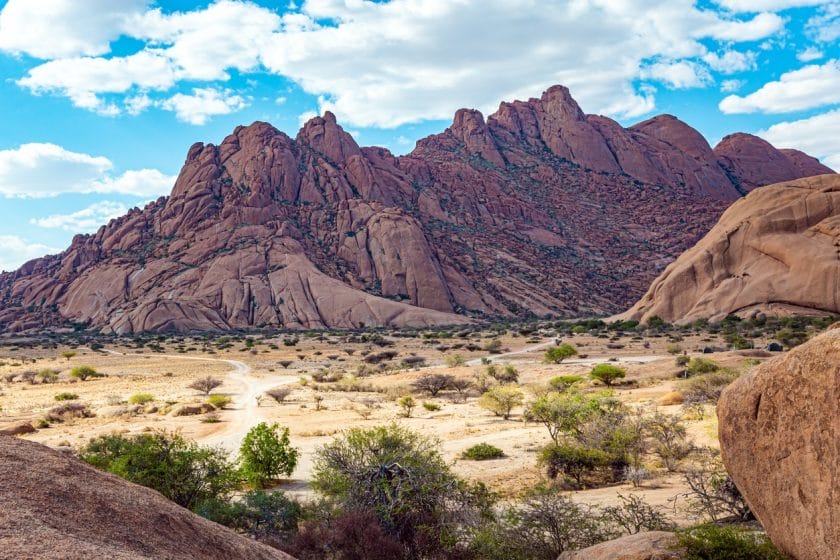
The Spitzkoppe, known as “Namibia’s Matterhorn,” offers a challenging peak summit and sport-climbing routes, while the Brandberg offers a multi-day summit of the country’s highest point, with the added bonus of ancient rock art along the way. In the Erongo Mountains, there are thirty different routes to choose from.
All three of these climbing destinations can be found in the Damaraland region, located north of Swakopmund.
In Namibia it’s easy to combine an active holiday with wildlife experiences by tracking animals on foot. Take your pick from the free-roaming desert rhinos and elephants of Damaraland, the cheetahs and leopards of Okonjima Nature Reserve or rare and elusive pangolins in Erindi Private Game Reserve .
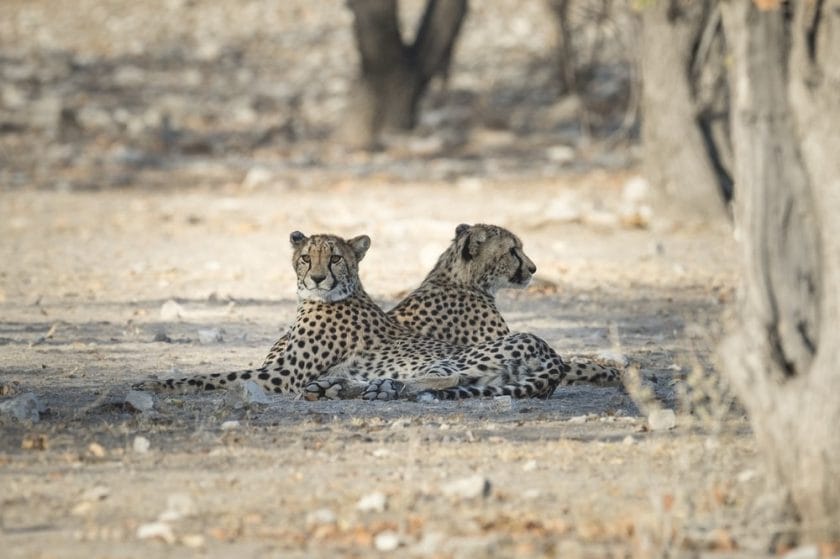
Having an active holiday in Namibia means you need the right gear: comfortable and sturdy hiking shoes, long lightweight trousers and long-sleeved shirts in neutral colours (so that you don’t stand out in the landscape when tracking animals on foot), and a wide-brimmed hat. A pair of binoculars is a must for game viewing.
The best months for outdoors activities in Namibia are the cooler winter months of May to September. In summer, day time temperatures can be brutally hot, and some activities not available, such as the Fish River Canyon hike and the slackpacking hike in the NamibRand Nature Reserve.
Namibia’s flagship reserve may lack the presence of buffalo (though they are in the nearby Waterberg Plateau and Caprivi Strip) but the abundance of elephants and lions more than makes up for it.
Etosha is also the best place in Africa to see black rhinos; stake out waterholes at night and check them again during the day – both lions and leopards often use them as ambush points.

Etosha is a stunning park by any stretch of the imagination, both in size the amount of extraordinary African wildlife that it contains.
The park is so large that it can easily be seen from outer space, and astronauts have been known to photograph it as they zoom over. How amazing is that? To give another comparison, Etosha National Park is as large as the country of Switzerland.
It also contains a very large salt pan that covers over 20% of the area, so in the rainy season parts of it become a shallow lake.
You can visit any time of the year, but winter May to September is the dry season, which means animals have to visit the water holes regularly and you can park up and “spy” on them easier.
It’s also a bit cooler for humans who don’t like sweltering in the heat. However, that is not to say you should avoid taking a Namibian holiday at other times of the year.
Namibia, and Etosha especially, has one of the largest populations of Black rhinos left in the world and is one of the few countries that have both Black and White Rhinos.
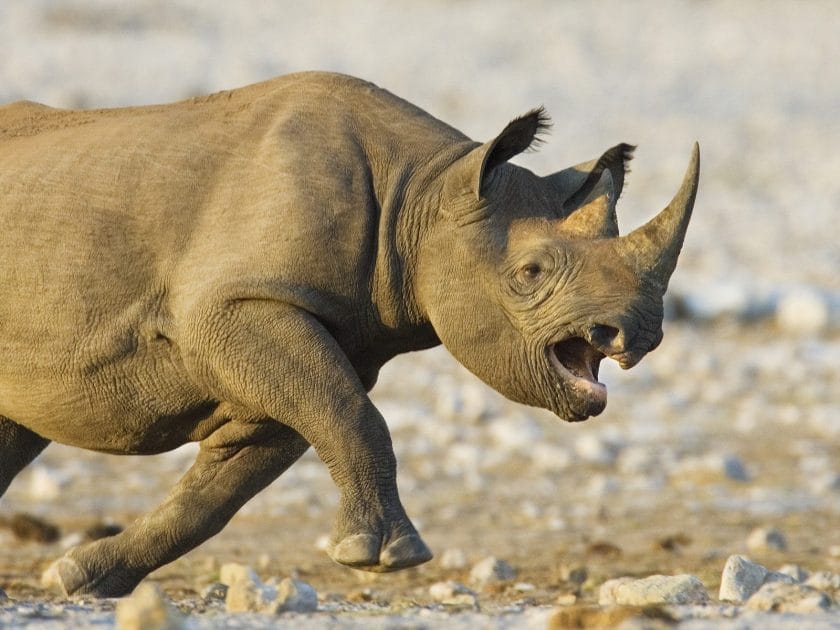
For the chance to see Cape buffalo and hippopotamus, you will need to travel to the northwest to the Caprivi Strip which reaches all the way to Victoria Falls .
The north is also on the edge of malaria territory, so while it is not likely, it is possible to be exposed to mosquitoes that may carry the disease. Take precautions by wearing dark-covered clothing (they prefer lighter colors) and using repellent while there.
Malaria-free safaris are an excellent option if you’re traveling with children if you’re elderly, if you’re pregnant, or in any way unable to take anti-malaria medication.
Sossusvlei may seem like a lifeless pan surrounded by the arid Namib Desert in the south of the Namib-Naukluft National Park in Namibia, however, the area is surrounded by red dunes that seemingly go on forever in every direction.
These dunes are among the most sought-after in Namibia for their height and shape, making them perfect for all kinds of activities that will bring out your adventurous spirit.
In addition, the scenery in nearby Deadvlei and Sesriem Canyon is a photographer’s dream, with brilliant colors and a silent window into a world that has been around since before antiquity – an amazing contrast to the ever-shifting sands that characterize the dunes.

From November to June malaria is prevalent in north and east Namibia, so that may strike Etosha National Park from your itinerary.
However, you can still get a malaria-free safari fix by visiting a game reserve in the Waterberg region or at Okonjima (over 12s only), where the AfriCat Foundation rehabilitates cheetahs and leopards.
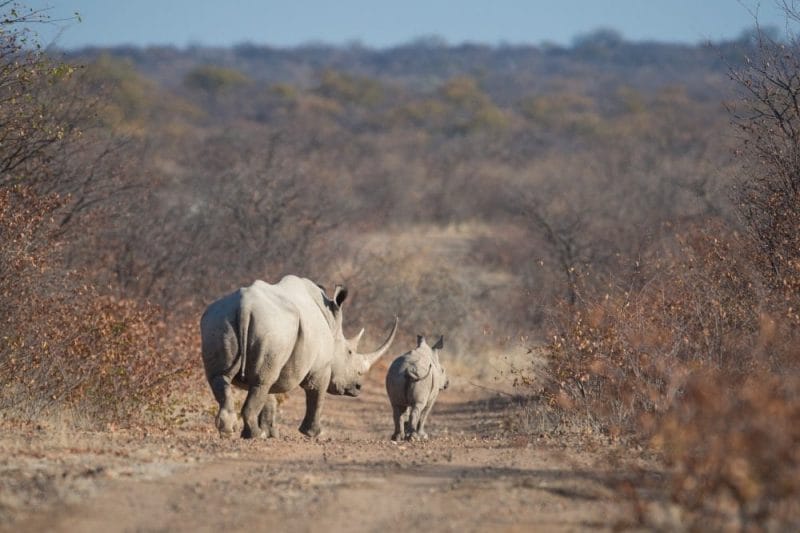
Having said that, during the dry months of July to September, there’s no risk of malaria in Namibia’s flagship National Park.
The dry months are the best time to go to Etosha anyway, as this is when the park’s water sources dry up and the animals congregate around waterholes, making it incredibly easy to spot them.
Just park off your car near a waterhole and wait for the zebras, springbok, giraffe, lions, elephants and rhino to arrive!
The ever-enchanting landscapes of Namibia has some of Africa’s most dramatic scenery and many great hikes as well as walking trails. However, walking safaris in Namibia offer a slightly different approach to the more traditional walking safaris of its African counterparts in that spotting prolific wildlife may not be as easy to come by because of the vastness of the country.
However, walks through the Etosha National Park are both awe-inspiring and humbling, as you tread along the very paths animals roam free on and observe their intimate lives from a careful distance, it is also one of the best ways to be guaranteed animal sightings. The slow pace of the walk and the interpretive skills of the armed guides open your eyes to a fascinating world.
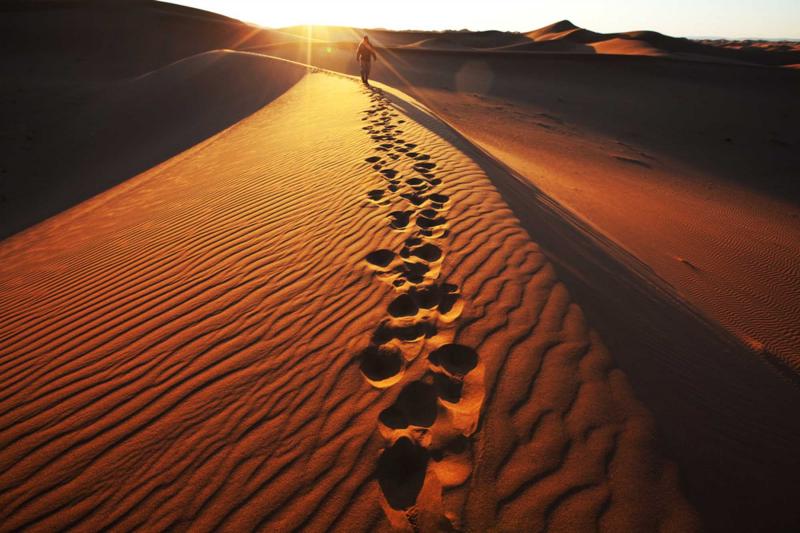
Walks tend to be led by experienced and trained guides who tailor the excursions to suit the preferences of guests, whether it’s to view a certain animal or plant species, to learn about the mannerisms of different wildlife species and their habitats or simply to enjoy the vast expanse of bush and the panoramic surroundings that sets Namibia apart.
Walkers will be instructed on the identification of various tracks, as well as on the smaller wildlife and plants that live in the park and that are often missed during a game drive.
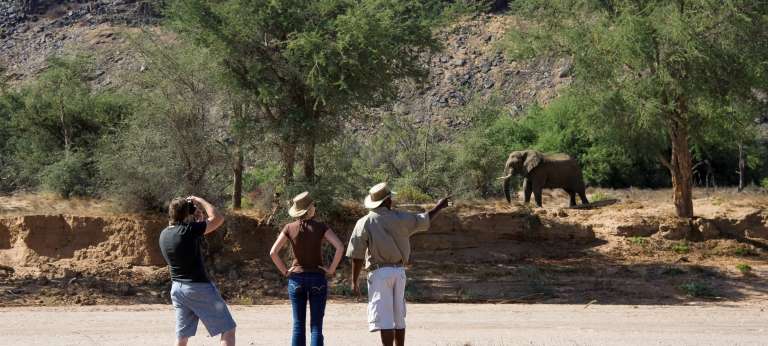
One of the best regions to walk in is Damaraland which has several really excellent camps and lodges to choose from . The scenery is astonishing, from granite boulders and euphorbia candelabra, to desert dwelling rhinos and elephants.
There have also been recent sightings of cheetahs and lions in this region too.
Who is Travelling to Namibia with you?
- A Couple Safari in Namibia
- Family Safari in Namibia
- Honeymoon in Namibia
- Solo Travel in Namibia
If you want to get off the beaten track and into the rugged wilderness for a romantic holiday, you can’t get much better than Namibia. Despite its harsh climate and rugged terrain, Namibia offers a unique and romantic setting for couples.
The stunning desert landscapes, intimate experiences such as watching the sunset from the top of a dune or waking up to a view of animals drinking at a waterhole, and luxurious safari lodges with private rooms tailored for honeymooners and couples, make it a perfect destination for a romantic getaway.
Additionally, many lodges offer special extras, such as the opportunity to sleep under the stars, that add to the overall experience.
Highlights on a couple safari in Namibia
Central Namibia is the top pick if you’d like to see Namibia’s most popular attractions without too much driving. Clamber up and down the dunes of Sossusvlei , and get your adrenaline pumping with adventure activities in Swakopmund (where you can also indulge in hearty German food and excellent beer in good restaurants).
There’s a good choice of luxury lodges near Sossusvlei , where you can stay in exclusive and intimate rooms or chalets with private decks surrounded by breath taking views of the desert.
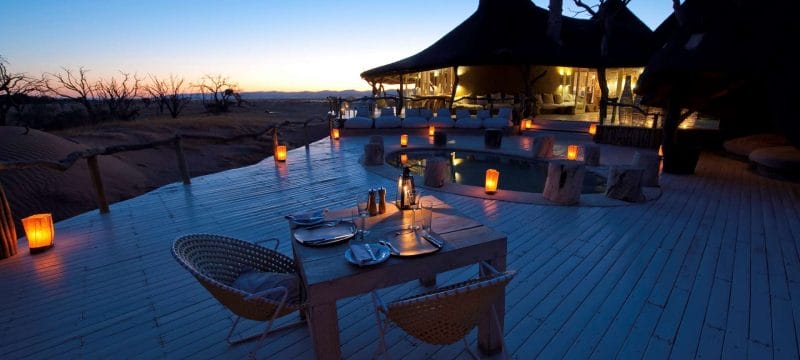
For wildlife, Etosha National Park in northern Namibia is unmissable, and staying in one of the five-star lodges or camps in and around the park means that after a day of game viewing you can relax in luxury: think showering outdoors while watching giraffes walk by, cocktails while you lounge on your deck overlooking animals grazing and gourmet dinners by candlelit under the stars.
If getting as far away from civilization as possible appeals to you for a romantic holiday, then opt for a stay in one of the luxury lodges tucked away in Namibia’s remotest corners – in the Skeleton Coast National Park and Damaraland, where you arrive by plane and get to explore some of the country’s most rugged and untouched wilderness areas with only a handful of other people for hundreds of miles around.
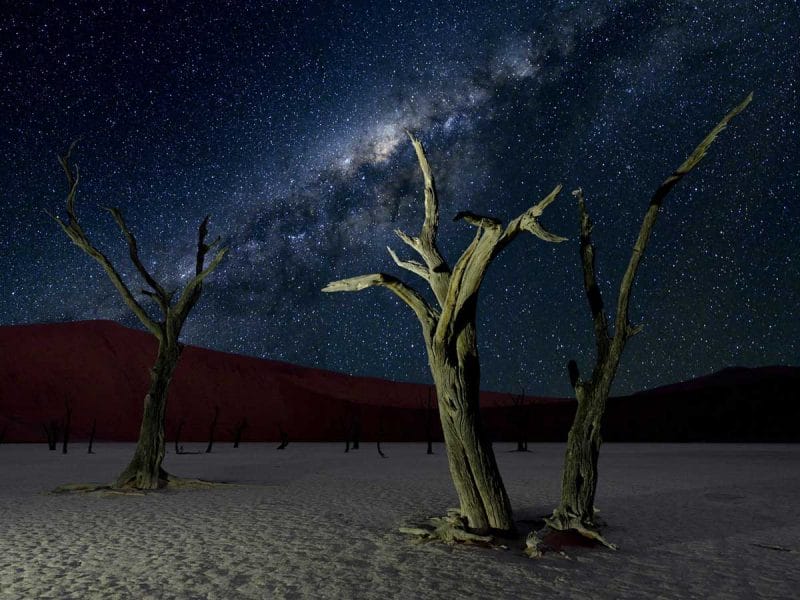
Watching the sunset from the top of a dune with no one else around, stargazing on the private deck of your luxury chalet, eating dinner by candlelight sitting above the cracked salt pan of Etosha National Park, game viewing from your bed and road-tripping on long, lonely desert roads.
Travel Tips for a couple safari in Namibia
Don’t underestimate the driving time between destinations in Namibia and cram your itinerary so that you spend more of your holiday in the car. Plan to spend at least a few days in each destination to really soak up what Namibia is all about: wild scenery, space and serenity.
A Namibian Safari is an incredible choice for a family safari holiday . It’s safe, easy to travel around on a self-guided journey, and offers a wealth of attractions and activities that will delight kids.
There are fun things to do with kids of all ages: nature walks, wildlife spotting, and sandboarding for young ones, multi-day hiking, sandboarding, quad biking, animal tracking, and skydiving for teenagers.
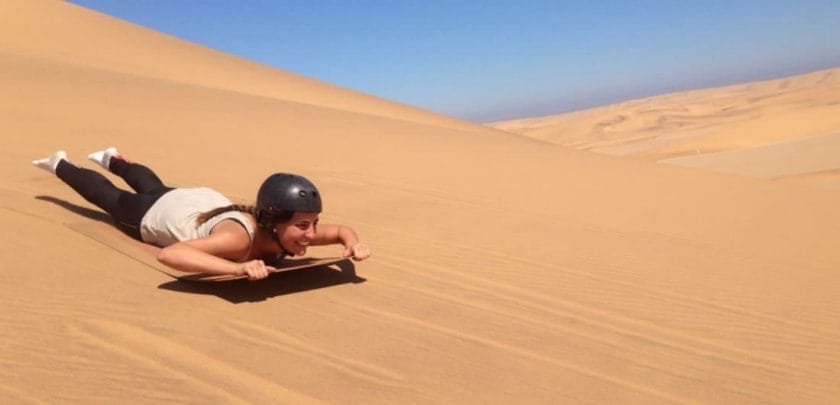
With Namibia’s wide range of lodging options , choosing places to stay for a family holiday in Namibia is easy. Pick from self-catering bungalows and cottages, well-equipped campsites, or luxury lodges (just be sure to check with lodges beforehand if they have a minimum age limit).
Highlights of a family Safari in Namibia
- Parking off at waterholes in Etosha National Park to watch herds of zebra, wildebeest, and giraffe congregate.
- Going on guided bush walks in the barren-looking Namib Desert and discovering a fascinating world of insects, birds, lizards, and adapted plants.
- Scrambling up the dunes near Sossusvlei and sliding back down or zooming down the dunes of Swakopmund on a sandboard.
- Sitting around a campfire under the twinkling stars of the Milky Way.
- Spending a day canoeing on the Orange River or kayaking among seals, turtles, and dolphins off the coast near Swakopmund.
Travel Tips for a Family Safari in Namibia
It’s a good idea to pick two or three destinations and spend longer at each one rather than trying to see all the highlights of Namibia at once.
Driving distances in Namibia are very long, and you won’t get the most out of your family safari in Namibia if most of it’s spent in the car with the kids getting restless in the backseat.
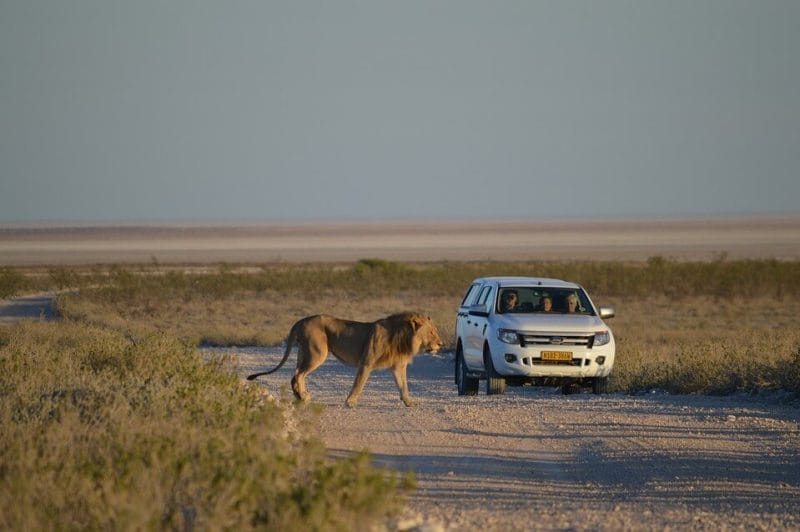
When you have to do a long drive, think about breaking your journey up with stopovers along the way, especially if you’re traveling with young children.
If you’re going to be exploring wildlife parks (which involves lots of driving around), plan to break up the game drives with snack breaks and picnics at designated areas.
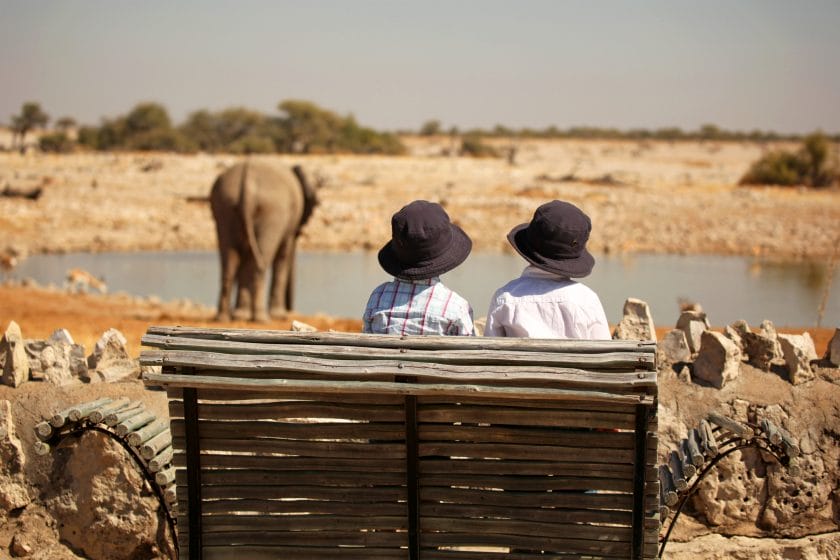
If you have young children, it may be best to avoid traveling to high-risk malaria areas. Traveling to Namibia in the cooler months from April to October is advisable, as the summer months can be unbearably hot.
Bear in mind that Namibia’s climate is harsh, and your kids will need to be able to cope with the elements. It’s extremely dry and dusty, it can be sweltering, and the sun is intense.
Be prepared with lots of sunscreen lotion, high SPF cream for lips, hats and clothes to protect from the sun, good sunglasses, and a big shade cloth if you’re camping.
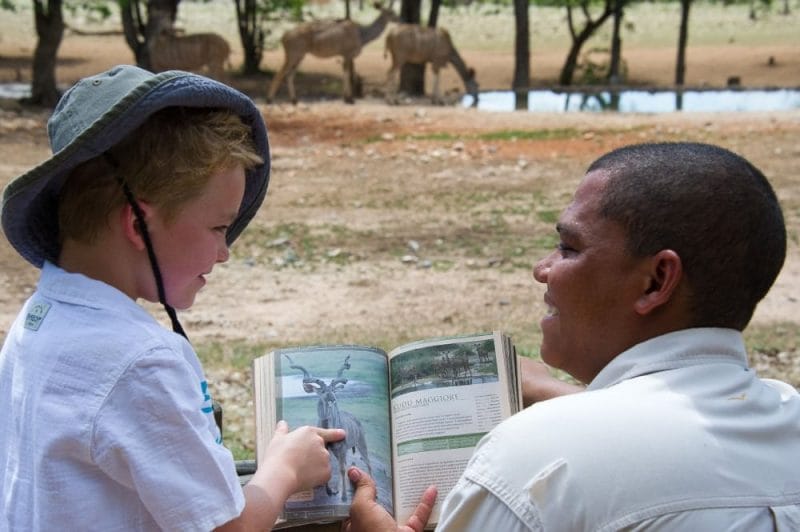
Take note of lodges’ policies regarding game drives with children. Many lodges have a minimum age limit for young children on a game drive vehicle, and some lodges won’t accept children under a certain age.
If you’re travelling over the border to Botswana or South Africa after your trip to Namibia, you must have unabridged birth certificates for your children.
Going on a honeymoon safari in Namibia means you can experience getting away from it all in remote campsites where you and your partner are the only people around for miles.
On your honeymoon safari, you can relax in five-star luxury in stylish, intimate Namibian lodges with rooms on the edges of dunes and water holes or built into the branches of trees.
Watching the sunset together over the desert from your private deck or sipping coffee in bed while zebras have a morning drink a few meters away are romantic moments that you can expect on a safari in Namibia.
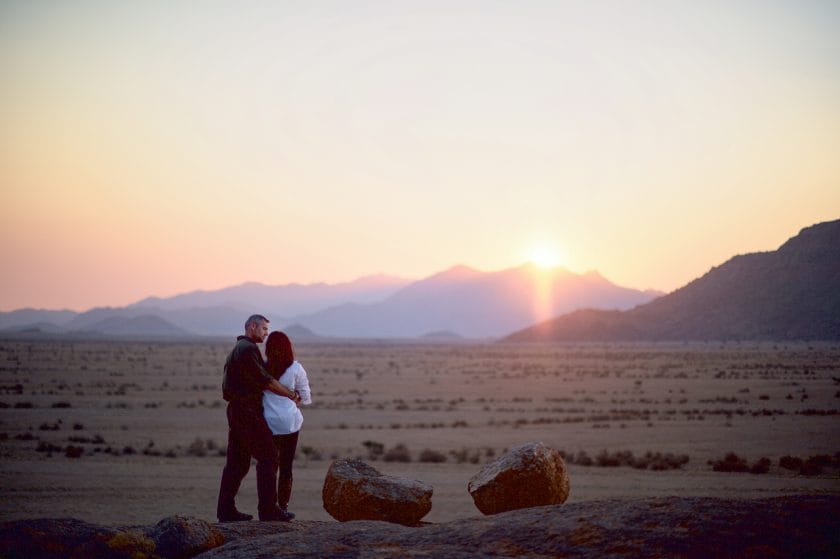
Whether you explore Sossusvlei , Etosha, Damaraland, or the Skeleton Coast, luxury lodges offer romance by the bucket load, with exclusive honeymoon cottages set apart from the main camp for maximum privacy, and special touches such as private picnics or dinners by candlelight.
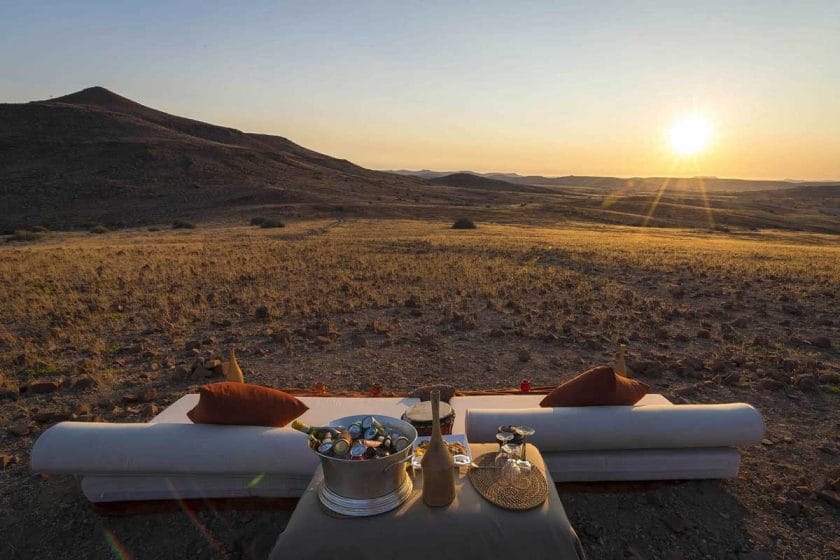
If you want to combine two of the most popular attractions of Namibia on a romantic holiday, stay in one of the luxury lodges inside Etosha National Park or just outside its gates.
Spend your days on game drives with guides, and then spend a while at one of the high-end lodges in the Sossusvlei area, where you can do several day trips.
If you like to be around other travelers, the best places to explore as a solo traveler are the most popular ones: Etosha National Park in the north, Sossusvlei in the center, and Swakopmund at the coast .
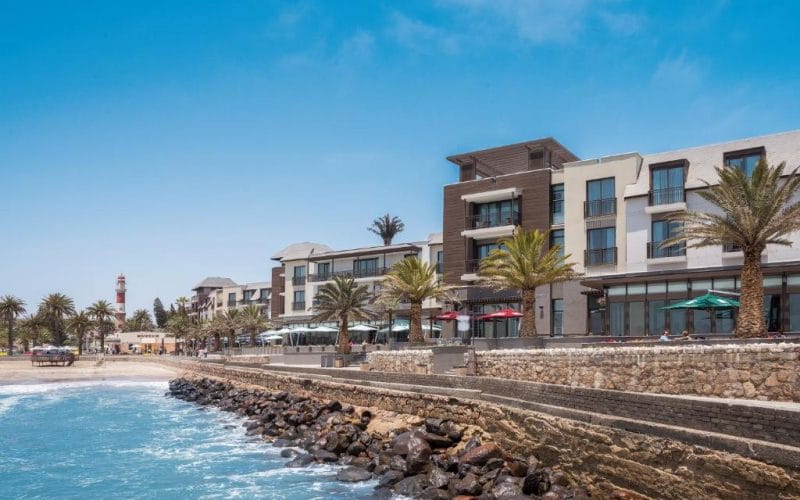
In each of these places, you’ll find camps and lodges where you can meet up with other travelers, and a host of activities where you can join up with other groups.
In northern Namibia, the Zambezi Region, which is popular with overlanders and backpackers, is another place where you’ll easily be able to meet up with other travelers.
You can look forward to seeing lions, elephants, and rhinos on guided game drives in Etosha National Park, and meeting new friends around the fire at a camp in the Zambezi Region.
Or go Skydiving, sandboarding, drinking beer with locals in Swakopmund, and soaking up the silence and timeless beauty of the desert atop a dune in the sands of Sossusvlei.
Travel Tips for a solo safari in Namibia
The only thing that you need to be aware of as a solo traveler in Namibia is long driving distances in remote areas. You’ll often drive for hours without coming across a gas station or town. Make sure that your lodge or hotel knows to expect you in case you have a breakdown.
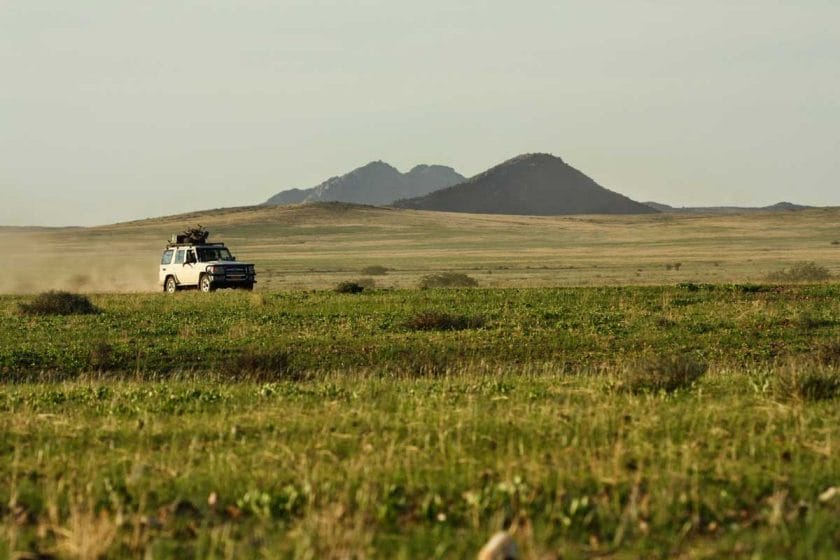
It’s also good to tell someone where you’re going if you head off from your lodge or camp on a day hike. If possible, join up with a guided hike or find someone to hike with, as it’s much safer to hike in a pair or a group in case of an emergency.
What You Need To Know
- Why go to Namibia?
- Why is Namibia Unique?
- Why do People Come Back to Namibia?
- Namibia vs Botswana
- Namibia vs South Africa
- Wildlife in Namibia
- Highlights of Namibia
- Safari Styles in Namibia
- Best Time to go to Namibia
- Travel Tips for Namibia
- Visas for Namibia
- Travelling to Namibia
- Travelling in Namibia
- Currency in Namibia
- Lodges in Namibia
- Food and Tipping in Namibia
- Namibian Culture
- Shopping in Namibia
- Languages in Namibia
- Medical Emergencies in Namibia
- Packing List for Namibia
- Vaccinations for Namibia
- Emergency Services in Namibia
- Namibia Health Care
- Health Insurance for Namibia
- Namibia Travel Costs
A blockbuster combination of sublime landscapes that will make you feel like you’re on another planet, some of the best wildlife viewing on the continent, a host of fascinating desert-adapted plants and animals, and jaw-dropping natural wonders make Namibia a country you’ll never forget.
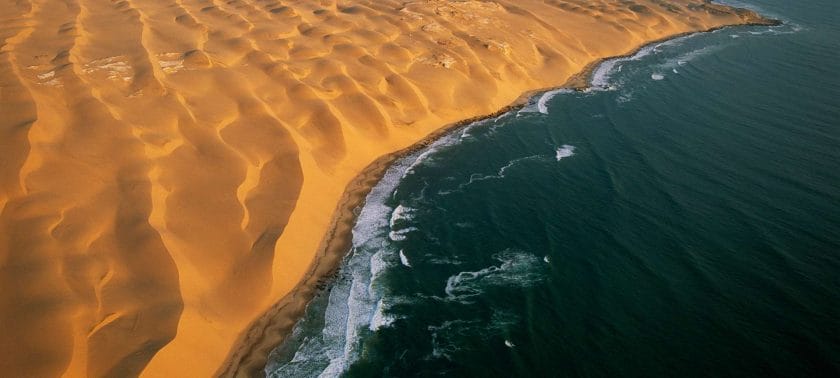
Namibia’s scenery and sights are as astonishing as they are varied. Ranging from the Namib desert, a vast and beautiful wilderness covering the country in sandy plains, dune seas, and savanna, to the dramatic Skeleton Coast, there’s endless beauty to be had.
Add to that the rugged granite mountains adorned with ancient rock art, the giant cracked salt pan of Etosha National Park , and the dizzying depth of the Fish River Canyon, and you’ve got a plethora of natural wonders to admire.
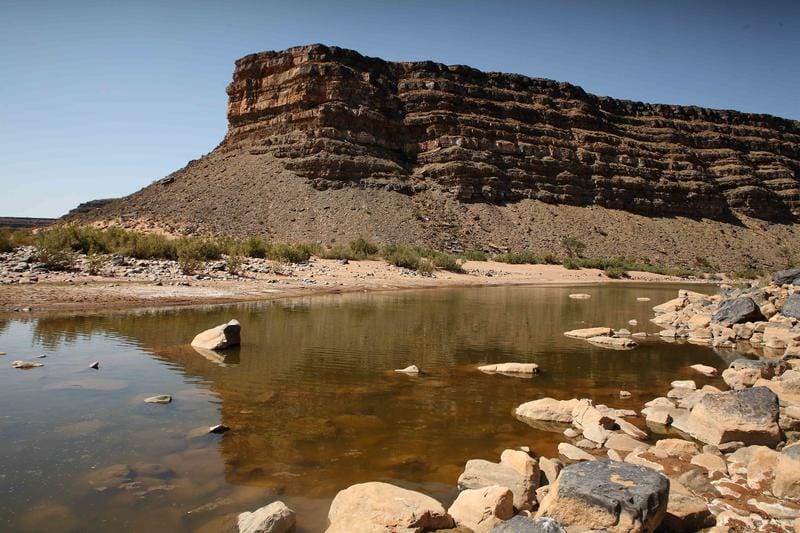
Adventure is always just around the corner in Namibia. Whether tackling a challenging 4×4 route in a remote area, hurtling down a dune on a sandboard, or skydiving above the desert, there are countless ways to experience the country with some adrenalin-filled fun.
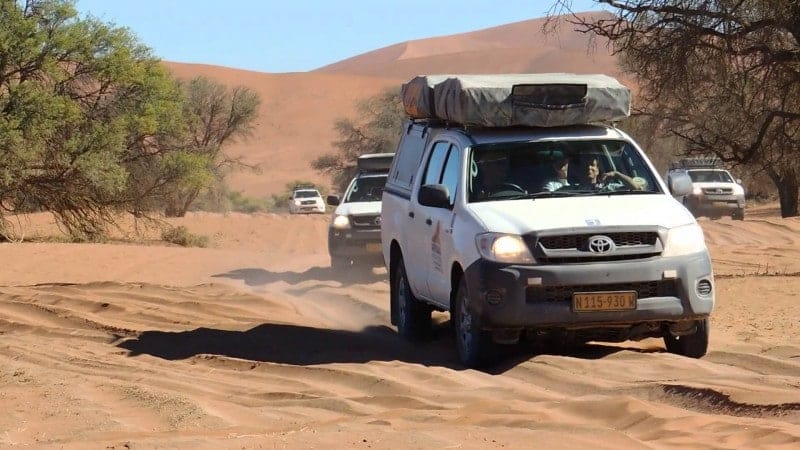
The network of well-maintained roads, excellent tourism infrastructure, and a wide range of lodging options means that Namibia is one of the safest and easiest countries in southern Africa for self-guided traveling and a strong contender for the world’s best road-tripping destination.
A safari in Namibia offers space, silence, and the chance to get away from it all. It’s the second least-densely populated country on the planet, with only two people per square kilometer.
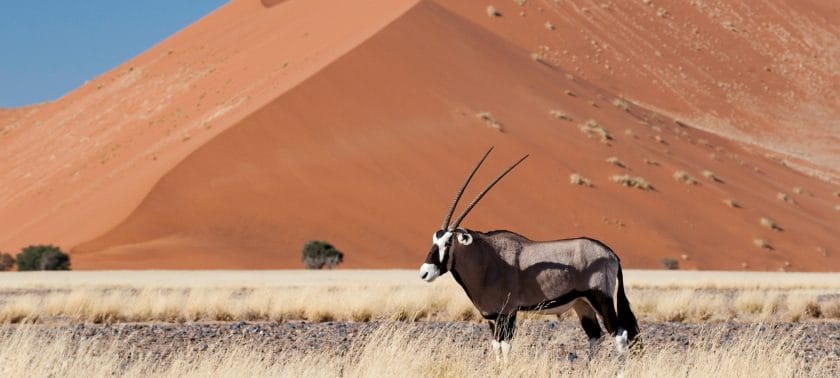
You can drive for hours under huge blue skies surrounded by landscapes so vast and empty that, at times, you feel like you’re on the edge of the planet. In an overpopulated world, there aren’t many places left where you can immerse yourself as deeply in remote wilderness areas as in Namibia.
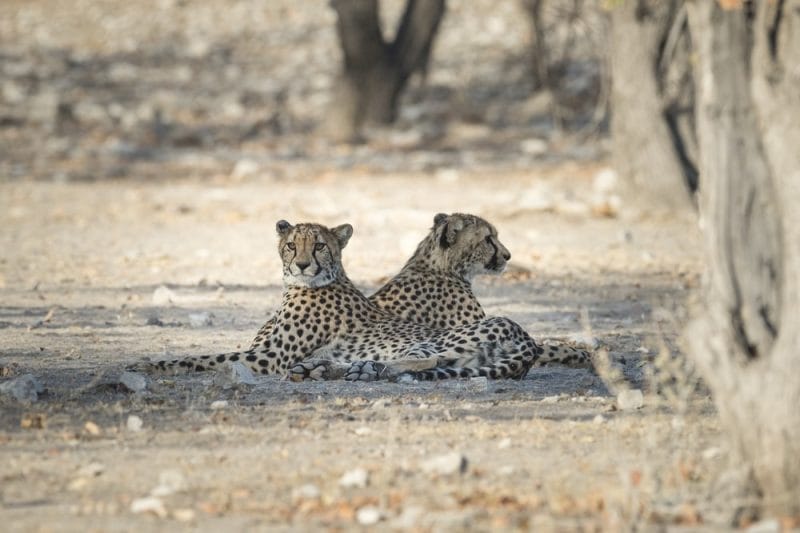
The driest country in Africa south of the Sahara, Namibia is covered in a large swathe of desert, giving rise to an array of unique plants and animals adapted to the harsh climate, such as the Welwitschia (which can live for more than 1000 years) and the famous desert elephants, which are only found in one other place on the continent.
In terms of big game safaris , Namibia has several parks and reserves, but its stand out is Etosha National Park , where during the winter months, the ease of spotting wildlife is nearly unrivaled. Other notable wildlife highlights in Namibia include tracking black rhinos and cheetahs on foot.
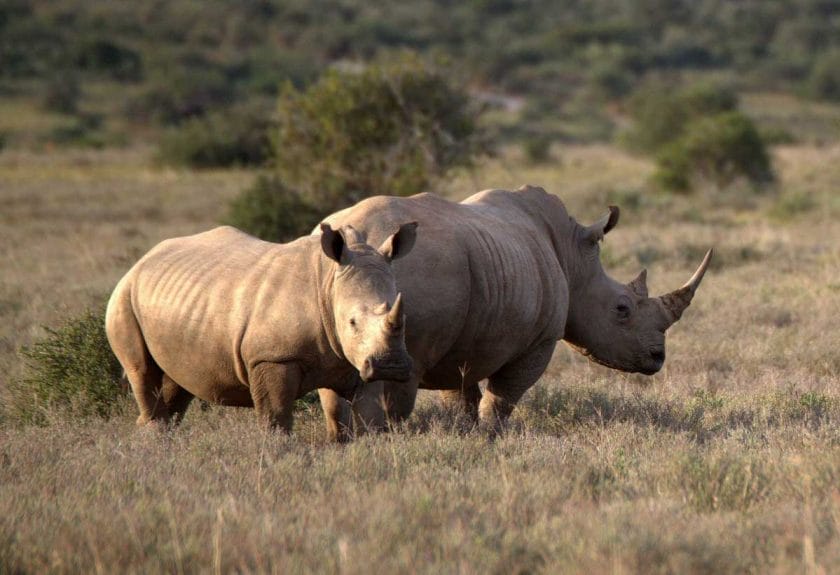
Namibia’s extreme landscapes are a big part of why the country is so unique. From the sand seas of the Namib, where you’ll find the tallest dunes in the world, to the awe-inspiring Fish River Canyon, Namibia is home to some of Africa’s most spectacular natural sights.
A safari tour in Namibia draws people back with its otherworldly landscapes, endless space, magnificent desert, superb wildlife spotting, memorable animal experiences (such as tracking free-roaming black rhino on foot), and unique desert-adapted animals and plants.
There’s also so much to see and do on a Namibian safari that you couldn’t even begin to do the country justice on one trip. On a first visit, many travelers explore Namibia’s best-known attractions, and then, on return trips, they head into more remote regions for off-the-beaten-track adventures.
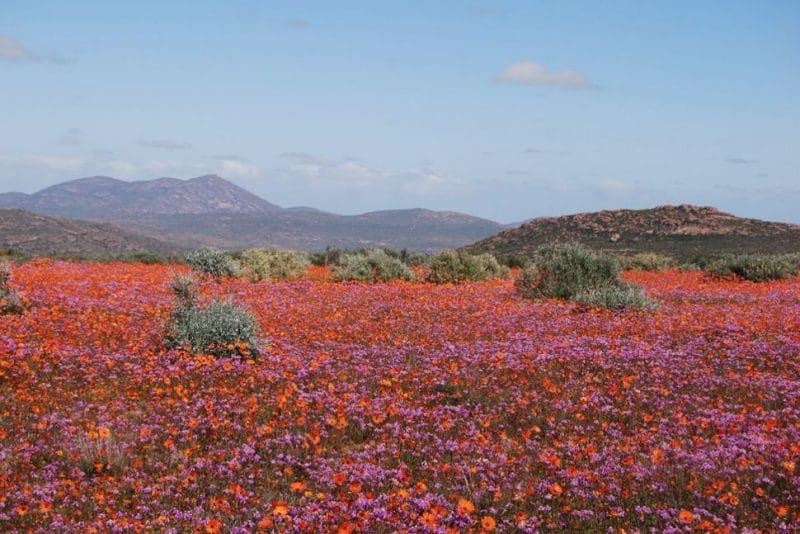
Namibia also has changing attractions that bring travelers back in different seasons. Expect superb game viewing in the dry winter, bird-watching safaris in the rainy summer months, spring flowers in |Ai-|Ais/Richtersveld Transfrontier Park in August and September, and migratory whale sightings along the coast in October and November.
Botswana is known for its superb luxury camps and its policy of low-impact tourism. The country limits the number of people staying in conservation areas, so a Botswana safari tour tends to be relatively expensive.
On the other hand, a safari tour in Namibia is more tourist-friendly and, with its well-maintained roads, is far easier to visit on a self-driving trip. Many of Namibia’s most famous attractions can be explored in a 2WD vehicle.
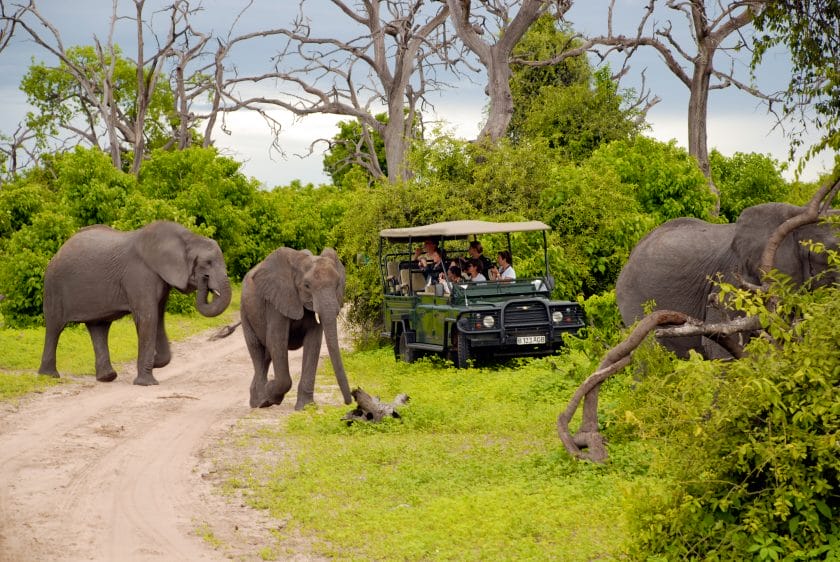
The huge variety of places to stay in Namibia, from excellent campsites to five-star lodges, appeals to a broader range of travelers. At the same time, Botswana caters largely to the high-end market.
Of the two countries, Namibia has a broader diversity of more stunning landscapes, from a deep canyon in the south to rugged mountains in the north, the cracked salt pans of Etosha, the towering dunes of Sossusvlei, and the dramatic Skeleton Coast .
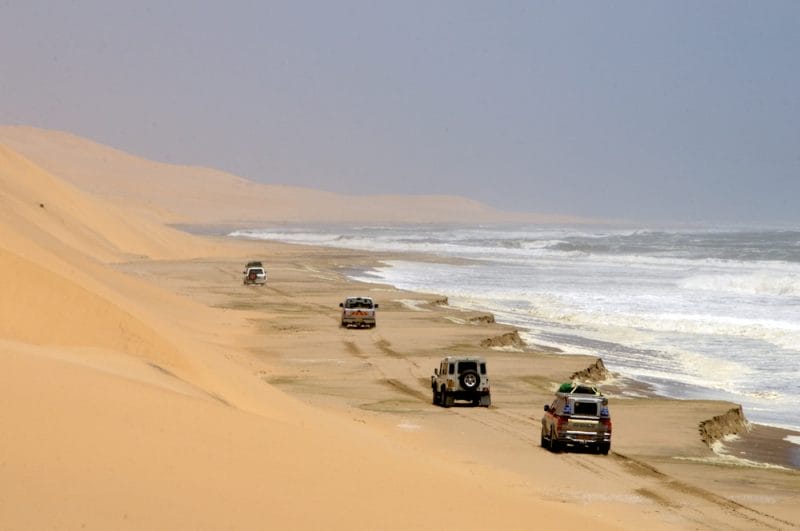
In terms of wildlife, Botswana has Africa’s largest elephant herds and vast numbers of buffalo, lions, and leopards, which makes for rewarding game viewing in its excellent parks.
However, the game viewing in Namibia’s Etosha National Park during the dry winter months, when animals congregate around waterholes, is hard to beat.
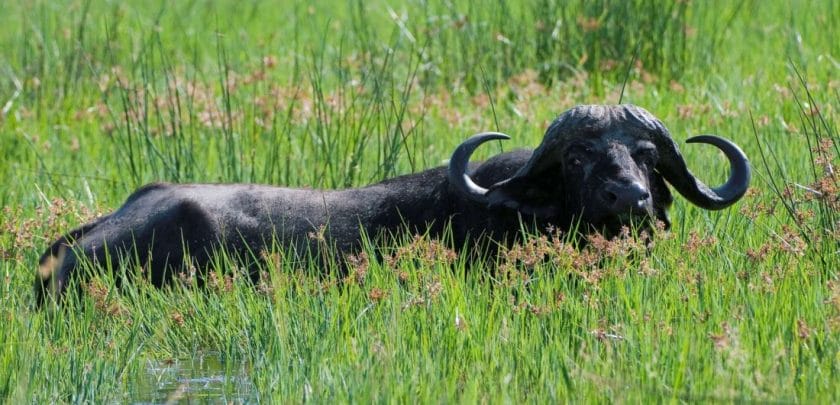
Even if you’re a first-time Namibia safari goer driving yourself around Etosha, you’ll be able to enjoy spectacular sightings of hundreds of animals at once if you park next to waterholes.
Namibia also scores for its unique desert-adapted animals, its free-ranging population of black rhinos (the last in the world) and desert elephants, and the largest population of cheetahs in Africa.
In terms of city culture, landscapes, flora, and fauna, South African safaris have much more diversity than a Namibian Safari.
South Africa also has excellent game parks where Big Five viewing is easy, as well as forests and mountains, a beautiful coastline with superb beaches, and culturally rich cities home to award-winning restaurants, fantastic shopping, art, museums, and nightlife.

Many travelers choose South African holidays for the ease of combining a safari tour with beach time , cuisine, and culture in cities.
Namibia can’t compete in terms of beaches or cities, but what it does have that South Africa doesn’t is dramatic desert scenery, vast open spaces, extremely wild rugged landscapes, and a lot more chances to get far off the beaten track and escape the crowds.
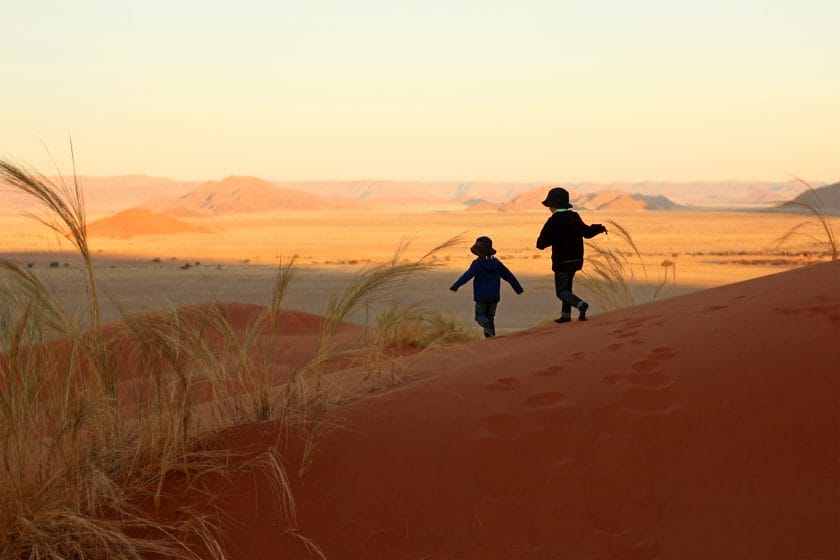
Having a real off-grid adventure in Namibia is also more accessible than in South Africa, with Namibia’s massive choice of 4×4 routes that take you into the country’s most remote corners.
In the busy season, the popular hotspots in South Africa can be bustling, while in Namibia, even during the peak months, the only place where you’ll see a lot of other travelers is Etosha.
In the north, Etosha National Park is Namibia’s unmissable wildlife destination. During the dry season, when water is scarce, the park’s animals gather around waterholes making game viewing as easy as parking your car in the right spot.
Along with herds of springbok, zebra, and blue wildebeest, you’ll see plenty of elephants and lions and, if you’re lucky, cheetahs.
You’ll also see desert animals such as oryx, meerkat, ostrich, and bat-eared foxes.

The park is the best place in Africa to spot black rhinos, while black-faced impala and Damara dik-dik are two other remarkable species. They’re only found in one other place – across the border in Angola.
Wildlife surrounding Etosha National Park
To the south of Etosha, Waterberg Plateau Park is home to some rare species, such as sable and roan antelope and black and white rhino, and Namibia’s only breeding colony of Cape Vultures.
Wildlife in Damaraland
Among the rugged mountains of Damaraland, in Namibia’s northwest, are free-roaming populations of desert elephants (which are incredibly rare – the only other place in the world you’ll find them is Mali) and desert-adapted black rhinos and lions.
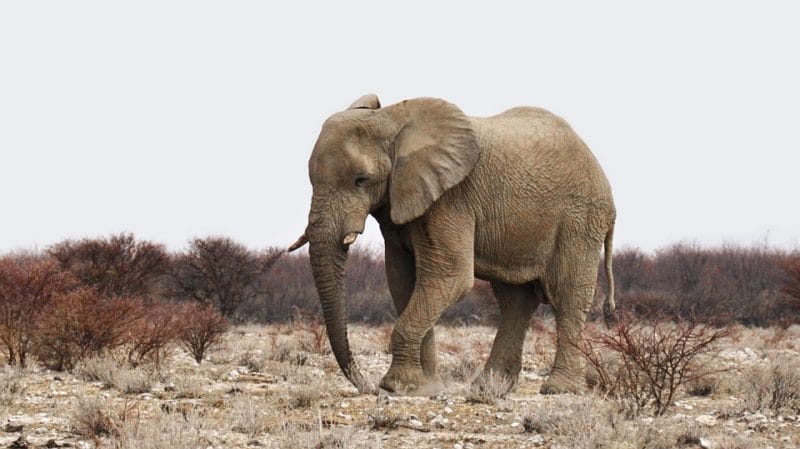
Namibia’s most rewarding wildlife experiences include tracking black rhinos and elephants against spectacular desert backdrops.
Wildlife in the Zambezi Region of Namibia
In far north-eastern Namibia, the Zambezi Region (formerly known as the Caprivi Strip) offers a different wildlife experience to the rest of the country, thanks to its heavy summer rainfall, rivers, and water sources.

This is where you can see hippos and crocodiles, and it’s one of the only places in the country where buffalo occur. A highlight of the Zambezi Region is water-based wildlife viewing from boats or a mokoro (traditional dug-out canoe).
Wildlife on the Skeleton Coast of Namibia
Stretching along Namibia’s northern coastline, the Skeleton Coast National Park has one of the world’s largest breeding colonies of Cape fur seals at the Cape Cross Seal Reserve.
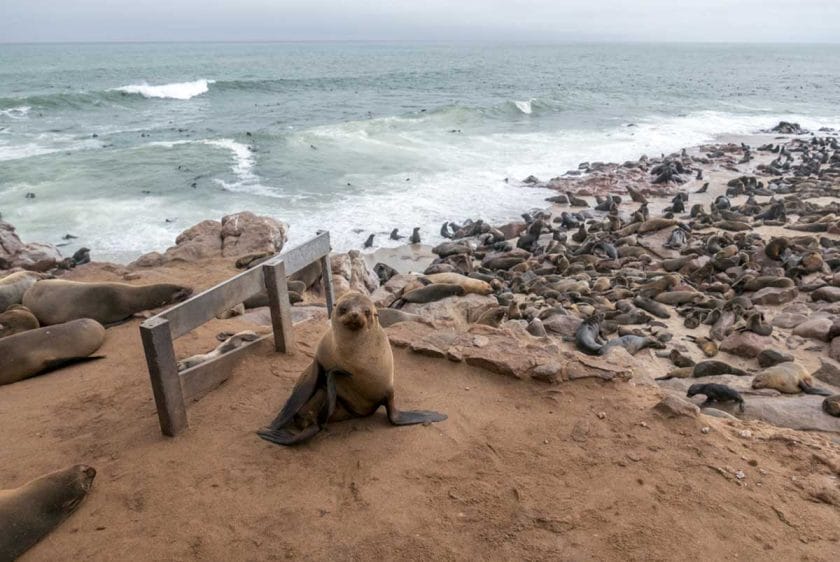
There are around 100,000 seals here year-round, and if you visit the reserve in November and December, you’ll see their tiny pups – and perhaps a stalking jackal.
Wildlife in Central Namibia
In central Namibia, there’s marine wildlife to see from a boat and kayaking trips from Walvis Bay to spot seals, whales, and dolphins.
Central Namibia also has two places to take part in animal tracking. Search for cheetahs and leopards at Okonjima Nature Reserve near Otjiwarongo and track rare and extremely elusive pangolins at Erindi Private Game Reserve .
Wildlife in Southern Namibia
Southern Namibia isn’t a prime big-game region. However, if you want to see the animals of the Namib Desert (oryx, springbok, kudu, zebra, giraffe, hartebeest, leopard, hyena, jackal, and fox), the NamibRand Nature Reserve , a vast conservation area with spectacular scenery and a low density of visitors, is your best bet.

An unusual wildlife highlight of southern Namibia is the herd of around 150 wild horses that roam freely in the desert between Aus and Lüderitz – the world’s only desert-dwelling wild horses.
For a first-time trip to Namibia, most travelers combine a rewarding mix of wildlife viewing and landscape exploration on a route that takes in the superb game on the salt pan of Etosha National Park, the adventure activities of the Germanic town of Swakopmund , and the towering dunes of the Namib-Naukluft National Park at Sossusvlei.
If you’re on a longer holiday, Namibia’s southern region has plenty of gems to discover, from the geological monument of Fish River Canyon and the desolate Mars-like landscapes of the |Ai|Ais/Richtersveld Transfrontier Park to the eerie ghost town of Kolmanskop, the German colonial architecture of Lüderitz and fantastic canoeing through the desert on the Orange River.
Travelers seeking more adventure generally head to northern Namibia for rugged wilderness and off-grid journeying.
You’ll need a 4×4 hire and self-sufficiency to explore the desolate Skeleton Coast, mountainous Damaraland, and the Himba villages of the remote Kaokoveld on your safari holiday in Namibia.
Namibia’s safari experiences are all about taking in the spectacular landscapes of desert, mountains, and coastline, running the gamut from the sedate to the extreme, and everything in between.
For many travelers to Namibia, wildlife viewing will be at the top of their list of experiences. Spotting Etosha’s abundant wildlife by driving yourself around the park or going on guided game drives is an unmissable highlight of any holiday to Namibia.
You can also enjoy more active animal experiences, including horseback wildlife viewing in various reserves, camel rides in Swakopmund and tracking desert rhinos on foot in Damaraland.
Namibia’s safari adventures and outdoor activities are endless and cater to all fitness and experience levels.
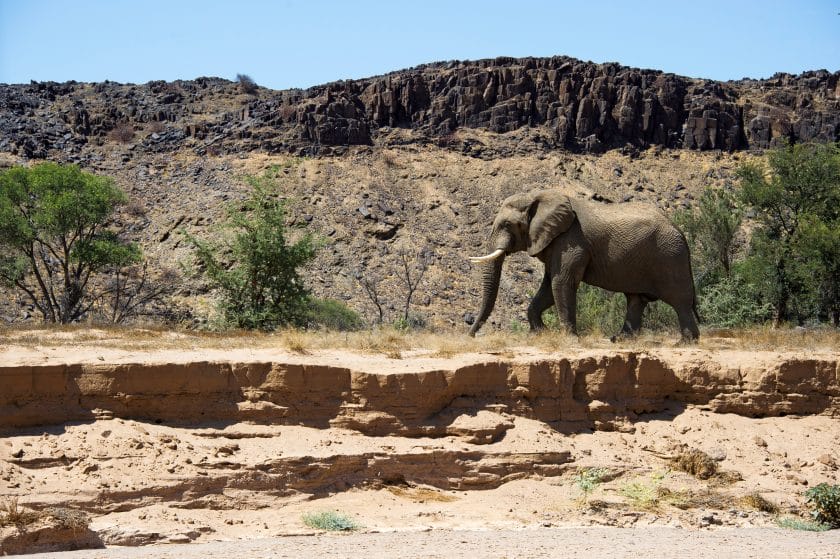
From short, gentle walks in the desert to multi-day strenuous hikes, bouldering to serious mountain climbing and easy mountain biking routes to tough long cycles through rugged desert terrain, there’s literally something for everyone.
Then there’s family-friendly ocean kayaking, gentle canoeing on the Orange River, quad biking in the desert, sandboarding down massive dunes, and the ultimate adrenaline-pumping fun of skydiving.
For experienced drivers, Namibia offers memorable 4×4 adventures that range from routes of just a few hours to days-long journeys into the country’s most remote and wildest corners.
Namibia generally has a dry climate, and you can visit the country year-round. However, deciding on the ideal month to travel to Namibia really depends on which regions and attractions you’ll be traveling to and what your interests are.
In general, the dry winter season from May to September is the most popular time for travelers to visit Namibia.
Malaria risk is lowest, daytime temperatures aren’t too hot (though nights between June and August are freezing), and, in parks such as the iconic Etosha National Park .
The combination of sparse foliage and the lack of rain forces animals to congregate around waterholes, which makes wildlife spotting particularly easy.
November to March are the hottest months in Namibia, and temperatures in some regions can reach above 50°C (122°F) during the day.
These months are also the rainy season, although many areas in Namibia receive little or no rain at all. During the wetter months, some tracks in the northeastern part of the country can become unsurpassable.
These are the hardest months for spotting wildlife in parks such as Etosha and carry the highest malaria risk.
Namibia is one of the easiest and safest African countries to travel in. Still, due to the huge distances between destinations and remote locations, a successful trip usually requires some advance planning and research.
In terms of communication, many hotels don’t offer WiFi, and cell phone coverage can be sparse in remote areas.
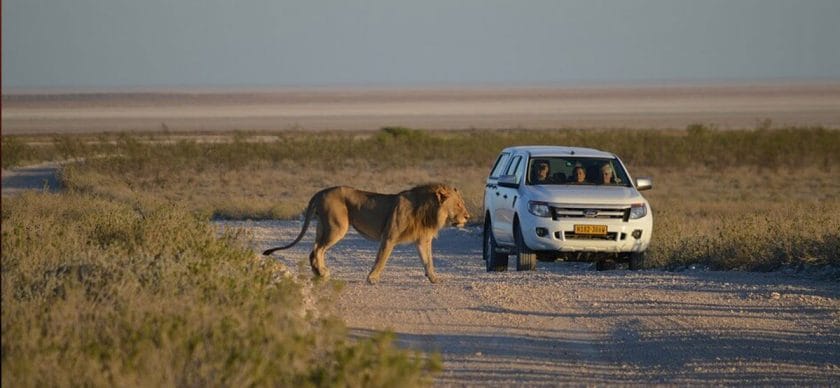
In the peak season from July to October and over the Christmas holidays, lodging and campsites in Namibia get booked up well in advance, especially in the most popular parks.
Make sure you place your reservations well before your trip if you’re traveling to Namibia for holiday during these months.
Etosha National Park and Sossusvlei are busy year-round, so it’s a good idea to book your camp or safari lodge in advance, even if you’re not traveling during the busiest months.

Distances in Namibia are significant, and it’s vital that you do some research before plotting out a self-driving itinerary so that you’re not spending the entire time in the car driving from one spot to the next.
It’s a good idea to spend a few days in each place rather than packing too many places into your trip so that you have time to soak up the serenity of Namibia’s beautiful landscapes.
Namibia has visa exemption agreements with the USA and many European countries, so if the exemption covers your country, then you can travel visa-free to the country for up to three months. Everyone entering Namibia needs a passport with six months of validity from the date of entry to the country and one blank page.
If you’re flying to Namibia from the US, it’s easiest to travel to Johannesburg in South Africa and catch a two-hour connecting flight to Windhoek in Namibia.
Travelers from Europe have the option of direct flights to Windhoek from Frankfurt on Air Namibia or from Cologne-Bonn on Eurowings or from Amsterdam on KLM, or connecting flights via Johannesburg from London on British Airways or South African Airways. Qatar Airways flies to Windhoek from several European cities via Doha.
If you’re traveling by car in South Africa or Botswana before your trip to Namibia, it’s easy to cross the Namibian border with your hired car. Just let the rental car company know beforehand so that they can provide you with the paperwork you’ll need to bring your car across the border.
Namibia is a vast country without many public transport options, so hiring a car is the best way of getting around. Namibia’s tarred and gravel roads are in good condition and are well maintained, making it easy to do a self-drive holiday.
It’s a good idea to have both a GPS (or offline map on your smartphone) and a paper map for navigating.
You don’t need to hire a 4×4 to drive around Namibia – 2WD vehicles can drive on the gravel roads – but it’s preferable to have a car with high ground clearance, especially for the ungraded dirt secondary roads.
If you’re traveling in Namibia’s more remote regions, such as the Skeleton Coast National Park, Kaokoveld, and Damaraland, you’ll need a 4×4. You’ll also need a 4×4 to explore Khaudum National Park, Nkasa Rupara National Park, and parts of Bwabwata National Park in the Zambezi Region.
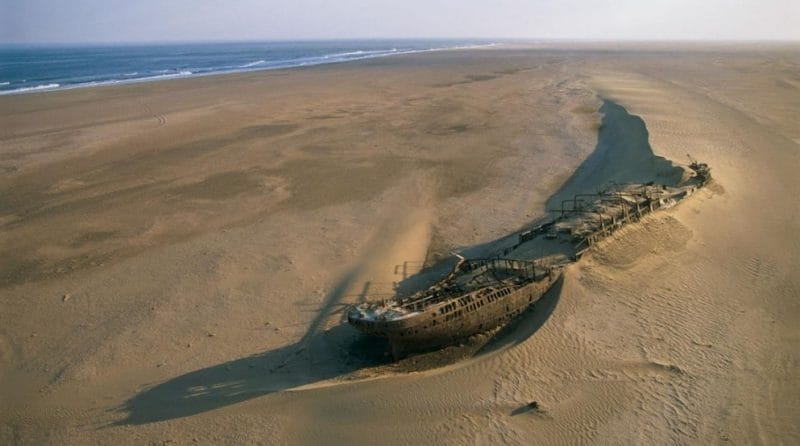
Some car rental companies offer vehicles fully kitted out for camping trips , with rooftop tents, freezers, gas cookers, camping chairs and tables, sleeping bags, jerry cans, and cooking sets.
Namibia has one of the world’s highest rates of road accidents, and it’s recommended to take out fully comprehensive insurance to cover you for any damage or accidents that may happen during your trip.
The currency in Namibia which is the Namibian Dollar is equivalent to the South African rand.
If you’re travelling to Namibia after spending time in South Africa, this South African currency, is accepted all over Namibia (although Namibian currency is not accepted in South Africa). You can draw currency in Namibia from ATMs using your international bank cards.
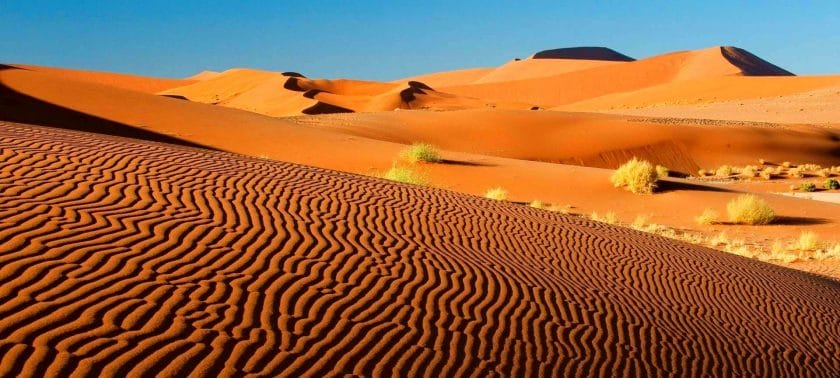
Many hotels, lodges and restaurants in towns will accept credit card payments, but you do need carry enough currency in Namibia with you to cover yourself for places that don’t accept cards.
You’ll also need cash for park entrance fees and tips. Few petrol stations will accept cards for payment of petrol, and while there are usually ATMs at bigger petrol stations, many small stations will not have an ATM, so have enough currency in Namibia for filling up with petrol in rural areas.
Euro, British Pounds, US Dollars and other major currencies may be traded locally or in advance of departure. In addition, exchange facilities are available in the various offices of change and banks in the major cities of ATMs. It is best to request bank notes in smaller denominations, as it can often be difficult to get a change from large notes, and smaller notes are handy for smaller transactions.
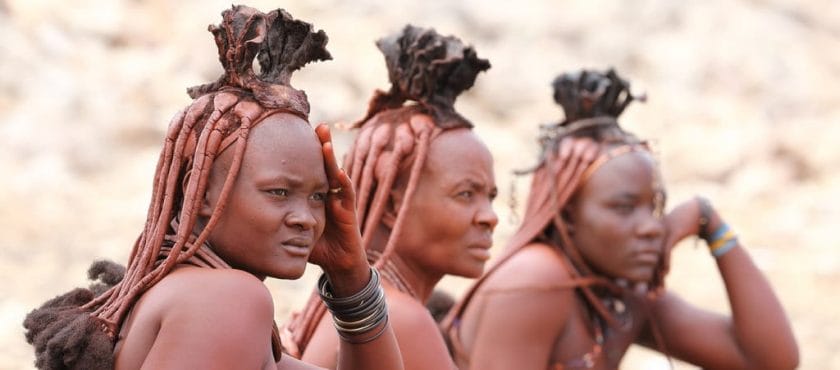
Traveller’s checks are not recommended as they are often difficult to exchange and incur high fees for currency in Namibian.
Please note that while South African Rand is used in Namibia, Namibian Currency is not legal tenders in South Africa, so make sure you have used or exchanged them before you leave Namibia.
Many lodges in Namibia offer activities, food, and drinks as part of your rate. It’s always a good idea to check exactly what is and isn’t included before your stay, so you don’t get any surprises on your bill when you check out.
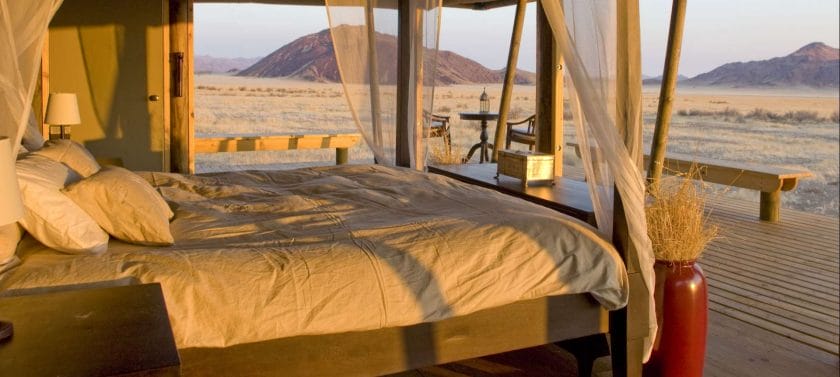
Lodges usually explain their tipping practice in the in-room booklet, but if you’re unsure, check with the management staff.
Meat – ostrich, chicken, beef, and free-range venison such as kudu, eland, and oryx – features heavily in Namibian cuisine and is cooked barbecue-style or in potjiekos, a one-pot stew.
Most tourist restaurants serve meaty international fare, so you’ll have to look out for restaurants that offer Namibian eats such as oshifima (a millet and maize meal porridge served with stew), dried fish, oshingali (bean soup), and spicy mopane worms.
You can taste Namibia’s German influence in dishes such as eisbein (pork knuckle), pork schnitzel, and delicious cakes and pastries such as apfelstrudel and black forest cake.
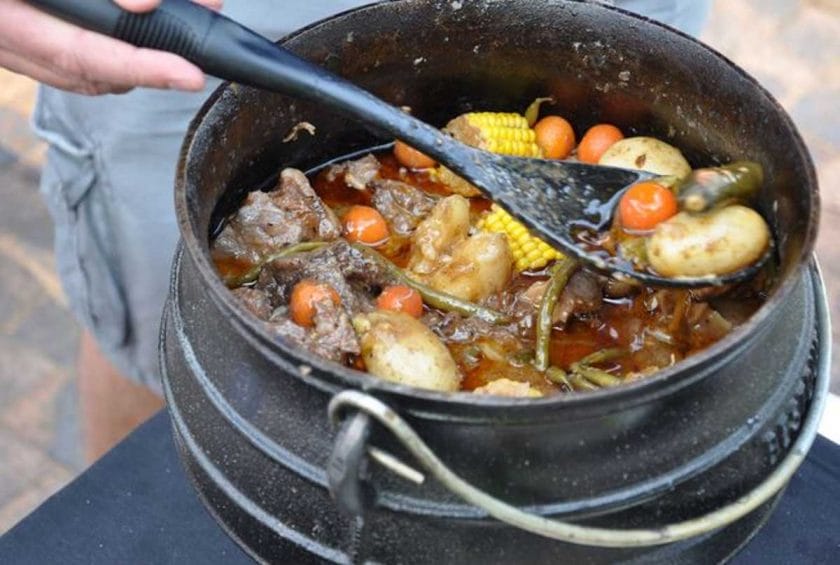
Local specialties to look out for are fresh oysters in Lüderitz on the coast and Kalahari truffles from eastern Namibia, delicious rare delicacies which are in season in April and May.
Namibian beer, brewed in accordance with the Bavarian purity law, is excellent. Two favourite local brands are Windhoek and Tafel, and you can also find German beers in bars and restaurants around the country.
There are few Namibian wineries, so if you’re not drinking beer, you’re most likely going to be sipping South African sauvignon blancs and pinotages.
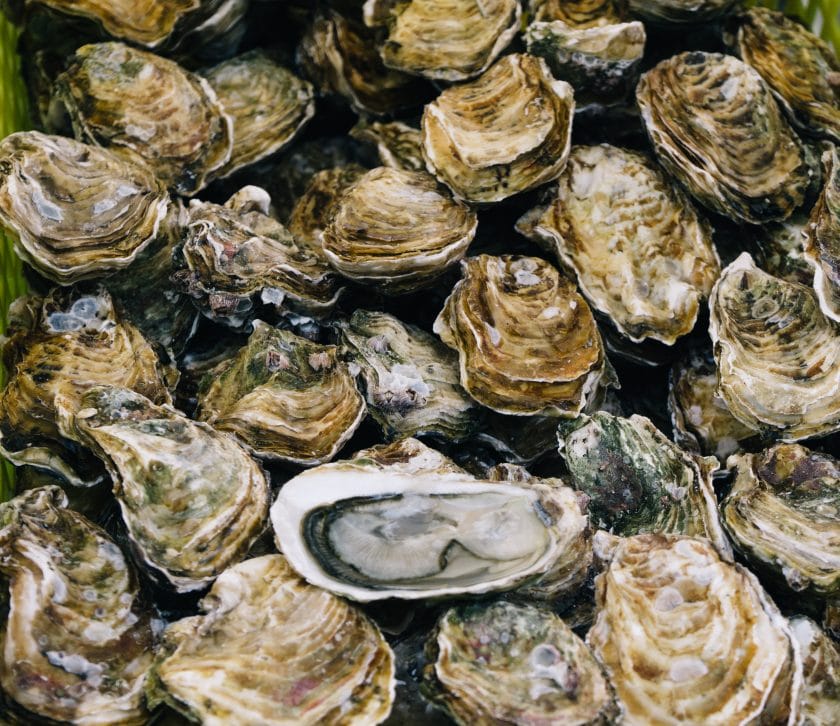
It’s standard to leave a 10% to 15% tip in restaurants. If you park your car in Windhoek, there may be a car guard who offers to watch over it while you’re gone. It’s usual to tip them a few Namibian dollars when you return to your car. People usually tip petrol attendants around N$5 for fuelling.
Most lodges will suggest tipping amounts for guides, trackers, and housekeeping staff which is usually an amount per day. Some lodges ask for you to put your tip in an envelope and hand it to the manager or guide; some have tip boxes at reception.
It’s customary to leave a tip at the end of your stay (it’s not necessary to tip at the end of each day or activity), especially for guides and trackers.
The San Bushmen are descendants of Africa’s Stone Age tribes and are considered Namibia’s oldest inhabitants. Confined in the desert and semi-desert regions of Namibia, their survival skills in such a harsh climate are renowned worldwide.
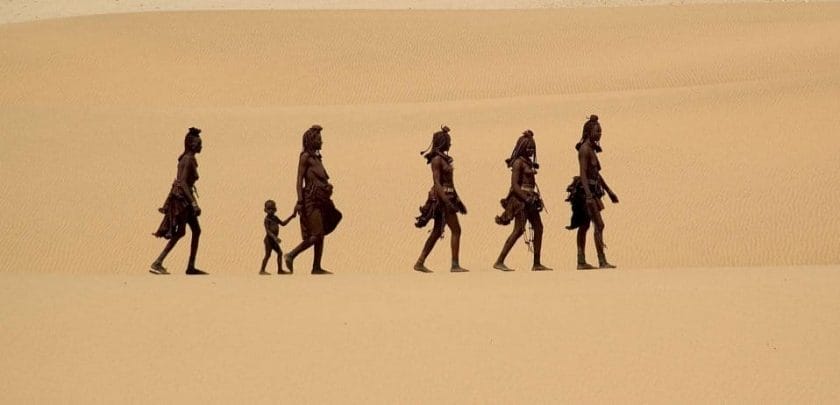
Bantu-speaking populations include the Himba, Ovamba, and Herero people, who are also highly adept at living in the stark landscape of Namibia.
Namibia’s capital city Windhoek has shopping malls and craft markets (the Namibia Crafts Center is a highlight) where you can buy any clothing items or travel gear you may have forgotten to pack, as well as souvenirs such as baskets, pottery, carvings, art and jewelry and leather goods, to take home.
Swakopmund also has a number of souvenir and jewelry shops and art galleries. Traveling around Namibia, you’ll find craft markets and curio stalls in tourist areas, villages, along roadsides, and near the entrance gates to national parks such as Etosha.
On March 21, 1990, Namibia declared independence from South Africa. The indigenous peoples of the nation were the San, Nama, and Damara. Later, during the Bantu expansion, Bantu immigrants arrived in the region.
Since then, the Bantu people (known as the Ovambo) have become the majority of Namibia’s population, and their language, Oshiwambo, has become the country’s most commonly spoken language.
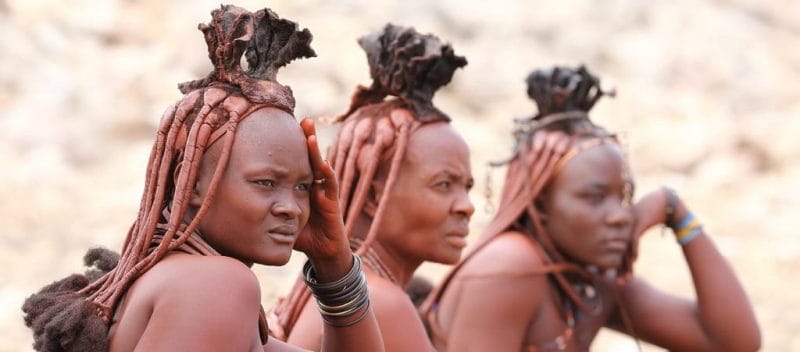
Namibia has a population of 2.1 million people and is sparsely populated due to the vast Namib Desert, which covers most of the region.
Despite its limited population, Namibia has a complex linguistic environment, with languages in ranging from the Indo-European, Khoisan, and Bantu families being spoken.
The three languages in Namibia, English, German, and Afrikaans, were designated as official languages in Namibia during the apartheid regime.
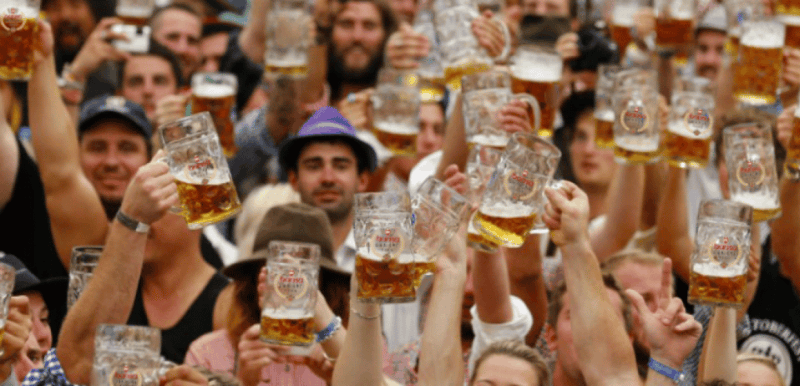
However, after Namibia achieved independence from South Africa, the country’s new government declared English to be the only official language in Namibia, as stated in the country’s constitution.
The language is now used in the country’s government administration and schools and universities as a medium of instruction.
Oshiwambo is spoken by the majority (48%) of Namibians, especially the Ovambo people who live in the region formerly known as Ovamboland.
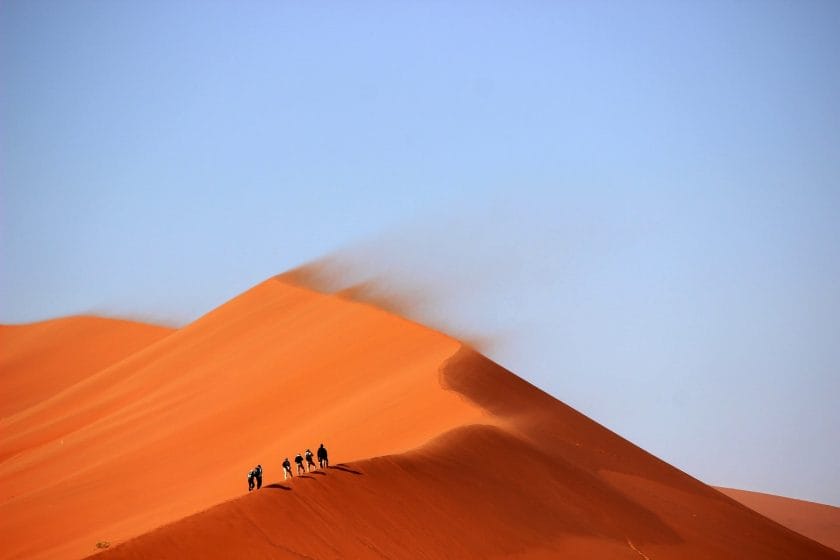
The Khoekhoe languages are Namibia’s second most widely spoken indigenous language, with approximately 11% of the population speaking it. About the same number of people speak Afrikaans. The Hereo and Kwangali languages are spoken by 10% of the Namibian population.
Other Bantu (Fwe, Kuhane, Yeyi, Tswana, Mbukushu) and Khoisan languages (Naro, Kung-Ekoka, Xó, Kxoe) are spoken by smaller percentages of the Namibian population.
Due to its dry climate, Namibia is generally a safe country regarding health issues. Windhoek has good medical facilities, although you will probably only spend a few days in the city and the rest of your trip in more remote areas.
Most of Namibia is rural and sparsely populated and big towns with hospitals are few and far between.
If you have a minor health problem, you’ll need to travel to the nearest clinic or hospital, which may be several hours away. For a serious medical emergency, you’ll need to be medically evacuated to Windhoek for treatment.
Private hospitals may insist on a cash or credit card payment before starting treatment, and it’s likely that you’ll need to pay upfront and then claim back from your travel insurance.
Namibia has an arid climate, so it’s easy to get dehydrated. Make sure to drink plenty of water (tap water is safe to drink in most places in Namibia).
The sun is particularly strong, so always wear high SPF sunscreen, a hat, and protective clothing, and avoid the midday rays.
Since many places you may end up visiting in Namibia are remote, it’s best to bring along any medication you might need.
It’s also a good idea to carry a comprehensive first aid kit that includes antibiotics, anti-inflammatory drugs, antidiarrheal medication, antibacterial ointment, antimalarial tablets, rehydration electrolyte sachets, insect spray and repellent, water purification tablets and bandages.
For driving and hiking navigation, it’s a good idea when you have WiFi to download offline maps of Namibia on your smartphone using the Google Maps and maps.me apps.
A yellow fever vaccination certificate is required for people visiting Namibia from countries with a risk of yellow fever transmission. It’s recommended that you get vaccinations for cholera, typhoid, tetanus, hepatitis A and B, and diphtheria. The rabies vaccination is recommended if you’re going to be staying in remote areas where you may not have medical access for an emergency vaccination, if you’re going for a particularly long trip, or if you’re going to have a higher risk of contact with animals and bats.
From November to June there is a high risk of malaria in the Ohangwena, Omaheke, Omusati, Oshana, Oshikoto and Otjozondjupa regions and a medium risk in northern Namibia, such as in Etosha National Park and the Zambezi Region. In all other areas there is a low to no risk of malaria throughout the year. It’s best to contact your doctor or travel clinic about malaria prophylactics before your trip. To prevent mosquito bites, use repellent on your skin and clothes, wear long trousers and shirts in the early morning and evenings and if possible, sleep under a mosquito net.
If you aren’t able to get to a nearby hospital, then call E-Med Rescue 24, a private emergency evacuation company that runs ground ambulances and aircraft. If you’re in a remote location they will be able to arrange transport for you to hospital.
Namibia has both public and private healthcare providers and mobile clinics in remote locations. There are big differences between public and private healthcare facilities: private hospitals and clinics are far more sophisticated and better staffed, while public facilities, which serve the majority of the population, are often understaffed and aren’t able to offer all healthcare services such as organ transplants and dialysis. Travellers are advised to only use private healthcare services for which you will usually need to pay yourself and afterwards claim back from your travel insurance.
It’s advisable to get full travel insurance that includes medical coverage for your Namibia vacation. Make sure that your medical insurance covers you for medical evacuation, as well as any adventure activities you may want to do, such as skydiving, hiking, mountain climbing, sand boarding and quad biking. It’s a good idea to get comprehensive insurance on your rental car too.
Prices for lodging in Namibia range from:
- N$140 (US $12) per person in a campsite
- N$200 (US $17) for a budget guesthouse
- N$700 (US $60) for a B&B room
- N$1000 (US $85) per person for a chalet in one of the camps in Etosha National Park
- N$1500 (US $128) per person in a mid-range safari lodge
- N$7000 (US $600) per person for a night in an all-inclusive luxury safari lodge
A meal for two people in a mid-range restaurant will cost around US $30. Entrance fees for some national parks are N$80 (US$6) per person per day, while other parks are N$40 (US$3).
The cost of activities varies greatly ranging from:
- N$85 (US $7) for a guided tour of Kolmanskop ghost town
- N$650 (US $55) for a half-day guided nature walk on the dunes near Swakopmund
- N$6500 (US$557) per person for a hot air balloon flight
- Why Namibia
Registered Members of these Organizations
USEFUL LINKS
- African Safaris
- African Safari Tours
- African Safari Lodges
- Why Book with us?
- Content Collaborations
- Safari Cost Estimator Tool
- Wildebeest Migration
- Privacy Policy
- Website Terms of Use
POPULAR COUNTRIES
- View All Countries
- South Africa Safaris
- Botswana Safaris
- Kenya Safaris
- Tanzania Safaris
- Namibia Safaris
- Rwanda Safaris
- Uganda Safaris
- Zambia Safaris
- Zimbabwe Safaris

POPULAR DESTINATIONS
- View All Destinations
- Cape Town Holidays
- Kruger Safaris
- Victoria Falls Safaris
- Masai Mara Safaris
- Serengeti Safaris
- Etosha Safaris
- Chobe Safaris
- Okavango Delta Safaris
TRAVEL BLOGS
- 10 Birds to Spot while on Safari in Tanzania
- Lufthansa Ups Direct Flights to South Africa
- Cape of Storms: What You Need to Know about Cape Town’s Weather
- Animal Attacks: How to Stay Safe on Safari
- Travel News Digest, 5 April: FlySafair’s Kruger-Cape Route, Destination Dupes, Increased Biodiversity Focus
DISCOVER AFRICA SAFARIS
2nd floor, Tygervalley Chambers One, 27 Willie van Schoor Avenue, Bellville, Cape Town , 7530
Accommodations
8:00am - 17:00PM
Top Destinations
- South Africa
- East Africa

- Destinations 8 African Countries
- Safari Packages Recommended Itineraries
- Victoria Falls Best Tours & Activities
- Houseboats Excitement Of Exploring
- Overland Expeditions Self-Reliant Adventure Travel
- Let's Plan Journey
- Destinations
Safari Packages
- Victoria Falls
- Overland Expeditions

Let Us Be Your Guide
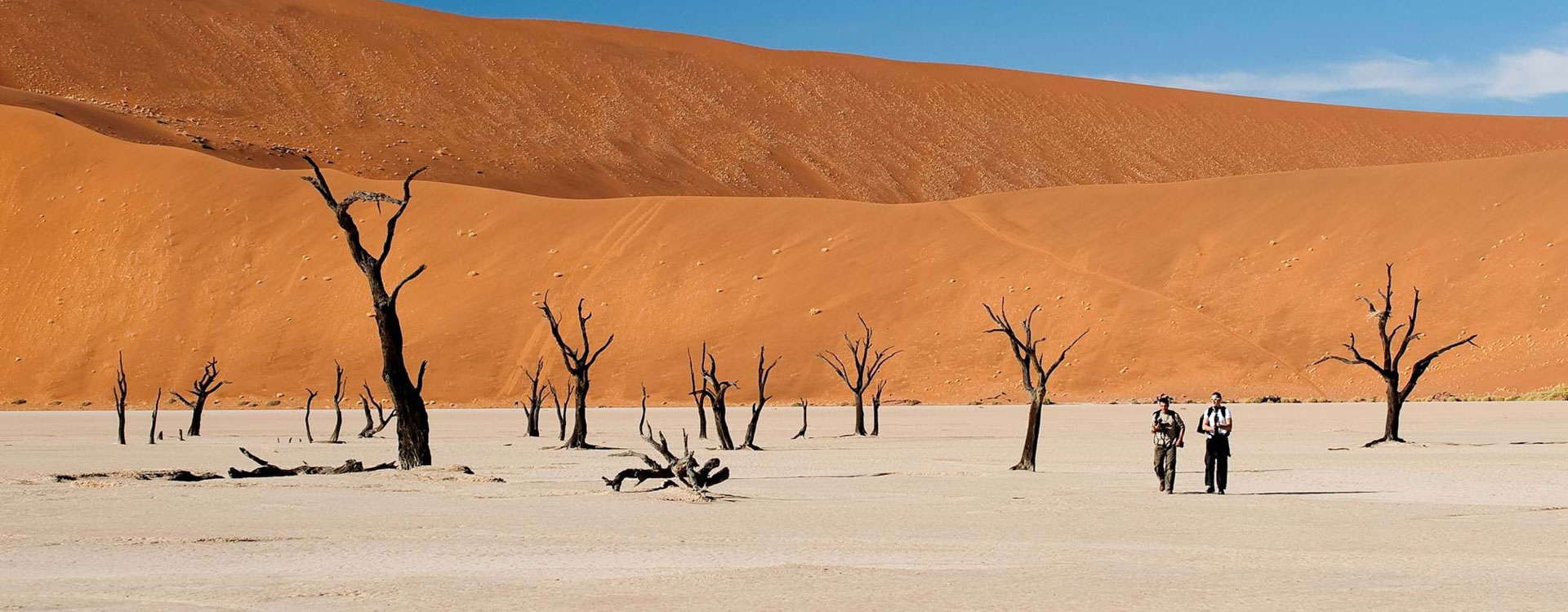
Namibia Safari Packages
Namibia is Africa’s most contrasting destination. This country is so diverse, on the same land, you can witness diverse wildlife and barren deserts. The national parks in Namibia offer truly unique and immersive safari experiences. Here everything is spectacular, and so does a Namibia Safaris. And, here are some Namibia Safari Packages that you can choose before you Travel To Namibia.
Quick Navigation Links
Types of namibia safari packages, namibia safari packages based on travel type, falcon’s recommended namibia safari tour packages, safari packages for different namibian destinations, namibia safari packages based on destinations, ratings of namibia safari packages as per travellers, factors to consider when choosing namibia safari packages, ready to book namibia safari packages, types of namibia safari packages.
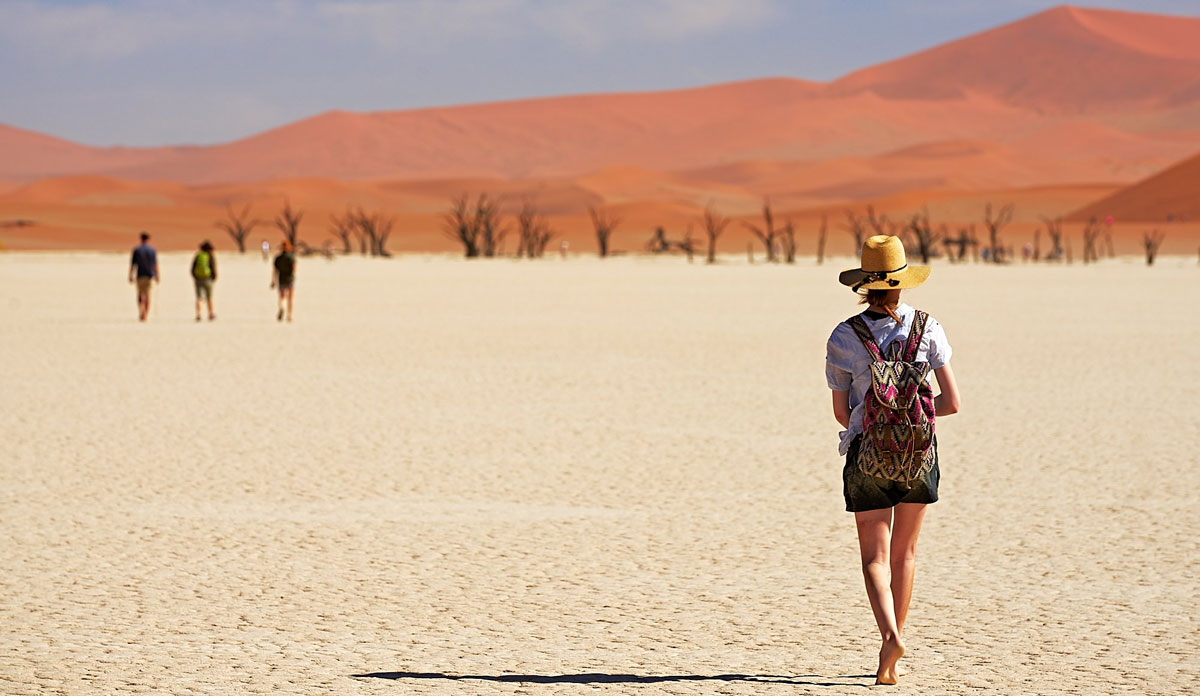
Namibia offers three different safari packages, which cover all types of travellers, from Budget to Mid-range and Luxury Safar Packages. Each of these Namibia Safari Packages is designed to offer great value.
Namibia Budget Safari Packages
Namibia Budget Safari Packages are designed for those who want to explore Namibia on a low budget. Namibia Accommodations on these packages include basic lodges and tents.
Features of Budget Namibia Safari Packages
- Low-cost accommodation option
- Game drives in National Parks
- Meals and transfers included
Namibia Midrange Safari Packages
Mid-range Namibia Safari Packages , offer better luxury accommodation and a higher level of comfort, compared to a budget one.
Features of Mid-range Safari Packages
- More spacious and comfortable rooms
- Game Drives in some of the best National Park like Etosha National Park
- Better amenities than budget safari packages
- Wildlife-viewing, in private reserves
Namibia Luxury Safari Packages
For travellers who want to experience Namibia Safari , without compromising anything, Luxury Safari Packages are perfect for them. These safari packages offer top-notch accommodation with high-class services.
Features of Namibia Luxury Safari Packages
- Luxury lodges offering top-notch services
- Gourmet meals
- Game Drives with experienced guides
- Hotel Transfers
- Wildlife viewing in a private reserve with exclusive access
Namibia Safari Packages based on Travel Type
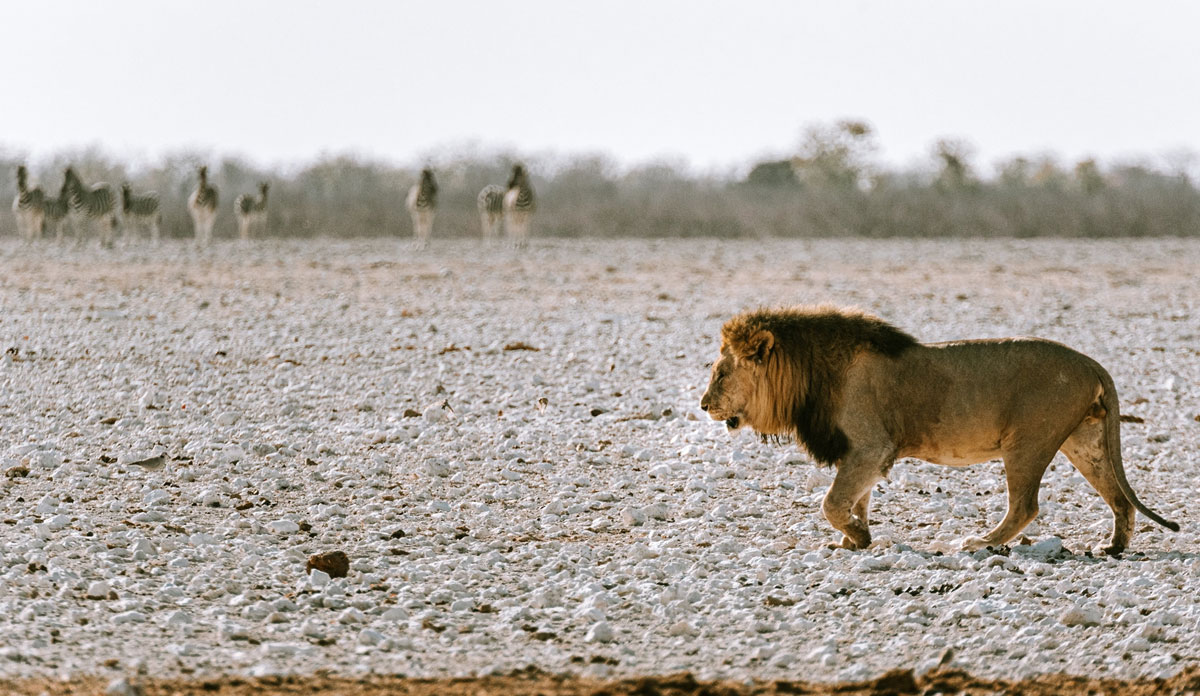
No matter what you’re looking for Safari In Namibia , whether you want to go on a game drive or you want to Namibia Holiday with your family. We offer the best Namibia Safari Packages which are perfect for each type of traveller.
Namibia Family Safaris
Namibia is the perfect destination to spend some quality time with your family. There’s a lot to experience on Namibia Safari , like multi-day hiking, sandboarding, quad biking, animal tracking and skydiving for teenagers.
Namibia Wildlife Safaris offer a unique and unforgettable experience to observe a wide range of animals in their natural habitat, including lions, elephants, giraffes, and more. Visitors can explore the vast, rugged landscapes of Namibia and witness the incredible biodiversity of this beautiful country.
Namibia Honeymoon Safaris provide a romantic and adventurous way to celebrate your marriage. You can explore Namibia's stunning natural landscapes, from the towering dunes of Sossusvlei to the wildlife-rich Etosha National Park . Enjoy private game drives, hot air balloon rides, and luxurious accommodations under the stars, creating unforgettable memories with your loved one.
Namibia Self-Drive Safaris allow visitors to explore the country's diverse landscapes at their own pace. You can rent a car or camper and travel along well-maintained roads, stopping at national parks, coastal towns, and desert landscapes. Enjoy the freedom of creating your itinerary, discovering hidden gems, and experiencing the local culture and wildlife.
Namibia Private Safaris offers bespoke, luxury safari experiences in Namibia. Their Namibia Safari Itineraries are tailored to meet the needs and preferences of each client, and they focus on providing personalized service, high-quality accommodation, and exceptional wildlife encounters. Their knowledgeable guides and drivers ensure a safe and unforgettable journey through Namibia's stunning landscapes and wildlife reserves.

Below we have recommended some of the best Namibia Safari Packages, these packages offer a variety of experiences, including wildlife viewing, cultural encounters, and scenic landscapes, all with expert guides and comfortable accommodations.
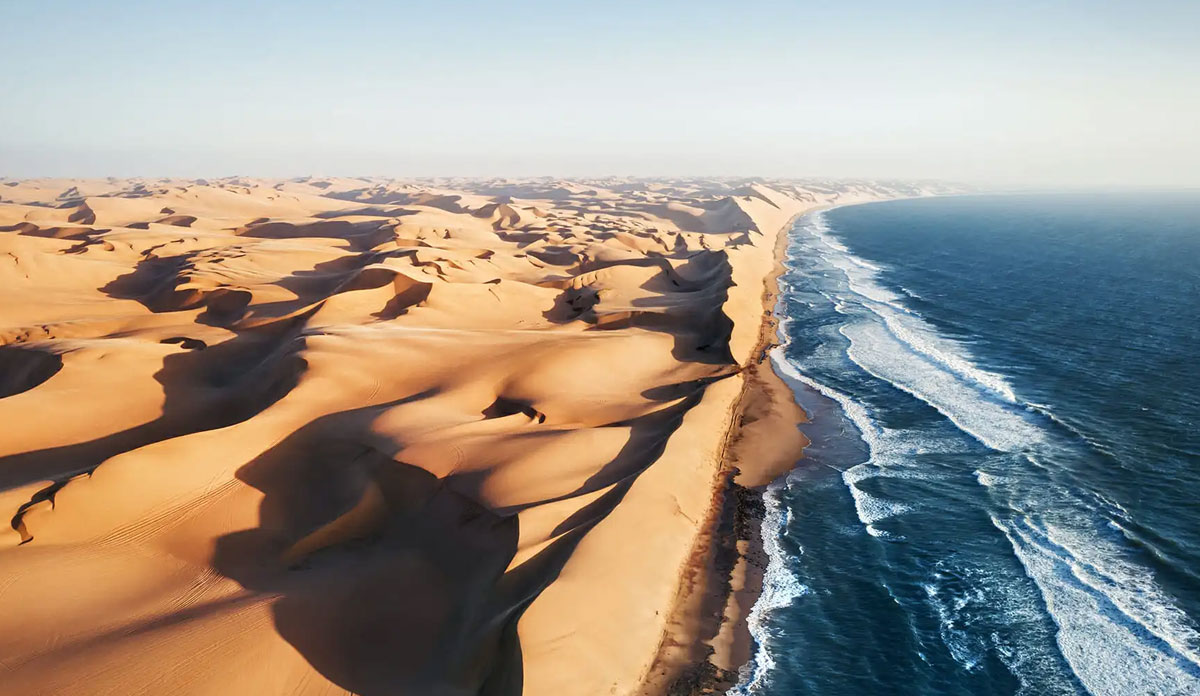
As a country Namibia offers endless possibilities to anyone visiting it as a tourist, wanting to learn about the city and understand its culture. From exploring the bustling cities of Cape Town to basking in the coastal charm of Durban City and venturing into the wilderness of Kruger National Park , Namibia treats you with plenty of unforgettable memories and diverse travel experiences like no other. So, join us as we take you through the very best Namibia Tours and show you what they got in store for you.
Our first and most popular Namibia Destination is Cape Town. One visit to the Mother City of Namibia and nothing can stop you from falling in love with the place with our Cape Town Tours . You can marvel at the panoramic views from the top of Table Mountain by hiking or taking the cable car or alternatively, you can stroll through the colourful streets of Bo-Kaap.
Furthermore, Cape Town is a world-famous destination for its wine-tasting tours. One of the top-most Things To Do In Namibia is to explore the renowned Cape Winelands while indulging in world-class wine tasting against the backdrop of stunning vineyards and mountain ranges. Another place, which you just can’t ignore during your Namibia Trip is to visit Boulder’s Beach. Here, you will get the splendid opportunity to get up close and personal with a colony of adorable African Penguins.
One more thing to mention here is that the trip length of Cape Town Safari Tours can range from short-day tours to longer itineraries of around 18 days. We have already discussed safari packages involving longer trip lengths in the above section. So, now in this section, we are going to focus only on Cape Town Day Tours and their highlights. So, let’s look at these day tours listed below.
Falcon’s Deligh t: At Falcon Safaris, we offer a 30-minute Two Oceans Helicopter Flip Tour from Cape Town. Guests boarding this flight are not only going to get a bird’s eye view of the stunning Cape Town City but also get to hear the expert commentary by the pilot. This makes the journey even more wholesome and memorable.
Johannesburg
Johannesburg Tours is all about gaining insight into the nation’s past by undertaking visits to its towns and museums. The city is steeped in history and culture. A visit to its Apartheid Museum not only narrates the story of its freedom struggle but also chronicles Namibia’s journey towards democracy. Alternatively, you can take guided tours to the township of Soweto. This historical town played a pivotal role in the anti-apartheid movement and visit to Nelson Mandela’s former residence.
The city of Durban is renowned for its sun-kissed beaches and pleasantly warm weather that stays the same almost every time of the year. The sub-tropical weather and beautiful beaches make it a tropical paradise for travellers who just want to laze out and relax on the shores with a ray of abundant sunshine. To say the least, Durban is a year-round destination for beach lovers.
Our Durban Tours Packages allow you to wander along the famous Golden Mile, a vibrant beachfront promenade lined with enticing cafes, restaurants, and street performers. Furthermore, you can also explore the wonders of the underground deep waters at uShaka Marine World during Durban Excursions. This theme park features a world-class aquarium, an exhilarating water park, and mesmerizing dolphin shows. Lastly, you can end your day with a taste of local cuisine by indulging in a traditional Bunny Chow. This is a Namibian fast food of curry-filled hollowed-out bread. This is cheap, practical, and deliciously tasty and all we can say is that you are going to love it!
Kruger National Park
The wildlife statistics that this premiere Namibia Destination throws validates its safari success. The diverse ecosystem of Kruger supports the growth and survival of around 147 mammal species including more than 40,000 buffalos, 13,000 elephants and over 2000 lions. The national park has more rhinos than any other similar protected area. The whopping list of mammals makes Kruger National Park Safari one of the most sought-after things to do during Namibia Travel .
Falcon’s Tip: No other park in Africa is as Self Drive friendly as Kruger. So don’t forget to rent a safari vehicle when arriving at one of the top Tourist Attractions in Namibia , Kruger National Park and explore it at your own pace.
Some popular Kruger Safari Tours are tabulated below:
Namibia Safari Packages Based on Destinations
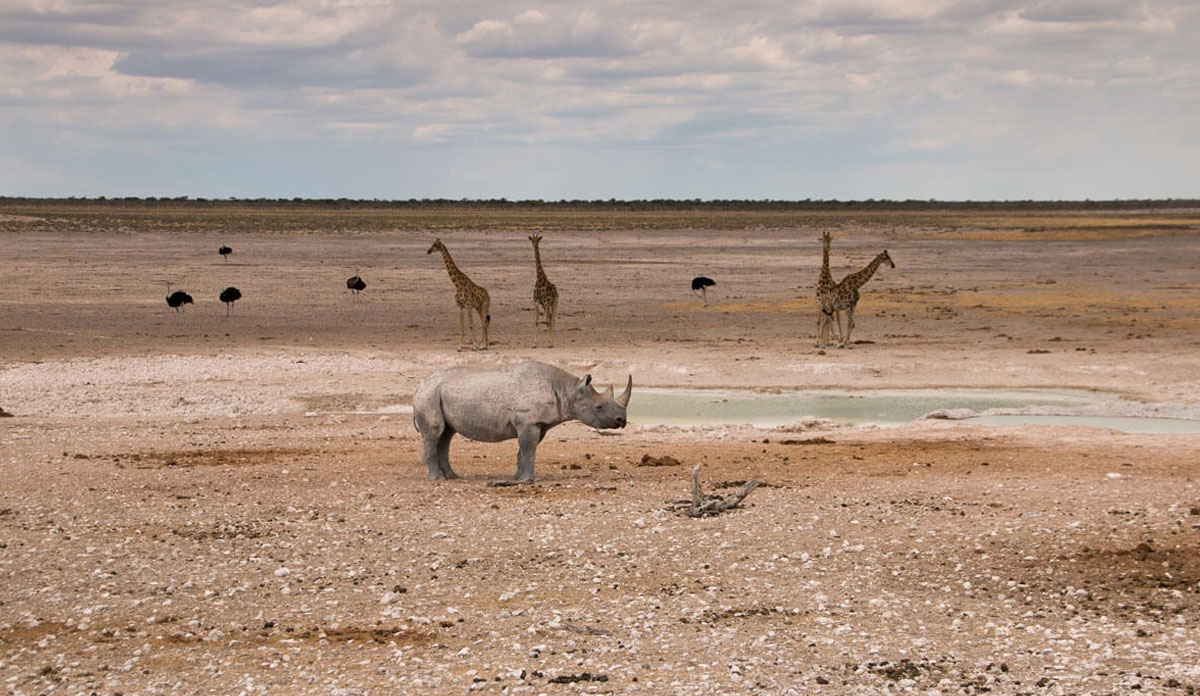
Driving throughout the country on a Namibia Safari , you will explore some of the unique and extraordinary destinations. Starting from a game drive in Etosha National Park to sandboarding on the Dune 45, there are attractions to explore and with the right safari package, you can even experience that particular destination.
Etosha National Park
Spanning an area of over 22,270 sq. km, Etosha National Park is the biggest national park in Namibia. Etosha National Park is completely fenced off for the protection of wildlife. If you’re on the Safari in Etosha National Park, you’re likely to spot animal species, including large- mammals such as the lion, giraffes, elephants and Rhinos.
Some Recommended Namibia Safari Packages for Etosha National Park
- 4-Day Classic Etosha National Park Safaris
- 7-Day Namibia Self-Drive to Etosha
- 10-Day Classic Namibia Safaris
- 3-Day Etosh Excursion Luxury
- 9-Day Wildlife Safari Standard
The Skeleton Coast
If you’re on a Namibia Safari Holiday , never miss checking out the Skeleton Coast . As the name goes, this coast is filled with stranded ships and skeletons of whales all over the beach.
Skeleton Coast is the world’s largest ship graveyard. And, it is located in the northern part of Namibia’s Atlantic coast.
Here are some recommended safari packages for the Skeleton Coast
- 8-Day Namibia Desert, Dune Classic
- 11- Day Dust of Beautiful Africa
- 12-Day Great Namibian Journey
Fish River Canyon
Fish River Canyon in Namibia is a resemblance to the Grand Canyon in the US. Fish River Canyon is Africa’s biggest canyon and the world’s second-largest canyon.
The Fish River Canyon is popular for offering hiking trails, this place for perfect for those who want to spend some quality time in tranquillity.
If you're looking to explore Fish River Canyon, here are some recommended Namibia Safari Packages .
- 6 Days Canyons & Desert Tour Namibia
- 18-Day Fairest Cape and Namibia Self Drive
- 12-Day Exploring Namibia
- 7-Day South Safari Tour Namibia
Keetmanshoop
Based in Southern Namibia, Keetmanshoop is a famous ghost town. Back in 1990, this city was a prime market for diamonds, has schools, buildings and hospitals, a casino, a theatre, and everything that a well-developed city has.
But, after the first world war, the diamond market started crashing, so the city was. And, within the next 40 years, this elegant city turned into a ghost town. Today this city attracts thousands of tourists and offers a unique photographic experience.
If you’re on Namibia Safari Tours , do not forget to take a tour of this city. And here we’re recommending you the best safari package for Keetmanshoop.
- 7-Day South Africa Tour Namibia
Central Region
The central region of Namibia is a vast and arid area with scattered settlements and traditional villages. It is home to the capital city of Windhoek and various historical and cultural attractions, including the Namibian Craft Center and the Christuskirche church,
Additionally, the central region of Namibia is characterized by its rugged landscapes, including the Khomas Hochland mountains and the scenic Spreetshoogte Pass. It is also a hub for transportation, commerce, and government administration in Namibia.
Namibia Safari Package that covers Central Region -
- 15 Day Namibia Desert and Wildlife
Lüderitz is known for its colonial architecture and aquatic wildlife like seals and penguins, flamingos and ostriches. This city is located in Karas Region, southern Namibia.
On a tour of this city, visitors can explore the Art Nouveau buildings and museums. You can explore this city under this Namibia Safari Packages.
- 6-Day Canyon and Desert Tour Namibia
Located in the Southern part of the Namibia Desert, the Sossusvlei is a salt and clay pan. This salt pan is surrounded by red dunes. The sands found in Sossusvlei date back to 5 million years.
This place is stunning and a perfect destination that you can explore on a Namibia Safari . Here we have mentioned below some of our tops recommended Namibia Safari Packages that cover Sossusvlei.
- 15-Day Namibia Camping Expedition
- 4 Day Sossusvlei Safari combined with Sossusvlei
- 22-Day Brilliant Botswana and Namibia
- 11-Day Dust of Beautiful Africa
- 15-Day Namibia Deserts and Wildlife
Often known as adventure’s capital, Swakopmund is a perfect destination for surfing, skydiving and Dune Boarding. This coastal town has historic colonial structure buildings and sandy beaches, making it perfect for a beach holiday destination.
You can go on a Dolphin watching tour and take part in activities such as quad bikes.
Here are some Namibia Safari Packages that cover Swakopmund –
- 10-Day Namibia Highlight Safaris
- 13-Day Namibia Highlights
- 13-Day Best of Namibia Family Adventure Safaris
- 2-Day Namibia Trail
- 8-Day Northern Namibia Adventure Safaris
- 7-Day Tribe of Northern Namibia Culture Safari
Caprivi is a forbidden zone in Namibia, and it is a beautiful destination to spot wildlife. This thin strip of land, ishome to 6 tribes. This unique landscape is blessed with a long list of antelope species and a big 4 animals.
Here you can visit to other popular places like Chobe River Front, Impala Island, Mudumu& Nkasa Lupala National Park.
For those who want to explore the Caprivi strip on Namibia Safaris , here’re some recommended safari packages
- 15 Day Ultimate Wildlife & Bird Safari Luxury
- 20-Day Africa Safari Tour
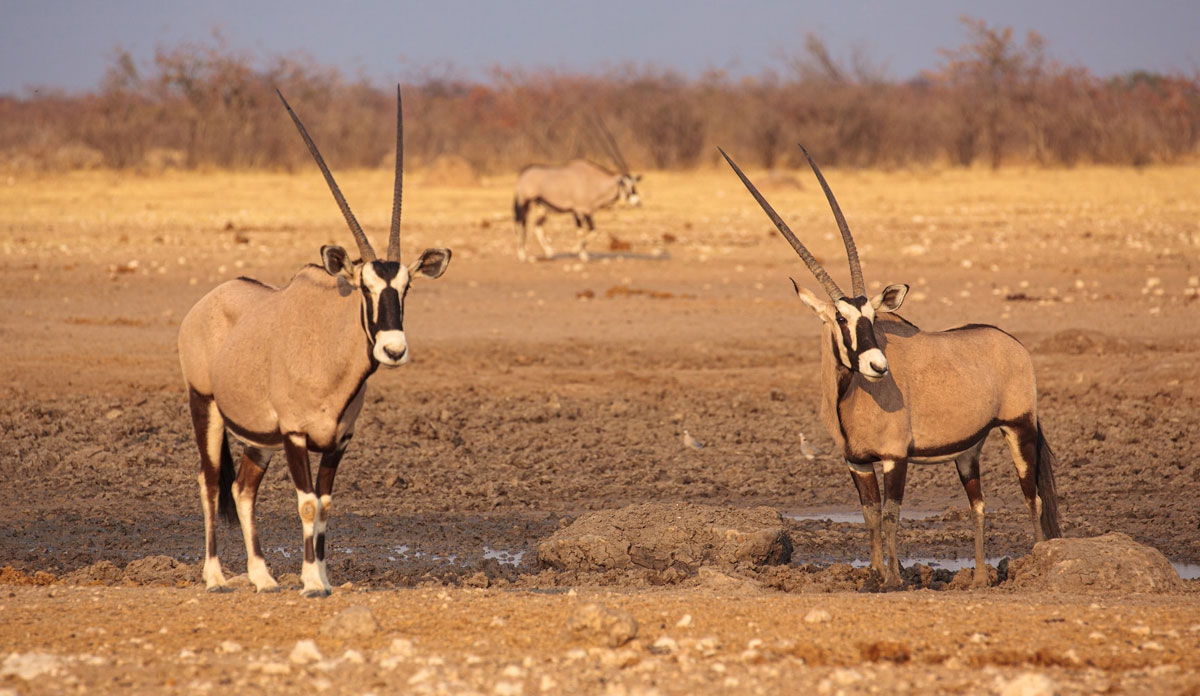
Below is the table we have mentioned the rating of different Namibia Safari Packages. These ratings were given by past travellers based on what they experienced in that particular safari package such as their itinerary, and guide and based on the tour operator.
Before you embark on Namibia Safari , take a look at the following rating table and figure out which safari package suits you.
Factors to consider when choosing Namibia Safari Packages

Choosing the right Namibia Safari Package is crucial to ensuring a memorable and enjoyable wildlife experience in Namibia. Here are some important factors to consider when selecting a Namibia Safari Package :
Budget: The cost of a safari package is an important consideration, as it can vary greatly depending on the level of luxury, length of stay, and Nambia Safari Activities included. Determine your budget and look for packages that fit within your price range.
Accommodation: The type and quality of accommodation provided can significantly impact your Namibia Safari experience. Consider whether you prefer luxury lodges, tented camps, or basic camping. Look for packages that offer comfortable and safe accommodation options.
Safari type and duration : Decide whether you want a self-drive or guided safari, and how many days you want to spend in the wilderness. Longer safari packages typically offer more opportunities for wildlife sightings and unique experiences.
Wildlife sightings : Research the wildlife species that you are interested in seeing, and choose a package that includes the appropriate areas and activities for observing them.
Season and weather : The Best Time To Visit Namibia can vary depending on the season and weather conditions. Consider the time of year you plan to travel and look for packages that offer the best wildlife sightings and weather conditions during that time.
Tour operator reputation : Research the reputation of the tour operator offering the safari package, including their safety record, reviews from previous customers, and their level of experience in Namibia. Choose a reputable and experienced Namibia Tour Operator for a safe and enjoyable safari experience.
Group size : Consider whether you prefer a small or large group safari experience. Smaller groups offer a more personalized and intimate experience, while larger groups can be more social and affordable.
Activities included : Look for packages that offer a variety of activities, such as game drives, bush walks, night drives, and cultural tours. Choose a package that includes the activities that interest you the most.
Transport: Consider the type of vehicle used for game drives and the condition of the roads. Look for packages that offer comfortable and safe vehicles for game drives.
Location and accessibility: Consider the location of the Namibia Safari Package and how easy it is to get there. Look for packages that offer convenient and safe transportation to and from the safari destination.
Guide experience and knowledge : The experience and knowledge of the safari guide can greatly enhance your wildlife experience. Look for packages that offer experienced and knowledgeable guides who are passionate about wildlife and the local culture.
Conservation and sustainability : Consider the conservation and sustainability practices of the safari operator and their impact on the environment and local communities. Choose a Namibia Safari Operator that supports conservation efforts and is committed to sustainable tourism practices.
By considering these factors, you can choose a safari package that meets your expectations and offers an unforgettable wildlife experience in Namibia.
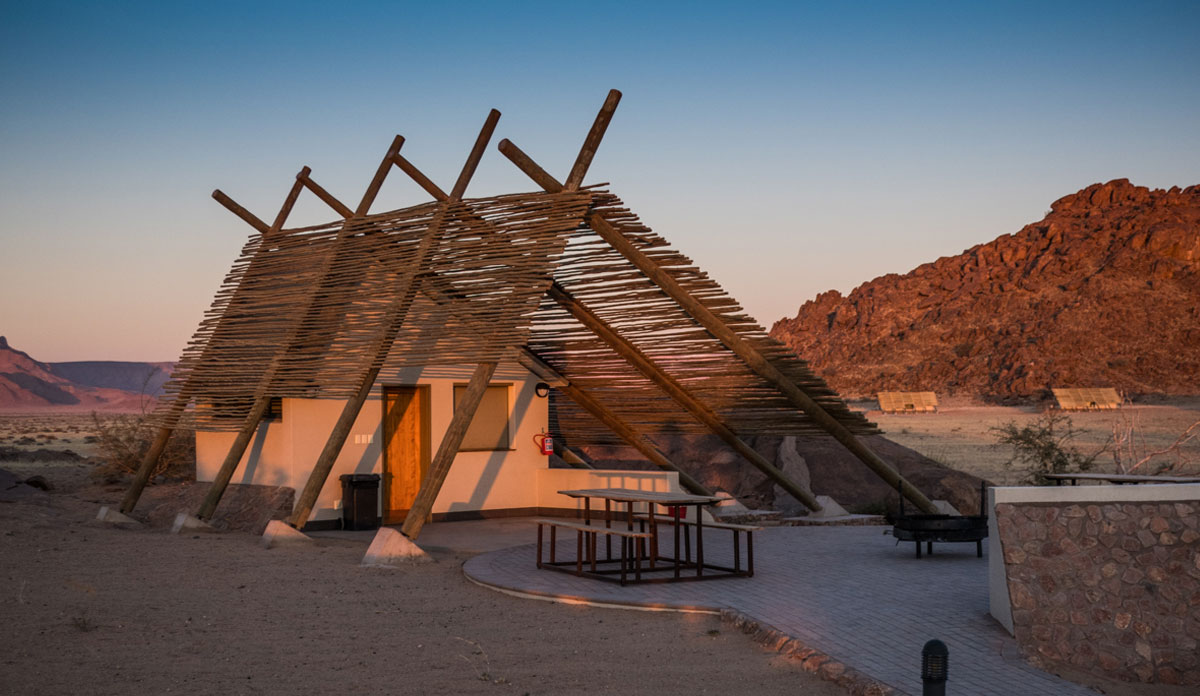
Namibia Safari offers a once-in-a-lifetime opportunity to witness stunning landscapes, encounter unique wildlife, and immerse oneself in a rich cultural heritage. With a variety of Namibia Safari Packages available, there is something for every budget and interest. Namibia is an unforgettable destination for any adventurous traveler.
Related Namibia Travel Guide
We think you’ll love.
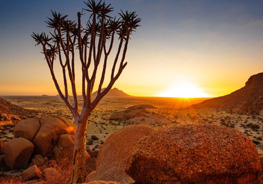
Best Time To Visit
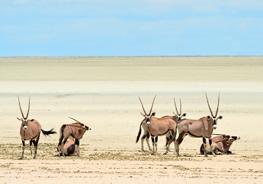
Safari Cost
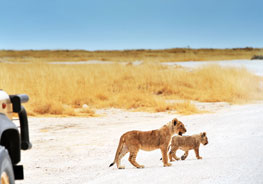
Things To Do
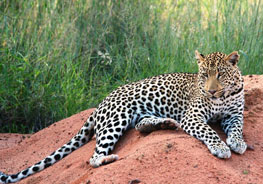
Travel Facts
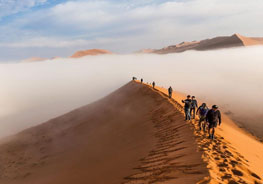
Travel Requirements

Frequently Asked Questions
What is the best time to visit namibia for a safari.
The Best Time To Visit Namibia for a safari is during the dry season, from June to October, when wildlife is easier to spot near water sources. However, the shoulder seasons of April to May and November to December can also be good for wildlife sightings, and offer lower rates and fewer crowds.
What types of accommodation are available on Namibia safari Packages?
There are various types of accommodation available on Namibia Safaris Packages , including luxury lodges, tented camps, and basic camping. The type of Namibia Accommodations depends on the safari package and budget.
What is the typical duration of a Namibia safari package?
Namibia Safari Packages can range from a few days to several weeks. The typical duration is 7-10 days, but this can vary depending on the package and itinerary.
How do I choose the best safari package for me?
Consider factors such as budget, accommodation, safari type, wildlife sightings, season and weather, tour operator reputation, group size, activities included, location and accessibility, guide experience and knowledge, and conservation and sustainability practices when choosing a safari package.
What activities are available on a Namibia safari Packages?
Activities available on Namibia Safari Packages include game drives, bush walks, night drives, cultural tours, scenic drives, and adventure activities such as sandboarding and quad biking.
How do I book a Namibia safari package?
Book a Namibia Safari Package through a reputable tour operator or travel agency that specializes in Namibia Safaris .
We are thrilled to help you plan your perfect safari holiday
We'd be delighted to help you with any questions you have about properties & safaris. Please fill in the form below so that we can help you create your perfect safari holiday.
Feel free to give us a call or send us an e-mail:
Meet us on Social Media
Start planning your tailored african safari, expert safari knowledge.
The safari guide is arguably the most important part of the whole safari experience. Get a great guide and you’ll have an incredible time.
Tailor-made African Safaris
Falcon Safaris is a moderate-to-luxury safari operator dedicated to providing guests with the ultimate African experience. Get more ideas on what to do on the Victoria Falls Travel Guide
Long-term Relationships
We have intimate knowledge and superb long-term relationships with our partners, guides and exclusive connections across Africa.
Carefree Travel
Africa is an enticing destination, a once-in-a-lifetime opportunity for some and a repeat trip for others. Book your flights to Victoria Falls today.
Our Travelers Say
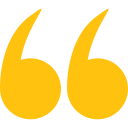
We travelled with Falcon Safaris in Zimbabwe and Botswana for 16 days. Falcon designed a wonderful trip with private guide to the most interesting sites in both countries. The organization of the whole trip was excellent, flights within the country, accommodation and activites. The guides were very knowledgable and told us a lot about the countries, their history, people, economy and much more. We visited the Great Zimbabwe Ruins, the Victoria Falls and a number of national parks in both countries. Rhino tracking was a real adventure! We had tremendous further game drives and saw very many animals - we did the Big Five. We had much more activities than planned and enjoyed very much.We strongly recommend Falcon Safaris to everyone planning a trip to Southern Africa and East Africa.
Wonderful trip to Zimbabwe and Botswana with excellent organization and very competent guides
Our Consultant Vimbai was very helpful and accommodating. We stayed at the Elephant hills hotel which was nothing short of amazing.Our activities included a helicopter flight, dinner cruise as well as a morning game drive. All the activities were absolutely amazing.
Exceptional!
We worked with Gertrude to schedule and organize everything and she did an excellent job. I asked a lot of questions via e-mail and she answered everyone in a timely helpful manner. Our guide at Victoria Falls was also great. He met us at the airport, provided a thoughtful tour of the Falls and got us to our next guide in Botswana. Our lodgings at River View Lodge were just as described- very comfortable and excellent food. All the staff were so pleasant and helpful. If I had to do it again I would arrange a morning boat ride as well. We only did the sunset boat rides and they were the high point of our entire trip- we saw so many animals and our guide was very knowledgeable. Just a great experience. Our lodgings at Oddball's Enclave was rustic and we loved it. So great to disconnect from the world for a bit. Leo, our guide, was the best - got us out and about, saw fantastic wildlife and got back to camp safely each time. Doc manages the camp so well. This whole trip was planned and organized by Falcon Safaris and we could not have been happier.
Fabulous, well planned trip
Falcon safaris have given my the correct advice with excellent service. The only suggestion will be to work closer with the lodges to confirm bookings as soon as possible. We have booked and pay our deposit a year in advance. We have only receive our final convermation from Chobe Safari lodge a week before departure. I do realize its not within your controle but with limit alternatives and a group of 14 people it becomes an issue to find alternative accomodation if the booking was cancelled.
Excellent and efficient service
Explore our africa with customize your tour.
Our passion for Africa and her rich diversity is what drives us to deliver superior itineraries for you. With over 30 years’ unrivalled experience, we believe your trip should be as unique as you are and so we tailor-make them for you as an individual.
Enquire Your Hotel
Enquire your activity, enquire now.
Not Ready To Start Yet? Send Your Details, Our Experts Will Be In Touch For A Successful African Destinations Visit
Enquire Your HouseBoat
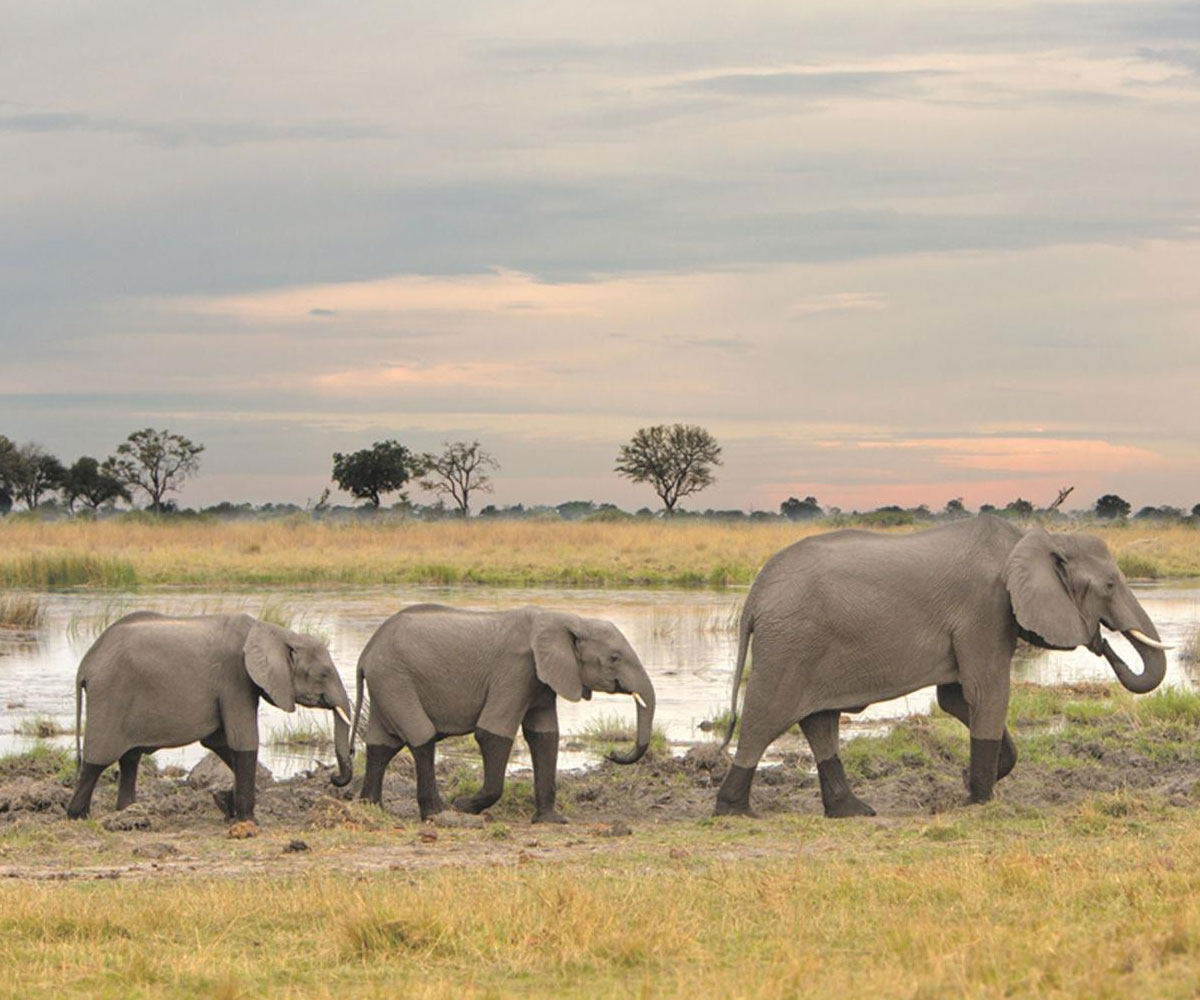

Destinations
Quick links.
Namibia safari tour packages
Namibia safari tour packages offers trips ranging from 3 to 30 days in length, with the most popular time to visit being July. These packages allow visitors to explore the breathtaking landscapes and wildlife of Namibia, including the renowned Etosha National Park. The cost of a safari varies depending on the length of the tour and the level of luxury. The major attractions of Namibia safaris include the diverse wildlife, stunning desert landscapes, and the opportunity to witness the unique beauty of the country. Etosha National Park is a highlight, known for its abundant wildlife and the famous Etosha salt pan. For those seeking a more immersive experience, safaris can be tailored to include activities such as hiking, quad biking, and fishing. From the heights of the Brandberg Mountains to the depths of the Fish River Canyon, Namibia safari tour packages offers a wealth of natural wonders. Adventure seekers can take a guided tour to explore some of the country’s lesser-known attractions like Spitzkoppe or the stunning Damaraland and the scenic beauty of the Namib Desert.
The best time to visit Namibia for a safari is during the dry season from May to October, with July being the peak season for wildlife viewing. During this time, the wildlife congregates around waterholes, making it easier to spot a variety of animals. Namibia is considered a safe destination for tourists, with well-established tourist facilities and professional safari guides ensuring the safety of visitors. With its diverse wildlife, stunning landscapes, and safe environment, Namibia offers an unforgettable safari experience for adventure seekers.
When is the best time to go on Namibia safari tour?
The optimal months for a Namibia safari tour are during the dry season from May to September. During this time, the weather is cooler and drier, making it easier to spot wildlife as they gather around water sources. Visiting during the dry winter season offers several advantages, including prime wildlife viewing opportunities and ideal weather conditions for outdoor activities. With the vegetation becoming sparser, animals are easier to spot, and the lack of foliage provides unobstructed views for photography and observation.
On the other hand, visiting Namibia during the hottest and rainy months from November to March presents challenges and disadvantages. The increased rainfall during this time makes wildlife spotting more difficult as animals disperse across the landscape. In conclusion, the best time to go on a Namibia safari tour is during the dry winter months from May to September, offering optimal conditions for wildlife viewing, favorable weather, and lower malaria risk.
What are the major attractions while on Namibia safari tour?
Embarking on a Namibia safari tour offers thrilling opportunities to explore some of the country's most captivating attractions. Etosha National Park is a crown jewel, renowned for its diverse wildlife including elephants, lions, and giraffes. Its sprawling salt pans and waterholes make for incredible game viewing experiences. Damaraland entices visitors with its striking landscapes, ancient rock art, and the chance to encounter desert-adapted elephants and black rhinos. The Zambezi Region, formerly known as the Caprivi Strip, boasts lush wetlands teeming with birdlife and riverine forests. The Waterberg Plateau is a unique geological formation, recognized for its distinct red sandstone cliffs and the reintroduction of endangered species. Lastly, the Fish River Canyon is a breathtaking natural wonder - the second-largest canyon in the world - offering unparalleled hiking opportunities and sweeping panoramic views. Every stop on a Namibia safari tour is a gateway to incredible wildlife encounters and mesmerizing scenery, making it an unforgettable journey for nature enthusiasts.
Book your dream Namibia safari tour today
Explore Etosha National Park, home to an abundance of wildlife including elephants, lions, and rhinos. Discover the stunning red dunes of Sossusvlei and marvel at the unique landscapes of the Namib Desert. Accommodations include luxury tented camps and lodges, offering a comfortable and authentic safari experience. Transportation is provided in 4x4 safari vehicles, allowing for game drives and wildlife viewing opportunities. Optional activities include hot air balloon rides over the desert and guided nature walks with experienced local guides. Visit the iconic Fish River Canyon, the second largest canyon in the world, and witness the power of the mighty Zambezi River at Victoria Falls. Explore the remote Skeleton Coast, known for its shipwrecks and abundant marine wildlife. Stay in a mix of comfortable lodges and traditional bush camps, with transportation provided in safari vehicles and domestic flights. Additional activities include guided hiking excursions, boat cruises along the Zambezi River, and cultural interactions with the local Himba people. Both options provide an unforgettable safari experience showcasing Namibia's natural beauty and wildlife. Booking your dream Namibia safari tour today and embark on the adventure of a lifetime.
Speak to an expert who's there

Start planning your trip by contacting one of our Namibia safari tour packages specialists
- +256757795781 +256701412430
- Make an enquiry
Namibia safari tour packages category

16-Days of Exploring Namibia Sossusvlei, Walvis Bay, Swakopmund and Etosha National Park
This is a 16-Days of exploring Namibia Sossusvlei, Walvis Bay, Swakopmund and Etosha National Park. Your tour begins after touching down at Hosea Kutako International Airport in Windhoek and a restful overnight stay in the capital city. Wake up refreshed and head south into the Namib Desert to the point where vast plains and rugged mountains give way to the expansive red dunes of Sossusvlei. Then journey north to the seaside town city of Swakopmund where the abundant Atlantic Ocean contrasts with the towering sand dunes and quaint historic architecture. No African adventure is complete without a classic big game safari , and your visit to both the eastern and western regions of Etosha National Park.
Discover the mesmerizing dunes of Sossusvlei: Immerse yourself in the surreal landscapes of Sossusvlei, where towering red sand dunes meet the clear blue sky. Capture incredible photos and witness the magical play of light and shadow over the dunes.Wildlife encounters at Etosha National Park: Embark on thrilling game drives in Etosha National Park, home to a vast array of wildlife. Spot majestic elephants, graceful giraffes, elegant antelopes, and if you're lucky, the elusive big cats. An experience that wildlife enthusiasts will cherish forever.
Coastal wonders of Walvis Bay and Swakopmund: Explore the charming coastal towns of Walvis Bay and Swakopmund. Discover the diverse marine life on a boat cruise in Walvis Bay, where dolphins and seals often make an appearance. Enjoy the vibrant atmosphere and indulge in adrenaline-fueled activities like sandboarding and quad biking in Swakopmund. Namibia desert adventure: Traverse the ancient, ever-changing landscape of the Namib desert. Marvel at the barren beauty of the oldest desert in the world and witness the surreal Deadvlei, a white clay pan surrounded by towering red sand dunes. This otherworldly sight will leave you awe-inspired.
Our experienced guides are passionate about Namibia and will provide fascinating insights into the history, culture, and wildlife of this remarkable country. They will ensure your journey is informative, enjoyable and safe.
Authentic cultural encounters: Get a glimpse into Namibia's vibrant cultures through interactions with local communities. Learn about traditional customs, taste local cuisines, and engage in traditional activities, gaining a deeper understanding and appreciation of this diverse nation.
Join us on this extraordinary Namibia safari tour and embark on an adventure you will cherish for a lifetime. Explore the stunning landscapes, encounter magnificent wildlife, and immerse yourself in the rich culture of this captivating country.
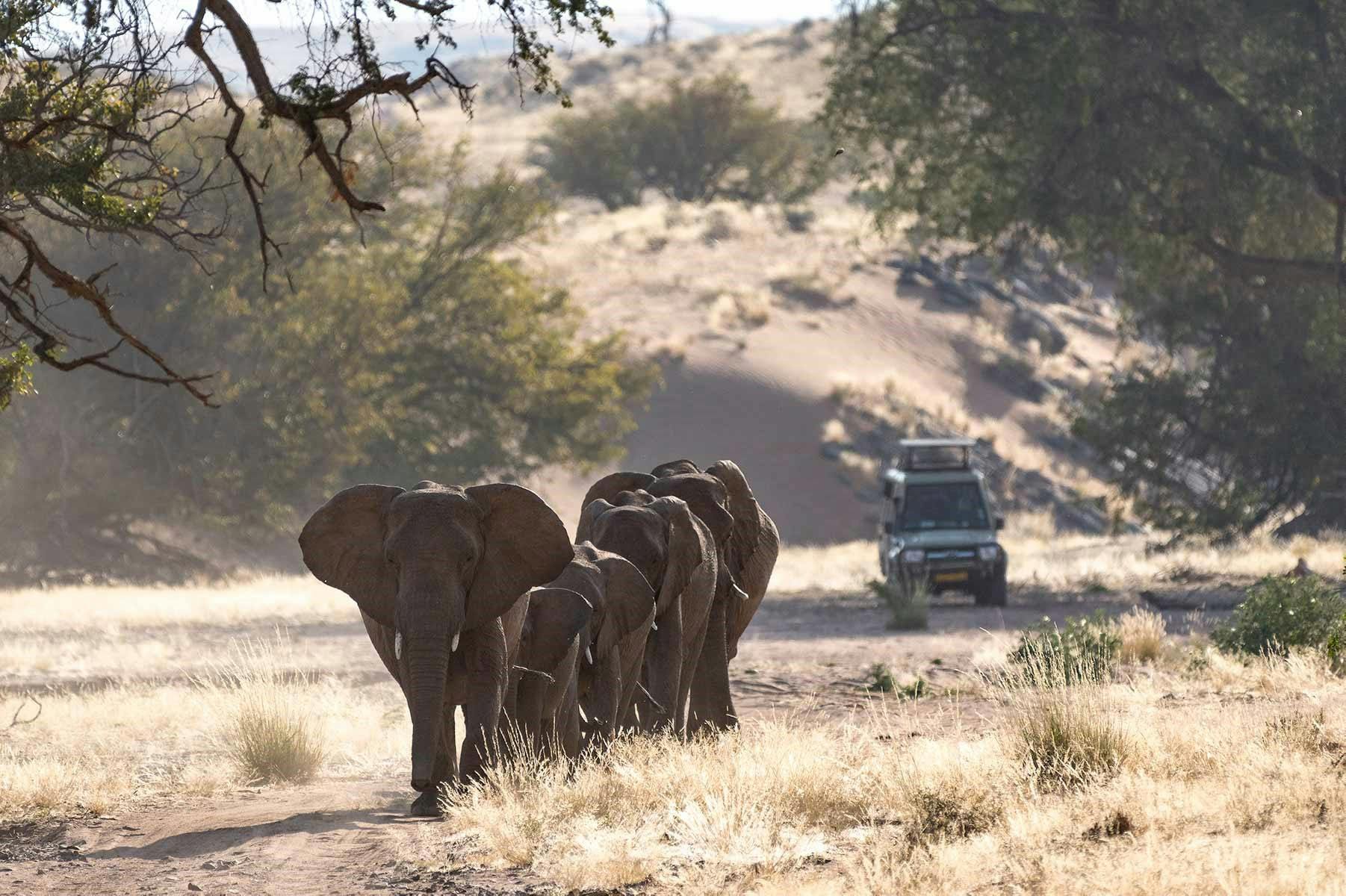
15-Day Namibia, Zimbabwe and Botswana Safari
This traditional safari provides a breathtaking excursion through Namibia's most stunning spots, as well as the Victoria Falls in Zimbabwe and the Chobe National Park in Botswana. Although there are several lengthy travel days on this trip, all of the highlights feature 2-night stays. The lodges are stunning, cozy, and ideal for an exciting safari. On this 15-Day Namibia, Zimbabwe and Botswana Safari you will visit several tourist attractions like Namib Desert, Brandberg Mountain, Etosha National Park, Kavango River, Okavago Delta, Caprivi to mention but a few.
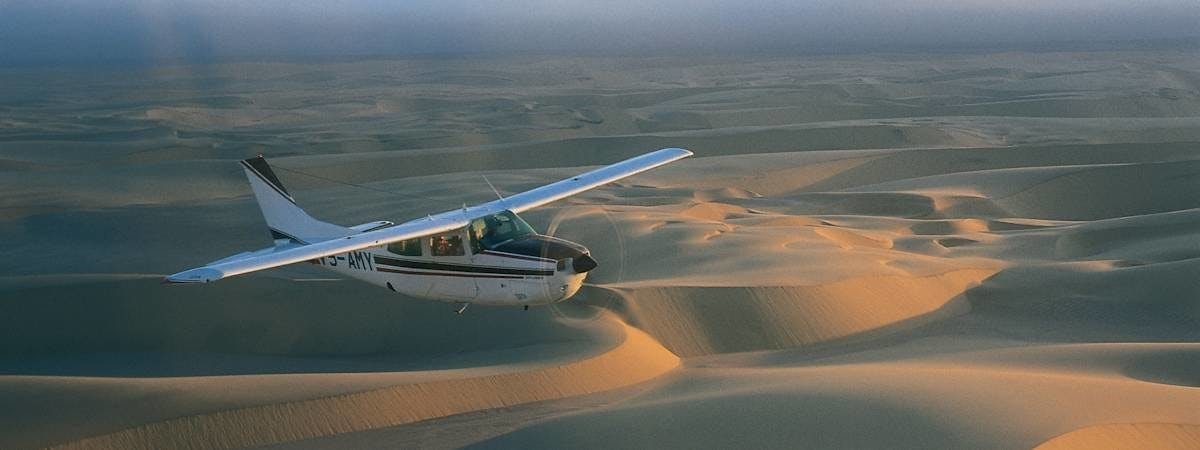
9-Days Luxury Northern Namibia Safari
This fly-in safari takes you to three distinctive private concessions in Namibia's breathtakingly isolated northwest, From Desert Rhino Camp, walk in search of black rhinos. Stay at the opulent Hoanib Skeleton Coast Camp while exploring the amazing Skeleton Coast in a part of the Namib known for its herds of elephants that have adapted to living in the desert. Finally, visit the Kunene River oasis, where you may enjoy quad biking on the sand dunes and encounter Himba people.
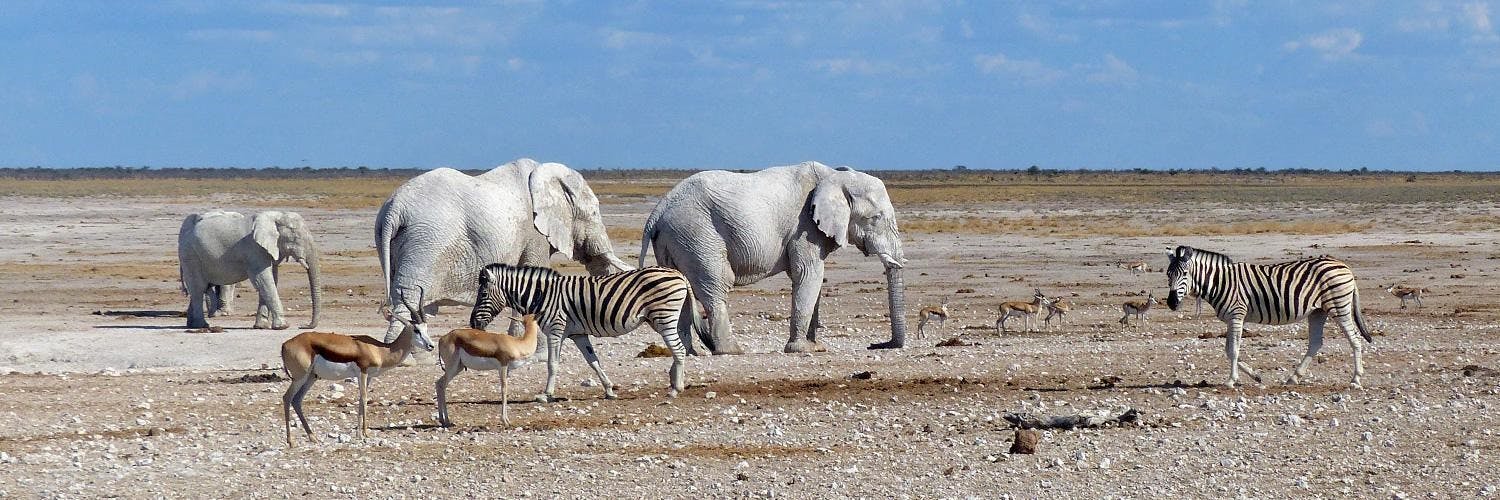
8 Days Namibia Wildlife Safari
This safari takes you to three of Namibia's most important natural wonders. We'll go to the Namib Desert and Sossusvlei, which has some of the world's highest sand dunes. After that, we continue on to Swakopmund, where the desert and the coast meet. After that, we'll travel along the Skeleton Coast before veering inland into the breathtaking Damaraland. Last but not least, we'll go to Etosha, one of the best places in Africa to see wildlife.
Namibia is the heart of Africa, full of wide-open spaces, breathtaking views, and stark contrasts like the ocean, dunes, mountains, and deserts. The spirit and heart are stirred and moved by this vast desert region with its rolling dunes and swirling mists. With its breathtaking sea of rolling red dunes at Sossusvlei, Namibia's Namib-Naukluft Park, the largest game park in Africa is a must-see while on safari. In terms of size and wildlife diversity, Etosha National Park is also one of Africa's best parks.

6-Day Namibia Wildlife Safari
This 6-Day Namibia Safari sightseeing tour includes stops at the stunning Naukluft mountain ranges, the tallest red sand dunes in the world, Swakopmund which Namibia's most popular seaside resort with a variety of activities available for purchase, and Etosha National Park, home to an abundance of wildlife.
Tours and Travel Agency based in Uganda rendering mountain gorilla Trekking experience, birding and wildlife safaris
Popular Destinations
- Safari Updates
- Community Support
Contact info
- Freedom City Shopping Mall Entebbe Road, Uganda
- +256701412430
- +256757795781
- [email protected]
© 2024 Dav Safaris. All Rights Reserved.
- Terms of Services

Tailor-made tours and safaris to Namibia and beyond...

With over 30 years experience creating extraordinary holidays, we use our accumulated knowledge and passion to design a life-changing safari. Just for you...
Tours & Safaris to Inspire You
Browse through our catalogue of itineraries for inspiration. These tours can be tailor-made to match your budget so contact your personal travel consultant for free advice and a personalised itinerary and quote.

Whether you're looking for a luxury fly-in, the benefits of a professional private guide or want to explore on your own on a self-drive, we'll create a one-in-a-lifetime Namibia safari just for you. All our tours are 100% tailor-made so you could even opt for a combination of all three.

Namibia Car Hire
One of the most enjoyable and flexible ways to explore Namibia is to hire a car and drive yourself to the remote safari destinations.

Meet the Team

"NTS organized the trip wonderfully!"
We felt that the trip kept getting better every day
"The trip of our lives!"
Everything was excellently planned by Ashlee at Namibia Tours & Safaris.
"A truly wonderful and memorable trip"
Namibia, it's countryside, people and wildlife really should be on everyone's bucket list of places to visit!
"Absolutely a five star experience with this great company!"
Super clear communication, great recommendations and just really clear logistics.
Quick Enquiry
Subscribe to our newsletter, get in touch.

social media

Best Namibia Safari Tours | Holiday Prices & Packages 2022
Get Best Price
- Description
- Additional information
- Reviews (0)
Namibia is known as one of Southern Africa’s most sparsely populated countries and is dominated by the Namib Desert. It’s a spectacular yet mysterious country that boasts plentiful wildlife, ancient rock art, intense arid landscapes, and golden sunsets – where the dunes meet the ocean.
This is the ideal destination for travelers seeking the ultimate African experience. Explore a Namibia National Park safari experience or the country’s capital city, Windhoek.
The best destinations Namibia has to offer start at adventure town Swakopmund to uncover the remains of Namibia’s German influence. It’s reflected in the culture, language, cuisine, and the famous annual Windhoek Oktoberfest.
Visit Namibia to experience a variety of different options; suited for families and romantics alike. Take the family out to view the abundant wildlife or spoil your significant other to a honeymoon in Africa . Keep reading below to compare and explore safari tours in Namibia.
Highlights:
- Explore a vast range of wildlife
- Enjoy a scenic drive through the spectacular Namib Desert
- Get a true African safari experience
Know before you book:
- Ensure you have plenty of sunscreen
- Bring a flashlight
- Wear comfortable clothes and shoes

Some popular safari parks include the Sossusvlei, Damaraland, Skeleton Coast Park, and Etosha National Park.
Table of Contents: (Jump to)
Namibian Safari Prices
The cost of ticket prices can start from around $32 USD per person (R1960,16) to the most extensive tour starting at $3112 USD per person (R46212,27). Other mid-range tours vary from $88 USD per person (R1306,77) to $170 USD per person (R2524,45).
Prices are dependent on the duration of your safari in Namibia, what it includes, and where you would be going. Compare prices across the ticket providers below:

Namibia Safari Best Time For Drives
The duration and times of the tour will vary depending on what tour option you will be choosing. Traveler pickups are also offered. You will be assisted with expert guides to give you the best experience possible.
Most drives either start early in the morning at 07:30 for the earliest, while most of them start from around 08:00 or 09:30. This is perfect for a morning adventure through your favorite safari destinations as you will be able to continue with afternoon drives from around 13:00.

Best Time to Go on Namibia Safari Vacations
The best time to visit this magnificent African country is usually from July to October; this is when the chances of heavy rains are low, and temperatures average above 20°C. These months are ideal for wildlife viewing, making it a peak travel season. You will need to book in advance.
The Namibian summer (November to April) offers clear blue skies and is hot, with cold nights. During winter, (May to October), it’s still hot (being a desert and all) with spectacular thunderstorms. Predominantly, it’s a dry country, where orange-hued dunes contrast with sapphire skies.
Namibia Safari Packages
Discover Namibia on an unforgettable safari that is best suited for you. Enjoy 4×4 rides over dunes, marveling at the haven for desert-adapted wildlife that supports one of the planet’s most important ecological systems.
Most packages will offer everything you need from safari lodges to guided nature walks. Although, this is all dependent on which tour package you’ve chosen. Some packages are specifically focused on your favorite adventures like mountain climbing, mountain biking, sandboarding, or more relaxing walking safaris to track the desert wildlife.
While some of these packages are full-day options, it may be best to mix and match the half-day options together for a jam-packed Namibia safari.
How to Get to Namibia Safari Parks
Namibia is located conveniently on the Coast of Southern Africa. Bordered by countries like South Africa and Botswana, there are tons of opportunities to catch a flight to Windhoek or even drive into the best Namibia safari parks.
If you’re coming in from cities like Cape Town or Johannesburg, you’ll probably find yourself touching down in Windhoek, the capital city of Namibia. At the Windhoek Hosea Kutako International Airport, you’ll easily be able to make your way around the various Namibia travel destinations either through chartered flights or rented vehicles.
Internationally, you can expect flights from British Airways, South African Airways, and Lufthansa. Although once you’ve landed, it may be best to rent a vehicle as chartered flights for a fly-in safari to locations like Swakopmund may become pricey and inconvenient for larger groups of travelers.
Most of your tour highlights will start in Windhoek. So be sure to check out the various car hire options before heading off to cruise places like Walvis Bay, Cape Cross, Skeleton Coast, or any other coastal town along the Atlantic ocean.
4-Day Namibia Safari Holiday – Starting at Etosha National Park
Take a 4-day tour from Windhoek to the Etosha National Park for some incredible desert-adapted wildlife viewing in one of Namibia’s best wildlife reserves. Etosha is home to black rhinos, giraffes, leopards, lions, countless bird species, and some of the fastest animals in Africa.
Not only will you enjoy a game drive on a multi-day safari adventure but you’ll also have the opportunity to delve into Namibian food . During your stay at luxury lodges or the best bed and breakfasts, you’ll have an opportunity to sit around a campfire and share the stories of your African safari.
Over the next few days, see the Okaukuejo waterhole where some of Africa’s largest elephants come to gather. You’ll drive through the Damaralands farming community, stop at Ugab River Bridge, see the Brandberg mountain, and visit the Himba tribespeople.
For as little as $1750 per person, you can experience all of that as well as the Namib Desert, Swakopmund, and Skeleton Coast. With this tour, you’re open to seeing all the wildlife from wild desert horses to elephants and so much more.
Your adventure activities wait on the best Namibia safaris.
- Nightly accommodation
- Transport in a 4×4, air-conditioned vehicle
- Game drives and picnics
- Personal insurance
Etosha National Park Game Drive

For a great trip, your tour will be guided by an experienced professional that takes you around the watering holes where the wildlife goes to cool down from the afternoon heat.
For lunch, you’ll head to one of the safari lodges for lunch. Make sure to bring your binoculars, sunscreen, and cameras with you to capture these fabulous Namibia tours.
- Hotel pick up and drop off
- Full or half day game drive
- Park fees (80 NAD per person)
Marine Big 5 Luxury Catamaran Tour

Namibia tours of the ocean are an ideal adventure activity and the sea safari makes for a great trip. During your journey, you’ll be able to observe a variety of bird species as well, so keep an eye out for cape cormorants, kelp gulls, and Hartlaub gulls.
- Coffee and Tea
- Oysters and sparkling wine
- A light lunch and beverages
- Hotel pickup and drop-off
10-Day Namibia Highlights Guided Tour

In Windhoek, Namibia this 10-day pre-planned tour includes everything that you’d naturally have hoped to see, from coastal towns and desert walks to Etosha National Park. Explore the towering dunes with the guidance of a professional driver, guide, and problem solver.
This tour is perfect for anyone that wishes to remove the stress from planning. Even after booking, any issues during your vacation will be solved and seen by your driver.
- 9 nights lodge/guesthouse accommodation
- Transport and professional driver/guide
- All meals included
- Airfare, personal travel insurance and visas
- Optional activities
Your itinerary includes 3 days in Etosha National Park, a day in the Namib desert, and Sossusvlei dunes. Thereafter you’ll visit the UNESCO heritage site of Sand Sea. Then you’ll discover the best attractions like Namib-Naukluft Park and Skeleton Coast, Moon landscape and Welwitschia Mirabilis, Cape Cross Damaraland, and Twyfelfontein Engravings.
Swakopmund Desert Quad Biking

The sheer thrill of the speed and revved-up engines not only explores the adrenaline junkie within but also provides you with a unique way to explore the Namib desert.
- 3 Hour drive
- Quad bike rental
Self-Drive Adventure to Sandwich Bay

Here you get to drive into the Namib Naukluft National Park and discover Sandwich Bay. A mysterious beach, covered in salt pans and sand dunes. This delightful excursion takes you to where the Atlantic Ocean meets the sand dunes of this spectacular desert safari destination.
- Lead guide vehicle and two-way radios
- Recovery equipment
- Vehicle hire
- Some meals included
- Equipment included
- Instructors are expert guides
- Private tours are offered
- Food could be limited
- Some park fees are not included
Specification: Best Namibia Safari Tours | Holiday Prices & Packages 2022
Photos: best namibia safari tours | holiday prices & packages 2022.

User Reviews
There are no reviews yet.
Be the first to review “Best Namibia Safari Tours | Holiday Prices & Packages 2022” Cancel reply
Your email address will not be published. Required fields are marked *
Your Rating Rate… Perfect Good Average Not that bad Very Poor
Your Review *
Save my name, email, and website in this browser for the next time I comment.

Related Products

Luxury Safari Kenya | Best Tours & Packages
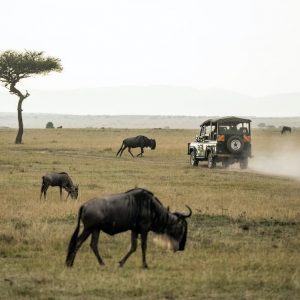
Luxury Safaris to Africa – the Ultimate African Safari Guide

Kenya Safari: Masai Mara | 5 Best Packages and Tours
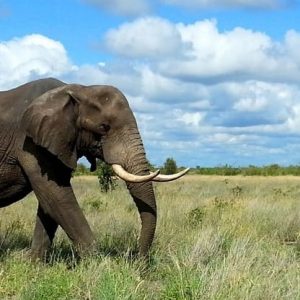
Airport Near Kruger National Park – Flights & Airport Locations

Victoria Falls in July | The Best Victoria Falls Tours for 2024/2024

Compare items
- Total ( 0 )
Shopping cart
Namibia Tours & Vacations

Home to proud tribes steeped in tradition, herds of rare desert-dwelling elephants, wild horses and massive colonies of seals, Namibia showcases the very best of Africa's raw landscapes.
From quaint German-inspired towns to uninhabitable deserts, bushland filled with wildlife and a rocky coastline littered with shipwrecks, Namibia's untamed charm is compelling, captivating and camera-worthy.
Our Namibia trips
Let's create an exclusive trip for your group.
Namibia tour reviews
Filter by rating
Vic Falls to Cape Town
Cape Town to Zanzibar
Articles of Namibia
The top 7 destinations for travel in April 2024
Why a visit to a ‘living museum’ was the highlight of my Namibia trip
I visited 7 African countries on 1 Intrepid trip; here’s why Namibia stood out
7 things you need to know about an adventure in Namibia, according to a local leader
How a discarded bicycle changed a community in Namibia
Planning your first trip to Africa? Here’s why you should start with Namibia
10 facts you probably don’t know about Namibia
A language guide for Southern Africa
Namibia at a glance
Capital city.
Windhoek (population 477,000)
2.6 million
English, Afrikaans
(GMT+02:00) Windhoek
CALLING CODE
Electricity.
Type D (Old British 3-pin) Type M (see D)
Learn more about Namibia
Best time to visit namibia.
The best time to visit Namibia depends on what you want to see and do. The dry season (May-September) is considered the best time to explore the Nabim Desert and go on safari as the temperatures are comfortable, vegetation is thin and wildlife congregates around waterholes.
The shoulder months (April and October) may be a better option for a safari without peak season crowds; however, Namibia's national parks and reserves never feel too crowded.
While it can be trickier to spot game in the wet season (November-March), you might be lucky to see cute newborns as it coincides with the birthing season.
Learn more about the best time to visit Namibia
Culture and customs
Human settlement in Namibia can be traced back to as early as 15000 BC. In the time since, a diverse mix of people and communities have inhabited Namibia, culminating in a unique cultural heritage made of symbolic beliefs, traits, and traditions.
Today, most of the population sits within the larger Aawambo cultural group found mostly in the north of Namibia. Other large cultural groups that make up Namibia are the Nama, Damara, Kavango, and Ovaherero people.
Namibia was colonized by Germany from the late 1800s until 1919. Because of this, Europeans now make up 5 percent of the population. German influences can be seen throughout Namibia by way of cuisine, language, architecture and more. As much as 10 percent of Namibia’s population is made up of people who have migrated from South Africa.
The national language is English, however many Namibians also speak multiple Indigenous languages, such as the Aawambo language.
Eating and drinking
Like many countries, the majority of Namibia’s cuisine stems from the traditional cooking techniques and produce found in the area. In more recent times, immigrating cultures, specifically German and English, have added to the culinary scene. With a large variation of meats to cook with, it’s no surprise that many of the popular dishes feature meat in some way, often accompanied by a strong flavor and paired carbohydrate.
There are plenty of options for non-meat eaters, too. Some must-tries include green asparagus, omboga (dried spinach), Namibian olives, owawa mushrooms, geelrys (rice dish), oshigali (puree beans) and more.
Things to try in Namibia
A staple daily dish to many, mieliepap is a porridge-like meal usually made with cornflour and served with a selection of vegetables or even a meat protein like fish or goat.
A dish cooked in a small iron pot, potjiekos is a stew that typically combines game meat with hearty vegetables like cauliflower, pumpkin, and cabbage.
This dish is of Dutch and Afrikaans origin and serves as a way to store meat. By using a savory rub of flavored spices, salt, and vinegar, then left to air dry, biltong is a tasty snack that can last for a long time if cured correctly.
Namibian oysters are known to be meatier and fast-growing than in other areas of the world. They are likely to be prepared differently depending on where you go.
Fat cakes are a very popular snack in Namibia and other parts of the world. Essentially, fat cakes are just deep-fried dough balls that can be made into sweet or savory dishes. So, it's no wonder they're popular!
Geography and environment
Red desert dunes, rugged bushveld, dense woodlands, and plains of gravel make up Namibia's ancient terrain. Home to the monumental Fish River Canyon and sharing the iconic Kalahari Desert with South Africa and Botswana , Namibia has some of the most interesting landscapes in Africa , if not the world.
With little arable land and a warm climate, Namibia is prone to prolonged periods of drought, making farming difficult. Bordered by Angola, Botswana, South Africa, and Zambia , Namibia also has a stretch of coastline along the Atlantic Ocean where visitors can see where the desert meets the sea.
Top 10 places to visit in Namibia
1. fish river canyon.
There's more to the Fish River Canyon than its sheer size. With remote hiking trails, magnificent view points and raging river torrents during the rainy season, visitors will be breathless at the epic views and sense of isolation when visiting this canyon, believed to have been formed more than 500 million years ago.
A not-to-be-missed stop on our epic 40 day Zanzibar to Cape Town wildlife tour.
2. Damaraland
The timeworn terrain of Damaraland makes for interesting, otherworldly landscapes to travel through. The combination of strange rock formations, parched valleys, ochre boulders and amber sunsets makes for magic memories.
See it for yourself on our 17 day Premium Botswana & Namibia tour .
3. Sossusvlei sands
This huge clay pan wrapped in red sand dunes occupies a large part of southern Namibia. With some of the tallest dunes in the world, Sossusvlei's variety of color, size, and flora make it a glory to behold.
Get a jaw-dropping view of the nearby dune giants from atop Dune 45 or below at the Dead Vlei pan while on our 30 day Southern African Adventure or a 13 day Namibia Discovery tour .
4. Cape Cross
This protected area on the cape of the southern Atlantic is most famous for its resident seal colony, one of the largest in the world.
While in Swakopmund, see enough seals to last you the rest of your life with an excursion to Cape Cross on our 10 day Premium Namibia tour .
5. Ship to shore
Namibia's Skeleton Coast has been called 'The Land God Made in Anger' by the San Bushmen and 'The Gates of Hell' by the Portuguese, and it's not hard to see why. With gale-force winds battering the shore, rolling surf, and thick fog, the Skeleton Coast has ruined many a mariner over the years. Evidence of this is scattered along the coastal sands, with a collection of rusting ships resting on the beaches - an eerie yet enthralling sight.
See the Skeleton Coast for yourself on a 17 day Premium Botswana & Namibia adventure.
6. Etosha National Park
Etosha National Park might be one of the best places to see some of Africa’s iconic wildlife. With its artificial watering holes and wide clear spaces, it’s likely you’ll grab some stellar snaps of the hard-to-miss inhabitants, including elephants, zebras, and even black rhinos.
Etosha NP is just one of the many unique animal-filled destinations on our incredible 22 day Cape Town to Vic Falls wildlife tour . But if you don’t have that long, it also makes a great last stop on our 10 day Premium Namibia adventure .
7. Zambezi River
The Zambezi River isn’t just the fourth-longest river in Africa; it’s also the hangout spot for some pretty famous animals. Look for hippos, monkeys, elephants, buffalo, birds, and more aboard a canoe or cruise.
Sip a drink or two and watch for Africa’s mighty animals from your feature stay on the Zambezi River on our 17 day Premium Botswana & Namibia tour or 7 day Premium Botswana trip .
8. Walvis Bay
Bird lovers should consider a stop at Walvis Bay, which is typically a stop on the way to nearby Swakopmund. Thousands of migratory birds, including the fan-favorite flamingos and portly-pouched pelicans are seen across the lagoons and bird sanctuaries.
Get out your binoculars and get ready to tick off some bird sightings as you visit Walvis Bay on our 10 day Premium Namibia adventure .
9. Swakopmund
If, while in Africa, you have a hankering for German architecture, stop by the spookily named Skeleton Coast for a visit to the town of Swakopmund. Wander through the mix of Namibian and German influences of this seaside stop, enjoying the open-air market and fresh sea breeze. You could also find yourself on a dolphin and seal boating adventure to nearby Cape Cross or out on a local fishing excursion.
Swakopmund is a destination fit for any African itinerary. That’s why you can find it on all our Namibia tours, including our 13 day Namibia Discovery tour , our 22 Amazing Southern Africa adventure , and our 63 day Africa Encompassed Southbound tours .
10. Orange River
Named the Orange River for its unique hue, this waterway has been an important part of Namibian and South African history – namely, the diamond rush in the 1800s. While diamond mining is a continuing business in the region, many people simply come to enjoy paddling the waters.
Enjoy a day on the water at Orange River while on a 13 day Namibia Discovery tour .
What’s travel without a meaningful souvenir or two? When in Namibia, Intrepid encourages travelers to support local makers who put time and effort into handmaking their wares. Culturally significant items are often available for purchase, especially in tourist areas. Speaking to the local sellers can be a great way to learn about their culture and understand the significance of what they are selling.
It's a good idea to check with your local customs officials to ensure that you are able to bring certain items back into your home country.
Things to buy in Namibia
Many of the beautiful textiles sold around Namibia can be used in a multitude of ways, e.g., for clothing, tableware, art, and more. Look to buy from traditional artists and makers in craft markets to support local talent and local industries.
Wooden crafts
A hand-carved wooden object is a great memento to take home from Namibia. There’s likely a souvenir for everyone with crockery, bowls, animal figures, dolls, instruments, and more. You’ll see traditional African masks for sale, which are often items that have a symbolic meaning to the local people.
Precious gems
As one of the largest producers of diamonds in the world, you’re likely to find a sparkly item or two in Namibia. Be sure to do some research or ask your guide about where to go, as not all shops will have the real deal.
Further reading
Similar destinations.
Has Namibia caught your eye? If it has (and we can see why), take a gander at some of our other Africa safari destinations .
- Botswana tours
South Africa
- South Africa tours
- Zimbabwe tours
Namibia travel FAQs
Do i need a covid-19 vaccine to join an intrepid trip.
Trips from 1 January 2023 onwards
From 1 January 2023, Intrepid will no longer require travelers to provide proof of vaccination against COVID-19 (excluding all Polar trips and select adventure cruises).
However, we continue to strongly recommend that all Intrepid travelers and leaders get vaccinated to protect themselves and others.
Specific proof of testing or vaccination may still be required by your destination or airline. Please ensure you check travel and entry requirements carefully.
Do I need a visa to travel to Namibia?
If you are from Australia, Canada, Ireland, Japan, New Zealand, South Africa, the United Kingdom or the United States, or other visa-exempt countries, you generally do not need a visa if you are travelling in Namibia for up to 3 months (90 days). If you plan to stay longer or if you are intending to work or volunteer, you may need a visa.
All visitors are required to have a passport valid for at least 6 months after the intended date of entry into Namibia. You will also need blank pages in your passport for the entry and exit stamps, as well as a return ticket.
It is advised that you check your visa and noted entry period are correct before leaving the immigration counter upon arrival. If you plan on purchasing a visa on arrival, ensure that a visa can be issued at your intended entry location.
You may also need to hold a valid yellow fever vaccination certificate if you are arriving from a destination with active yellow fever.
This page is for general information only and may be subject to change. It is your responsibility to obtain relevant visa and travel information required for entry, departure and travel to each country or region you visit on your trip. You should confirm these with the relevant embassies and/or consulates.
Last updated: 05/12/2023
Is tipping customary in Namibia?
While not mandatory, a tip of 10% is considered standard when dining in Namibia. With the typical Namibian earning a modest wage, a small tip to porters, housemaids and other service workers would be appreciated.
What is the internet access like in Namibia?
Travelers will be able to access the internet quite easily in the cyber cafes of Namibia’s large cities, but limited to no access should be expected in regional and rural areas.
Can I use my cell phone while in Namibia?
Cell phone coverage is good in Namibia's large cities and towns, but less so in rural and mountainous areas. Ensure you have global roaming activated before leaving home if you wish to use your cell phone.
What are the toilets like in Namibia?
Depending on which areas of Namibia you are traveling in, expect to encounter a combination of squat toilets and flushable toilets. Carry your own supply of soap and toilet paper as these aren't always provided.
What will it cost for a…?
The Namibian dollar (NAD) is the nation currency of Namibia.
Cappuccino 34 NAD
A bottle of local beer = 30 NAD
Meal at an inexpensive restaurant = 150 NAD
Sit-down dinner in a nice restaurant = 750 NAD
Can I drink the water in Namibia?
While tap water is considered safe in Namibia's cities, drinking tap water isn't generally recommended in Namibia. For environmental reasons, try to avoid buying bottled water. Fill a reusable water bottle or canteen with filtered water instead. Ask your leader where filtered water can be found; some hotels we stay in may have drinking water available. It's also advisable to avoid ice in drinks and peel fruit and vegetables before eating.
Are credit cards accepted widely in Namibia?
Credit cards are usually accepted by large hotels and western-style restaurants but not by smaller vendors. Ensure you have adequate cash to cover purchases not able to be made on credit.
What is ATM access like in Namibia?
ATMs are easily found in large cities and urban centers, but are rarer in small towns, rural areas and villages. Be sure to have other payment methods available when venturing out of the big cities, as ATMs aren't always an option.
What public holidays are celebrated in Namibia?
- 1 Jan: New Year's Day
- 21 Mar: Independence Day
- 29 Mar: Good Friday
- 1 Apr: Easter Monday
- 1 May: Workers' Day
- 4 May: Cassinga Day
- 9 May: Ascension Day
- 25 May: Africa Day
- 26 Aug: Heroes' Day
- 10 Dec: Human Rights Day / Namibian Women's Day
- 25 Dec: Christmas Day
- 26 Dec: Family Day
Please note: Namibian public holidays may vary.
Does my trip support The Intrepid Foundation?
Yes, all Intrepid trips support the Intrepid Foundation. Trips to this country directly support our global Intrepid Foundation partners, Eden Reforestation Projects and World Bicycle Relief. Intrepid will double the impact by dollar-matching all post-trip donations made to The Intrepid Foundation.
Eden Reforestation Projects
Eden Reforestation Projects are helping to mitigate climate change by restoring forests worldwide; they also hire locally and create job opportunities within vulnerable communities. Donations from our trips support restoration across planting sites in 10 countries around the globe. Find out more or make a donation World Bicycle Relief
World Bicycle Relief provides people in low-income communities with bicycles to mobilize school kids, health workers, and farmers in far-out areas – giving them access to vital education, healthcare, and income. Donations help provide Buffalo Bicycles – specifically designed to withstand the rugged terrain and harsh environment of rural regions – to those who need them most. Find out more or make a donation
Do I need to purchase travel insurance before traveling?
Absolutely. All passengers traveling with Intrepid are required to purchase travel insurance before the start of their trip. Your travel insurance details will be recorded by your leader on the first day of the trip. Due to the varying nature, availability and cost of health care around the world, travel insurance is very much an essential and necessary part of every journey.
For more information on insurance, please go to: Travel Insurance
How do I stay safe and healthy while traveling?
From Australia?
Go to: Smart Traveller
From Canada?
Go to: Canada Travel Information
From the UK?
Go to: UK Foreign Travel Advice
From New Zealand?
Go to: Safe Travel
From the US?
Go to: US Department of State
The World Health Organisation also provides useful health information.

#1 Namibia Safaris
Our top selling tour.
From Victoria Falls Airport
4 Day Namib Coast & Sossusvlei Adventure Tour
You travel from Windhoek to Swakopmund on the Skeleton Coast and Sossusvlei in the Namib-Naukluft National Park.
Swakopmund is the outdoor playground of Namibia while Sossusvlei is a magical destination that falls within the largest conservation area in Africa. Breathtaking scenery, abstract natural wonders and the warm-hearted people of Namibia make this a once-in-a-life time tour for wanderlust travellers.
From ZAR 13590
Trending Tours
4 day etosha & namib coast adventure tour.
The 3 night/4 day Etosha & Namib Coast Adventure Tour offers guests a glimpse of the wonders of the vast wilderness area...
7 Day Namibia Highlights Adventure Tour
The 6 night/7 day Namibia Highlights Adventure Tour takes you on a fascinating journey through vast windswept arid plains...
From ZAR 27590
Half Day Sandwich Harbour and Desert Tour
Namibia is one of the most popular 4×4 destinations in southern Africa. Your guide will skillfully navigate the desert...
From ZAR 1800
- < 4 Hours
4 Day Namib Coast & Sossusvlei Adventure Tour
4 day etosha & namib coast adventure tour, self drive namibia safaris, 13 day namibia highlights self-drive safari, 12 day namibia highlights self-drive safari, 11 day namibia highlights self-drive safari.

Namibia is a land of extremes; from the ghostly plains of the coastal belt to the strikingly beautiful arid sand dunes in central Namibia and the lush, subtropical floodplains in the north. Most tourists start a tour or safari of Namibia on the treacherous coast of Namibia which lies on the cold Atlantic coast. The coastal belt is renowned for being a desolate and inhospitable place; with the Namib Desert emptying into the icy ocean, leaving behind incredible species of plants and animals that have adapted to the hostile desert conditions. Moafrika offers the best of Namibia in offering guided Namibia safaris and tours for the budget or luxury traveler. View all packages and prices.
The northern region of Namibia experiences higher rainfall and places like Etosha and the Caprivi Strip transform into a magical oasis when the rains fall. An abundance of migratory birds and wildlife descend on the area, with predators in hot pursuit.
Namibia shares its northern border with Zambia and Angola, with Botswana to the east and South Africa to the south and east. At a small bulge on the Zambezi River (a micro-border dividing Botswana and Zambia), one can cross over into Zimbabwe; a mere 200 meters separating the two countries.
The country is vast and is one of the most sparsely populated in the world. The majority of tourists visiting Namibia chose to travel with a tour operator that is experienced in the delights and dangers of such a mystical place. Moafrika Tours offers tourists a once-in-a-lifetime experience; to criss-cross, the mighty rivers of Namibia, find out more about the desert-dwelling animals that have made the dry land their own and discover the warmth and hospitality of its people.
MoAfrika Tours also offer an array of incredible tours to iconic places in South Africa, like the Johannesburg tour , Soweto tour , Kruger safari tours , and the world-renowned Cape Winelands tour . You can also combine some of these places with one of our South Africa Tours .
Most popular places to visit in namibia while on a namibia safari.
A tour of Namibia in a rugged 4×4 vehicle usually involves traveling long distances between destinations; crisscrossing endless stretches of arid thirstlands and the country’s mighty rivers to arrive at dusty towns steeped in rich history. For those on a tight schedule, Namibia has an excellent state-owned airline or you can choose to use the services of a private airline operator.
MoAfrika Tours has selected a few of its favourite destinations in Namibia with a few located off the beaten path. If you don’t have time to visit the many major safari attractions in Namibia, we know you’ll be back for more.
Etosha National Park
Etosha National Park is the wilderness gateway to northern Namibia and Ovanboland. The name Etosha means the “great white area” and refers to the expansive arid pan in the middle of the Park. The Park was proclaimed a protected wildlife sanctuary in 1907 and elevated to the status of National Park in 1967. Over decades it has grown in reputation as one of the world’s best tourist destinations in Namibia.
The landscape of this magical wilderness is dominated by a salt pan that spans some 22 000 square kilometers, covering 25% of the total area. It is 130 kilometers long and up to 50 kilometers wide in places, making it the largest salt pan in Africa. It is so large that it can be seen from space.
Etosha National Park is world-renowned as a premier safari destination. Apart from the incredible sightings of wildlife, it is a birder’s paradise and heaven for photographers. The diverse biosphere makes it one of the most interesting places to visit in Namibia. It is home to hundreds of species of mammals, migratory birds, and reptiles including many endangered and endemic species not found anywhere else in Africa.
Etosha Pan was once an ancient inland lake formed over 100 million years ago. Due to tectonic forces and climate change, the rivers that once fed the lake were forced to change course and emptied instead into the Atlantic Ocean. The inland lake dried up leaving behind a shimmering surface of glittering salt. The only clue that it was once a lake lie deep underground as baked alkaline clay marks.
There is very little vegetation of much nutritional value around the salt pan but in the wet season, the area transforms into a magical oasis which attracts an abundance of game, birds and, of course, safari tourists. Etosha is the only known breeding ground for flamingos in Namibia and the sight of more than a million flamingos settled on the vast pan is breath-taking.
You might also like our Botswana Safaris . At MoAfrika we have a wide selection of tours and safaris all over South Africa as well as destinations in Africa. Don’t miss out on our affordable 2024/2025 holiday packages.
Namibrand nature reserve.
NamibRand is one of southern Africa’s largest private nature reserves built on the vision of one man who dreamt of extending the desert frontiers with the cooperation of a large number of local sheep farmers. He dreamt of a reserve that allowed the precious wildlife of Namibia to roam freely, unhindered by fences and restricted to habitats.
JA Brückner fulfilled his life’s ambition, founding NamibRand Nature Reserve in 1984 and developing it into one of Africa’s premier wildlife sanctuaries. To date, seventeen former livestock farms have been rehabilitated into a single continuous natural habitat. At least 15% of the total area has been exclusively set aside for the protection and conservation of wildlife, birds and its unique biosphere.
NamibRand is characterised by four distinct habitats; dunes and sandy plains, inselbergs (small hills) and mountains, true gravel plains and a combination of sand and gravel plains. It is home to endemic species like the Oryx gazelle (gemsbok) and springbok. An abundance of antelope make it a predator’s paradise with kudu, Hartman, the Burchell’s zebra, giraffe, klipspringer, steenbok, hartebeest and baboon creating a smorgasbord of delights for the big cats as well as spotted and brown hyena, black-backed jackal, aardwolf, bat-eared fox, African wild cat, caracal and genet.
Ornithologists have identified more than 150 bird species in the reserve, either endemic to the area or migratory species. The compilation of the list of reptiles, amphibians, invertebrates, and plants is ongoing and endless.
Apart from its significant role in protecting the birds, wildlife, and biosphere of the eastern edge of the Namib Desert, the reserve has played a critical role in facilitating seasonal migratory routes. Large herds of elephants and wildebeest roam freely between the reserve, its neighbour Namib-Naukluft National Park and the imposing Nubib Mountains.
A visit to NamibRand offers those on a Namibian safari a small glimpse of the incredible delights of the natural wonders of Namibia. The reserve is registered as a non-profit private reserve and is financially self-sustaining through high quality, low impact tourism.
Dead Vlei in Sossusvlei
Dead Vlei is a popular safari destination located near the famous salt pan of Sossusvlei, inside the Namib-Naukluft Park. The name means “dead marsh” although this is misleading as the Sossusvlei and surrounds is recognised for its abundance of desert-dwelling wildlife and small creatures that have adapted in the most incredible ways to survive in the hostile arid environment.
The clay pan is a photographer’s dream destination and instantly recognised in the hundreds of images found on the internet. It is characterised by dark, dead camel thorn trees that stand out in stark contrast to the white pan floor.
The pan was formed when the Tsauchab River flooded and the abundance of water created a fertile environment to support the desert trees. Climate change and encroaching sand dunes blocked the river centuries ago, preventing the water from reaching the area. The trees did not decompose due to the dry climate but stand sentry in the rusty-red dunes, appearing as burnt-out relics of ancient times. Some of the trees are estimated to be over 900-years old.
There are a few remaining plant species that have survived since the area was once a lush floodplain. These include the salsola and clumps of nara which sustains themselves on precipitation from the morning dew and very rare rainfall.
Dead Vlei is surrounded by the highest sand dunes in the world. One, affectionately named Big Daddy, stands about 300-400 meters off the sandstone terrace floor. Dune 45 in Sossusvlei is one of the most photographed dunes in the world. A climb to the top is exhausting but worth every drop of sweat. The view from the top is breathtaking.
Skeleton Coast National Park
The entire coastline of Namibia is often mistakenly referred to as the Skeleton Coast. However, the formal area known as the Skeleton Coast National Park is a strip of coastal land extending from the Kunene River in the north for approximately 500 kilometers to the Ugab River. The reserve was established to protect one-third of Namibia’s coastline but the name has been applied to the entire length of its western border purely because it so aptly describes the hostile and somewhat spooky coastline.
The Kunene River is one of Namibia’s few perennial rivers, rising in the remote Angola highlands and forming one of the country’s two permanent estuaries. The bleak and inhospitable eco-zone is home only to a select few desert-dwelling animals, reptiles and amphibians who have adapted in the most incredible ways to survive extended periods of scorching heat, vicious wind or icy conditions.
The arid landscape is dominated by massive sand dunes that move constantly at a painstaking pace as well as magnificent desert canyons and mountain ranges. Dense fog and cold sea breezes roll in from the sea off the icy Benguela current. These icy winds clash with the extreme heat of the Namib Desert creating a biosphere so unique it is breath-taking.
The Skeleton Coast has long been associated with famous shipwrecks and is known as the largest “ship graveyard” in the world. The name itself came from bones scattered the length of the coastline; a sad tale of whaling and seal hunts and human explorations that went wrong. The Bushmen called it “The land God made in anger” and the Portuguese explorers called it “The gates of hell”. Blinding fog, treacherous seas and unrelenting surf took their toll on many ships and their unfortunate crew.
Despite its stark and deadly appearance, the Skeleton Coast National Park is world-renowned as one of the best places to visit to kick-off a Namibia safari tour. Namibia’s famous desert-dwelling elephants, black rhino, lion, cheetah, giraffe, gemsbok, zebra, springbok and spotted and brown hyena are sought-after sightings. A knowledgeable safari guide will show you other quirky desert creatures, snakes and plant life that are fascinating, like the endemic Gerrhosaurus skoogi which is an armor-plated lizard that prowls the sand dunes in search of Nara melon bushes.
The mouth of the Kunene River is the southern-most breeding territory of the green turtle and home to the only southern African population of Nile soft-shelled turtles. They may look cute but be warned; they are aggressive.
More than 250 species of birds have been recorded in the Skeleton Coast National Park, including the endemic Damara Tern. Fishing off the Skeleton Coast is spectacular as well as sightings of the endemic Benguela dolphin, killer whales, and humpback whales. On rare occasions, sightings of lions create a stir as they scour the beach for marine carrion.
The delights of the Skeleton Coast National Park don’t only revolve around spectacular scenery and fascinating wildlife. Incredible geological features dominate the area, including gemstone beaches, salt/brine pans and shifting sand dunes. Möwe Bay is well-known for its rainbow carpet of semi-precious stones, some of which are found embedded in the scattered remains of whale skeletons and amongst shipwrecks that met their brutal end some 500 years ago.
Fish River Canyon
The Fish River Canyon is located in southern Namibia and is the largest canyon in Africa. It is one of the most popular tourist destinations in Namibia, particularly with hikers and outdoor enthusiasts.
The enormous ravine stretches some 160 kilometers into the Namib Desert, up to 27 kilometers wide and 550 meters deep in some places. The Fish River cuts deep into the arid, stony canyon floor, only flowing in late summer at the end of the rainfall season. For the rest of the year, the river is a long chain of narrow pools flanked by dusty riverbeds with a smattering of hardy drought-resistant plants.
The main attraction of the canyon is a hot springs resort at the lower end of the gorge. Ai-Ais Hot Springs and its campsite falls within the Ai-Ais/Richtersveld Transfrontier Park. This area is accessible to the public but the remaining 90 kilometers of the canyon are owned by private concessions.
The Fish River Canyon is characterised by two biospheres; the upper canyon is dominated by hard gneiss bedrocks which have been uncovered by soil erosion, and the lower canyon which formed when erosion finally wore down the gneisses outcrops. Over centuries, erosion created a deep ravine with a narrow meandering network of streambeds that wind and twist their way to the end of the canyon.
Hiking trails in the canyon are extremely popular. The immense scale and rugged terrain attracts extreme trail runners as well as hikers who are happy to tackle the canyon at a more leisurely pace. The 88-kilometer trail ends at Ai-Ais hot springs and it usually takes about 5 days to get there. There are no campsite or amenities on the trail and hikers need to carry everything they need in their backpacks. Hikers sleep under the stars which is no problem in the hiking season as the nights are usually mild and pleasant.
Due to seasonal flooding and scorching summer temperatures, hikers need to obtain permits to visit the canyon between May and September. Hikers must be older than 12 years and older hikers need to submit a certificate of fitness issued by a doctor. You are hiking in hostile terrain and these precautions must be respected for the well-being of the group.
MoAfrika Tours can arrange bus tours and transfers from Pretoria, Johannesburg, Durban, Port Elizabeth and Cape Town. Contact us to help you plan your travel itinerary that will suit your budget to any destination in South Africa. As well as tours and safaris to Botswana, Namibia, Victoria Falls & Uganda.
Bwabwata national park in the caprivi strip.
Bwabwata National Park is a community-driving initiative located in north-east Namibia. It was established in 2007 in the Caprivi Game Park and Mahango Game Reserve and spans some 6 300 square kilometers. Its boundary is the magnificent Okavango River to the west and the Kwando River to the east. Angola lies to the north and Botswana to the south.
The region falls within the Caprivi Strip along an important migration route from Botswana to Angola. Large herds of elephants, as well as wildebeest and other antelopes, have roamed these wilderness paths for centuries. What makes the reserve unusual is that it is the only national park in Namibia where the government has allowed local inhabitants to live in a protected area and manage its natural resources.
Bwabwata National Park is dominated by shrub savanna and woodlands, including north-eastern Kalahari, Caprivi mopane, riverine and islands, Okavango Valley and Caprivi floodplain woodlands. The vegetation is sparse but it sustains an abundance of wildlife and birds in the wet season, mainly due to it being a critical trans-boundary link for wildlife moving freely between Angola, Botswana, Namibia and Zambia.
The region is regarded as a birder’s paradise being home to rare and endangered species like the black-winged pratincole, slaty egret, wattled crane, African skimmer and African pygmy-goose to mention just a few. An abundance of antelope in the rainy season attracts the Katanga lion, African leopard, South African cheetah and spotted hyena.
Spitzkoppe is a fascinating tourist destination in Namibia, more popular with geologists, rock climbers and stargazers. Meaning “pointed dome” in German, Spitzkoppe is a group of bald granite peaks or inselbergs (small hills) that have been dated to more than 120 million years old. The rocky outcrop is located between Usakos and Swakopmund and is a hive of activity in the vast desolate Namib Desert.
The highest granite outcrop rises about 1 784 meters above sea level and some 700 meters off the desert floor. Other prominent granite features stretch out into a range known as the Pontok Mountains. It’s affectionately known as the Bushmen’s natural art gallery as many examples of rock paintings are found in the Spitzkoppe area.
Geologists refer to it as the “Matterhorn of Namibia” and estimate the rocky region to be nearly 700 million years old. Apart from the privilege of rock hopping over some of the oldest rocks accessible to man, a visit to Spitzkoppe takes you place of deep solitude with evenings spent contemplating the wonders of life under a blanket of glistening stars.
Twyfeltontein
Twyfelfontein is located in the breath-taking belt in the Huab valley which is located in the Hunene region (formerly known as Damaraland). Known as the Twyfelfontein Uibasen Conservancy, it is world-renowned for its collection of ancient rock engravings and paintings created by the first hunter-gatherer tribes some 6 000 years ago.
The Khoi-San inhabitants regarded it as a place of worship and performed shaman rituals which have been captured in a silent form in 17 different rock painting sites on about 212 stone slabs.
Its unusual name was given by a farmer who settled in the area in 1946. He named it Twyfelfteing (meaning uncertain or doubtful spring in Afrikaans) as he was not sure whether the natural spring would provide him with enough water.
The ancient rock art gallery and surrounds were proclaimed a national monument in 1952. To preserve its unique history and cultural heritage, it was proclaimed a UNESCO World Heritage Site in 2007. The Khoi-San people no longer live in the area but the site plays an important role in understanding the fascinating belief system and way of life of their ancestors who first settled in the area over 1 000 years ago.
Cape Cross is a small headland jutting out into the South Atlantic Ocean on the Skeleton Coast. It is home to the largest colony of Cape Fur seals in the world and is a protected area owned by the government of Namibia.
The Cape Cross Seal Reserve is strictly managed to safeguard the seal colonies and the economic impact they have on the fishing industry. It is one of only two sites in Namibia (the other is Lüderitz) where the Cape Fur seals are culled. Their hides are sold as part of a community-based initiative to supplement the local fishermen’s livelihoods. Protection of the colony by the government is essential as they were under threat of extermination by fisherman that regard them as pests.
Cape Cross was named after the original padrão (stone cross) that was erected to honor the bravery of Portuguese explorers who discovered the headland while searching for a sea route to India and the Spice Islands. Two replicas now stand at Cape Cross in the place of the original stone cross that was destroyed over time by wind and sand.
The Brandberg (Damara: Dâures; Otjiherero: Omukuruvaro) is Namibia’s highest mountain.
Brandberg Mountain is located in former Damaraland, now Erongo, in the northwestern Namib Desert, near the coast, and covers an area of approximately 650 km².[3] With its highest point, the Königstein (German for ‘King’s Stone’), standing at 2,573 m (8,442 ft)[1] above sea level and located on the flat Namib gravel plains, on a clear day ‘The Brandberg’ can be seen from a great distance. There are various routes to the summit, the easiest (also steepest) being up to the Ga’aseb river valley, but other routes include the Hungurob and Tsisab river valleys. The nearest settlement is Uis, roughly 30 km from the mountain.
Origin of name
The name Brandberg is Afrikaans, Dutch and German for Fire Mountain, which comes from its glowing color which is sometimes seen in the setting sun. The Damara name for the mountain is Dâures, which means ‘burning mountain’, while the Herero name, Omukuruvaro means ‘mountain of the Gods’.
The Brandberg Massif or Brandberg Intrusion is a granitic intrusion, which forms a dome-shaped massif. It originated during Early Cretaceous rifting that led to the opening of the South Atlantic Ocean. Argon–argon dating yielded intrusive ages of 132 to 130 Ma.[4] The dominant plutonic rock is a homogeneous medium grained biotite-hornblende granite. In the western interior of the massif (Naib gorge), a 2 km in diameter body of pyroxene-bearing monzonite is exposed. The youngest intrusive rocks based on cross-cutting relations are arfvedsonite granite dikes and sills in the southwestern periphery of the Brandberg massif which crop out in the Amis valley. The arfvedsonite granites contain minerals rich in rare earth element minerals such as pyrochlore and bastnaesite. Remnants of Cretaceous volcanic rocks are preserved in a collar along the western and southern margins of the massif. Their angle of dip increases towards the contact where clasts of country-rock occur within the granite forming a magmatic breccia. The origins of the magmas that formed the Brandberg intrusion are related to emplacement of mantle-derived basaltic magma during continental break-up which led to partial melting of crustal rocks resulting in a hybrid granitic magma. Erosion subsequently removed the overburden rock. Apatite fission track dating indicates approximately 5 km denudation between 80 and 60 Ma.[5]
An associated feature is the Doros Complex.
Rock painting
Planning a last minute breakaway for 2 or for your family? MoAfrika offers a wide selection of romantic packages and family packages. Enquire now about our 2024/2025 rates and availability for our holiday packages.
White lady, brandberg, namibia.
The Brandberg is a spiritual site of great significance to the San (Bushman) tribes. The main tourist attraction is The White Lady rock painting, located on a rock face with other art work, under a small rock overhang, in the Tsisab Ravine at the foot of the mountain. The ravine contains more than 1 000 rock shelters, as well as more than 45 000 rock paintings.[6]
To reach The White Lady it is necessary to hike for about 40 minutes over rough terrain, along with the ancient watercourses threading through the mountain.
The higher elevations of the mountain contain hundreds of further rock paintings, most of which have been painstakingly documented by Harald Pager, who made tens of thousands of hand copies. Pager’s work was posthumously published by the Heinrich Bart Institute, in the six-volume series “Rock Paintings of the Upper Brandberg” edited by Tilman Lenssen-Erz. (I. Amis Gorge, II. Hungorob Gorge, III. Southern Gorges (Ga’aseb & Orabes), IV. Umuab & Karoab Gorges, V. Naib (A)and the Northwest, VI. Naib (B), Circus & Dom Gorges. Volume VII. Numas Gorge is unlikely to be published due to discontinued funding.)
The Brandberg is also home to some interesting desert flora. Damaraland is well known for its grotesque aloes and euphorbias and the region around the mountain is no exception. The area has many plants and trees that have an alien appearance, due in part to the extreme climatic conditions.
The area is uninhabited and wild. It is very arid and finding water can be difficult or impossible. In summer temperatures over 40 °C are routine.
Nonetheless, the Brandberg area is home to a large diversity of wildlife. The numbers of animals are small because the environment cannot support large populations, however, most of the desert species that are found in Namibia are present and visitors to the area might glimpse a desert-dwelling elephant or a rare black rhino.
Swakopmund Museum
The Swakopmund Museum
The Swakopmund Museum was founded in 1951 by dentist Dr. Alfons Weber. It is the largest privately run museum in Namibia. On display are various types of indigenous plants, animals, minerals, an archaeological exhibition, the transport system of old and a variety of cultural-historical objects. One of a kind and educational is the exhibition “People of Namibia.” This focuses on the traditional heritage of the different ethnic groups of Namibia. HERE you will find an overview of the exhibits of the Museum.
The museum shop has a large variety of competitively priced books, postcards and souvenirs. You can even send your post from here!
Interesting local videos are shown at the Swakopmund Museum upon request between 11:00 and 13:00. We have new informative videos available. Apart from the German video about Swakopmund (Swakopmund 1892-1915 by Immo Böhlke) we show the interesting film “South West Africa in Pre-colonial days” and the natural history films: “The Namib Desert Coast”, “The Dorob National Park – a beauty once lost can never be regained” and “Ecotourism and Namibia’s wetlands: Supporting livelihoods”.
Epupa Falls
The Epupa Falls sits on the Kunene River on the border of Angola and Namibia in an area commonly known as Kaokoland. They are created by a series of cascades that drop a total of 60m over a distance of about 1.5km. At one point it reaches a total width of about 500m. This feature is also known as Monte Negro Falls in Angola. The name Epupa is a Herero word for the plumes of spray created by falling water.
Epupa Falls are not to difficult to reach from Opuwo, and unless you are traveling in the height of the wet season a 4×4 is not necessary – although a vehicle with higher clearance is recommended. The major attraction for visitors is to travel through a mainly largely unspoiled environment (after Opuwo) with baobabs, wild fig trees, and waving makalani palms enhancing the route. The area surrounding Epupa Falls has richly coloured rock walls and the best time to visit would be just after the rains when the spray is most evident. There are 4 lodges in the immediate vicinity of Epupa Falls:
Epupa Camp – immediately on the banks of the Kunene with a pleasant bar & restaurant area both overlooking the river and a small island. Of the three options on the banks of the Kunene River, this is the furthers from the falls (and is also separated from the other two properties which are next door to each other). Rustic en-suite tents.
Epupa Falls Lodge – The first development built in the Epupa area – this started as a campsite, but now offers rooms with river views and riverside campsites. The closest lodge to the waterfalls. Fall asleep and wake up to the sound of running water!
Kapika Waterfalls Lodge – The only property not on the banks of the river, this lodge is set on the hill above Epupa offering great views of the river and mountains. Accommodation is in pretty basic rooms, while the open communal areas are pleasant and are often cooled by the breeze (Epupa is a hot place!)
Omarunga Lodge – A good all round lodge, offering both campsites and reasonable rooms – right on the banks of the river (and next door to Epupa Falls lodge), close enough to hear the roar of the falls, but not to be completely overwhelmed by them.
Further from the falls (about 3 hours drive) but still on the Kunene River, Kunene River Lodge, offers excellent river views and both camping & a choice of accommodation. The lodge arranges white river rafting & canoe trips on the river, as well as Himba village visits and sunset cruises.
Other accommodation/lodge options which can be used to visit the falls can be found in the town Opuwo, but the drive from here to Epupa takes around 3 hours (due to numerous river dips and a winding road). So if you intend to stay at Epupa and visit the falls expect a good 6 hours worth of driving.
The perennially flowing waters of the Kunene River offer much to see and do. There are a number of activities to keep you occupied here. Some can be done under your own steam, others will have to be booked by various lodges and campsites.
Bird watching: Some 240 Namibian bird species have been recorded in the Kunene Region and birding can be done on foot or on an organized boating trip. Watch out for rare Rufus-tailed palm thrush, bee-eaters, the African fish eagle, Cinderella waxbill, Monteiro’s hornbill, African paradise-flycatcher, rosy-faced lovebird, malachite kingfisher, weavers and goliath heron.
Hiking: A walk to Epupa Falls, guided or unguided, offers superb photographic and birdwatching opportunities. Members of the Himba tribe wash their clothes and bathe here daily. En-route there are Euphorbia bushes, a plant with poisonous milky-white latex that has is used by the Himba tribe for hunting, mopane scrub, umbrella thorn and rose quartz crystals. There are a number of great lookout points downstream.
Swimming: It is a possibility to swim in some of the pools but be wary of crocodiles.
Cultural visit: A visit to a Himba settlement allows you not only to take photographs of these nomadic people but to learn of their fascinating lifestyle.
Sundowner trip: Spectacular sunsets every evening can be admired from a nearby sundowner lookout point.
The Petrified Forest
The Petrified Forest, located some 40 kilometers west of the Namibian town of Khorixas, on the C39 road, is a deposit of large tree trunks that have “turned to stone” through a process of diagenesis. There are at least two large tree trunks exposed to view and more may be out of sight. The site was declared a National Monument on 1 March 1950.
It is believed that the trees were swept downstream by a large flood and covered by alluvial sands. Deprived of air, the organic matter could not rot and decay, but instead, over millions of years, underwent silicification, whereby each cell is individually fossilised and the appearance, if not the colour, of wood, is retained. The surrounding sands became sandstone, which is now eroding away.
In addition, there are a large number of welwitschia plants at the site.
Public access is by guided tour only. There are toilet and refreshment facilities.
What to do in Namibia? At MoAfrika we will make sure your itinerary is full of sightseeing and adventure. Whether you are looking for a wheelchair friendly safari or a child friendly tour, make sure you contact us.
The history of namibia.
Namibia (Listeni/nəˈmɪbiə/, /næˈ-/),[17][18] officially the Republic of Namibia (German: About this sound Republik Namibia (help·info); Afrikaans: Republiek van Namibië), is a country in southern Africa whose western border is the Atlantic Ocean. It shares land borders with Zambia and Angola to the north, Botswana to the east and South Africa to the south and east. Although it does not border Zimbabwe, a part of fewer than 200 meters of the Zambezi River (essentially a small bulge in Botswana to achieve a Botswana/Zambia micro-border) separates the two countries. Namibia gained independence from South Africa on 21 March 1990, following the Namibian War of Independence. Its capital and largest city is Windhoek, and it is a member state of the United Nations (UN), the Southern African Development Community (SADC), the African Union (AU), and the Commonwealth of Nations.
The dry lands of Namibia were inhabited since early times by the San, Damara, and Nama peoples. Since about the 14th century, immigrating Bantu peoples arrived as part of the Bantu expansion. Since then the Bantu groups in total, known as the Ovambo people, have dominated the population of the country and since the late 19th century, have constituted a large majority.
In the late 19th century during European colonization, the German Empire established rule over most of the territory as a protectorate (Schutzgebiet) in 1884. It began to develop infrastructure and farming and maintained this German colony until 1915, when South African forces defeated its military. After the end of World War I, in 1920 the League of Nations mandated the country to the United Kingdom, under administration by South Africa. It imposed its laws, including racial classifications and rules. From 1948, with the National Party elected to power, South Africa applied apartheid also to what was known as South West Africa. In 1878 the Cape of Good Hope had annexed the port of Walvis Bay and the offshore Penguin Islands; these became an integral part of the new Union of South Africa at its creation in 1910.
In the later 20th century, uprisings and demands for political representation by native African political activists seeking independence resulted in the UN assuming direct responsibility for the territory in 1966, but South Africa maintained de facto rule. In 1973 the UN recognised the South West Africa People’s Organisation (SWAPO) as the official representative of the Namibian people; the party is dominated by the Ovambo, who are a large majority in the territory. Following continued guerrilla warfare, South Africa installed an interim administration in Namibia in 1985. Namibia obtained full independence from South Africa in 1990. However, Walvis Bay and the Penguin Islands remained under South African control until 1994.
Namibia has a population of 2.1 million people and a stable multi-party parliamentary democracy. Agriculture, herding, tourism and the mining industry – including mining for gem diamonds, uranium, gold, silver, and base metals – form the basis of its economy. The large, arid Namib Desert has resulted in Namibia being overall one of the least densely populated countries in the world.
Foreign relations of Namibia
Namibia follows a largely independent foreign policy, with persisting affiliations with states that aided the independence struggle, including Cuba. With a small army and a fragile economy, the Namibian Government’s principal foreign policy concern is developing strengthened ties within the Southern African region. A dynamic member of the Southern African Development Community, Namibia is a vocal advocate for greater regional integration. Namibia became the 160th member of the UN on 23 April 1990. On its independence, it became the fiftieth member of the Commonwealth of Nations.[68]
The fourteen regions of Namibia.
Namibia is divided into 14 regions and subdivided into 121 constituencies. The administrative division of Namibia is tabled by Delimitation Commissions and accepted or declined by the National Assembly. Since state foundation, four Delimitation Commissions have delivered their work, the last one in 2013 under the chairmanship of Judge Alfred Siboleka.[73]
Regional councillors are directly elected through secret ballots (regional elections) by the inhabitants of their constituencies.[74]
Local authorities in Namibia can be in the form of municipalities (either Part 1 or Part 2 municipalities), town councils or villages.[75]
Namibia’s economy is tied closely to South Africa’s due to their shared history.[76][77] The largest economic sectors are mining (10.4% of the gross domestic product in 2009), agriculture (5.0%), manufacturing (13.5%), and tourism.[78]
Namibia has a highly developed banking sector with modern infrastructures, such as online banking and cellphone banking. The Bank of Namibia (BoN) is the central bank of Namibia responsible for performing all other functions ordinarily performed by a central bank. There are 5 BoN authorised commercial banks in Namibia: Bank Windhoek, First National Bank, Nedbank, Standard Bank and Small and Medium Enterprises Bank.[79]
According to the Namibia Labour Force Survey Report 2012, conducted by the Namibia Statistics Agency, the country’s unemployment rate is 27.4%.[80] “Strict unemployment” (people actively seeking a full-time job) stood at 20.2% in 2000, 21.9% in 2004 and spiraled to 29.4% in 2008. Under a broader definition (including people that have given up searching for employment) unemployment rose to 36.7% in 2004. This estimate considers people in the informal economy as employed. Labour and Social Welfare Minister Immanuel Ngatjizeko praised the 2008 study as “by far superior in scope and quality to any that has been available previously”,[81] but its methodology has also received criticism.[82]
In 2004 a labour act was passed to protect people from job discrimination stemming from pregnancy and HIV/AIDS status. In early 2010 the Government tender board announced that “henceforth 100 percent of all unskilled and semi-skilled labour must be sourced, without exception, from within Namibia”.[83]
In 2013, global business and financial news provider, Bloomberg, named Namibia the top emerging market economy in Africa and the 13th best in the world. Only four African countries made the Top 20 Emerging Markets list in the March 2013 issue of Bloomberg Markets magazine, and Namibia was rated ahead of Morocco (19th), South Africa (15th) and Zambia (14th). Worldwide, Namibia also fared better than Hungary, Brazil and Mexico. Bloomberg Markets magazine ranked the top 20 based on more than a dozen criteria. The data came from Bloomberg’s own financial-market statistics, IMF forecasts and the World Bank. The countries were also rated on areas of particular interest to foreign investors: the ease of doing business, the perceived level of corruption and economic freedom. In order to attract foreign investment, the government has made improvement in reducing red tape resulted from excessive government regulations making the country one of the least bureaucratic places to do business in the region. However, facilitation payments are occasionally demanded by customs due to cumbersome and costly customs procedures.[84] Namibia is also classified as an Upper Middle Income country by the World Bank, and ranks 87th out of 185 economies in terms of ease of doing business.[85]
The cost of living in Namibia is relatively high because most of the goods including cereals need to be imported. Business monopoly in some sectors causes higher profit bookings and further raising of prices.[citation needed] Its capital city, Windhoek is currently ranked as the 150th most expensive place in the world for expatriates to live.[86]
Taxation in Namibia includes personal income tax, which is applicable to total taxable income of an individual and all individuals are taxed at progressive marginal rates over a series of income brackets. The value-added tax (VAT) is applicable to most of the commodities and services.[87]
The B2 between Swakopmund and Walvis Bay, Namibia
Despite the remote nature of much of the country, Namibia has seaports, airports, highways, and railways (narrow-gauge). The country seeks to become a regional transportation hub; it has an important seaport and several landlocked neighbours. The Central Plateau already serves as a transportation corridor from the more densely populated north to South Africa, the source of four-fifths of Namibia’s imports.[88]
Agriculture
About half of the population depends on agriculture (largely subsistence agriculture) for its livelihood, but Namibia must still import some of its food. Although per capita GDP is five times the per capita GDP of Africa’s poorest countries, the majority of Namibia’s people live in rural areas and exist on a subsistence way of life. Namibia has one of the highest rates of income inequality in the world, due in part to the fact that there is an urban economy and a more rural cash-less economy. The inequality figures thus take into account people who do not actually rely on the formal economy for their survival. Although arable land accounts for only 1% of Namibia, nearly half of the population is employed in agriculture.[88]
About 4,000, mostly white, commercial farmers own almost half of Namibia’s arable land.[89] The governments of Germany and Britain will finance Namibia’s land reform process, as Namibia plans to start expropriating land from white farmers to resettle landless black Namibians.[90]
An agreement has been reached on the privatisation of several more enterprises in coming years, with hopes that this will stimulate much needed foreign investment. However, reinvestment of environmentally derived capital has hobbled Namibian per capita income.[91] One of the fastest growing areas of economic development in Namibia is the growth of wildlife conservancies. These conservancies are particularly important to the rural, generally unemployed, population.
An aquifer called “Ohangwena II” has been discovered, capable of supplying the 800,000 people in the North for 400 years.[92] Experts estimate that Namibia has 7,720 km3 of underground water.[93][94]
Mining and electricity
Providing 25% of Namibia’s revenue, mining is the single most important contributor to the economy.[95] Namibia is the fourth largest exporter of non-fuel minerals in Africa and the world’s fourth largest producer of uranium. There has been significant investment in uranium mining and Namibia is set to become the largest exporter of uranium by 2015.[96] Rich alluvial diamond deposits make Namibia a primary source for gem-quality diamonds.[97] While Namibia is known predominantly for its gem diamond and uranium deposits, a number of other minerals are extracted industrially such as lead, tungsten, gold, tin, fluorspar, manganese, marble, copper and zinc. There are offshore gas deposits in the Atlantic Ocean that are planned to be extracted in the future.[78] According to “The Diamond Investigation”, a book about the global diamond market, from 1978, De Beers, the largest diamond company, bought most of the Namibian diamonds, and would continue to do so, because “whatever government eventually comes to power they will need this revenue to survive”.[98]
The domestic supply voltage is 220V AC. Electricity is generated mainly by thermal and hydroelectric power plants. Non-conventional methods of electricity generation also play some role. Encouraged by the rich uranium deposits the Namibian government plans to erect its first nuclear power station by 2018, also uranium enrichment is envisaged to happen locally.[99]
Tourism in Namibia ( the best of safaris and tours in Africa )
Tourism is a major contributor (14.5%) to Namibia’s GDP, creating tens of thousands of jobs (18.2% of all employment) directly or indirectly and servicing over a million tourists per year.[100] The country is a prime destination in Africa and is known for ecotourism which features Namibia’s extensive wildlife.[101]
There are many lodges and reserves to accommodate eco-tourists. Sport hunting is also a large, and growing component of the Namibian economy, accounting for 14% of total tourism in the year 2000, or $19.6 million US dollars, with Namibia boasting numerous species sought after by international sport hunters.[102] In addition, extreme sports such as sandboarding, skydiving and 4x4ing have become popular, and many cities have companies that provide tours.[citation needed] The most visited places include the capital city of Windhoek, Caprivi Strip, Fish River Canyon, Sossusvlei, the Skeleton Coast Park, Sesriem, Etosha Pan and the coastal towns of Swakopmund, Walvis Bay and Lüderitz.[103]
The capital city of Windhoek plays a very important role in Namibia’s tourism due to its central location and close proximity to Hosea Kutako International Airport. According to The Namibia Tourism Exit Survey, which was produced by the Millennium Challenge Corporation for the Namibian Directorate of Tourism, 56% of all tourists visiting Namibia during the time period, 2012 – 2013, visited Windhoek.[104] Many of Namibia’s tourism-related parastatals and governing bodies such as Namibia Wildlife Resorts, Air Namibia and the Namibia Tourism Board as well as Namibia’s tourism-related trade associations such as the Hospitality Association of Namibia are also all headquartered in Windhoek.[105] There are also a number of notable hotels in Windhoek such as Windhoek Country Club Resort and some international hotel chains also operate in Windhoek, such as Avani Hotels and Resorts and Hilton Hotels and Resorts.
Namibia’s primary tourism related governing body, the Namibia Tourism Board (NTB), was established by an Act of Parliament: the Namibia Tourism Board Act, 2000 (Act 21 of 2000). Its primary objectives are to regulate the tourism industry and to market Namibia as a tourist destination.[106] There are also a number of trade associations that represent the tourism sector in Namibia, such as the Federation of Namibia Tourism Associations (the umbrella body for all tourism associations in Namibia), the Hospitality Association of Namibia, the Association of Namibian Travel Agents, Car Rental Association of Namibia and the Tour and Safari Association of Namibia.[107]
Water supply and sanitation
Namibia is the only country in Sub-Saharan Africa to provide water through municipal departments.[108] The only bulk water supplier in Namibia is NamWater, which sells it to the respective municipalities which in turn deliver it through their reticulation networks.[108] In rural areas, the Directorate of Rural Water Supply in the Ministry of Agriculture, Water and Forestry is in charge of drinking water supply.[108]
The UN evaluated in 2011 that Namibia has improved its water access network significantly since independence in 1990. A large part of the population can not, however, make use of these resources due to the prohibitively high consumption cost and the long distance between residences and water points in rural areas.[108] As a result, many Namibians prefer the traditional wells over the available water points far away.[109]
Compared to the efforts made to improve access to safe water, Namibia is lagging behind in the provision of adequate sanitation.[110] This includes 298 schools that have no toilet facilities.[111] Over 50% of child deaths are related to lack of water, sanitation, or hygiene; 23% are due to diarrhea alone. The UN has identified a “sanitation crisis” in the country.[109]
Apart from residences for upper and middle-class households, sanitation is insufficient in most residential areas. Private flush toilets are too expensive for virtually all residents in townships due to their water consumption and installation cost. As a result, access to improved sanitation has not increased much since independence: In Namibia’s rural areas 13% of the population had more than basic sanitation, up from 8% in 1990. Many of Namibia’s inhabitants have to resort to “flying toilets”, plastic bags to defecate which after use are flung into the bush.[112] The use of open areas close to residential land to urinate and defecate is very common[113] and has been identified as a major health hazard.[111]
Demographics
Namibia has the second-lowest population density of any sovereign country, after Mongolia.[114] The majority of the Namibian population is of Bantu-speaking origin – mostly of the Ovambo ethnicity, which forms about half of the population – residing mainly in the north of the country, although many are now resident in towns throughout Namibia. Other ethnic groups are the Herero and Himba people, who speak a similar language, and the Damara, who speak the same “click” language as the Nama.
In addition to the Bantu majority, there are large groups of Khoisan (such as Nama and San), who are descendants of the original inhabitants of Southern Africa. The country also contains some descendants of refugees from Angola. There are also two smaller groups of people with mixed racial origins, called “Coloureds” and “Basters”, who together make up 8.0% (with the Coloureds outnumbering the Basters two to one). There is a large Chinese minority in Namibia.[115]
Whites (mainly of Afrikaner, German, British and Portuguese origin) make up between 4.0 and 7.0% of the population. Although their percentage of the population is decreasing due to emigration and lower birth rates they still form the second-largest population of European ancestry, both in terms of percentage and actual numbers, in Sub-Saharan Africa (after South Africa).[116] The majority of Namibian whites and nearly all those who are mixed race speak Afrikaans and share similar origins, culture, and religion as the white and coloured populations of South Africa. A large minority of whites (around 30,000) trace their family origins back to the German settlers who colonized Namibia prior to the British confiscation of German lands after World War One, and they maintain German cultural and educational institutions. Nearly all Portuguese settlers came to the country from the former Portuguese colony of Angola.[117] The 1960 census reported 526,004 persons in what was then South-West Africa, including 73,464 whites (14%).[118]
Namibia conducts a census every ten years. After independence the first Population and Housing Census was carried out in 1991; further rounds followed in 2001 and 2011.[119] The data collection method is to count every person resident in Namibia on the census reference night, wherever they happen to be. This is called the de facto method.[120] For enumeration purposes, the country is demarcated into 4,042 enumeration areas. These areas do not overlap with constituency boundaries to get reliable data for election purposes as well.[121]
The 2011 Population and Housing Census counted 2,113,077 inhabitants of Namibia. Between 2001 and 2011 the annual population growth was 1.4%, down from 2.6% in the previous ten–year period.[122]
The Christian community makes up 80%–90% of the population of Namibia, with at least 75% being Protestant, and at least 50% Lutheran. It is the largest religious group – a legacy of the German and Finnish missionary work during the country’s colonial times. 10%–20% of the population hold indigenous beliefs.[116]
Missionary activities during the second half of the 19th century resulted in many Namibians converting to Christianity. Today most Christians are Lutheran, but there also are Roman Catholic, Methodist, Anglican, African Methodist Episcopal, Dutch Reformed and Mormons (The Church of Jesus Christ of Latter-day Saints).
Islam in Namibia is subscribed to by about 9,000 Muslims,[123] many of whom are Nama.[124] Namibia is home to a small Jewish community of about 100 members.[125]
Although its official language is English, Namibia is a multilingual country as is illustrated by these examples in English, German, Afrikaans, and Oshiwambo.
Up to 1990, English, German and Afrikaans were official languages. Long before Namibia’s independence from South Africa, SWAPO was of the opinion that the country should become officially monolingual, choosing this approach in contrast to that of its neighbour South Africa (which granted all 11 of its major languages official status), which was seen by them as “a deliberate policy of ethnolinguistic fragmentation.”[126] Consequently, SWAPO instituted English as the sole official language of Namibia though only about 3% of the population speaks it as a home language. Its implementation is focused on the civil service, education and the broadcasting system.[127] Some other languages have received semi-official recognition by being allowed as medium of instruction in primary schools. It is expected of private schools to follow the same policy as state schools, and “English language” is a compulsory subject.[127] As in other postcolonial African societies, the push for monolingual instruction and policy has resulted in a high rate of school drop-outs and of individuals whose academic competence in any language is low.[128]
According to the 2011 census, the most common languages are Oshiwambo (the most spoken language for 49% of households),[129] Nama/Damara (11.3%), Afrikaans (10.4%), Kavango (9%), Otjiherero (9%).[122][130] The most widely understood and spoken language is English. Both Afrikaans and English are used primarily as a second language reserved for public communication.
Most of the white population speaks either German or Afrikaans. Even today, 102 years after the end of the German colonial era, the German language plays a role as a commercial language. Afrikaans is spoken by 60% of the white community, German is spoken by 32%, English is spoken by 7% and Portuguese by 1%.[116] Geographical proximity to Portuguese-speaking Angola explains the relatively high number of Portuguese speakers; in 2011 these were estimated to be 100,000, or 4–5% of the total population.[131]
Largest cities
Looking for an affordable family breakaway? MoAfrika offers the best family holiday packages, with budget and luxury accommodation options to choose from. Make this holiday breakaway the best one ever!
Fascinating facts about namibia.
1) Namibia is home to the world’s largest population of free-roaming cheetahs (~2500-3000). I was lucky enough to see a few of them at the Cheetah Conservation Fund. I especially loved hearing them. Their chirp-like sound as they impatiently waited for lunch was not what I expected from a cat!
2)The country gets its name from the Namib Desert – one of the world’s oldest deserts. No one knows exactly how old it is but scientists have identified that sand has existed in the desert for over a million years!
3)Namibia is the second least densely populated country in the world. It has a population of ~2 million in a country that is twice the size of California. Only Mongolia is less populous.
4)Would you visit a place in Namibia called the Skeleton Coast? Named so in previous times for all the whale and seal skeletons lining the coast, there would have been a few humans ones there as well. It’s famous for shipwrecks due to blinding fog. Over 1000 ships met their end here. The Bushmen refer to it as The Land God Made in Anger, while the Portuguese refer to it as The Gates of Hell. But it’s not all bad news though, it’s also home to one of the world’s largest seal populations with almost 100,000 seals!
5) Namibia was a German colony, then captured by South Africa in World War I. It became independent in 1990 – just over 20 years ago.
6) Despite its low population, Namibia is still home to 13 different ethnic groups – including the Himba, a nomadic and traditional people whose ways have changed little over the years due to their seclusion from outside influences. They only came into contact with Western influences a mere 15 years ago. I was really looking forward to my visit to a Himba village and learning ancient beauty tips from the women but had mixed feelings after my visit.
7) Namibia is the first country in the world to incorporate environmental protection into its Constitution. The result of this has many community-based tourism initiatives that provide social and monetary benefits to the communities and authentic experience for visitors. Love it!
8) Namibia is one of only two countries in the world that has desert elephants! They’re not a separate species, but he IUCN has identified them as a high priority. They’ve adapted to their semi-desert environment by developing a smaller body mass, longer legs and larger feet – enabling them to travel for miles across sand dunes to reach water. Heck they’re even known to slide down the dunes to reach water. I searched for a video, but couldn’t find one. Wouldn’t that be something to see! You can find out more about desert elephants here. Note: I didn’t see a desert elephant but I saw large herds of African elephants in Etosha National Park!
9) Did you know that there are two different styles of sandboarding? Namibia has both. The easiest, but perhaps scariest is lying down and heading down the dune headfirst. You can reach a speed of up to 80km/hr! The second is standing up, which is slower, but more difficult to master. I definitely preferred the head first version. You’ll understand why after reading this post – hint – I was really bad!
Namibia Dune 45Save
Dune 45. Photo courtesy of Wikipedia
10) Sossusvlei Sand Dunes are some of the highest in the world and one of Namibia’s most impressive sights. Big Daddy is the largest dune in Sossusvlei measuring ~325m and also visit Dune 45, known as the most photographed dune in the world. I learned that climbing up sand dunes is breathtaking, but exhausting, perhaps even more so than hiking up mountains!
11) Namibia is home to the world’s largest population of free-roaming black rhinos. I Loved tracking this critically endangered animal and (gulp) did so on foot! I only realized afterward when we were back in the jeep and ran into a pride of lions, that our guides were unarmed!
2 – Namibia is the second least densely populated country on earth. After Mongolia which is also a vast country, there are just over two million people living in a country which is half the size of Alaska.
3 – Namibia’s national anthem “Namibia, Land of the Brave’ was composed by Axali Doeseb. The words of the first verse echo the country’s long struggle for independence: “Namibia, land of the brave, Freedom’s fight we have won, Glory to their bravery, whose blood waters our freedom”. The chorus is “Namibia our Country, Namibia our Motherland, we love thee”.
4 – Namibia, known as the “Gem of Africa”, is a unique place for eco-tourists. Much of Namibia is as it was centuries ago. Due to this, it has a host of natural wonders and amazing places:-
5 – Etosha National Park is one of Africa’s finest parks, both in size and diversity of wildlife – home to Africa’s tallest elephants, the endangered black rhino, and 91 other species of mammal. Etosha is especially popular with photographers in the dry season who flock to the waterholes (along with the wildlife).
6 – The Namib-Naukluft Park is the largest conservation area in Namibia and one of the largest in the world.
7 – Two spectacular deserts – the Kalahari and Namib – each with distinctive wildlife and scenery.
volunteer in Africa
Spitzkoppe – or Namibia’s Matterhorn – rock climbers paradise!
8 – The Namib desert, at 80 million years, is the world’s oldest desert. Namib means “open space”.
9 – The Namib and Damaraland offer remarkably clear skies for astronomers and keen stargazers.
10 – Stunning Fish River Canyon is the second largest canyon in the world, after the Grand Canyon – it is 161km long, up to 27km wide and 550m deep, formed about 500 million years ago. You can hike the canyon but only during the cooler months between May and September. The hike takes 5 days and there are no hotels along the way.
11 – Sossusvlei is said to be the highest sand dunes in the world.
12 – Superb birding and good fishing is available from the banks of the Kavango and Kunene Rivers on the northern border.
13 – Shipwrecks dot the wild Skeleton Coast coastline and elephants wander through the sand dunes that plunge directly into the freezing Atlantic ocean. A desolate place that’s extremely rewarding for the adventurous traveler.
14 – Dragon’s Breath is the largest underground lake in the world.
15 – The San Bushmen of the Kalahari Desert, are considered Namibia’s first people. They traditionally followed the migratory patterns of the animals and still have no homeland. They speak a clicking language.
16 – The NamibRand Nature Reserve, one of the largest privately-owned game reserves in Africa, with many wildlife volunteer opportunities
17 – Namibia has the largest free-roaming cheetah population the world – there are an estimated 2,500 – 3,000 cheetahs in Namibia. Cheetahs are under pressure from farming and ranching encroachment on their habitat. Leopards and lions are also indigenous big cats in Namibia.
teaching volunteer, medical volunteer in Africa, Namibia
San Bushman School children
18 – Namibia is also where Brangelina chose to give birth to their daughter Shiloh on 27 May 2006 at a small hospital near Swakopmund. They also donated $2m to the Namibia Wildlife Sanctuary, who are dedicated to the people, and the conservation of the wildlife and land of Namibia.
19 – Fabulous opportunities for Volunteering – with wildlife (cheetah & leopards, elephants and lions, abandoned wildlife) or teaching and/or medical helping the Bushman tribe.
20 – Popular self-drive destination with excellent infrastructure.
21 – Largely malaria-free.
22 – More than 300 days of sunshine per year.
We offer packages for backpackers with a budget, all inclusive luxury accommodation packages, family friendly accommodation packages and also packages for glamping. Don’t miss out on our 2024/2025 specials!
Frequently asked questions, is namibia a safe country for a wildlife safari.
Namibia is not totally free of petty crimes, but for the most part, it is a safe country for a safari.
Is Namibia a good place to go on a wildlife safari?
Namibia is home to many richly rewarding safari destinations. But you should know that there are long distances between key destinations which might complicate the logistics if you are trying to work out where to go and how to get there, unless you leave it to a Namibia safari specialist to work out the details for you.
What animals can I expect to see on safari in Namibia?
Namibia is home to game and wild animals, and you can expect to see: Oryx, Kudus, Springboks, Elephants, Zebras, Rhinos, Wild horses, Lions, Cape fur seals, Oribis, Pukus, Giraffes, Hippopotamus, Wildebeest, Hyenas, Vultures, Ostriches, Black backed jackals, Dikdiks (tiny antelope species), wild dogs and baboons.
What is Namibia best known for?
Namibia is best known for the highest dunes in the world that can be seen at Sossusvlei and for the Etosha National Park, one of the world’s greatest conservation areas.
Will I see a tiger on my Namibia safari?
No, unfortunately there have never been any tigers roaming the wild in Africa.
- +27 (0) 82 506 9641
- +27 (0) 72 783 9787
- [email protected]
- Address: 16 Karen Road, Illiondale, Johannesburg, South Africa
Popular Tours
Additional information, awards and recognition.

Copyright © MoAfrika Tours 2024
MoAfrika tours and the Kruger Safari Co. are destination management companies (DMC) and are not entities of the South African National Parks Board (SANparks).
WhatsApp Now
Username or E-Mail
Forget Password?
Do not have an account?
Already a member.
- Umbhaba Specials
- 3 Day Best of Kruger Safari
- Umbhaba Accommodation
- 4 Day Kruger and Panorama Safari
- 5 Day Kruger and Panorama Safari
- Kruger and Panorama
- Group Open Vehicle Safaris
- Morning Safaris
- Afternoon Safaris
- Full Day Safari
- Full Day Panorama Tour
- Full Day Cape Winelands Tour
- Full Day Cape Canopy Tour
- Full Day Walk to Freedom Tour
- Full Day Cape Point & Peninsula Tour
- 3 Day Best of Kruger Private Safari
- 4 Day Kruger and Panorama Private Safari
- 5 Day Kruger and Panorama Private Safari
- Private Vehicle Full Day Safaris
- Private Vehicle Morning Safaris
- Private Vehicle Afternoon Safaris
- General FAQ’s
- Accommodation Kruger Park
- Image Gallery
- Video Gallery
- Our Open Vehicle
- Kruger National Park News
- Kruger Park Mammal Guide
- Kruger Park Bird Guide
- History of the Kruger Park
- Half Day Soweto Tour
- Full Day Soweto Bicycle Tour

Namibia Tours
Head on a guided namibia tour for an adventure of a lifetime.
Namibia is the heart of the South African continent, a perfect mix of history, culture, wildlife, stories, and breathtaking landscape. Therefore, this place is best for your next travel goal: relish amazing activities, extraordinary wildlife, waterfalls, sand dunes, and luxury stays.
Kurt Safari presents Namibia guided tours with several packages covering all the country’s traditional and modern aspects. Namibia tours bring you the most professional team, comfortable vehicles, memorable stays and itineraries, which will help you enjoy every moment in Namibia.
Our packages are professionally made to suit each traveller. So you can enjoy the country as a photographer, adventure lover, landscape admirer, or someone who loves to dive into rich cultural heritage. Our quality, safe, affordable and professional packages will let you discover the most beautiful land of Namibia like no other. The safety precautions, experts on the team, and customs requirements make amazing packages which will ensure a full tour and exploration.
This well-connected destination can be travelled by flight or on the road. Moreover, it’s the only desert with the maximum number of mammals and wildlife worldwide. It features the Sossusvlei Sand Dunes, one of the highest in the world.
Also, it’s home to Fish River Canyon, the second largest in the world. The amalgamation of city and village life, luxurious stays, and scenic views and activities makes our packages the best for fulfilling exploration.
Guided Namibia Tours

Middle Class Guestfarm Tour

Diverse Landscapes

Beautiful Namibia, Beautiful Contrasts

Beautiful Contrasts Southern Comfort Tour 7 Days / 6 Nights

Beautiful Contrasts Northern Namibia Comfort Guided Tour

8 Days Etosha, Sossusvlei with a Taste of Swakopmund

7-Day Southern Kalahari & Namib Desert Explorer Guided Tour

7-Day Northern Namibia Wildlife Explorer Guided Tour

6 Days Namibia In A Nutshell – Low Budget Tour

5 Day Kalahari Guided Tour

4 Day Special We Kebi Lodge
4 day kalahari guided tour.
Self Drive Namibia Tours

Stargazing In Namibia

Southern Cross Glamping Safari

Nabozi Roundtrip

Etosha Adventure

Budget Tour Sossusvlei, Swakopmund & Etosha National Park

African Adventure Namibia

Adventure Silver Safari

9-Day Namibia Self-Drive Safari

11 Day Namibia Self Drive Safari
Photographic Namibia Tours

15 Days Namibia Photo Adventure Safari
Namibia accommodation .

Zannier Hotels Sonop

Zannier Hotels Omaanda

Windhoek Afternoon & Evening Excursion

We Kebi Safari Lodge

Strand Hotel Swakopmund

Lüderitz Nest Hotel

Klein Aus Vista Eagles Nest

Klein Aus Vista Desert Horse Inn

Fish River Lodge

Etosha King Nehale Lodge

Day Excursion to Windhoek

Canyon Village

Canyon Lodge

Alte Kalköfen Lodge

Ai AiBa – The Rock Painting Lodge

4 Day Special Desert Hills Lodge Destinations
What our guided tours have to offer.
Nambais is a land of celebration where various cultures, animals, and travellers live peacefully, appreciating the land. The land has a long history of colonisation and migration from Europe and glorious history. Therefore, the best geographical locations, historical places, food, and activities make it a complete package for travellers.
As a traveller, you can explore our amazing packages like:
Guiden Namibia Tours
Our Guided Namibia Tours feature amazing packages which include Diverse Landscapes 8 Days Etosha, Sossusvlei with a Taste of Swakopmund, 7-Day Northern Namibia Wildlife Explorer Guided Tour, 4 Day Special We Kebi Lodge, 5 Day Kalahari Guided Tour and much more.
The self-drive tour includes exciting packages like Na Nozi Round Trip, Stargazing In Namibia, African Adventure Namibia, 9-Day Namibia Self-Drive Safari, Etosha Adventure And a lot more.
This features an incredible 15 Days Namibia Photo Adventure Safari package, which will let you explore the most photographic location with great adventures, food, and stays.
All the packages include experts on the team, amazing vehicles, stay food and a very fulfilling experience. In addition, these packages will consist of experience of some of Namibia’s most loved things like:
Sossusvlei is one of the most mesmerising and largest dunes on the planet. It is located in the Namib-Naukluft National Park, which offers views of dunes, beautiful sky and wildlife. You can witness amazing sunsets and sunrises here and enjoy the hot air balloon ride.
Swakopmund is an incredible destination which blends the perfect culture of Germans and locals. The amazing architecture, cafes, restaurants, and vibe is best for travellers. Also, it comes in between Skeleton Coast and Etosha, which makes it a great pause. You can try activities like sandboarding and quad biking here.
Skeleton Coast National Park
It’s one of the most mysterious coastlines in the world, where dunes meet the turbulent Atlantic Ocean to form the most surreal view. It features history as many travellers, invaders and colonists travelled from this route. The serene view makes it one of the most unique places on Earth. The desert tours Namibia packages cover this in safari.
Apart from these, Etosha National Reserve is Africa’s greatest wildlife reserve to explore. The locations like Damaraland, Kaokoveld, Zambezi Region, The Fish River Canyon, Kolmanskop, Okonjima Nature Reserve and many more are breathtaking.
You can explore all these locations with the best adventure, comfortable stays and food with Kurt Safari. Experts make our Namibia tour packages cover all the famous and best sites only true explorers can find.
Go on an adventure in Namibia today!
Tour Namibia is a complete package for travellers who want to immerse in a thousand years of heritage, landscape, stories, and a mix of cultures. Also, witnessing extraordinary wildlife and taking part in adventures while enjoying luxurious stays and food is the best feeling.
At Kurt Safari, we want you to experience the best of South Africa, and therefore we have created these exciting packages for you. With experts on board, custom packages, affordable pricing and lifetime memories, we want to be your host in Namibia.
So, try Namibia escorted tours with Kurt Safari to explore real Africa on the land of Namibia.
Proceed Booking
Already a member.
Username or E-mail
Don't have an account? Create one.
Or continue as guest.

Namibia Safari
Travel packages & tours.
Choosing Namibia as your safari destination , ensures you experience one of the prime holiday spots on the African continent. Namibia’s natural beauty and vast landscapes lend themselves perfectly to excursions and adventures that will create the safari of a lifetime. A visit to Namibia’s natural wonders will overwhelm the senses. The national parks and reserves in Namibia range from the open bush with plenty of wildlife to the barren and inhospitable coastal strip with its huge sand dunes.
Top of the list of attractions is Etosha National Park which boasts an impressive 114 mammal species. There are endless opportunities to also observe animals like desert elephants, lions, springbok and oryx in Namib-Naukluft National Park , Waterberg National Park and Skeleton Coast National Park. Steeped in history with a variety of sites, a Namibia vacation will attract the most ardent culture vultures. These include the legendary ghost towns of Lüderitz and Kolmanskop that have been claimed by sand, Twyfelfontein in the Kunene region and Spitzkoppe , a mountain range dating back more than 700 million years.
A big part of Namibia is made of the Namib Desert , the oldest in the world and stretching for nearly two thousand kilometers along the Atlantic coast. Your Namibia vacation is sure to tick bucket list activities like dune boarding and hang-gliding as well as guided 4×4 dune tours in this sand heaven. Discover Namibia’s adventurous side in the coastal city of Swakopmund . Extreme sports such as skydiving, hot-air ballooning and quad biking are but a few of the choices on offer.
Highlights of a Safari to Namibia
Experience the most magical of journeys with a safari of a lifetime to Namibia. Discover the best of Namibia with an array of natural wonders and a multitude of attractions from the Atlantic coast to the Namib Desert. Start your vacation to Namibia in its capital city of Windhoek , a bustling metropolis thriving with culture, art and entertainment. Around 350 kilometres to the west, lies the coastal city of Swakopmund , offering the best of Namibia through adrenaline-filled activities like dune-boarding and skydiving or leisurely days at the beach.
Etosha National Park is the prime destination for wildlife safaris in Namibia with the whiteness of Africa’s largest salt pan visible from space. It boasts a great number of elephants and lions while there are more than 340 different birds present. A Namibia holiday is not complete without a visit to the Namib-Naukluft National Park where the diverse landscape is home to some of the rarest plant and animal species. These include the oryx and Hartmann’s mountain zebra as well as the Welwitschia Mirabilis, a desert shrub estimated to be more than a thousand years old.
The famed Skeleton Coast, stretching about 500 kilometers along Namibia’s west coast, should most certainly be included in the itinerary of your Namibia vacation. Desolate in nature but striking in contrast and beauty, it is a haven for photographers. No Namibian safari can be complete without a visit to Spitzkoppe, the most popular and well-known mountain range in the country. The dramatic peaks are believed to have been formed millions of years ago, with the highest part stretching to approximately 1 784 meters.
Currency Namibia uses the Namibian Dollar (N$) which is linked on a one to one exchange with the South African Rand. The Rand is legal tender in Namibia, however the N$ cannot be used in South Africa. If you are wishing to purchase currency before arriving in Namibia, it is easiest to buy Rand as the Namibian Dollar is seldom available in banks outside of Namibia. It is advised to carry cash on you for park fees, tips, and places that will not accept card payments.
Banking Banks are found in most towns and are generally open from 09h00 to 15h30 on weekdays and 08h30 to 12h00 on Saturdays. Closed on Sundays and public holidays. Most of them offer foreign exchange services – with cash, bank and credit cards as well as travellers’ cheques. You can also obtain cash from many of the ATMs. Several international banks have branches in main city centres. Always advise your bank that you are travelling outside of the country as they might block your purchases if they have not been informed.
Public transport in Namibia is geared towards the needs of the local populace and is confined to main roads between major population centres. Although cheap and reliable, it is of little use to the traveller as most of Namibia’s tourist attractions lie off the beaten track.
There are major airlines that fly into Windhoek and Swakopmund. Other destinations are reachable by car or charter flight.
Namibians drive on the left and all signposts are in English. Seat belts must be worn at all times and talking on a mobile phone while driving is prohibited. The general speed limit is 120km/h on tarred roads outside of towns and 100km/h on gravel roads. In built-up areas, the speed limit is 60km/h. To reach more remote areas, high-clearance 4×4 cars are essential.
Traditional Namibian cuisine is rarely served, the food at restaurants tending to be European in style and is, generally, of a very high standard.
Namibia is very meat-orientated, and many menu options will feature steaks from various animals. However, there is usually a vegetarian and seafood section offered by most camps and restaurants.
According to our Namibia travel advice in 2022, a discretionary ten to fifteen percent tip is typical for restaurant bills, hotels, and taxis. In many places, a service charge is automatically added. It is customary to tip the game guide and lodge staff while on safari.
In the supermarkets, you’ll find pre-wrapped fresh fruit and vegetables (though the more remote the areas you visit, the smaller your choice), and plenty of canned foods, pasta, rice, bread, etc. Most of this is imported from South Africa.
The water in Namibia’s main towns is generally safe to drink, though it may taste a little metallic if it has been piped for miles. Natural sources should usually be purified, though water from underground springs and dry riverbeds seldom causes any problems. However, filtered and bottled water is readily available in most towns and all camps, lodges and hotels.
Partially covered by the Namib Desert, one of the world’s driest deserts, Namibia’s climate is generally very dry and pleasant. It is fine to visit all year round. Namibia only receives a fraction of the rain experienced by countries further east. Between December to March, some days will be humid and rain may follow, often in localised, afternoon thunderstorms. These are more common in the centre and east of the country, and more unusual in the desert.
April and especially May are often lovely months in Namibia. Increasingly dry, with a real freshness in the air, and much greenery in the landscape; at this time the air is clear and largely free from dust.
From June to August Namibia cools down and dries out more; nights can become cold, dropping below freezing in some desert areas. As the landscape dries so the game in the north of the country gravitates more to waterholes, and is more easily seen by visitors. By September and October it warms up again; game-viewing in most areas is at its best, although there’s often a lot of dust around and the vegetation has lost its vibrancy.
November is a highly variable month. Sometimes the hot, dry weather will continue, at other times the sky will fill with clouds and threaten to rain – but if you’re lucky enough to witness the first rains of the season, you’ll never forget the drama.
Namibians have a somewhat relaxed attitude to dress codes. A jacket and tie are very unusual. In fact, long trousers and a shirt with buttons are often quite adequate for a formal occasion or work wear. A pair of sensible shoes, jeans and a t-shirt is recommended.
During the day it is generally hot, so pack lightweight loose-fitting clothes in natural fabrics, such as linen or cotton, that will keep you cool and are easy to wash and dry.
Avoid blue clothing – the tsetse flies are drawn to the colour blue, and their bite can give you African Sleeping Sickness.
Long-sleeved shirts and long trousers will protect you against mosquitoes at night.
Telecom Namibia offers a service called wi-space. You purchase a wi-space voucher that allows you to connect to WiFi wherever you see the wi-space logo (about 40 locations in Namibia).
Alternatively, good WiFi access is available at most holiday accommodation venues across the country (free / paid).
Current is 220/240 volts at 50 cycles per second. A three-point round-pin adapter plug, plug types D and M, should be brought for your electrical appliances. Such adapters are also available at major airports.
If your appliance’s plug doesn’t match the shape of these sockets, you will need a travel plug adapter in order to plug in. Travel plug adapters simply change the shape of your appliance’s plug to match whatever type of socket you need to plug into. Travel plug adapters do not change the voltage, so the electricity coming through the adapter will still be the same 220-240 volts the socket is supplying. If you need to use appliances that are not compatible with 220-240 volt electrical input, you will need a voltage converter.
Your safari to Namibia can be planned for any time of the year as this scenic African country offers ample opportunity for exploration and discovery, depending on the preferred interests and activities. Namibia’s vast expanse is evident in the country’s different climate zones. Coastal regions like the Skeleton Coast and Swakopmund may be cloudy in the morning while deeper inland the Namib Desert experiences less than 1cm of rain annually.
Dry season in Namibia
Namibia safaris is best experienced in the cooler and drier months of May to October. Wildlife and bird viewing are excellent as the animals are easy to spot when they gather around water holes. Daytime temperatures in Namibia during this time are pleasant but remember to pack extra layers for nighttime as it tends to be a lot cooler when the sun goes down.
Summer in Namibia
If you are planning to discover Namibia in the hot summer months between November and April, be prepared for hot and humid temperatures with thunderstorms in the afternoon. This is however also the time when a Namibia wildlife safari can deliver exceptional experiences, especially in a natural wilderness like Etosha National Park. The landscape is transformed into a lush green paradise and the great pans of water attract migrating wetland birds and flamingos. The best of Namibia is further on display in the myriad of newborn animals making an appearance.
Find the Perfect Safari

Grand Landscapes of Namibia Self-Drive • 10 Days

Great Trans-African Lodge Safari • 21 Days

Namibia Self-Drive • 12 Days

Northern Experience • 24 Days
Etosha national park, fish river canyon, mahango game park, namib-naukluft national park, skeleton coast, accommodation, &beyond star dune suite • sossusvlei, chobe water villas • kasika, chobe water villas • kasika conservancy, le mirage • sossusvlei, mokuti etosha lodge • etosha, namushasha river villa • kwando river, okaukuejo resort • etosha national park, okonjima bush camp • namibia, safari house • etosha heights private reserve, toshari lodge • etosha.
Get in touch with our experienced consultants, dedicated to curating your ideal African safari. Let us guide you towards the perfect destination, ensuring your trip is nothing short of extraordinary.
- Kruger National Park
- Hwange National Park
- Mana Pools National Park
- Maasai Mara
- Okavango Delta
- Victoria Falls
- Serengeti National Park
- Best Walking Safaris in Africa
- African Safaris for Seniors
- Wildebeest Migration Tour
- Group Tours to Zimbabwe
- Group Tours to South Africa
- Group Tours to Botswana
- Safari Insights

Stay Connected


IMAGES
VIDEO
COMMENTS
Compare 147 Namibia safari tours offered by 24 specialized tour operators. Find the best deals using the largest marketplace for African safaris. Best price guarantee! ... Although there are degrees of comfort and cost, the price of a Namibia safari package can go as high as US$1,075 per person per day." ...
Sossusvlei, Swakopmund & Etosha (Camping) - 7 Days. 4.9 (6 reviews) Thanks Tourradar and Discovery tours for the wonderful trip. I had a good time visiting Namibia. My guide and fellow tourist were good, friendly and accommodating. I would recommend both tourradar and discovery tours for Namibian trips. The landscapes and animals were amazing.
Here at SecretNamibia we are committed to making your safari dreams a reality. Based in Namibia, our team of dedicated safari architects specialise in crafting luxury Namibia safari holidays that are completely bespoke and tailored to your requirements. From self-drive adventures to elite honeymoon escapes, luxury family getaways to 5-star fly ...
Compare 154 of the best Namibia safari tours offered by 24 specialized tour operators. Find the best deals using the largest marketplace for African safaris. ... of 154 of the best Namibia safari holidays, packages and vacations Best Seller. 14-Day Namibia Flying Safari. $18,744 to $27,551 pp (USD) Namibia: Private tour ...
Compare 14-day safaris to Namibia offered by specialized tour operators. Find the best deals using the largest marketplace for African safaris. Best price guarantee! Menu. Safaris & Tours. Botswana (315) ... Fly-in packages are usually tied in with luxury accommodation. In some cases these lodges are in remote locations and offer a high level ...
Compare 7-day safaris to Namibia offered by specialized tour operators. Find the best deals using the largest marketplace for African safaris. Best price guarantee! ... holidays, packages & vacations to Namibia Best Seller. 7-Day All Inclusive Namibia Desert Luxury Fly-in Safari. $10,006 to $16,248 pp (USD) ...
Namibia has a strong German architectural influence that is admirable and it is the ideal destination for sandboarding, swimming in the ocean, and exhilarating safaris. Boasting the world's largest population of free-roaming cheetahs, the malaria-free Etosha National Park offers an incredible safari experience and a variety of accommodation ...
Namibia safari tour packages Namibia's national parks and conservation areas offer something for everyone. It's also one of the few countries where self-drive safaris are feasible. Use the filters to narrow your search and shortlist tours that catch your eye. Sort by: Filter
A safari tour package in Namibia is typically organized by a tour operator, safari tour company or via a self drive Africa safari trip. Spread across the country including beach holidays and tour packages, Namibia's parks and reserves can take several hours/flight to one another.
Based on 101,512 user reviews and 3,611 Namibia tour operators and travel agents. The definitive list of top-rated tour operators in Namibia. ... Blue Crane Safaris Namibia #2 of all Namibia tour operators ... 10,790 tour packages; 3,611 tour operators; 101,512 user reviews; 1,300 expert reviews; 25 Africa experts; Safaris by Park.
Namibia Tours & Trips. If you haven't heard of ' the Big 5 ', then savour this experience on a Namibia safari adventure of Etosha National Park, where you will see them all: lion, leopard, rhino, buffalo and elephant. But Namibia is famous also for the Atlantic beaches of Swakopmund, wildlife of Walvis Bay and the capital Windhoek.
WINDHOEK AIRPORT TO WINDHOEK AIRPORT. Explore Namibia's remotest wildernesses while staying at some of the most exclusive luxury camps in the country. This epic fly-in safari will deliver otherworldly landscapes, fascinating wildlife and genuine cultural experiences. US$9,930 - US$15,130 per person.
Africa. Namibia. With Namibia's vast distances and 4×4-accessible areas, doing a fly-in luxury Namibia safari is the best way of maximizing the time on your trip. Fly-in luxury safaris in Namibia usually include everything from accommodation, meals, and drinks to activities such as game drives. A Luxury Namibia Safari.
This city is located in Karas Region, southern Namibia. On a tour of this city, visitors can explore the Art Nouveau buildings and museums. You can explore this city under this Namibia Safari Packages. 6-Day Canyon and Desert Tour Namibia. 12-Day Exploring Namibia.
Booking your dream Namibia safari tour today and embark on the adventure of a lifetime. Namibia safari tour packages offers trips ranging from 3 to 30 days in length, with the most popular time to visit being July. These packages allow visitors to explore the breathtaking landscapes and wildlife of Namibia, including the renowned Etosha ...
Tour Types. Whether you're looking for a luxury fly-in, the benefits of a professional private guide or want to explore on your own on a self-drive, we'll create a one-in-a-lifetime Namibia safari just for you. All our tours are 100% tailor-made so you could even opt for a combination of all three.
Lodging - All all-inclusive Namibia safaris offer stays at incredible lodges, all included as part of the package. Airfare - If you're visiting from a far-off destination, an all-inclusive Namibia safari might include your flight to and from your country of origin. Transfers - All transfers, as well as in-country flights and transport is ...
Namibian Safari Prices. The cost of ticket prices can start from around $32 USD per person (R1960,16) to the most extensive tour starting at $3112 USD per person (R46212,27). Other mid-range tours vary from $88 USD per person (R1306,77) to $170 USD per person (R2524,45). Prices are dependent on the duration of your safari in Namibia, what it ...
Namibia Tours & Vacations. Home to proud tribes steeped in tradition, herds of rare desert-dwelling elephants, wild horses and massive colonies of seals, Namibia showcases the very best of Africa's raw landscapes. From quaint German-inspired towns to uninhabitable deserts, bushland filled with wildlife and a rocky coastline littered with ...
12 Day Namibia Highlights Self-Drive Safari. The 11-night/12-day Namibian Highlights Self-drive Safari takes you on a fascinating journey from the capital city of Namibia to the major tourist attractions in the vast Kalahari and Namib Desert. 12 Days. From.
The self-drive tour includes exciting packages like Na Nozi Round Trip, Stargazing In Namibia, African Adventure Namibia, 9-Day Namibia Self-Drive Safari, Etosha Adventure And a lot more. Photographic Namibia Tours. This features an incredible 15 Days Namibia Photo Adventure Safari package, which will let you explore the most photographic ...
Travel Packages & Tours. Choosing Namibia as your safari destination, ensures you experience one of the prime holiday spots on the African continent. Namibia's natural beauty and vast landscapes lend themselves perfectly to excursions and adventures that will create the safari of a lifetime. A visit to Namibia's natural wonders will ...